urban renewal
description: program of land redevelopment in cities, often where there is urban decay
332 results
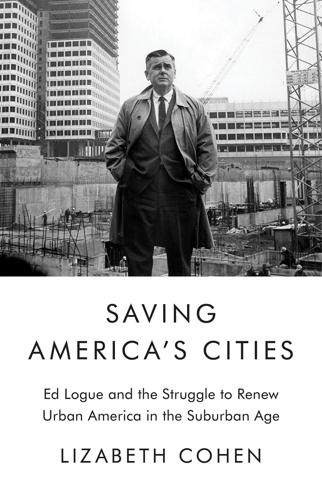
Saving America's Cities: Ed Logue and the Struggle to Renew Urban America in the Suburban Age
by
Lizabeth Cohen
Published 30 Sep 2019
This book will contend that policies and practices of urban renewal evolved and improved over time. Although many serious mistakes were made, important lessons were also learned. And as a result of ever-shifting approaches to urban renewal, many cities were brought back to economic, cultural, and commercial vitality, with increasing amounts of community participation in the process. Urban renewal as experienced in 1972 was far different from that in 1952. The small glimpse given into Logue’s UDC reveals just how experimental these urban renewal strategies often were. Although this book calls for a fresh reexamination of postwar urban renewal, I will in no way claim that it was always admirable in motive and effective in practice.
…
Ed is truculent when he wants to achieve an objective.”98 Howard Moskof (Yale Law ’59) admitted his own susceptibility. He “caught the disease” of urban renewal after a lunch with Grabino and Logue—“two arrogant sons-of-bitches”—and before very long had joined the team, becoming “just like them—everyone became clones of Logue.”99 New Haven urban renewal was not exceptional in its masculine culture. Urban renewal in many cities was associated with a strong male figure, whether Pittsburgh’s David Lawrence, Newark’s Louis Danzig, San Francisco’s Justin Herman, Philadelphia’s Edmund Bacon, or, the most overbearing of them all, New York’s Robert Moses. This male culture of urban renewal contrasted sharply with Progressivism, which took on a strong female character through the imprint of social reformers and so-called urban housekeepers such as Jane Addams, Florence Kelley, and Lillian Wald, to name only the most prominent.100 Whereas the female Progressives lobbied for new protective legislation for workers, particularly women and children, and organized female consumers to boycott goods produced under exploitative conditions, the male urban renewers controlled large amounts of money and used it to rebuild cities on a massive scale.
…
This male culture of urban renewal contrasted sharply with Progressivism, which took on a strong female character through the imprint of social reformers and so-called urban housekeepers such as Jane Addams, Florence Kelley, and Lillian Wald, to name only the most prominent.100 Whereas the female Progressives lobbied for new protective legislation for workers, particularly women and children, and organized female consumers to boycott goods produced under exploitative conditions, the male urban renewers controlled large amounts of money and used it to rebuild cities on a massive scale. Some architectural critics have taken the analysis even further and argued that the aesthetics of urban renewal carried the stamp of this male-dominated culture, with urban renewers like Lee and Logue attracted to a hard-edged, high-rise, brutalist modernist architecture that celebrated Cold War virility.101 Even without taking that leap, it is possible to say that urban renewal was nourished in a male culture of expertise and sociability that encouraged big men to build big structures with big ambitions.
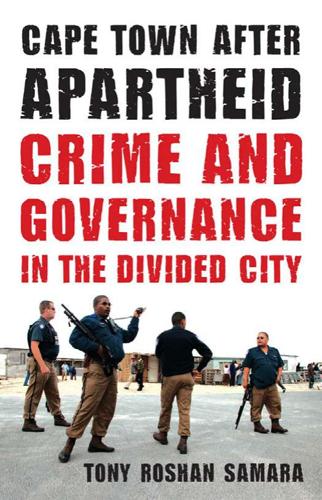
Cape Town After Apartheid: Crime and Governance in the Divided City
by
Tony Roshan Samara
Published 12 Jun 2011
The CFRS was intended to combat crime on the Flats in line with directives laid out in the National Crime Prevention Strategy (NCPS) and to complement the National Urban Renewal Programme (NURP). It was linked, at least conceptually, to the urban renewal process under way in the city center through its incorporation of the spatial governance model of reclaiming and revitalizing key geographic nodes. The CFRS, like the central city’s improvement district model, also foregrounds crime and security, making very clear that its primary task of urban renewal is to address the “gang phenomenon.” The goal here, according to law enforcement and political authorities, is not simply a “cleanup” for which a “broken window” strategy will suffice, though it will have a role to play.
…
In the process, social development, including youth development, while still a goal of urban renewal on the Flats, was neglected in practice. For too many young people in the townships, as the arrest statistics in the preceding chapter indicate, the primary experience they had with the new strategy was through the police. Policing was quickly becoming the central mechanism in the urban renewal program and a primary institution mediating relations between the state and the people, as the police not so quietly slipped into the role of de facto agents of underdevelopment. Understanding how and where young people fit into urban renewal on the Cape Flats—the focus of the next chapter— thus turns on an understanding of how gangsterism and policing have come to largely define the parameters of development practice in this vast territory to the east of the city’s core.
…
In Dixon’s examples of sector policing, it becomes evident that police commitment to communityoriented policing is not at this point secure, and could in fact weaken if police have access to resources to “go straight and . . .” The implications for urban renewal on the Cape Flats is significant, as urban renewal is steadily becoming a process of disciplining youth who have been largely abandoned by other, more supportive state initiatives. The police become in this situation the state workers thrown into this gap between what government cannot provide but the criminal underground can. Arguably, the most troubling indication of the direction urban renewal is headed is the growing of the divide between the stated commitment to social crime prevention in principle and the actual practice.
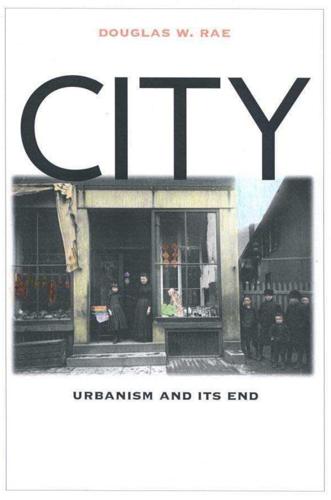
City: Urbanism and Its End
by
Douglas W. Rae
Published 15 Jan 2003
At the same time, the state of Connecticut had, with some urging from Lee, passed Public Act 24 (1958), Public Act 8 (1958), and Public Act 594 (1961) offering state funding for the local share of specified aspects of urban renewal.19 The net effect of these machinations is that the local percentage of total urban renewal costs was very low indeed. City urban renewal cash spending from locally generated revenues appears to have amounted to as little as 5 percent of total urban renewal costs during the Lee era as a whole. Not only was the funding largely beyond the pockets of New Haven voters, it was largely beyond the control of city government at large.
…
No attempt to hinder school performance, or to encourage unemployment and even criminality, could have been much better designed than the piling up of subsidized low-income housing in exactly the places jobs were (or would become) hardest to find. Third, and most central to the end of urbanism, comes urban renewal as first authorized under Title I of the Housing Act of 1949, and expanded under the Housing Act of 1954. Richard C. Lee, who served as mayor from 1954 –70, quickly became the most visible leader in urban renewal nationally, being credited in one instance with having created in New Haven the nation’s first “slumless city.” New Haven pursued urban renewal more vigorously, more ingeniously, and more expensively (per capita) than any other city in the country.66 One whole neighborhood, doubtless meeting the common man’s definition of a slum, was razed.
…
At first called “urban redevelopment,” the federal program was renamed “urban renewal” in 1954, just as Lee came to power.2 He would respond by hiring a technocratic elite (I will call them the tigers), creating a virtual alternative government for them to operate (I will call it the Kremlin), obtaining a stream of financial resources from outside the city to nurture their programs (the federal aorta, discussed below), and assaulting the problems of the city and its neighborhoods with urban renewal and social renewal programs on a massive scale. Together, these constitute the extraordinary politics of the Lee era and urban renewal. A TIGER IN THE CELLAR Lee set out to recruit the smartest and most arrogant people who had ever served in the management of so modest an American city as New Haven.
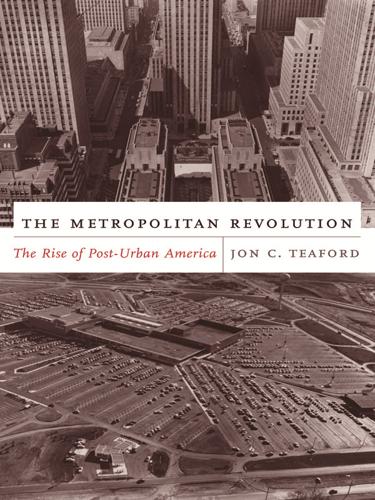
The Metropolitan Revolution: The Rise of Post-Urban America
by
Jon C. Teaford
Published 1 Jan 2006
Chester Hartman, “The Housing of Relocated Families,” in Urban Renewal: The Record and the Controversy, ed. James Q. Wilson (Cambridge, Mass.: MIT Press, 1966), p. 306. 81. Marc Fried, “Grieving for a Lost Home: Psychological Costs of Relocation,” in Urban Renewal, ed. Wilson, p. 360. 82. Wolf Von Eckardt, “Bulldozers and Bureaucrats,” New Republic, 14 September 1963, p. 15. 83. Martin Anderson, The Federal Bulldozer: A Critical Analysis of Urban Renewal, 1949–1962 (Cambridge, Mass.: MIT Press, 1964), pp. 54–55. 84. Herbert J. Gans, “The Failure of Urban Renewal,” in Urban Renewal, ed. Wilson, p. 541. 85. Gillette, Between Justice and Beauty, p. 165. 86.
…
In a number of cities of the trans-Mississippi West, federally financed urban renewal proved so unacceptable that it never was implemented. Although business leaders in Omaha’s chamber of commerce were eager to apply federal dollars to that city’s graying core, the local electorate and city council were adamantly opposed to the program and repeatedly defeated renewal proposals. Consequently, there were no federal urban renewal projects in the Nebraska metropolis.75 Because of its refusal to adopt zoning ordinances, Houston was automatically ineligible for federal urban renewal money. Moreover, Houston residents did not seem to care; one official observed that “urban renewal was not even in our lexicon.”76 Strong ideological scruples motivated opponents of federal urban renewal in Fort Worth, where the Citizens Committee for Protection of Property Rights led the crusade against government condemnation of blighted properties.
…
Moreover, Houston residents did not seem to care; one official observed that “urban renewal was not even in our lexicon.”76 Strong ideological scruples motivated opponents of federal urban renewal in Fort Worth, where the Citizens Committee for Protection of Property Rights led the crusade against government condemnation of blighted properties. In a 1966 referendum, Fort Worth conservatives decisively consigned urban renewal to oblivion when voters rejected it by a 4 to 1 margin.77 Nearby Dallas was equally offended by the prospect of federal assistance and never signed on to the program. In 1965 Salt Lake City voters rejected federal money by a 6 to 1 margin after a campaign that, according to one urban scholar, “described urban renewal as a violation of the divinely given right of property ownership.”78 In 1964 Denver residents defeated an urban renewal proposal, following the lead of a city council member who deemed public condemnation of land for resale to private interests as “immoral.”79 Two years later, Denver’s electorate changed its mind and approved the scheme.
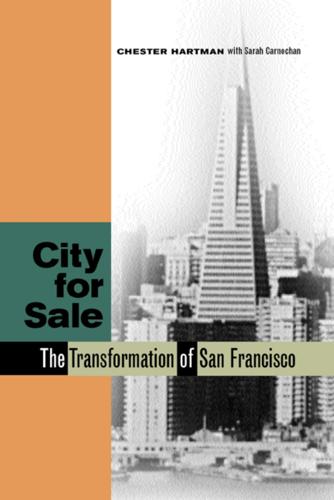
City for Sale: The Transformation of San Francisco
by
Chester W. Hartman
and
Sarah Carnochan
Published 15 Feb 2002
The ratio of annual administrative budget to total grant was 1:77 for Pittsburgh and 1:55 for Boston, while San Francisco had a 1:22 ratio. 7. For portraits of the few figures in the urban renewal game who rivaled Herman, see (on Robert Moses) Jeanne Lowe, Cities in a Race with Time (New York: Random House, 1967), 45 – 109, and Robert Caro, The Power Broker: Robert Moses and the Fall of New York (New York: Alfred A. Knopf, 1974); (on Edward Logue) Richard Schickel, “New York’s Mr. Urban Renewal,” New York Times Magazine (1 March 1970). See also Jewel Bellush and Murray Hausknecht, eds., “Entrepreneurs and Urban Renewal: The New Men of Power,” in Urban Renewal: People, Politics and Planning (New York: Doubleday Anchor, 1967), 289 – 97.
…
Traditional controls of public power, so endemic in American government, run a little thin with these agencies.1 The SFRA was established in 1948 in anticipation of passage by Congress of the 1949 Housing Act, which introduced the urban renewal program. Like redevelopment bodies in general, SFRA is a semiautonomous entity with vast independent legal, financial, and technical powers and 15 16 / Chapter 2 resources. Its commissioners are appointed by the mayor and confirmed by the Board of Supervisors. During the heyday of urban renewal—the 1960s and first half of the 1970s—the agency had access to massive sums of federal funds; between 1959 and 1971, it was able to secure $128 million in federal urban renewal dollars for the city. Its relative freedom from local control and its direct access to federal money tended to reduce city hall control over its activities.
…
Its large technical staff developed an exclusive familiarity with the complex arcana of federal urban renewal statutes and administrative regulations. It is able to issue its own bonds. It has and extensively uses the power of eminent domain, and even when such power is not directly used, that lurking presence often creates “willing” sellers. During most of its first decade, SFRA’s operations and importance were limited, as evidenced by a small and not very talented staff, generally uninspired appointments to its governing board, and frequent squabbles both internally and with federal urban renewal officials. Urban renewal was new, and direction and support from Washington was less than optimal.

Makeshift Metropolis: Ideas About Cities
by
Witold Rybczynski
Published 9 Nov 2010
Other public and private developments included a maritime museum, berthed historic ships, and an amusement park on a cargo pier, as well as Fisherman’s Wharf itself, once the center of San Francisco’s commercial fishing fleet and now a collection of waterside seafood restaurants. Ghirardelli Square in San Francisco introduced a new urban-renewal formula: rehabilitated waterfront buildings + commerce + tourism = downtown activity. Fisherman’s Wharf is an example of successful revitalization based not on urban renewal, public housing, or grand civic projects, but on tourism. Tourism was largely ignored by the first generation of urban-renewal planners—even Jane Jacobs had nothing to say about it—but it proved to be a powerful economic force for urban change. Cities that couldn’t recover lost manufacturing and industrial jobs discovered something that older European cities such as Venice and Vienna had known for a long time: instead of offering financial services or manufacturing shoes, a city could sell pleasure.
…
The challenge for planners is how to jump-start development without falling into the pitfalls that plagued the large urban-renewal projects of the 1950s. This can be difficult, as the checkered history of Penn’s Landing in Philadelphia demonstrates. The seventy-five-acre site on the Delaware River was created in the early 1960s with landfill from the construction of a sunken crosstown expressway. Penn’s Landing, at the foot of Market Street and adjacent to downtown, was seen as a potentially lucrative development opportunity by the city, which owned the site, and the city department of commerce commissioned a master plan for the area. In the prevailing spirit of urban renewal, the development was conceived as a superblock, consisting of a landmark office tower housing the port authority, additional office space, a science park, and a boat basin.
…
This explains the willingness to attempt radical and untested urban interventions such as urban renewal, traffic separation, high-rise social housing in the cities, and dispersed planned communities in the suburbs. The current stalled economy has produced a call for massive government spending in the public sector. Inevitably, much of this spending will take place in cities and metropolitan areas. Architects and planners will once again be tempted to implement grand urban visions—twenty-first-century versions of urban renewal and the Radiant City. The temptation will be particularly great since government-funded projects provide freedom from the constraints imposed by the market, an opportunity to replace demand-side urbanism with supply-side planning; us telling them what they should like, just as in the good old days.
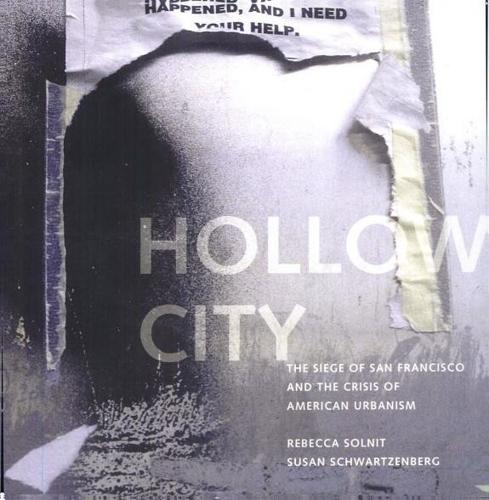
Hollow City
by
Rebecca Solnit
and
Susan Schwartzenberg
Published 1 Jan 2001
"^ a mall-like version of Japantown was Iron- rebuilt, backed by investors from Japan and opposed by THE SHOPPING CART AND THE LEXUS many Japanese-American community (which had dispersed in the local after returning ft-om the where internment camps following World Western Addition, bauhaus bunkers were the Afi-ican Americans displaced by urban renewal, but a signifi- move back and the second phase of urban renewal displaced another 13,500 dents of the Western Addition. Chester Hartman, who at resi- has written exten- about urban renewal in San Francisco, concludes that the Redevel- sively opment Agency "became much downtown as Else- house cant portion of the 4,000 families evicted were unable to all, War II). built to in the some of 49 a powerful land as and aggressive army out to capture The Agency turned could it sweeping out the poor, with the atically full backing of the to system- power city's elite.">° In the some Western Addition, urban renewal met with In make them more mixed response: some opposed them, and many believed the promises, sought to a palatable or to advance their own leaders agendas.
…
"^ The housing conditions were sometimes vile, but they were the result rather than the cause of social problems (the poet Michael McClure, who visited many of the homes while working 1960, for the census in remembers them cious).'* as airy and gra- Nevertheless, urban renewal went forward, propelled by the peculiar official belief that problems caused by poverty and racism could be cured by architecture often architecture that removed population is now make would exclude (just as the homelessness often addressed by attempting to away the homeless go —not into houses, just out of sight or out of town). By the time urban renewal in the Victorian houses that Western Addition had begun its second where the campaign, the San Francisco Redevelopment Agency could write, "San Francisco is now developing programs to correct blighted and congested were removed to be Fillmore Center — so they were retically, everyone in who was uously aging and deteriorating faster than replaced.
…
disbanded a year or so ago, several other organiza- sprung up to deal with the burgeoning eviction and homeless- ness problems. And the new battlefront is the Mission. The Mission, which survived urban renewal untouched, force entirely. Gentrification vate, individual acts Ruth ing-class quarters upper and lower a facing another cumulative public effect of numerous and thereby action of urban renewal. ish sociologist is is far harder to resist than the institutional The word itself was first used in 1964 by the Glass, who pri- wrote, "One by one, many Brit- of the work- of London have been invaded by the middle classes Once this process of 'gentrification' starts in a district.
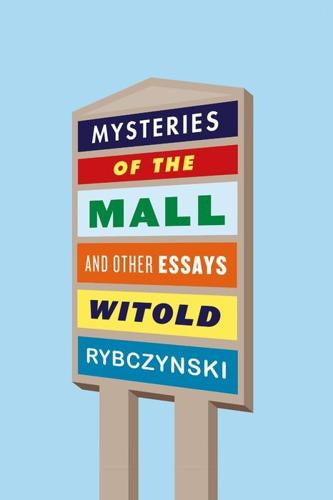
Mysteries of the Mall: And Other Essays
by
Witold Rybczynski
Published 7 Sep 2015
Airports couldn’t be built downtown, of course, but parts of downtown could be brought to the airport. * * * In 1967, Pritzker bought an unfinished hotel in central Atlanta and built a giant atrium hotel, initiating an architectural trend that has lasted until the present day. Over the last two decades, his downtown hotels have been a part of urban renewal in Chicago, San Francisco, Dallas, Pittsburgh, Minneapolis, Miami, and Memphis. Stanley Durwood’s company, too, returned to the city. The multiplex was born in the suburbs, and the sprawling one-story buildings were built in suburban malls, often near one of Frank Turner’s highway interchanges.
…
Downtown “The almighty downtown of the past is gone—and gone for good,” writes Robert Fogelson in Downtown, his stimulating new history of a long-neglected subject. “And it has been gone much longer than most Americans realize,” he continues. The provocative second part of this statement encapsulates his thesis: that long before the failures of urban renewal, the intrusions of urban interstate highways, and the competition of suburban shopping malls and office parks, the primacy of downtown was on the wane. Most recent books that deal with downtowns have done so in the context of urban advocacy, describing them as a precious part of our heritage that needs to be saved, revitalized, restored.
…
Fogelson describes various attempts in the 1930s and 1940s to stem the tide and attract citizens back to downtown. These included not only expanded mass transit but also road improvements and solutions to automobile parking. Immediately after World War II, there was also slum clearance—the antecedent to the urban renewal projects of the 1960s. If the blighted areas adjacent to downtown could be improved, the reasoning went, the middle class would return, and downtown would thrive once more. By then, it was too late. The chief reason that Americans stopped going downtown, according to Fogelson, is that they no longer wanted—or needed—to.

Stuck: How the Privileged and the Propertied Broke the Engine of American Opportunity
by
Yoni Appelbaum
Published 17 Feb 2025
Returning home to Hudson Street, Jacobs pounded out The Death and Life of Great American Cities on her Remington. Her book, published in 1961, took aim at urban renewal and painted a vivid picture of all that it destroyed in the name of progress. When, that same year, Jacobs learned that the city intended to designate her own neighborhood for renewal, she rallied the inhabitants to its defense. And it worked. Jacobs and her collaborators were the first residents of a city neighborhood to successfully block an urban renewal scheme. Jacobs’s book—its brilliantly observed account of urban life, its adages and conjectures—paired with her success as an activist to catapult her to fame.
…
Flint’s more affluent neighborhoods and the suburbs that surrounded the city generally barred multifamily construction and demanded large lot sizes that produced lower densities and higher prices. So even where overt racial discrimination faded, economic segregation tended to produce the same result. Flint’s urban renewal program in the 1950s both highlighted and exacerbated these inequalities. When federal funds first became available, Flint’s Black communal organizations clamored for inclusion in urban renewal, hoping to sweep away dilapidated housing from their neighborhoods and replace it with adequate dwellings. Flint’s planners were equally eager to demolish Black neighborhoods, but notably less committed to helping their residents move up.
…
GO TO NOTE REFERENCE IN TEXT Progress toward formal legal equality: Martha Biondi, To Stand and Fight: The Struggle for Civil Rights in Postwar New York City (Cambridge, Mass.: Harvard University Press, 2006), 286–87. GO TO NOTE REFERENCE IN TEXT In 1968, after a long: Highsmith, Demolition Means Progress, 164–74. GO TO NOTE REFERENCE IN TEXT Flint’s urban renewal program: “Urban Renewal Development Plan, St. John Street Renewal Area” (Department of Community Development, n.d.), 19, box 1, folder 24, Flint Department of Community Development Collection, Genesee Historical Collections Center. GO TO NOTE REFERENCE IN TEXT Flint would manage to annex: Highsmith, Demolition Means Progress, 114–44; William Orville Winter, “Annexation as a Solution to the Fringe Problem: An Analysis of Past and Potential Annexations of Suburban Areas to the City of Flint, Michigan” (PhD diss., University of Michigan, 1949), 12–14.
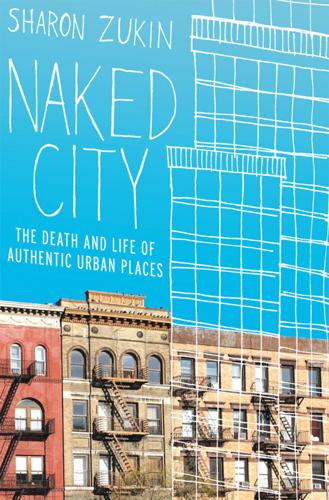
Naked City: The Death and Life of Authentic Urban Places
by
Sharon Zukin
Published 1 Dec 2009
In Boston the sociologist and urban planning researcher Herbert Gans wrote a stunning indictment of how local elites needlessly destroyed the Italian working-class district of the West End, coining the term “urban village” to depict the close-knit, family-based, ethnic community that was displaced in the name of slum clearance. Even more famously, in New York the journalist and community activist Jane Jacobs published a call to arms against the fatal machinery of modern urban planning, which brought in the bulldozers and “cataclysmic money” of urban renewal projects to destroy old, but still vibrant, neighborhoods. By the early 1960s, with urban renewal moving forcefully ahead, its opponents developed a modest, street-level defense of urban authenticity to confront the arrogance of both modernization and state power, which threatened to sweep away people as well as buildings.12 The men and women who spoke up for authenticity in the 1960s were a mixed group socially, culturally, and politically, and they argued for somewhat different visions of the city.
…
Title I of the federal Housing Act passed by Congress in 1949 included a provision for funding these projects, as well as the expansion of urban universities, and it enabled developers and public sector entrepreneurs to make the city grow as they desired.11 This vision of the city provoked opposition and even outrage. Henry James’s critical themes reemerged, but from a far more populist point of view. He had never liked the immigrants, namely Jews, who in his time thronged the streets of the tenement districts of the Lower East Side. Critics of urban renewal, though, added what we would now call positive goals of affordability and diversity to James’s hostility to overbuilding. In Boston the sociologist and urban planning researcher Herbert Gans wrote a stunning indictment of how local elites needlessly destroyed the Italian working-class district of the West End, coining the term “urban village” to depict the close-knit, family-based, ethnic community that was displaced in the name of slum clearance.
…
The much-quoted set piece in the first section of Jacobs’s best-selling 1961 book, The Death and Life of Great American Cities—an hour-by-hour description of the “intricate sidewalk ballet” on Hudson Street, outside her window—dramatizes the neighborly interdependence of local shopkeepers, housewives, schoolchildren, and customers at the corner bar, all patron saints of social order in the city’s neighborhoods who were either scorned or ignored by the powerful forces that controlled urban renewal. Jacobs also argued for authenticity as a democratic expression of origins, for a neighborhood’s right, against the decisions of the state, to determine the conditions of its own survival. Death and Life raised an alarm against the arrogance of state power, especially as it was personified by Robert Moses, the larger-than-life administrator who headed the most important state and city redevelopment agencies in New York City from the 1930s to the 1960s.
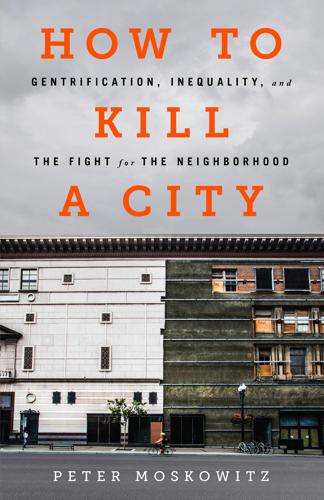
How to Kill a City: The Real Story of Gentrification
by
Peter Moskowitz
Published 7 Mar 2017
Black people in Detroit and all across the country not only were pushed into city centers and held there by racist suburban policy but were repeatedly internally displaced by the forces of “urban renewal.” Federally funded highways began cutting through Detroit after World War II. The highways weren’t just ways to subsidize white flight to the suburbs; local politicians considered them a “handy device for razing the slums.” Detroit displaced nearly 2,000 black families from one area along Gratiot Avenue in 1947 for the sole purpose of getting rid of a section of the city that used more tax dollars than it gave back. Mayor Albert Cobo called urban renewal the “price of progress.” The effect of decades of segregation is that black Americans are poorer and less likely to achieve success than whites.
…
The site is rarely criticized today because the buildings occupy hallowed ground, but before September 11 the Twin Towers were considered examples of terrible urban planning. And they were one of New York’s biggest “urban renewal” projects: to make way for the massive structures, some 33,000 workers and small-business owners were displaced. Planners and politicians often like to pretend we’ve moved past the urban renewal era—when highways and super-tall buildings were rammed through neighborhoods (most often majority-black ones, though in the case of the original World Trade Center many of the displaced were Syrian) in the belief that whatever came next would be more profitable and less social-service-intensive than what was there before.
…
In a society in which land can be bought and sold, every place has both a use value and an exchange value. The inherent problem with this setup is that the poorer you are, the more likely it is that places that provide you with use value don’t offer an increased exchange value for anyone else. Molotch and Logan point out that in the heyday of urban renewal—when highways and housing projects were forced on top of low-income neighborhoods, displacing tens of thousands—the main metric for deciding where these projects should go was not crime, education, or the health of its residents, but whether those areas could be used for more profitable things.
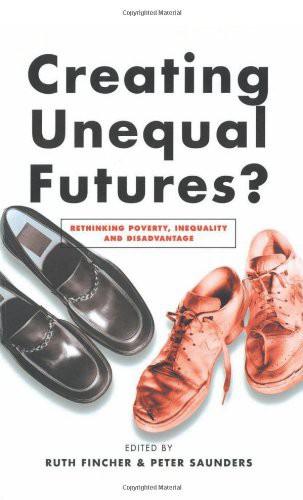
Creating Unequal Futures?: Rethinking Poverty, Inequality and Disadvantage
by
Ruth Fincher
and
Peter Saunders
Published 1 Jul 2001
Manifestations of disadvantage, however, distinguish these two localities, as discussed below. Because the areas are delimited sections of larger ABS spatial aggregates (such as postcodes or statistical local areas), the presence and level of disadvantage can only be gleaned through local knowledge and on-site visits. Public housing and urban renewal The planned urban renewal of Manoora surfaced in each interview as a major initiative to tackle the spatial expression of conspicuous inequalities in Cairns. During the discussions, however, it became clear that Manoora was grouped in people’s perceptions with Mooroobool and Manunda, two other areas of public housing concentration located in the same central Cairns postcode zone.
…
This appears to be a product of the city’s topography—leafy hillside suburbs edge the lower income plains suburbs in many spots and new semi-gated communities of high-cost housing sit up the hill from areas of cheaper homes. Urban renewal refers to the current strategy of Australian State housing authorities that aims to address the concentration of disadvantage on public housing estates. Urban renewal initiatives can take a number of forms including upgrading ageing public dwellings, demolishing stock, selling off some public housing and/or relocating tenants. But overall, this policy has been ‘little 174 PDF OUTPUT c: ALLEN & UNWIN r: DP2\BP4401W\MAIN p: (02) 6232 5991 f: (02) 6232 4995 36 DAGLISH STREET CURTIN ACT 2605 174 MOVING IN AND OUT OF DISADVANTAGE debated or systematically analysed’ (Arthurson 1998, p. 35), although the policy impetus clearly derives from concern over the lack of social mix in public housing estates.
…
Relocating residents, one community worker said, ‘provides people with a new start’. Another social service professional echoed this sentiment and said ‘urban renewal will make a difference to the quality of lives’. Other arguments in favour involved the belief that the standard of housing may be improved if a proportion transfers into private ownership; that children living in the area will be surrounded by a broader selection of role models; and that, essentially, relocating low-income households will break up any ‘culture of poverty’ that may develop. Despite the general support for urban renewal, whereby population mobility, via relocation of low-income tenants, becomes a poverty reducing mechanism, it remains a very complex social policy issue.
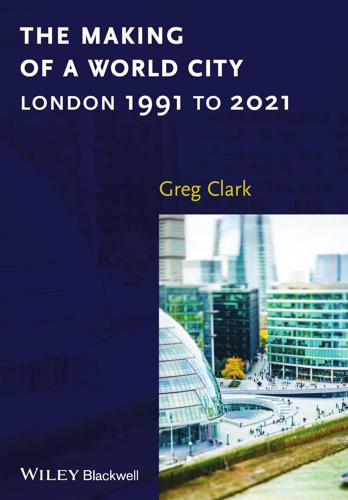
The Making of a World City: London 1991 to 2021
by
Greg Clark
Published 31 Dec 2014
While many aspects of the impetus towards self-government remain more aspirational than real, one area where integrated organisation and resources has been achieved is in city promotion, which is featured in the concluding section of the chapter. Acquisition of new global roles, and expansion of existing proficiencies, has required that London’s policy makers undertake numerous projects of urban renewal and regeneration since 1991. The story of redevelopment and re-use of brownfield land, waterfronts, markets, stations, stadia and high streets is told in Chapter 6. After the mixed experience of the London Docklands Development Corporation in the 1980s, the 1990s constituted a noticeable shift towards the deployment of public sector physical infrastructure investments to catalyse wider private sector activity.
…
Later, under New Labour, the New Deal for Communities initiative sought a more proactive rehabilitation of dysfunctional social housing estates. The dual focus on connectivity infrastructure and property-led regeneration as a form of social engineering – such as occurred in Hackney’s Holly Street Estate – was indicative of the dominant role that bricks and mortar played in the architecture of urban renewal at this time. With this in mind, the assessment of Simon Clark, Partner and Head of European Real Estate at Linklaters, is that “in the 1990s London became much more conscientiously involved in its own reinvention. Major urban development projects and major infrastructure initiatives, as well as key celebrations, enabled London to believe it was possible to physically change the city to create new capacity and new quarters and new local identities” (personal communication, 6 December 2011).
…
Conversely, the fact that Canary Wharf had had patchy impact on the adjacent areas of East London, with benefits mostly confined to the former Docklands area from Limehouse to Royal Victoria Dock, meant that the Olympics came to be seen as a viable opportunity to undertake more comprehensive social regeneration in East London. Late 1990s regeneration: Marrying infrastructure and pluralism The ascent of New Labour’s Model of post-industrial services and consumer-led economy in the late 1990s had a considerable impact upon the trajectory of urban renewal. At this point, policymakers for London embraced the already circulating idea that an image of liveability must be central to the capital’s competitive capability in a global knowledge economy where diversity and inclusivity had become paramount. London’s global city roles required not only a suitable range of high-end housing and corporate real estate, but an accompanying cultural, leisure and retail offer.
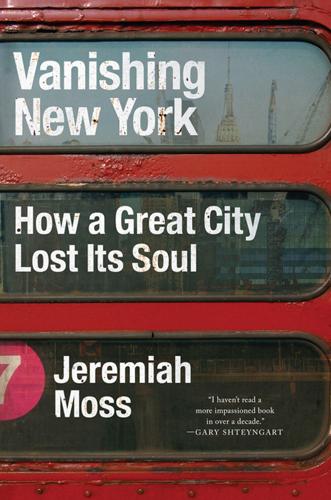
Vanishing New York
by
Jeremiah Moss
Published 19 May 2017
When public health psychiatrist Mindy Thompson Fullilove talks about root shock, she describes a complex traumatic stress reaction to urban renewal. The displacement of a physical and emotional ecosystem, she writes, “destabilizes relationships, destroys social, emotional, and financial resources, and increases the risk for every stress-related disease.” Robert Moses’s meat axe had torn apart the urban ecosystems that provided stabilizing social structures for people who could not flee to the suburbs. Fullilove concludes that urban renewal disabled black communities and led to “great epidemics of drug addiction, the collapse of the black family, and the rise in incarceration of black men,” the very catastrophes that emerged in 1960s New York and contributed to backlash.
…
Fullilove concludes that urban renewal disabled black communities and led to “great epidemics of drug addiction, the collapse of the black family, and the rise in incarceration of black men,” the very catastrophes that emerged in 1960s New York and contributed to backlash. Those angry, frightened ethnic whites, while they had more options than people of color, were also traumatized by urban renewal. They lost their ecosystems, too. Their roots were also shocked. When they “exchanged wonderful urban neighborhoods for cars, malls, and lawns” in the alienated suburbs, writes Fullilove, “they abandoned not just the city but also the togetherness and sociability of their heritage.” The emotional fallout of urban renewal was rage, for black and white, a painful loss still not grieved. Reporting on white working-class New York’s rage and loss in 1969, Pete Hamill wrote, “It is very difficult to explain to these people that more than 600,000 of those on welfare are women and children; that one reason the black family is in trouble is because outfits like the Iron Workers Union have practically excluded blacks through most of their history; that a hell of a lot more of their tax dollars go to Vietnam or the planning for future wars than to Harlem or Bed-Stuy; that the effort of the past four or five years was an effort forced by bloody events, and that they are paying taxes to relieve some forms of poverty because of more than 100 years of neglect on top of 300 years of slavery.
…
Thankfully, the fifth generation of Moscots will continue examining eyes and fitting frames at the Lower East Side crossroads. For now, anyway. Delancey is undergoing a total evisceration. In the fall of 2013, a few months before his tenure ended, Mayor Bloomberg and a group of developers announced the grand plan for “Essex Crossing,” a reconstruction of the Seward Park Urban Renewal Area (SPURA), a site that had long endured a controversial history. In 1967, the city demolished fourteen blocks of tenements here, evicting more than two thousand working-class and poor residents, Latino, white, black, and Chinese, to make room for market-rate housing and a section of Robert Moses’s Lower Manhattan Expressway.
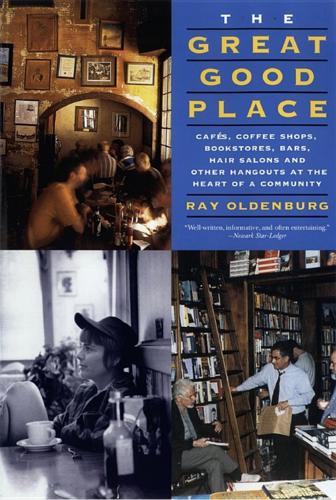
The Great Good Place: Cafes, Coffee Shops, Bookstores, Bars, Hair Salons, and Other Hangouts at the Heart of a Community
by
Ray Oldenburg
Published 17 Aug 1999
Usually, this is carried off right in the downtown or “showplace” areas of the city. Whatever profit realized at such shops is often incidental to the real “kill” the owner may anticipate when the area comes under an urban renewal program, at which time the lots on which such buildings are located command a premium price. The existence of the porno shops, of course, adds considerable impetus to the demand for urban renewal. Things work out rather nicely for entrepreneurs who understand the failings of our system and who have no qualms about taking advantage of them. They and their right to debase communities even as they profit from doing so are guaranteed by the Constitution, but their real benefactor is that Anglo-Saxon tradition alluded to by Jane Addams.
…
For all the consternation she caused within architectural and planning circles, she has done a tremendous service for us all. One marvels at both the depth and quantity of her insights. Well within the Jacobs’ tradition and appearing the same year as my contribution was Roberta Gratz’s The Living City. Gratz’s book contrasts grass roots successes at rebuilding neighborhoods with the disasters wrought by “urban renewal.” Victor Gruen’s The Heart of Our Cities is still a book worth not only owning but using as a reference work for all aspects of urban and neighborhood development. Gruen is the man who conceived and planned our nation’s first covered shopping mall. He came to reject the designation, “father of malling” because his plan was stripped down to commercialism only.
…
The flash crowd was fickle, of course, and when it moved on to other “discoveries,” all that remained was the wreckage of what had once been good bars. In the United States, the college crowd has similarly ruined many a good place and threatened a great many more. McSorley’s Old Ale House in New York City, perhaps the oldest bar in America, has survived urban renewal and the blood lust of feminists seeking to integrate or destroy it. But it faces its greatest threat in the form of college students who make meals of its cheese platters and take over the place at night.14 Those invaders contribute nothing to the charm or the amenities that have attracted them; once those features are ruined, they move on to other victims.
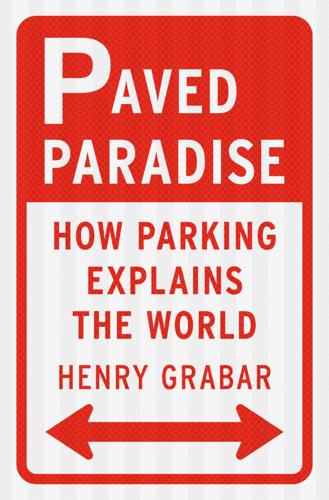
Paved Paradise: How Parking Explains the World
by
Henry Grabar
Published 8 May 2023
” * * * Not every city had a Gruen project, but all of them tried their hardest to get the downtown core parked to suburban standards. They accomplished this in three ways. First, American city leaders jumped to support highway and Gruen-style urban renewal projects that demolished older neighborhoods. With either intervention, local planners were given great power to rebuild cities according to two tenets of midcentury urbanism: separate residential neighborhoods from commerce and industry and accommodate drivers lest they take their business to the suburbs. Urban renewal projects targeted dilapidated but lively residential and commercial blocks for demolition. In their stead came car-oriented malls, office towers, and apartments.
…
And even Jane Jacobs, germinating the ideas that would make up her landmark antiplanning book The Death and Life of Great American Cities, wrote a self-described “fan letter” to Gruen, saying his Fort Worth plan was of “incalculable value” and would return America to a time of “downtowns for the people.” But Gruen never got his Fort Worth plan: the Texas legislature was not so easily charmed by the vision of the Viennese architect who flew in from Los Angeles, and rejected Gruen’s allies’ urban renewal bill. Then, in a death blow, the legislature barred Texas cities from building municipal parking garages. In a 1980 appraisal, The Washington Post blamed private parking lot operators for spoiling the dream. But the Fort Worth plan, the newspaper concluded, “is the only unborn child who had hundreds of grandchildren.”
…
In their stead came car-oriented malls, office towers, and apartments. Some projects succeeded, some failed. All aimed to satisfy the expectation of easy driving and parking at the center of the city. What really stood out about urban renewal, to contemporaries, was its extended time span: the average project lasted twelve years from the moment official planning began (all but ensuring no further neighborhood upkeep would occur) to completion. That lost decade worked to drivers’ advantage: cleared land could provide much-needed parking lots. In Buffalo, a chamber of commerce staff member observed that so many buildings had been demolished it looked like the city was paving the way not for cars to park but for airplanes to land.

Radical Cities: Across Latin America in Search of a New Architecture
by
Justin McGuirk
Published 15 Feb 2014
But the bigger problem seems to be that in such cases the demolition team has to collaborate with social workers – a sensible policy, only in this case the social workers’ contract has expired and the demolition cannot continue without them. Such are the mundane causes of the tragic scenes around us – all of this because of bureaucratic incompetence. It is a stark reminder that you can design all the masterplans you like, but if the administrative process that’s supposed to deliver an urban renewal project doesn’t function, then lives get ruined. In Brazil, the bureaucratic machinery needs redesigning as much as the urban fabric. One of the houses standing alone in the rubble has a smartly tiled facade and a hanging chair out on the balcony. My guide says it’s the most beautiful house in the area, and the owner was offered an unprecedented 138,000 reais ($63,000) in compensation.
…
‘They’re just relocating poverty,’ my guide says. An Olympic Legacy? In 2010, Mayor Eduardo Paes announced that all of Rio’s favelas would be upgraded by 2020. It was a bold statement, and one that the Brazilian architecture community met with optimism rather than disbelief. The mayor’s primary tool in this sweeping transformation was an urban renewal programme called Morar Carioca – Carioca Living. With 8 billion reais of funding, it was the most ambitious slum regeneration project ever launched, dwarfing Favela-Bairro. In the same vein as its predecessor, Morar Carioca was to continue the process of stitching the favelas into the urban fabric of Rio.
…
Dramatic falls in homicide rates, traffic congestion, traffic accidents and water usage, and a burgeoning civic pride. However, his impact on Bogotá, though powerful, was an intangible one. That is not quite true – in one sense it was highly material. Mockus restored the city’s finances. He inherited a city with a deficit and left it with a healthy budget for urban renewal projects. He did this partly by raising taxes. Much as he had done at the university, he persuaded 55,000 of Bogotá’s wealthiest residents to pay an extra 10 per cent in tax. He also sold off part of the municipal telecommunications company (and when he was accused of neoliberalism for selling off a public asset, he was able to counter that not many neoliberals are in favour of raising taxes).

Data Action: Using Data for Public Good
by
Sarah Williams
Published 14 Sep 2020
These maps have become important symbols for how visualizations can be used powerfully, often by the powerful, to oppress the powerless. These maps permanently marked these urban landscapes as “other,” places not worth investing in, and the ramifications of that labeling can still be seen today. Data and Urban Renewal Technocratic planners continued to apply data and mapping to urban renewal policies in the 1950s, securing funds from federal highway and housing grants (the 1949 Housing Act, for example) that could be gotten only if data were submitted as evidence in the application for funding. In cities across the country, technocratic planners devised ways to send highways through thriving neighborhoods they designated as “blighted” in the hopes of permanently removing these areas, using data as evidence.
…
By allowing land use that was not permitted in other residential neighborhoods—polluting industries, taverns, liquor stores, nightclubs, and brothels—the segregation helped turn these African American neighborhoods into slums.59 African American homes in these neighborhoods were not eligible for Federal Housing Commission mortgages because their terms did not provide for incongruent use. Ironically, these zoning and use designations helped St. Louis garner urban renewal funds that paid for the ultimate clearing of many of these communities, which in one case led to the design and construction of the infamously dysfunctional Pruitt-Igoe housing project.60 Some might argue that the clearing of these communities was always the goal of St. Louis's exclusionary zoning practices.
…
Planning historians believe that the destruction of the neighborhood (figure 1.26) aligned with Miami businessmen's racial goals for their city, and according to several accounts, with their conviction that the African American presence would stifle the city's development.67 This pattern of racist reasoning became standard practice during urban renewal and led to the destruction or marginalization of many more African American neighborhoods across the country, with data used as evidence to garner the necessary funds to make it possible. 1.25 This street scene of Overtown shows African American shoppers outside the retail establishments along NW 2nd Avenue between 8th and 9th Streets, circa 1950.
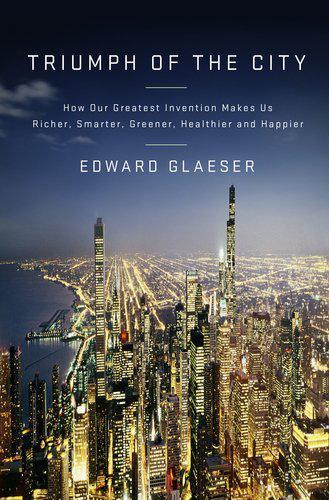
Triumph of the City: How Our Greatest Invention Makes Us Richer, Smarter, Greener, Healthier, and Happier
by
Edward L. Glaeser
Published 1 Jan 2011
He ended up preferring pay raises to strikes, and the increasing costs of city government were then hidden with increasingly creative bookkeeping, which led straight to New York’s near bankruptcy in 1975. Cavanagh’s fatal flaw was his penchant for razing slums and building tall structures with the help of federal urban-renewal dollars. Detroit’s housing market had peaked in the 1950s and was already depressed when Cavanagh took office. The city was shedding people and had plenty of houses. Why subsidize more building? Successful cities must build in order to accommodate the rising demand for space, but that doesn’t mean that building creates success. Urban renewal, in both Detroit and New York, may have replaced unattractive slums with shiny new buildings, but it did little to address urban decline.
…
Shiny new real estate may dress up a declining city, but it doesn’t solve its underlying problems. The hallmark of declining cities is that they have too much housing and infrastructure relative to the strength of their economies. With all that supply of structure and so little demand, it makes no sense to use public money to build more supply. The folly of building-centric urban renewal reminds us that cities aren’t structures; cities are people. After Hurricane Katrina, the building boosters wanted to spend hundreds of billions rebuilding New Orleans, but if $200 billion had been given to the people who lived there, each of them would have gotten $400,000 to pay for moving or education or better housing somewhere else.
…
Riding on the People Mover feels like a trip to Disney World, if Disney World were in the middle of a desperate city. But as in other declining places, billions were spent on infrastructure that the city didn’t need. Unsurprisingly, providing more real estate in a place that was already full of unused real estate was no help at all. The failures of urban renewal reflect a failure at all levels of government to realize that people, not structures, really determine a city’s success. Could an alternative public policy have saved Detroit? By the time Young was elected, Detroit was far gone, and I suspect that even the best policies could only have eased the city’s suffering.
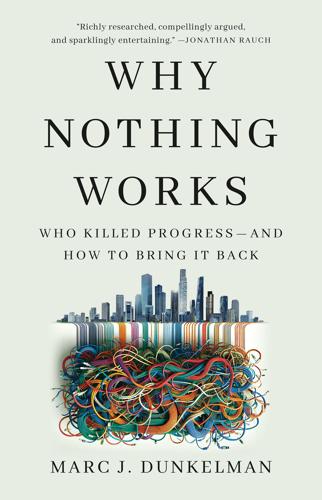
Why Nothing Works: Who Killed Progress--And How to Bring It Back
by
Marc J Dunkelman
Published 17 Feb 2025
Having abandoned the First New Deal’s associationalism for the Second New Deal’s centralized regulation, progressives now steered more directly into the increasingly influential doctrine of Keynesianism. Rather than manipulating companies and unions like marionettes, or bringing them to heel through administrative fiat, Washington began trying to affect the economy more exclusively through the public purse. Public works projects, guaranteed incomes for farmers, urban “renewal,” public housing, the GI Bill—this broad portfolio of new federal investments was designed to promote, at the national level, what became the postwar promise of progressive politics, namely, “full employment.” Southern Democrats in particular had begun to look with increasing skepticism at the burgeoning desire among northern liberals to interfere with the Jim Crow system of white supremacy—they wanted their region to be left alone.
…
Rockefeller’s proposed salve centered on creating a centralized bureaucracy, a national Urban Development Corporation (UDC), to correct for the scars Moses had left during his long tenure as New York’s most powerful man. Following the Second World War, Congress had appropriated vast sums for “urban renewal,” a program designed to fund state and local efforts to demolish run-down neighborhoods and erect modern new buildings with a bounty of additional housing in their stead. But “slum clearance,” as the policy was more popularly known, had been particularly devastating in New York. Having wrested control of the program, Moses used it in many cases not to target slumlord buildings, but rather to clear whole blocks for redevelopment.
…
Adam Walinsky, one of Robert Kennedy’s former speechwriters and the Democratic nominee for state attorney general in 1970, objected to the sequencing, arguing that the deluge of poorer residents would scare off any prospective middle-class tenants. But Logue, betraying a tendency to treat his detractors much as Moses had when wielding much the same power, turned a deaf ear. “Fuck it,” he told one aide. “I’m going to do that anyway.”10 And the UDC’s ambitions weren’t limited to Rockefeller’s desire to correct for urban renewal. In his pursuit of social justice, Logue began pushing the state’s wealthier, whiter residents—many of whom had fled New York City during the postwar years for the leafy suburbs—to permit new suburban housing for outsiders. After warning the governor that “shit might hit the fan,” he unveiled what he termed a Fair Share Housing plan to build nine hundred affordable units spread between nine of suburban Westchester County’s most well-to-do communities.11 Predictably, local residents were enraged—flabbergasted that a Republican governor they had supported was now proposing to pierce their suburban bubbles.
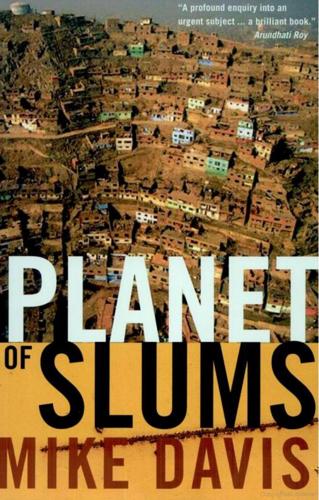
Planet of Slums
by
Mike Davis
Published 1 Mar 2006
Architect David Glasser visited a former single-family villa in Quito, for example, that housed 25 families and 128 people but had no functioning municipal services.40 Although rapidly being gentrified or torn down, some of Mexico City's vedndades are still as crowded as Casa Grande, the famous tenement block housing 700 people which anthropologist Oscar Lewis made famous in The Children of Sanche% (1961).41 In Asia the equivalents are the decayed (and now municipalized) ^amindar mansions of Kolkata and the poetically named "slum gardens" of Colombo which constitute 18 percent of the city's rundown housing.42 The largest-scale instance, although now reduced in size and population by urban renewal, is probably Beijing's inner slum, the Old City, which consists of Ming and Qing courtyard housing lacking modern facilities.43 Often, as in Sao Paulo's once-fashionable Campos Eliseos or parts of Lima's colonial cityscape, whole bourgeois neighborhoods have devolved into slums. In Algiers's famous seaside district of Bab-elOued, on the other hand, the indigenous poor have replaced the colon working class.
…
After a final defiance — the bulldozing of Colonia Santa Ursula in Ajusco in 29 Young and Turner, The Rise and Decline of the Zairian State, p. 98; Deborah Posel, "Curbing African Urbanization in the 1950s and 1960s," in Mark Swilling, Richard Humphries, and Khehla Shubane (eds), Apartheid City in Transition, Cape Town 1991, pp. 29-30. 30 Carole Rakodi, "Global Forces, Urban Change, and Urban Management in Africa," in Rakodi, The Urban Challenge in Africa, pp. 32-39. 31 Urban Planning Studio, Columbia University, Disaster-Resistant Caracas, New York 2001, p. 25. September 1966 - he was deposed by President Gustavo Diaz Ordaz, a politician notorious f or his many ties to foreign capital and land speculators. A fast-growth agenda that included tolerance for pirate urbanization on the periphery in return for urban renewal in the center became the PRI policy in La Capital.32 A generation after the removal of barriers to influx and informal urbanization elsewhere, China began to relax its controls on urban growth in the early 1980s. With a huge reservoir of redundant peasant labor (including more than half of the labor force of Sichuan, according to the People's Daily) the loosening of the bureaucratic dike produced a literal "peasant flood."33 Officially sanctioned migration was overshadowed by a huge stream of unauthorized immigrants or "floaters."
…
Two residents were shot dead; the rest were trucked out to the countryside, 40 kilometers from their old homes, and left to fend for themselves.28 The most extraordinary contradictions between residual ideology and current practice, however, are enacted in China, where the still putatively "socialist" state allows urban growth machines to displace millions of history's former heroes. In a thought-provoking article comparing recent inner-city redevelopment in the PRC to urban renewal in the United States in the late 1950s and early 1960s, Yan Zhang and Ke Fang claim that Shanghai forced the relocation of more than 1.5 million citizens between 1991 and 1997 to make way for skyscrapers, luxury apartments, malls, and new infrastructure; in the same period nearly 1 million residents of Beijing's old city were pushed into the outskirts 29 In the beginning, urban redevelopment in Deng Xiaoping's China, as in Harry Truman's America, consisted of pilot housing projects that seemed to pose little threat to the traditional urban fabric.
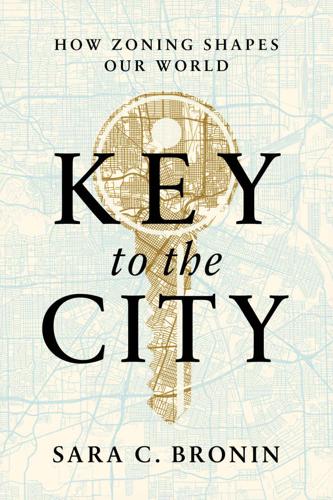
Key to the City: How Zoning Shapes Our World
by
Sara C. Bronin
Published 30 Sep 2024
When we rounded the building to view its eastern façade, we were surprised to find ourselves at the mouth of an outdoor pedestrian mall with about a hundred restaurants and retail stores. Conceived as one of the many federally funded “urban renewal” projects that used federal funding to carry out a big idea in the 1960s and 1970s, the Church Street Marketplace extends four blocks northward, allowing east–west vehicle traffic to intersect it. Although urban renewal has become something of a taboo, associated with dysfunctional public-housing developments and massive highways that obliterated neighborhoods, the Marketplace has endured as a rare success story.
…
Encouraged by rents lower than those in the newer streetcar suburbs, and by the presence of quaint urban dwellings full of character, up-and-coming families invested in restoring the physical integrity of the historic properties. These residents took notice of local preservation ordinances that were adopted in several other cities, and they petitioned the city to follow suit. In 1950 Georgetown was deemed the city’s first historic district, protecting it from further development, including urban renewal. An overhaul of the zoning code in 1958 kept the zoning designations more or less the same. Significantly, despite the collapse of industry in Georgetown, that version of the code preserved the waterfront blocks in industrial districts, which meant residents continued to be cut off from the Potomac as a potential recreational amenity—perhaps no loss given that the river was so polluted at the time.
…
Department of the Interior Office of Archeology and Historic Preservation, Georgetown Historic Waterfront (Washington, DC: U.S. Government Printing Office, 1968). 168 became part of the District of Columbia: DC Organic Act of 1871, conclusion 16 Stat. 419. 168 By 1900, 4,000 of Georgetown’s 15,000 residents: Eileen Zeitz, Private Urban Renewal: A Different Residential Trend (Lexington, MA: Lexington Books, 1979), 34. 169 was assigned to the residential district: All the historic zoning maps that I discuss in this chapter are available on the Washington, DC, Office of Zoning website. 169 up-and-coming families invested: Historian Constance Green described the change: “Tiny fenced-off patches of ground at the rear, recently littered with rubbish, again turned into gardens and patios with lilac bushes and crepe myrtle nursed back to vigor by pruning and feeding.

World Cities and Nation States
by
Greg Clark
and
Tim Moonen
Published 19 Dec 2016
Governments have invested large sums to improve Charles de Gaulle Airport and its connections to La Défense and Paris Orsay. The Government also backed Paris 59 bids to host the Olympics, up until 2005 when it surprisingly lost the bid to London for the 2012 Games. Its global perspective was, to some extent, balanced by a commitment to affordability: a ‘Law for Solidarity and Urban Renewal’ makes it compulsory for communes to have 20–25% of social housing in the housing stock by 2020, while the State now offers public subsidies to lower the price of land for housing delivery. In 2008 an important shift occurred when central government appointed a Minister for Le Grand Paris to help a larger Paris “be a decisive national asset in the competition of the twenty‐first century”, according to the official mandate (Lefevre, 2012).
…
The French Prime Minister has expressed determination to meet the ambitious target of 70,000 units a year, a figure far in excess of those proposed in London and New York. The Mobilisation Plan for Development and Housing intends to support communities that innovate to raise the housing rate. The State is also running a New Programme for Urban Renewal at the national level, which has already identified or provided support to 119 housing development and urban upgrade projects in the Paris Region. In addition to co‐financing, it helps mobilise local actors around social and development objectives. It forms part of a broader co‐operation mechanism entitled ‘State‐Region Contracts’, which set out a joint budgetary and planning vision between regions and central government.
…
Such co‐ordination means that when, for example, national government land and buildings are vacated or de‐centralised from Tokyo, they are passed on to the TMG, which actively redevelops in favour of a more attractive mixed‐use model (Fujita and Child Hill, 2005; Pham, 2015). The national Ministry of Land, Infrastructure, Transport and Tourism (MLIT) retains prerogatives over local urban planning, especially over urban renewal regulations and railway networks. It also oversees the Urban Renaissance Agency – a quango that manages real estate and urban development projects, and has major stakes in Tokyo regeneration schemes, such as the Otemachi district, Minato Mirai 21 and Yokohama (Pham, 2015). The PM’s Office is influential in setting the investment and business promotion agenda for Tokyo.
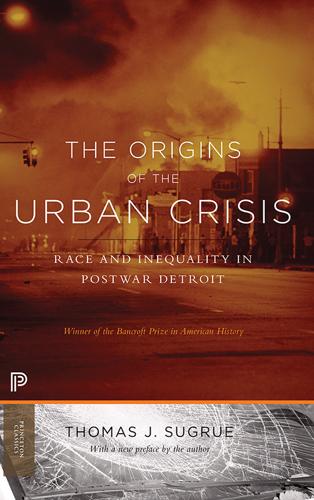
The Origins of the Urban Crisis
by
Sugrue, Thomas J.
Waddell, 1987. [1987.1100.1]) 1.2 Shift change at the Ford River Rouge Plant (courtesy of the Archives of Labor and Urban Affairs, Wayne State University) 1.3 Aerial view of Detroit’s West Side, 1937 (© Detroit News) 2.1 Typical African American neighborhood, 1942, by Arthur Siegel, United States Office of War Information (courtesy of the Library of Congress) 2.2 Black-owned home and garden plot in the Eight Mile–Wyoming neighborhood, 1942, by John Vachon, United States Farm Security Administration (courtesy of the Library of Congress) 2.3 Clearance of land for urban renewal near Gratiot Avenue and Orleans Street, on Detroit’s Lower East Side, 1951 (courtesy of the Archives of Labor and Urban Affairs, Wayne State University) 3.1 Detroit Housing Commission map of proposed public housing projects in Detroit in the 1940s (courtesy of the Library of Congress) 3.2 Wall separating the black Eight Mile–Wyoming neighborhood from an adjacent white area in northwest Detroit, 1941, by John Vachon, United States Farm Security Administration (courtesy of the Library of Congress) 3.3 Billboard protesting black occupancy of the Sojourner Truth Homes, February 1942, by Arthur Siegel, Office of War Information (courtesy of the Library of Congress) 3.4 Black family moving into the Sojourner Truth Homes, February 1942, by Arthur Siegel, Office of War Information (courtesy of the Library of Congress) 3.5 George Edwards, Democratic candidate for mayor in 1949 (courtesy of the Archives of Labor and Urban Affairs, Wayne State University) 4.1 Black maintenance worker in Allison Motors Plant, 1942, by Arthur Siegel, Office of War Information (courtesy of the Library of Congress) 4.2 Black sanitation workers, Detroit, mid-1950s (courtesy of the Archives of Labor and Urban Affairs, Wayne State University) 5.1 Factory—Detroit (1955–56), by Robert Frank (Robert Frank Collection.
…
Another nonprofit, Challenge Detroit, leveraged support from major employers and launched a fellowship program to recruit about thirty emerging leaders from around the world to Detroit each year.28 The sense that gentrification, creativity, and youthful talent are the ticket to Detroit’s rebirth is one manifestation of what urbanists call the neoliberalization of the city, namely the faith that market-based solutions are more rational and efficient than democratic processes: the reliance on the private sector to provide what were once public services such as education, sanitation, and housing, and the creation of a “favorable business climate,” by weakening of labor power and workplace regulations as well as reducing taxes to attract capital. In this view, cities are locked in perpetual competition—just like business firms—and need to cut costs and create incentives to promote capital formation and growth.29 This is an old story in Detroit, one that began with public-private partnerships during the era of urban renewal (using federal funds to demolish “blighted” neighborhoods, to construct market-rate housing, and to attract new investment). This process accelerated in the 1970s and 1980s, as the city used eminent domain to clear land for redevelopment and tax incentives to attract businesses and retail downtown, like the high-rise Renaissance Center in the 1970s.
…
In 1958, the Wayne County road commissioner predicted “that little difficulty will be experienced by families facing displacement because of highway construction,” even though the families on highway sites received only a thirty-day notice to vacate and the commission made no efforts to assist families in relocation.51 Compounding the housing woes of inner-city blacks was the city’s extensive urban renewal program. The centerpiece of Detroit’s postwar master plan was the clearance of “blighted areas” in the inner city for the construction of middle-class housing that it was believed would revitalize the urban economy. Like most postwar cities, Detroit had high hopes for slum removal. City officials expected that the eradication of “blight” would increase city tax revenue, revitalize the decaying urban core, and improve the living conditions of the poorest slum dwellers.
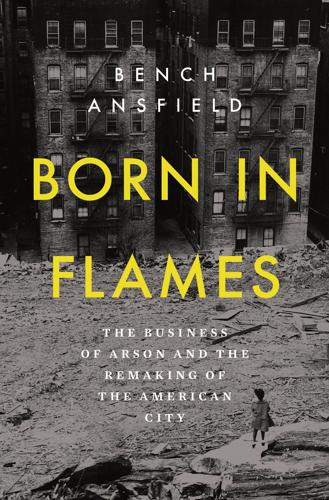
Born in Flames
by
Bench Ansfield
Published 15 Aug 2025
The only buildings that did not burn were those that could not generate profit: public housing. In yet another irony, that enduring symbol of urban failure happened to be a far safer place to live than private rental buildings. During a decade that saw the United States swear off state-sponsored urban renewal, the arson wave was, in a sense, a free-market slum-clearance program. As in the better-remembered urban-renewal programs of the 1950s and 1960s, the market-made bulldozer precipitated massive displacement and community rupture. Yet in an era of municipal fiscal crises and state cutbacks, the blazes provoked little state action until the end of the 1970s.
…
Many watched in dismay as their heat was cut off, their plumbing became unreliable, and other essential services lapsed.20 Although insurance served to protect the interests of property holders, the industry’s withdrawal from U.S. cities was thus felt most acutely by poor communities of color, despite their lower rates of homeownership. Insurance redlining should be understood as one crucial link in a chain that has become known as the “urban crisis”: the confluence of industrial relocation, white and Black middle-class flight, the corresponding loss of a city’s tax base, ruinous urban renewal projects, blockbusting, the withdrawal of social services, and the arrival of Puerto Ricans and Black and white southerners into cities hemorrhaging manufacturing jobs. The term “urban crisis” came into vogue amid the great rebellions of the 1960s, and ever since, it has often been reduced to them.
…
Thanks to Robert Caro’s famous book about Moses, The Power Broker, the Cross Bronx Expressway is typically identified as the opening salvo in the administrative assault on the Bronx. The Power Broker’s deep probing into how the Cross Bronx Expressway carved a “One Mile” incision across the torso of the Bronx in the 1950s is still remembered as a prime example of the violent excesses of urban renewal. Displacing thousands and tearing at the fabric of Jewish community life in East Tremont, the thoroughfare reduced the neighborhood’s “very good, solid housing stock” to a mass of “ravaged hulks.” Meanwhile, the New York City Housing Authority, also under Moses’s thumb, constructed in the southern part of the borough what was once the “largest concentration of public housing anywhere in the country.”
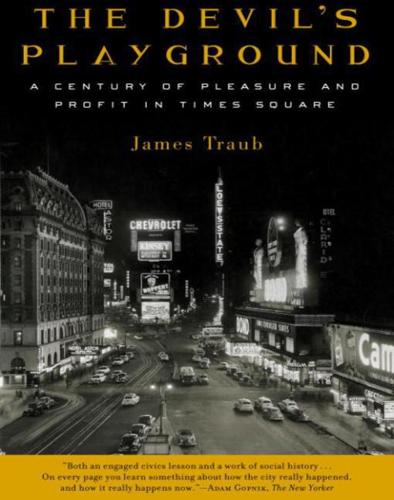
The Devil's Playground: A Century of Pleasure and Profit in Times Square
by
James Traub
Published 1 Jan 2004
“The numbers they were putting on the table for our properties were grossly inadequate.” The Brandts fought back in letters to the editor and op-ed articles; they hired a prominent social scientist to trumpet the evils of urban renewal; and they ended with a fusillade of litigation. The implacable opposition of the Brandts and other powerful real estate forces demonstrates why it was so difficult to use urban renewal laws to revitalize Times Square: the state was seizing property with great current economic value and even greater potential value. If the state had to pay what the owners considered fair value, the project would never happen.
…
And to say that you love cities is to say that you love old cities, for only cities built before the advent of the automobile have the density that makes these myriad accidents and incongruities possible. (I do not love thee, Phoenix.) Jane Jacobs, that great champion of cities and dauntless foe of urban renewal, believes in density to the exclusion of almost everything, including open space and grass. And when I think of Times Square during the epoch I am most inclined to sentimentalize—the era of Damon Runyon and A. J. Liebling, the era just before and after 42nd Street—I think of an infinitely dense and busy asphalt village, or even a series of micro-villages, such as Jacobs loves, in the space of a few blocks.
…
The prize would not necessarily go to the best or most popular idea— Alexander Parker, after all, had no plans to ask anybody whether they wanted a convention center—so the debate over the redevelopment of 42nd Street was also a struggle over who had “the public interest” at heart, and who would be able to impose that vision. It is quite possible that there were no good answers to the problem of re-creating 42nd Street. There were only answers that would disappoint different people, in different ways. ALEXANDER PARKER’S BULLDOZER approach was already becoming passé by the mid-1970s, for the excesses of “urban renewal” had convinced even the most pragmatic that cities could not survive the wholesale destruction of their history and texture. Now 42nd Street began to attract reformers who recognized that the block still had a life of its own, and who thus wanted to rejuvenate rather than flatten it. In 1976, just as Parker was wowing the business press with his grandiose plans, an advertising executive and urban gadfly named Fred Papert was establishing the 42nd Street Development Corporation in hopes of revitalizing the western end of the street.

Free to Choose: A Personal Statement
by
Milton Friedman
and
Rose D. Friedman
Published 2 Jan 1980
The chief beneficiaries of public housing and urban renewal have not been the poor people. The beneficiaries have, rather, been the owners of property purchased for public housing or located in urban renewal areas; middle- and upper-income families who were able to find housing in the high-priced apartments or townhouses that frequently replaced the low-rental housing that was renewed out of existence; the developers and occupants of shopping centers constructed in urban areas; institutions such as universities and churches that were able to use urban renewal projects to improve their neighborhoods. As a recent Wall Street Journal editorial put it, The Federal Trade Commission has looked into the government's housing policies and discovered that they are driven by something more than pure altruism.
…
Spacious and luxurious apartments are rented at subsidized rates to families who are "middle-income" only by a most generous use of that term. The apartments are on the average subsidized in the amount of more than $200 per month. "Director's Law" at work again. Urban renewal was adopted with the aim of eliminating slums—"urban blight." The government subsidized the acquisition and clearance of areas to be renewed and made much of the cleared land available to private developers at artificially low prices. Urban renewal destroyed "four homes, most of them occupied by blacks, for every home it built—most of them to be occupied by middle- and upper-income whites."18 The original occupants were forced to move elsewhere, often turning another area into a "blighted" one.
…
Allen Wallis put it in a somewhat different context, socialism, "intellectually bankrupt after more than a century of seeing one after another of its arguments for socializing the means of production demolished—now seeks to socialize the results of production." 2 In the welfare area the change of direction has led to an explosion in recent decades, especially after President Lyndon Johnson declared a "War on Poverty" in 1964. New Deal programs of Social Security, unemployment insurance, and direct relief were all expanded to cover new groups; payments were increased; and Medicare, Medicaid, food stamps, and numerous other programs were added. Public housing and urban renewal programs were enlarged. By now there are literally hundreds of government welfare and income transfer programs. The Department of Health, Education and Welfare, established in 1953 to consolidate the scattered welfare programs, began with a budget of $2 billion, less than 5 percent of expenditures on national defense.
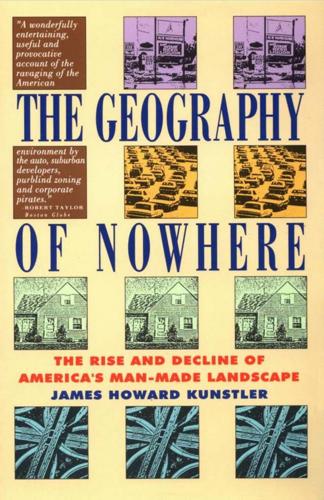
The Geography of Nowhere: The Rise and Decline of America's Man-Made Landscape
by
James Howard Kunstler
Published 31 May 1993
Meanwhile, the hotel's main entrance on the parking lot side of the building is connected to the life of the town only by cars. Facing this main entrance are blocks and blocks that were designated an urban renewal zone in the 1960s. Here stood little stores with dwellings up stairs (i. e . , affordable housing), public amenities like saloons and lunch rooms, and even a sprinkling of small factories or workshops. Here lived the shop clerks, laborers, small artisans, and in some cases the owner of the business below. All the urban renewal blocks on each side of Broadway were turned into parking lots. In twenty years, not a single new building has gone up on them. As a result the business district has been reduced pretty much to one street : Broadway.
…
In fact, part of the Corbu doctrine of the Esprit Nouveau, as filtered through Corbu Purism, was a rejection of decorative art per se. Except that for all his rejection of decorative art, his pavilion ended up being about style anyway : the style of no style. In a decade preoccupied with glamour, what could be more chic? The pavilion held another curiosity : an exhibit of Le Corbusier's Plan Voison, a fanciful urban renewal scheme to bulldoze the Marais district of Paris-a massive historic chunk of the city a stone's throw from the Louvre that included the Place de Bastille and the old Palais Royale (Place de Vosges )-and replace it with a gargantuan "Radiant City" complex of twenty-four sixty-story high-rises set amid parklike grounds and served by limited-access automobile roads.
…
In a peculiar way, /America seemed eager to emulate the postwar devastation of European \cities, to envy their chance to clear away the rubble and begin again. Bulldozing the entire downtown of a Worcester, Massachusetts, or a 7 8 _ Y E S T E R D A Y ' S T O M O R R O W New Haven, Connecticut, and starting over from scratch, didn't seem like such a bad idea. Americans certainly did not respond to the postwar "urban renewal" schemes with anything like the gape-mouthed horror of Parisians contemplating Corbu's plan Voison in 1925. Finally, the Radiant City appealed to all the latent Arcadian yearnings in our culture. It was the old romantic idea-going back to William Penn---of combining the urban with the rural, of living close to nature, of creating a city out of buildings in a park.

The power broker : Robert Moses and the fall of New York
by
Caro, Robert A
Published 14 Apr 1975
By 1957, $133,000,000 of public monies had been expended on urban renewal in all the cities of the United States with the exception of New York; $267,000,000 had been spent in New York. So far ahead was New York that when scores of huge buildings constructed under its urban renewal program were already erected and occupied, administrators from other cities were still borrowing New York's contract forms to learn how to draw up the initial legal agreements with interested developers. When Moses resigned from his urban renewal directorship in i960, urban renewal had produced more physical results in New York than in all other American cities combined.
…
In 1949, the federal government enacted a new approach to the housing problems of cities: urban renewal. The approach was new both in philosophy —for the first time in America, government was given the right to seize an individual's private property not for its own use but for reassignment to another individual for his use and profit—and in scope: a billion dollars was appropriated in 1949 and it was agreed that this was only seed money to prepare the ground for later, greater plantings of cash. Most cities approached urban renewal with caution. But in New York City, urban renewal was directed by Robert Moses. By 1957, $133,000,000 of public monies had been expended on urban renewal in all the cities of the United States with the exception of New York; $267,000,000 had been spent in New York.
…
Says the federal official in charge of the early years of the program: "Because Robert Moses was so far ahead of anyone else in the country, he had greater influence on urban renewal in the United States—on how the program developed and on how it was received by the public—than any other single person." Parks, highways, urban renewal—Robert Moses was in and of himself a formative force in all three fields in the United States. He was a seminal thinker, perhaps the single most influential seminal thinker, in developing policies in these fields, and the innovator, perhaps the single most influential innovator, in developing the methods by which these policies were implemented. And since parks, highways and urban renewal, taken together, do so much to shape cities' total environment, how then gauge the impact of this one man on the cities of America?
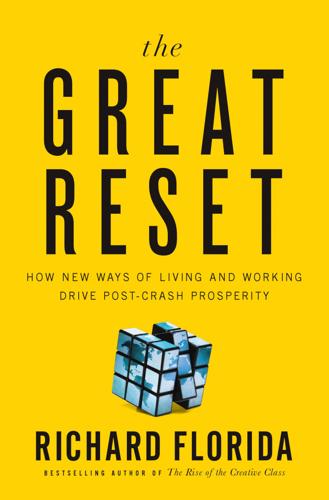
The Great Reset: How the Post-Crash Economy Will Change the Way We Live and Work
by
Richard Florida
Published 22 Apr 2010
Louis and Detroit, as more affluent, largely white residents fled older urban neighborhoods for the safety and comfort of suburbia. The abandonment and decay of so many of these once-great inner cities was a tragic development by any standard—one that was made worse by the ravages of government-sponsored urban renewal. I never got to see my father’s boyhood home, which was demolished in one of Newark’s major urban renewal projects. But the growth of the suburbs stretched out the boundaries of metropolitan areas. The city of Detroit exploded from some 40 square miles in 1910 to 139 square miles by 1950, not counting its rapidly growing suburban rings, a fact that could be easily traced in the ascending names of its major roadways: Six Mile Road, Seven Mile Road, and Eight Mile Road, continuing on to Nine Mile Road, Ten Mile Road, and all the way to Eighteen Mile Road and beyond in the suburbs.
…
Community groups, local foundations, and nonprofits—not city hall or business-led economic development groups—drove its transformation, playing a key role in stabilizing and strengthening neighborhoods, building green, and spurring the development of the waterfront and redevelopment around the universities. Many of Pittsburgh’s best neighborhoods, such as its South Side, are ones that were somehow spared from the wrath of urban renewal. Others, such as East Liberty, have benefited from community initiatives designed to remedy the damage done by large-scale urban renewal efforts that left vacant lots in place of functioning neighborhoods and built soulless public housing high-rise towers. That neighborhood is now home to several new community development projects, including a Whole Foods Market, which provides local jobs as well as serving as an anchor for the surrounding community.
…
“I don’t know if you can take a whole state to a psychiatrist, but the whole Florida economy was based on migration flows.”13 If a picture is worth a thousand words, here’s one that has to be worth ten thousand: online video of a bulldozer razing brand-new homes in a suburban Sunbelt development. I call it the “suburban bulldozer”—a tip of the hat to the much older phrase “federal bulldozer,” which referred to the government-sponsored demolition of inner-city neighborhoods during the heyday of federal urban renewal in the 1950s and 1960s.14 The story behind the video was that Guaranty Bank of Austin had taken over the homes in foreclosure—four in the suburban Texas development and another twelve in California. The bank said it was tearing them down to create a “safe environment” for the neighbors. It’s interesting to pause there and note that brand-new homes, standing empty, could be seen as posing a danger to a neighborhood.
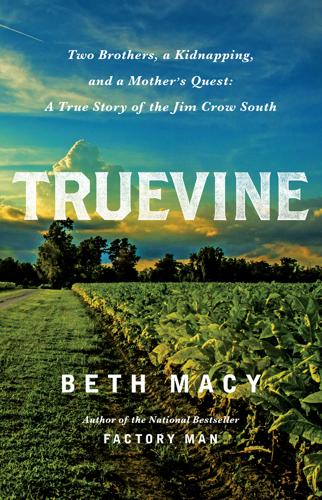
Truevine: Two Brothers, a Kidnapping, and a Mother's Quest: A True Story of the Jim Crow South
by
Beth Macy
Published 17 Oct 2016
One of his earliest tenants recalled him collecting rent on horseback and, later, in a Reo automobile with a crank on the side. His son, John Boswell Jr., inherited the company and was a city councilman in the 1960s, when two of Roanoke’s black neighborhoods, Old Northeast and Gainsboro, were torn down. It was part of the nation’s postwar “urban renewal” efforts to clear out the so-called slums, often by the power of eminent domain. It was happening in cities across the country. In New York, urban renewal director Robert Moses oversaw the evictions of a half-million residents, most of them poor and black, to make way for expressways, luxury apartments, parks, cultural centers, and the United Nations, among other developments.
…
Collecting rent on horseback: “An elderly woman on Gregory Avenue N.E. told me before World War II that she remembered my father coming on horseback to collect rent,” John Boswell Jr. said of his father. “Later he drove a Reo automobile that cranked on the side. Our oldest rental account dates from August 1893,” from M. Carl Andrews, “Early Realtor Came with Rails,” Roanoke World-News, March 9, 1976. Urban renewal as “Negro removal”: Mary C. Bishop, “How Urban Renewal Uprooted Black Roanoke,” Roanoke Times, Jan. 29, 1995. Madeline Tate’s death: Douglas Pardue, “Madeline Adams Tate: Now She Is a Number,” Roanoke Times, Jan. 26, 1985. Demolition of Tate’s house: Author interview, Webb. Conditions of Tate’s house: Douglas Pardue, “Death Leads City to Act Against Poor Housing,” Roanoke Times, Feb. 2, 1985.
…
She made reference to a family Bible that we were not permitted to view, and for years after the series ran, whenever I visited the restaurant she hinted that there was so much more to the story than we had found. Our newspaper was the same one that had mocked her family’s version of the kidnapping story decades before. It had looked the other way when city officials decimated two historic black neighborhoods in the name of midcentury progress, via urban renewal, or, as the black community called it, Negro removal. The newspaper cheered when the city knocked down hundreds of community homes and buildings, including the Muse family’s Holiness church. It refused to print wedding announcements for black brides until the mid-1970s because, the wealthy white publisher reasoned, Roanoke had no black middle class.

Streetfight: Handbook for an Urban Revolution
by
Janette Sadik-Khan
Published 8 Mar 2016
See Times Square plan Bronx Fordham Road. See Fordham Road Grand Concourse bike lane, 158 Moses’s “urban renewal” projects, 16 Southern Boulevard, traffic fatalities, 220 Bronx Hub, 106 Bronx-Whitestone Bridge, 15 Brooklyn Barclays Center, 278 Bedford Avenue bike lane, 163, 164 Flatbush Avenue, 75 Fourth Avenue, 59 Gowanus Expressway, 59 Grand Army Plaza, 164, 165 Kent Avenue bike lane, 144, 162–64 Montague Street, car-free event, 120–21 Moses’s “urban renewal” projects, 16 New Lots Avenue plaza, 106 Nostrand Avenue, 75 Ocean Parkway, 152–53 Pearl Street plaza, 80–82, 81, 254 Prospect Park West, speeding on, 164–65, 169, 171–72 Prospect Park West bike lane.
…
A native of Scranton, Pennsylvania, Jane Jacobs moved to Depression-era New York City and emerged as an unlikely urban visionary in her adopted West Village neighborhood. Her signature work, The Death and Life of Great American Cities (1961), was an urban revelation, declaring in accessible language how a city’s design can nourish or destroy its quality of human life. She blasted the urban planners of the first half of the twentieth century for “urban renewal” programs that destroyed old buildings—and the neighborhoods with them—in the name of progress and for building in their place cold, sterile high-rises set back on superblocks, sucking life away from the street. As she wrote the manuscript for the book, Jacobs took her primary inspiration not from engineering manuals and texts on urbanism, but by following the people she saw on the street outside her second-story window—what she called “The Ballet of Hudson Street.”
…
Enabled by successions of mayors and governors and fueled by billions of federal dollars in Works Progress Administration and Interstate Highway funds, Moses amassed as many as twelve directorships and leadership positions over vital public works agencies, from the New York City Parkway Authority to the Triborough Bridge and Tunnel Authority to the state parks. The federal government created massive public works programs to build new urban roads and housing to replace the “slum” infrastructure of the nineteenth century. Moses was first in line to provide these “urban renewal” projects. The almost incomprehensible list of projects that he moved from planning to implementation from 1918 to his departure from government in 1968 included seventeen parkways and fourteen expressways that ringed and connected the city, and aesthetic and engineering marvels like the Verrazano-Narrows, Bronx-Whitestone, and Triborough bridges.
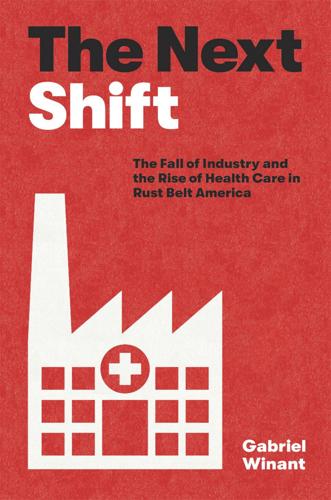
The Next Shift: The Fall of Industry and the Rise of Health Care in Rust Belt America
by
Gabriel Winant
Published 23 Mar 2021
Once emptied, this historic center of Black Pittsburgh was replaced by the Civic Arena, the venue rejected by Highland Park, whose size and surrounding parking lots walled off the remains of the Hill from downtown.24 All told, urban renewal displaced at least 5,400 families by 1966, while only 1,719 new dwellings were constructed or underway. The program succeeded in driving African Americans farther from downtown, further penning them in to constricting space. Outside of the Hill itself, Homewood-Brushton received the most refugees from urban renewal, and rapid white flight followed. Homewood’s Black population rose from 13 percent in 1940 to 70 percent in 1960 and 86 percent by 1968.
…
Recall that welders Wickerham and Salaj both got their tradesman jobs with the help of their fathers, suggesting the insularity of this work.12 In 1950, the US steel industry produced nearly one hundred million tons, more than at any previous point in its history. In the distinctive postwar American consumer landscape, steel was everywhere: in the frames of new interstate highways; in the shining appliances filling new suburban homes; in the pipelines that carried petroleum from oil fields; inside new towers rising in city centers undergoing urban renewal; and above all in the automobiles remaking American society. Beyond all these, however, was the enormous stimulus of the Cold War military machine, in high gear in 1950 for the Korean conflict, but in principle capable of sustaining demand for steel in peacetime.13 At the beginning of the Cold War, American steel held an enviable global position, putting out 47 percent of global product—leaving American producers generally unconcerned about international competition for most of the 1950s.
…
In just the first week of October 1959, two separate Hill District landlord-tenant disputes led to hospitalization: one for the tenant, smashed on the head with a skillet; the other for the landlord, slashed on his head and hand with a razor. (It is probably not a coincidence that these episodes, sparked by nonpayment of rent, occurred several months into the 1959 steel strike.)21 The city attempted to address neighborhood conditions through its urban renewal program. This effort aimed to beautify downtown, control smoke emissions, abate floods, and clear slums. The growth machine was consummated in a bipartisan alliance between David Lawrence—the Irish-Catholic Democratic Party boss, mayor, and eventually governor—and the Republican corporate executives of the city’s unusually unified business class.
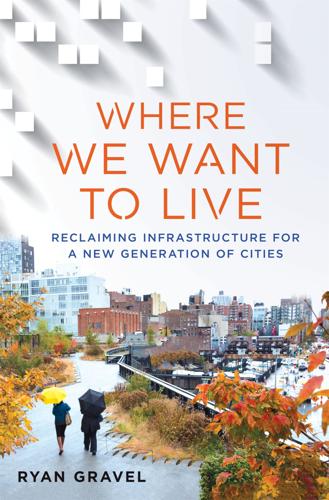
Where We Want to Live
by
Ryan Gravel
Published 2 Feb 2016
Other changes to streets included the “elimination of jogs, separation of grades and preferential treatment in traffic control” and the introduction of a one-way network across Atlanta’s tangled downtown street grids.13 Beyond roadways, massive urban renewal projects demolished many poor neighborhoods, including Buttermilk Bottom, site of today’s Civic Center; Lightning, where the Georgia World Congress Center now stands; Hemphill Avenue, where I later lived on the west campus of Georgia Tech, as well as a dozen others. These physical changes reflected larger cultural preferences for the people of Atlanta—beyond just suburbanization, highway construction, and urban renewal. Even attendance at the Atlanta Crackers’ games declined. Abandoned by baseball, the once-beloved stadium that sat on the embankment of the Southern belt line was demolished in 1966, the same year the Braves franchise moved south from Milwaukee.
…
I lived in a dorm on the then-gritty west side of campus. I didn’t understand at the time that that grittiness was recent history. The place I was living had been laid bare by a national cultural movement that prioritized civic “progress” over the communities of urban poor people, and the still-unhealed scars of its 1960s-era urban renewal program blended seamlessly with the west side’s down-and-out industrial aesthetic. I distinctly remember collecting random bricks and garden plants from the gravel lot on Eighth Street where I parked my car and thinking how that must have once been somebody’s home. It was. Following its 1965 master plan and backed by the threat that it could condemn private land, Georgia Tech rapidly and dramatically expanded its campus westward into the mixed-race Hemphill Avenue community, which was “a vibrant neighborhood, but it was also poor.”1 The area had previously become famous for its Pickrick Cafeteria, owned by the segregationist Lester Maddox, who decided to close it rather than integrate its dining area in compliance with the Civil Rights Act of 1964.
…
Notwithstanding its skyrocketing rents and new waterfront towers down by the East River, Williamsburg’s disposition for local businesses, products, people, and stories translates beyond style and reflects a fitting model for the forlorn downtowns and industrial districts of any small town or city. These efforts leverage existing assets like dilapidated old buildings along with emerging technologies to support a way of life that, unlike historic urban renewal initiatives, is fundamentally sustainable and economically positive. Their attention to small industry, the arts, and local food and business embraces city life in a powerful way, and while the intensity here helps to illustrate the opportunities and challenges for revitalization on a large scale, more modest variations can also be found in cities as diverse as Albuquerque and Chattanooga.
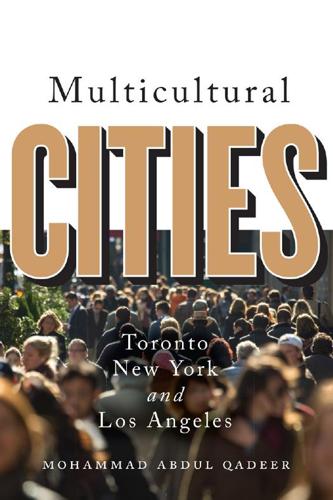
Multicultural Cities: Toronto, New York, and Los Angeles
by
Mohammed Abdul Qadeer
Published 10 Mar 2016
Competing Interests and Divergent Needs Almost every day, somewhere in Toronto, Vancouver, New York, or Chicago, there is a community meeting about building a suburban mall, establishing a mosque, or organizing a shelter for the homeless. In these meetings, divergent conceptions of what is needed and how to develop it emerge, reflecting the differences of class, culture, and race of the proponents. This was what bedevilled the urban renewal programs of the 1960s and 1970s,5 and it continues to resonate in current controversies concerning gentrification and area development. With immigration and the consequent explosion of ethno-racial diversity, the differences of community interests have also taken on the cultural colours and politics of identity.
…
They have ranged from public-sponsored mega-projects, to public-private consortiums and community-managed development and delivery of services. These tools and lessons continue to be a part of urban planning’s repertoire for slum improvement and overcoming social deprivation. One lesson that came out of the urban renewal programs of the 1960s and 1970s is that physical rebuilding alone is not enough for overcoming slum conditions. There have to be simultaneous efforts for social reconstruction and empowering people through the provision of social services and community organization. The physical and social-development programs have to be interlinked to unfold a process of comprehensive community renewal.
…
The displacement and squeezing of minorities, particularly Blacks and Latinos in US cities and poor immigrants in Canada, continues to be the fallout from the public and private redevelopment of deprived neighbourhoods. Redevelopment occurs in spoonfuls rather than in the massive doses of the urban renewal programs. Community-based social development in poor neighbourhoods is another strategy commonly used in deprived neighbourhoods and areas of ethno-racial concentrations. Toronto has a network of multiservice neighbourhood centres in Malvern, Thorncliffe, Fairlawn, Davenport, and other poor neighbourhoods of immigrants.
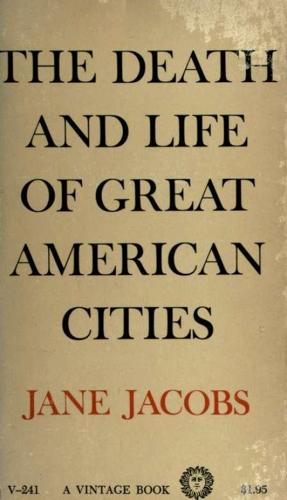
The death and life of great American cities
by
Jane Jacobs
Published 1 Nov 1961
ALSO BY Jane Jacobs Systems of Survival: A Dialogue on the Moral Foundation of Commerce and Politics Cities and the Wealth of Nations: Principles of Economic Life The Question of Separatism: Quebec and the Struggle over Sovereignty The Economy of Cities VINTAGE BOOKS EDITION, DECEMBER 1992 Copyright © 1961 by Jane Jacobs Copyright renewed 1989 by Jane Jacobs All rights reserved under International and Pan-American Copyright Conventions Published in the United States by Vintage Books, a division of Random House, Inc., New York, and simultaneously in Canada by Random House of Canada Limited, Toronto Originally published in hardcover by Random House, Inc., New York, in 1961 Acknowledgment is made to the following publications for permission to reprint portions of this book which first appeared in their pages: Architectural Forum, the Columbia University Forum, Harper’s Magazine, The Reporter. Library of Congress Cataloging-in-Publication Data Jacobs, Jane, 1916– The death and life of great American cities / Jane Jacobs.—1st Vintage Books ed. p cm Originally published: New York: Random House, [1961] ISBN 0-679-74195-X 1 City planning—United States 2 Urban renewal—United States. 3. Urban policy—United States I. Title HT167.J33 1992 307.76′097 3—dc20 92-50082 Ebook ISBN 9780525432852 v4.1 a TO NEW YORK CITY where I came to seek my fortune and found it by finding Bob, Jimmy, Ned and Mary for whom this book is written too Acknowledgment So many scores of persons helped me with this book, wittingly and unwittingly, that I shall never fully be able to acknowledge the appreciation I owe and feel.
…
Reap they the field that is none of theirs, strip they the vineyard wrongfully seized from its owner… A cry goes up from the city streets, where wounded men lie groaning… If so, he was also thinking of New York, Philadelphia, Boston, Washington, St. Louis, San Francisco and a number of other places. The economic rationale of current city rebuilding is a hoax. The economics of city rebuilding do not rest soundly on reasoned investment of public tax subsidies, as urban renewal theory proclaims, but also on vast, involuntary subsidies wrung out of helpless site victims. And the increased tax returns from such sites, accruing to the cities as a result of this “investment,” are a mirage, a pitiful gesture against the ever increasing sums of public money needed to combat disintegration and instability that flow from the cruelly shaken-up city.
…
And by analogy, the principles of sorting out—and of bringing order by repression of all plans but the planners’—have been easily extended to all manner of city functions, until today a land-use master plan for a big city is largely a matter of proposed placement, often in relation to transportation, of many series of decontaminated sortings. From beginning to end, from Howard and Burnham to the latest amendment on urban-renewal law, the entire concoction is irrelevant to the workings of cities. Unstudied, unrespected, cities have served as sacrificial victims. * * * *1 Please remember the North End. I shall refer to it frequently in this book. *2 Readers who would like a fuller account, and a sympathetic account which mine is not, should go to the sources, which are very interesting, especially: Garden Cities of Tomorrow, by Ebenezer Howard; The Culture of Cities, by Lewis Mumford; Cities in Evolution, by Sir Patrick Geddes; Modern Housing, by Catherine Bauer; Toward New Towns for America, by Clarence Stein; Nothing Gained by Overcrowding, by Sir Raymond Unwin; and The City of Tomorrow and Its Planning, by Le Corbusier.
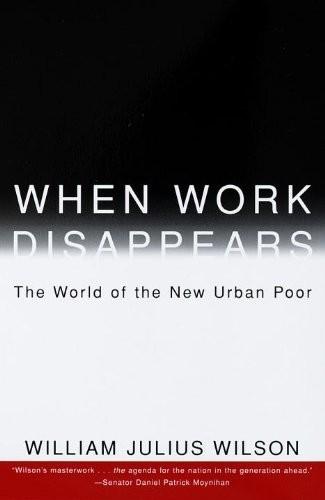
When Work Disappears: The World of the New Urban Poor
by
William Julius Wilson
Published 1 Jan 1996
Other government policies also contributed to the growth of jobless ghettos, both directly and indirectly. Many black communities were uprooted by urban renewal and forced migration. The construction of freeway and highway networks through the hearts of many cities in the 1950s produced the most dramatic changes, as many viable low-income communities were destroyed. These networks not only encouraged relocation from the cities to the suburbs, “they also created barriers between the sections of the cities, walling off poor and minority neighborhoods from central business districts. Like urban renewal, highway and expressway construction also displaced many poor people from their homes.”
…
The economic mobility of these families “contributed to the sociological stability of the first public housing communities, and explains the program’s initial success.” The passage of the Housing Act of 1949 marked the beginning of the second policy stage. It instituted and funded the urban renewal program designed to eradicate urban slums. “Public housing was now meant to collect the ghetto residents left homeless by the urban renewal bulldozers.” A new, lower-income ceiling for public housing residency was established by the federal Public Housing Authority, and families with incomes above that ceiling were evicted, thereby restricting access to public housing to the most economically disadvantaged segments of the population.
…
In European countries, suburbanization has not been associated with the abandonment of cities as residential areas. “The central governments continued to treat cities as a national resource to be protected and nurtured.” Indeed, the city centers in Europe remain very desirable places to reside because of better public transportation, more effective urban renewal programs, and good public education that is more widely available to disadvantaged students. Moreover, unlike in the United States, cheap public transportation makes suburbanized employment sites more accessible. It will be difficult to address growing racial tensions in U.S. cities unless we tackle the problems of shrinking revenue and inadequate social services and the gradual disappearance of work in certain neighborhoods.
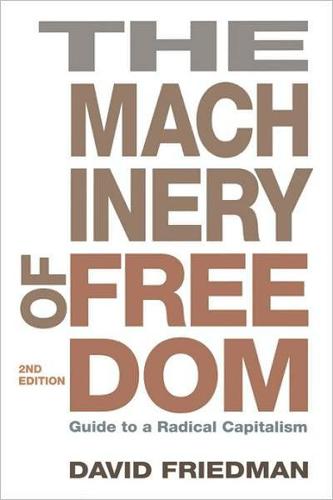
Machinery of Freedom: A Guide to Radical Capitalism
by
David Friedman
Published 2 Jan 1978
State universities, for instance, subsidize the schooling of the upper classes with money much of which comes from relatively poor taxpayers. Urban renewal uses the power of the government to prevent slums from spreadinAg, a process sometimes referred to as 'preventing urban blight'. For middle-class people on the border of low-income areas, this is valuable protection. But 'urban blight' is precisely the process by which more housing becomes available to low-income people. The supporters of urban renewal claim that they are improving the housing of the poor. In the Hyde Park area of Chicago, where I have lived much of my life, they tore down old, low-rental apartment houses and replaced them with $30,000 and $40,000 town houses.
…
Miller is a law professor who has written extensively on Medieval Iceland. He writes as a legal scholar not an economist, and his conclusions are not always the same as mine. Public Policy Martin Anderson, The Federal Bulldozer: A Critical Analysis of Urban Renewal, 1949-1962 (Cambridge, MA: MIT Press, 1964). The book that showed what urban renewal does to, not for, the poor. Leslie Chapman, Your Disobedient Servant (London: Chatto and Windus, 1978). A fascinating first-hand account of the mechanics of Friedman's first law — why things cost twice as much when governments do them. The author was a British bureaucrat who tried to reduce the costs of his part of the bureaucracy by modest measures such as not heating buildings that nobody occupied.
…
The right to control my life does not mean the right to have anything I want free; I can do that only by making someone else pay for what I get. Like any good right winger, I oppose welfare programs that support the poor with money taken by force from the taxpayers. I also oppose tariffs, subsidies, loan guarantees, urban renewal, agricultural price supports — in short, all of the much more numerous programs that support the not-poor — often the rich — with money taken by force from the taxpayers — often the poor. I am an Adam Smith liberal, or, in contemporary American terminology, a Goldwater conservative. Only I carry my devotion to laissez-faire further than Goldwater does — how far will become clear in the following chapters.
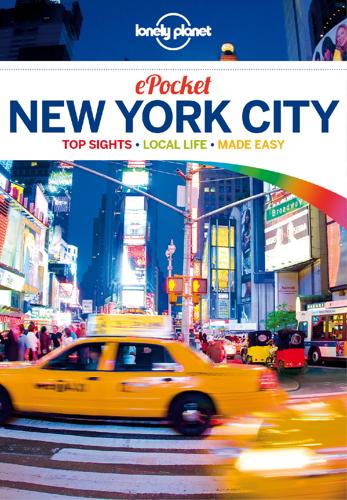
Pocket New York City Travel Guide
by
Lonely Planet
Published 27 Sep 2012
Guggenheim Museum, New York, April 14–September 5, 2007. ©The Solomon R. Guggenheim Foundation, New York. Used with permission. JEAN-PIERRE LESCOURRET/LONELY PLANET IMAGES © New York City Top Sights The High Line (Click here) Refurbished rail tracks have been transformed into grassy catwalks in the sky. It’s the paradigm of urban renewal gone right, enjoying its status as one of the city’s most beloved public spaces. ALAN COPSON/CORBIS © New York City Top Sights Times Square (Click here) Like it or loathe it, Times Square offers the quintessential New York conglomeration of bright lights and oversized billboards that soar above the relentless crowds and thick streamers of concrete.
…
Greenwich Village, Chelsea & the Meatpacking District Top Sights The High Line C3 Sights 1 Washington Square Park F4 2 Chelsea Market C3 3 New York University G4 4 Astor Place G4 5 Pier 45 C5 6 Grace Church G4 7 Chelsea Art Museum B2 8 Chelsea Hotel E1 9 Chelsea Piers Complex B2 10 Forbes Collection F3 11 Downtown Boathouse D5 New York Trapeze School (see 11) Eating 12 RedFarm D4 13 Tartine D4 14 Cookshop C2 15 Le Grainne C2 16 Tomoe F5 17 Billy's Bakery D2 18 Spotted Pig D4 19 Minetta Tavern F5 20 Café Cluny D4 21 Taïm E4 22 Tertulia E4 23 Barbuto C4 24 Joe's Pizza E5 25 Souen G3 26 Co D1 Drinking 27 Little Branch E5 28 Marie's Crisis E4 29 Art Bar D3 30 Vin Sur Vingt E3 31 Bathtub Gin D2 32 Vol de Nuit F4 33 Boom Boom Room C3 Le Bain (see 33) 34 Kettle of Fish E4 35 124 Old Rabbit Club F5 36 Julius Bar E4 37 G Lounge E2 38 Barracuda E1 39 Cubbyhole D3 40 Rawhide D2 Entertainment 41 Upright Citizens Brigade Theatre D1 42 Comedy Cellar F5 43 Sleep No More B1 44 Village Vanguard E4 45 Blue Note F5 46 Cherry Lane Theater E5 47 Angelika Film Center G5 48 Smalls Jazz Club E4 Duplex (see 34) 49 IFC Center E5 50 Le Poisson Rouge F5 51 Magnet Theater D1 52 Atlantic Theater Company D2 53 Kitchen C2 Shopping 54 Barneys Co-op D2 55 Yoyamart D3 56 Strand Book Store G3 57 Printed Matter C2 Bonnie Slotnick Cookbooks (see 36) 58 Three Lives & Company E4 59 The Bathroom E4 60 Jeffrey New York C3 Greenwich Letterpress (see 34) 61 Marc by Marc Jacobs D4 62 Stella McCartney C3 63 Nasty Pig D2 64 Forbidden Planet G3 65 Abracadabra F2 66 192 Books C2 Top Sights The High Line www.thehighline.org Gansevoort St 7am-7pm L, A/C/E to 14th St-8th Ave, C/E to 23rd St-8th Ave, M11 to Washington St, M11, M14 to 9th Ave, M34 to 10th Ave In the early 1900s, the area around western Chelsea was the largest industrial section of Manhattan and a set of elevated tracks were created to move freight off the cluttered streets below. The rails eventually became obsolete, and in 1999 a plan was made to convert the scarring strands of metal into a public green space. On June 9, 2009, part one of the city’s most beloved urban renewal project opened with much ado, and it’s been one of New York’s star attractions ever since. LOGAN MOCK-BUNTING/CORBIS © Don’t Miss Public Art In addition to being a haven of hovering green, The High Line is also an informal art space featuring a variety of installations, both site-specific and stand-alone.
…
Secret Staffers As you walk along the High Line, you’ll find dedicated staffers wearing shirts with the signature double-H logo who can point you in the right direction or offer you additional information about the converted rails. Group tours for children can be organized on a variety of topics, from the plant life of the high-rise park to the area’s history. The Industrial Past It’s hard to believe that The High Line – a shining example of brilliant urban renewal – was once a dingy rail line that anchored a rather unsavory district of thugs, trannies and slaughterhouses. The tracks that would one day become the High Line were commissioned in the 1930s when the municipal government decided to raise the street-level tracks after years of accidents that gave Tenth Ave the nickname ‘Death Avenue.’
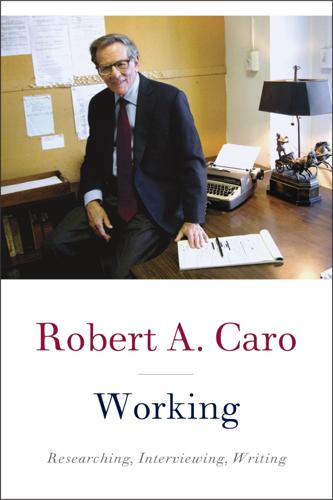
Working
by
Robert A. Caro
Published 8 Apr 2019
Robert Moses gazing down on Riverside Park lodged in my imagination and, in my imagination, became entangled in a mystery: I had previously been aware only of the Robert Moses of the 1950s and ’60s: the ruthless highway builder who ran his roads straight through hapless neighborhoods, the Robert Moses of the Title I urban-renewal scandals—some of the biggest and most sordid scandals of twentieth-century New York, scandals almost incredible both for the colossal scale of their corruption (personally “money honest” himself, Moses dispensed to the most powerful members of the city’s ruling Democratic political machine what one insider called “a king’s ransom” in legal fees, public relations retainers, insurance premiums, advance knowledge of highway routes and urban renewal sites, and insurance-free deposits in favored banks, to insure their cooperation with his aims) and for the heartbreaking callousness with which he evicted the tens of thousands of poor people in his way, whom, in the words of one official, he “hounded out like cattle.”
…
During the time in which he controlled—controlled absolutely—the New York City Housing Authority, the authority built 1,082 apartment houses, containing 148,000 apartments which housed 555,000 people: more people than, at the time, lived in Minneapolis. Those apartments are mainly for persons of low income. For persons of higher income, he created, under urban-renewal programs, tens of thousands of additional apartments. He was the dominant force, moreover, behind such supposedly “private” housing developments as Stuyvesant Town, Peter Cooper Village, Concord Village, and Co-op City—and such monumental features of the New York landscape as Lincoln Center, the United Nations headquarters, Shea Stadium, the New York Coliseum, and the campuses of Fordham, Pratt, and Long Island Universities.
…
You know, you put it together from so many different places. But you always needed something in writing. In the latter chapters of the book, I write about how Moses threw people out of their homes to build his highways. I was able to get a pretty good conservative figure: about 250,000 people. He threw out about the same number for his “urban renewal” slum-clearance projects. So he threw about half a million people out of their homes. But it was hard to document. It wasn’t so hard to document for the highways, because the federal government required some sort of documentation. But for the slum clearance, the federal government didn’t require anything.
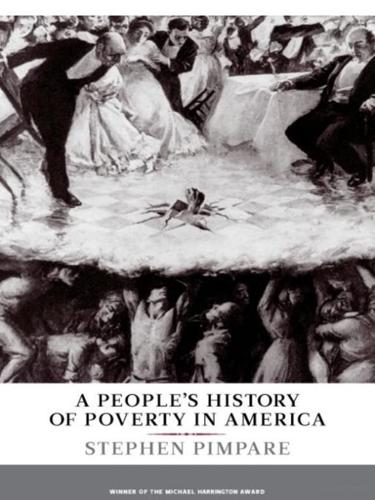
A People's History of Poverty in America
by
Stephen Pimpare
Published 11 Nov 2008
As early as 1829, a group of concerned New York citizens pressured the Common Council to level some Five Points tenements to make way for a new road, citing their occupation “by the lowest description and most degraded and abandoned of the human Species.”25 Even the famed Trinity Church was a slumlord until publicity outed it; its response was to raze the dilapidated tenements it owned, putting up office buildings in their place, thus destroying more housing, however bad it may have been.26 Owing to the efforts of Riis and others, Mulberry Bend (where we could find the Bandits’ Roost and Thieves’ Alley made infamous by his iconic photographs) was finally destroyed late in the nineteenth century, leaving many uprooted and homeless. 27 Boston leveled an entire Irish neighborhood, “squalid Fort Hill,” in the late 1860s,28 just as more recent slum clearance and urban renewal projects (“negro removal,” some called it during the 1960s) also destroyed intact, if fragile, communities, ones that may not seem to be communities in the minds of well-to-do reformers.29 While it is undertaken in the guise of a progressive-minded reform, one wonders what happens to the denizens of these poorest of areas, for whatever the rhetoric, urban renewal has been a project of the white middle and business classes. In post–World War II New York, it was black and Puerto Rican neighborhoods that were displaced for new housing or commercial ventures, but few blacks and Puerto Ricans were to be found after the “improvements” were made.
…
crime and violence in and employment opportunities and ethnic mutual aid societies exploitative economic practices extended family networks female-headed common households history of isolation of the modern ghetto mutual dependence networks nineteenth-century and the pathology of the ghetto and the political economy of the ghetto and prostitution public housing and urban renewal efforts and race “race mixing,” and “slumming,” social organization of statistics on world’s slum dwelling population and underground local economies See also Five Points (New York City); Lower East Side (New York City) urban renewal efforts U.S. Agency for International Development (USAID) U.S. Commission on Civil Rights U.S. Conference of Mayors U.S. Department of Agriculture U.S. Department of Defense U.S.
…
Index abolitionism abortion abusive relationships African American women domestic violence homeless women leaving sexual violence women on welfare Addams, Jane adoption advertising messages The Affluent Society (Galbraith) African Americans and AFDC program anonymous letters to FDR and orphanages Civil War service and colonial jails convict labor/leasing Depression-era disenfranchisement families and marriage and the Freedmen’s Bureau generosity to tramps and ghetto communities and government redlining policies and history of the welfare state and history of welfare in the South homeless population incarceration rates infant mortality rates Jim Crow era mortality rates and New Deal programs and NWRO54 and official poverty rates post-abolition lives poverty over the life course and public housing/urban renewal efforts and radical organizing and sexual violence and Social Security Act as tenant farmers tramps and vagrants underrepresentation/neglect in histories of poverty and welfare women on welfare and work/employment See also slaves and slavery; women, African American African Marine Society Agriculture Adjustment Act (AAA) Aid to Families with Dependent Children (AFDC) actual benefits received and African Americans eligibility for unmarried women and labor market effects recipients’ lodging of complaints and standards of “moral fitness,” stigma and shame of receiving Aid to Families with Dependent Children (AFDC) (cont.)
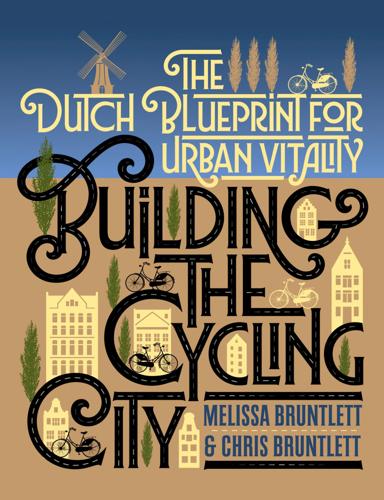
Building the Cycling City: The Dutch Blueprint for Urban Vitality
by
Melissa Bruntlett
and
Chris Bruntlett
Published 27 Aug 2018
“People lived right in the middle of that industrious climate, in small, dark, and unhealthy homes. There was a huge dissatisfaction with this pre–World War II city that we would probably not understand today.” That discontent with a mixed, messy city—especially among the ruling classes—manifested itself in an “urban renewal” plan similar to those seen in North American cities. As Provoost points out, planners in Rotterdam were already devising radical transformations to unclutter and “sober up” the city, even before the bombs fell: “They were tearing down huge parts of the inner city to create more space for urban traffic.
…
Everyone had clearly been romanced by images of crowded Manhattan sidewalks, which never actually materialized in Rotterdam because of the problematic way the zoning code had pushed housing out of the city center. “The inner city became windy and uncozy, and people were very critical of it,” reveals Provoost. “In the seventies, this critique came to a pinnacle, leading to the narrowing of streets to make them cozy again.” Thus began three decades of reversing the damage done in the name of urban renewal and retrofitting streets designed “according to the demands of modern fast traffic” to a more human scale. Wide, grass-lined boulevards were established down the center of many arterial roads, and these were integrated into a fast, frequent tramway system that would never get stuck behind single-occupant vehicles.
…
This provides an effective, real-life anecdote to back up Kevin Mayne’s insistence that the places with the best bike infrastructure are the ones that sell the most pedelecs, and the global e-bike market won’t fulfill its potential without great places to ride. Concludes Van Duren: “Even without the e-bike, the concept of the cycle superhighway can be a game-changer. But with the e-bike it makes it even stronger.” 05 DEMAND MORE Up to here the old city pattern disappeared. Urban renewal began in this neighborhood. In commemoration, this memorial set in 1986. — JODENBREESTRAAT MONUMENT Amsterdam Amsterdam is a city filled with monuments, commemorating everything from beloved royalty to forgotten war heroes, but few are as overlooked as the nondescript stone turtle on Jodenbreestraat (“Jewish Broad Street”) in the city’s historic Jewish Quarter.
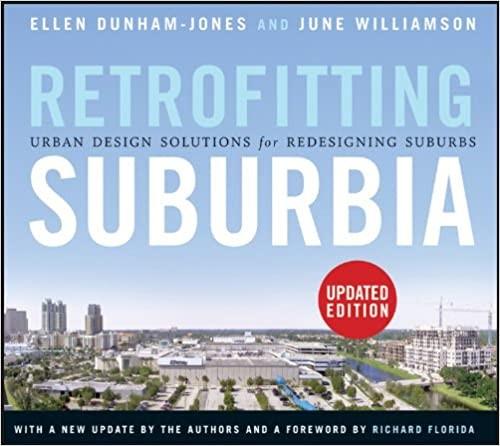
Retrofitting Suburbia, Updated Edition: Urban Design Solutions for Redesigning Suburbs
by
Ellen Dunham-Jones
and
June Williamson
Published 23 Mar 2011
Belmar and CityCenter Englewood, together with a cascade of other mall retrofits in the Denver metropolitan area, demonstrate how a series of new suburban downtowns can begin to remake a region into a pattern of polycentric urbanism, supported by mass transit. A process of full-circle urban renewal is illustrated by other examples, wherein older downtowns that experienced decline in the 1950s and 1960s, as new regional malls were constructed and sucked the life out of older Main Streets, were redeveloped through the urban renewal process into enclosed malls in order to compete. These malls subsequently failed and the properties are now being remade back into downtowns, such as in Rockville, Maryland, and Sunnyvale, California, where a 25-acre 1970s mall that had been built on the site of the old town center has itself been razed for a new, higher-density, mixed-use redevelopment.22 From Dead Mall to New Downtown: Mizner Park A pioneering “greyfield to goldfield” project is Mizner Park in Boca Raton, Florida.
…
The residents of earlier suburbs were diverse; despite the mobility offered by regional mass transit and the new “horseless carriages,” the wealthy residents of rustic but grand suburban “cottages” required domestic help, who for lack of mobility lived nearby, in neighborhoods made up of smaller, working-class dwellings.5 Historians have identified a number of factors that changed and accelerated the pattern of suburbanization in the mid-twentieth century: the wide availability of federally subsidized mortgage loans, the increasing sophistication of large-scale production builders like Levitt and Sons, severe overcrowding in urban ethnic neighborhoods coupled with urban renewal programs that actually decreased the number of available dwelling units in cities, and the increasing affordability of private automobiles. The production techniques used by the large builders—70% of the houses built in 1949 were built by only 10% of the builders—led to a fairly uniform product. 6 Many contemporary commentators conflated dwelling with resident and conceptualized a stereotype of suburbanites as mind-numbed conformists (a convenient foil for the cultured urbanite).
…
This is especially important for nonprofit groups, cultural facilities, or local shops that cannot generally afford new construction or extensive site work yet are in need of central locations to best serve their constituents. In The Death and Life of Great American Cities, published in 1961, Jane Jacobs criticized how urban renewal and large swaths of “one-age construction” robbed cities of older, affordable buildings—a vital asset for diversity. “Chain stores, chain restaurants, and banks go into new construction. But neighborhood bars, foreign restaurants, and pawn shops go into older buildings. Supermarkets and shoe stores often go into new buildings; good bookstores and antique dealers seldom do.

Road to Nowhere: What Silicon Valley Gets Wrong About the Future of Transportation
by
Paris Marx
Published 4 Jul 2022
Influential planners such as Robert Moses in New York City and Harland Bartholomew in St. Louis pushed for highway plans that extended into the very heart of US cities.28 Not only were these highways more convenient for suburban residents, but they allowed the planners to use them to destroy Black neighborhoods by removing “blighted” areas, which became a major focus of the urban renewal agenda that had already begun demolishing poor and minority neighborhoods to concentrate their residents in isolated public housing projects. In just one example of how racism was built into the physical environment of major cities, Moses ordered the overpass bridges on the Southern State Parkway to be low enough so that buses could not drive under them, thus ensuring that poor and Black bus riders could not reach Jones Beach.
…
The highway construction boom slowed by the end of the 1960s as costs rose faster than inflation, but their construction had also created a new coalition to challenge them: environmental activists, civil rights groups, the consumer movement, and urban residents. The most prominent figure to come out of this movement was none other than activist and author Jane Jacobs. From the late 1950s through the 1960s, Jacobs was a leader in the campaign against Moses’s urban renewal strategy—in part because of how it affected her neighborhood of Greenwich Village—and his planned Lower Manhattan Expressway that would have cut through Manhattan to connect the Manhattan Bridge and the Williamsburg Bridge to the Holland Tunnel. But she was also not alone; similar campaigns against urban highways were occurring across the United States in the 1960s.
…
See Interstate Highway System Highway Trust Fund, 25 Hill, Steve, 148 Horan, Hubert, 102, 106, 107 horsedrawn carriages, 15–6 The Horseless Age (magazine), 66 housing prices, 128 Humphreys & Partners, 154–5 Hyperloop, 143, 155, 219, 225 IBM, 50 An Inconvenient Truth (documentary), 68–9 individualized transport, Musk on, 188 Infinite Detail (Maughan), 129 Infrastructure Investment and Jobs Act (2021), 127 Instacart, 111 Instagram, 61–2 Intel, 40 Intermodal Surface Transportation Efficiency Act (1991), 119 International Energy Agency, 74–5 International Rights Advocates, 72 internet origins of, 50 privatization of infrastructure of, 55–6 “internet of landlords,” 197–8 Interstate Highway System about, 24, 46, 140, 221 controlled access highways (freeways/motorways), 21–2 development of streets, 11–2 double-decker highways, 151 in Los Angeles, 140–1 in Paris, 210–1 reconceptualization of, 23 slowdown of highway construction boom, 26 traffic and, 142–4 Isaac, Mike, 110 Jacobs, Jane, 230, 232 as campaign leader against urban renewal, 26 The Death and Life of Great American Cities, 26–7 Japan, innovation in, 45 Jarvis, Charlie, 193 jaywalkers, 124–7, 215–6 Jennings, Lois, 42 jitneys, 89–91, 92, 108–9 Jobs, Steve, 36–7, 42, 44 Jump, 166–8 Kalanick, Travis, 5, 92–4, 97, 105, 113, 116 Kamoto Copper Company, 73 Kara, Siddharth, 73 Katy Freeway, 140 Kelly, Kevin, 53 Kenney, Martin, 182 Khosrowshahi, Dara, 133–4 Kirsch, David, 65, 66, 71, 86 Krafcik, John, 138 Kroger, 172–3 Labour Party, 209 Labrador, Canada, 80 Laceese, Francis, 80 Latin America bike lanes in, 171 Pacto Ecosocial del Sur, 225 rapid transit systems in, 215 leasing model, for taxi drivers, 101–3 Le Guin, Ursula K.

Cities Are Good for You: The Genius of the Metropolis
by
Leo Hollis
Published 31 Mar 2013
Booker failed to win the mayorship on his first attempt in 2002, but won with a 72 per cent majority in 2006, when the incumbent Sharpe James stepped down from the race (and two years later was convicted for corruption). Booker’s campaign gained media attention; Oprah Winfrey called him ‘a genius’ and he ran on a ticket of public safety, urban renewal and respect. While many dismissed the new mayor as ‘all talk’, Booker understands the power of communication. As well as holding regular surgeries to which citizens are invited to bring their worries, Booker often spends his evenings riding alongside the patrolmen on the streets, talking to the people he finds.
…
Moses lost his crown and his regal bearing; once the epitome of the master planner, America’s very own Baron Haussmann, he was soon held up to be the example of how not to build a city. The stories of Geddes, Howard, Le Corbusier and Moses do not mean that all planning is bunk, and that all ‘top-down’ management for urban renewal is flawed. Neither should we see Jane Jacobs as a white knight or a small-time Nimby defending her patch against the forces of progress. Cities should be built for people, and architecture must concern itself with the many different ways of building communities, not breaking them apart. Urban planning often ignores the human element when in fact it needs to be at the centre of any project.
…
This movement therefore combines the results of studies in environmental psychology and psychological priming with the latest ideas in architecture. As Harold Proshanksy of the New York Graduate Center noted, the discipline is hardwired with the hope of improving the city and as a result has developed a number of strategies that underpin our ideas of urban renewal. In general these efforts focus on well-meaning areas such as healthcare, crime reduction and combatting poverty. What does a healthy city look like? Can we build places that make us safer? What are the changes to infrastructure that make a real difference to people’s ability to succeed? It is often the small or unexpected moments that make up our experience.
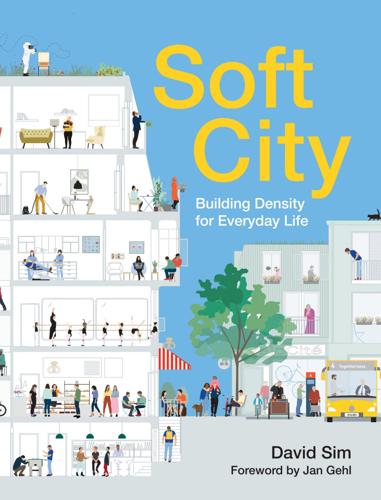
Soft City: Building Density for Everyday Life
by
David Sim
Published 19 Aug 2019
The many changes over time can be seen in the architectural styles, which are extremely varied, ranging from the traditional vernacular, classical, 1930s functionalist, and 1970s social modern. The neighboring block to the south (indicated in green on the diagram on p.26) is perhaps even more interesting, as the spaces between the buildings have been partially redeveloped in an urban renewal program to create higher-quality outdoor spaces. The variation in styles, ages, and types of buildings gives the streets plenty of character. There are larger apartment buildings alongside small townhouses, older construction and newer infill. Each building has its own particularities, which helps to give the streets a distinct neighborhood identity.
…
Connected Outdoor Greenspace The traditional Copenhagen block is made up of multiple buildings fronting the street, each with its own back courtyard. Historically, the courtyards were hard surfaces with smaller outbuildings—toilets, wash houses, storerooms, workshops—rather than green spaces and gardens. As part of an urban renewal project on this particular block, the courtyards have cleared of walls and most outbuildings, while new soft landscaping has been added. It is an early example of the courtyard greening program that the City of Copenhagen established to improve inner-city living. This program is key in upgrading the existing building stock in Copenhagen. 01.
…
Courtyard Entrances There are multiple entrances to the block’s inner world, with private back doors or shared staircase entrances as well as gated passageways between buildings. Usually the common courtyard is not locked and can be accessed by the public. However, the very clear spatial order reflects a sense of social control, which should be respected by any guests. Distinct Layers of Outdoor Space The urban renewal program added small, completely private spaces to the inner courtyard for the ground-floor apartments. There are two other distinct layers of outdoor space in the inner courtyard. One comprises the old, individual courtyards closest to the buildings, which are partly preserved but now somewhat greener.
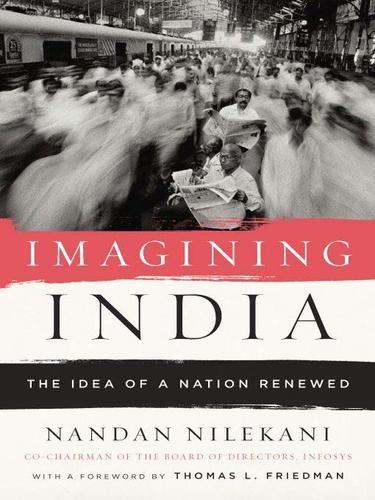
Imagining India
by
Nandan Nilekani
Published 25 Nov 2008
And finally, every Indian, whether he is looking for a job or a college, or is a customer, now wants to tap opportunities across the entire country. My own sense of how these ideas have come into the mainstream has evolved since the time I was heading the Bangalore Agenda Task Force (BATF), and working on the reforms we needed for the city’s urban renewal. My early approach was a technocratic one, where I mainly focused on “getting things done.” It took me a few years and some frustrated initiatives to realize that our cities were being held back by political and financial weaknesses, not just weaknesses in operational issues. I made some progress, but in 1999, rejuvenating our cities was still seen as an elite task and the popular take was that India’s “true reformers” worked in the rural areas.
…
A decade later, however, urban reform has become the policy bandwagon everybody is clambering on, and every progressive minister across the country wants a piece of the urban development pie. As these various ideas become priorities for our voters, we are seeing large investments earmarked for them. Primary education is getting an unprecedented amount of money under new initiatives. The Jawaharlal Nehru National Urban Renewal Mission ( JNNURM) is the first major thrust to revitalize Indian cities with significant money and a reform agenda, and the eleventh five-year plan (2007-12) has earmarked $500 billion for India’s infrastructure. And the buoyancy of our direct-tax revenues has enabled the government to pave the way toward a unified, single market.
…
Improving management to garner more revenues becomes especially critical now as an old tax, the octroi, is being abolished in nearly all states. Local bodies are now searching for new alternatives in their financing, such as municipal bonds. These have become especially important in the light of the Jawaharlal Nehru National Urban Renewal Mission ( JNNURM), which requires investments from municipal bodies of well more than Rs 300 billion in the next seven years, up to half of which can be market borrowings. This is compelling municipal corporations across cities to obtain credit ratings from agencies such as Credit Rating Information Services of India Ltd (CRISIL), ICRA and Credit Analysis and Research Ltd (CARE).bs A change in attitudes “Our cities have gained new political relevance with our economic growth,” Ramesh says.

Gang Leader for a Day: A Rogue Sociologist Takes to the Streets
by
Sudhir Venkatesh
Published 13 Aug 2010
“The projects will be here forever,” was the phrase I heard from one tenant after another. Only the most elderly tenants seemed to believe that demolition could be a reality. They had already seen the government use urban renewal— or, in their words, “Negro removal”—to move hundreds of thousandsof black Chicagoans, replacing their homes and businesses with highways, sports stadiums, universities—and, of course, huge tracts of public housing. From the outset urban renewal held the seeds of its own failure. White political leaders blocked the construction of housing for blacks in the more desirable white neighborhoods. And even though blighted low-rise buildings in the ghetto were replaced with high-rises like the Robert Taylor Homes, the quality of the housing stock wasn’t much better.
…
And even though blighted low-rise buildings in the ghetto were replaced with high-rises like the Robert Taylor Homes, the quality of the housing stock wasn’t much better. Things might have been different if housing authorities around the country were given the necessary funds to keep up maintenance on these new buildings. But the buildings that had once been the hope of urban renewal were already, a short forty years later, ready for demolition again. A mid all this uncertainty, I finally heard from J.T. He called with the news that his promotion was official. He asked if I still wanted to join him in meetings with some citywide BK leaders. “They’re actually interested in talking with you,” he said, surprise in his voice.
…
San Diego, University of California at (UC San Diego) Sarina Sears segregation Serena shorties Shorty-Lee (gang member) Shuggie (J.T.’s daughter) social workers sociologists on gangs on poverty quantitative sociology invention of Sonny (pimp) South Illinois South Shore Southwest Side squatters at back-to-school party cars fixed by fees paid by as informants in stairwells Taneesha incident and see also Brass -Note State Street Stay-Together Gang Stones Stony Island Avenue strays Taneesha Tanya taxes and fees on prostitutes on squatters Taylor, Robert T-Bone (gang member) as accounting major arrest and death of at Catrina’s funeral drive-by shooters beaten up by gang ledgers of pay of promotion of on recruitment drive at S.V.’s meeting Tenant Patrol Tillman, Jerry Timothy (pimp) Torrance, John Henry, see J.T. (John Henry Torrance) truck drivers turf wars Turner, Ms. underground economy (outlaw capitalism) unemployment United Center urban renewal Vaux, Calvert Venkatesh, Sudhir (author) Autry and at basketball tournament party Billy-Otis dispute and Black Kings’ ledgers given to at Black Kings’ regional meetings Boys & Girls Club grant proposal written by at Boys & Girls Club meeting car break-in at Carla’s birthday party at Catrina’s funeral CIA rumor about Clarisse helped by on clothing drive as “director of communications,” dissertation of at drive-by shooting economics papers on Black Kings by fellowships received by former Robert Taylor tenants and as gang leader as hustler Johnny’s meeting with at J.T.
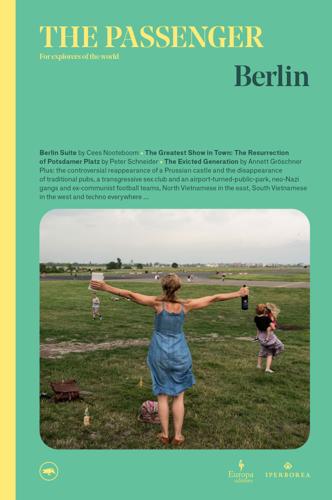
The Passenger: Berlin
by
The Passenger
Published 8 Jun 2021
During one panel discussion, the former managing director of a company that carries out cautious urban renewal asserted that after the fall of the Wall there had been no long-established population in Prenzlauer Berg which required protection from displacement; it had become a transit area for young people, and those with long-term housing needs were by that time living in areas with estates of prefabs. In translation this means that the priority task of socially acceptable urban renewal – that is, to protect low-income tenants from being displaced – had not even been deemed necessary in Prenzlauer Berg. With the help of a false assertion a failure of social urban renewal could be spun as a success: look how lovely it all looks again where the communists once allowed everything to fall into ruin.
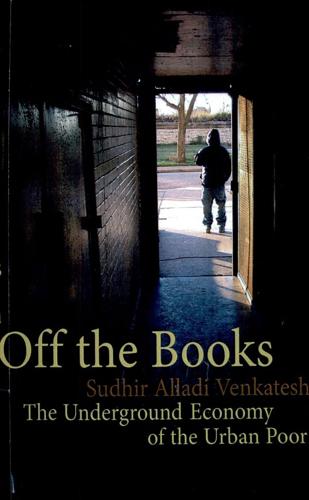
Off the Books
by
Sudhir Alladi Venkatesh
From the late nineteenth century onward, Chicago's black communities (and those in other major industrialized cities) were the repositories for public indignation and, eventually, some type of social reform. The clarion call of distress over a population living outside the social mainstream occurred every two or three decades. Depending on the political climate (conservative or progressive), policies like mass arrest and incarceration, urban renewal and housing construction, philanthropic investment and community development, would follow to integrate the disenfranchised. America's concern in the nineties for the dispossessed black inner city, seeing in it a form of existence that must be razed and then restored, is really part of a long history of inveighing against and expressing moral outrage at how the minority poor live.
…
Nationally, TIFs have generally had minimal benefits for poor, working-class, and middle-class minorities, whether they are residents or aspiring businesspersons.3 Moreover, cities without TIF-style economic development fare better in terms of active commercial development.4 In Chicago, minority and poor businesspeople have been shut out of development when their area is subject to TIF initiatives. Typically, the TIF designation ends up as a form of urban renewal in which the government exercises domain powers to amass large parcels of land and turns them over to private corporate entities that have no previous relationship to the area and that are not always minority-run. Where entry into inner-city markets has been successful, city governments have not cultivated local entrepreneurship but have instead recruited outsiders—typically upper-income professionals with established credit histories and a track record of business development—to take advantage of cheap rents and low-wage labor pools in the ghetto.
…
They receive far less attention than their counterparts who have left the ghetto and formed successful businesses elsewhere. And so they should remind us that the inner city's entrepreneurial capacity is not restricted to its potential as a space of development for outside parties—which is typically the view of civic and government leaders who support urban renewal and gentrification. Perhaps the most illuminating study of work in American ghettos was written nearly a half century ago, in the sixties. In Tally's Corner, Eliot Liebow studied inner-city streetcorner men, not small business owners, but his writings are still instructive. Unlike the middle-class bureaucrat, made popular in William H.
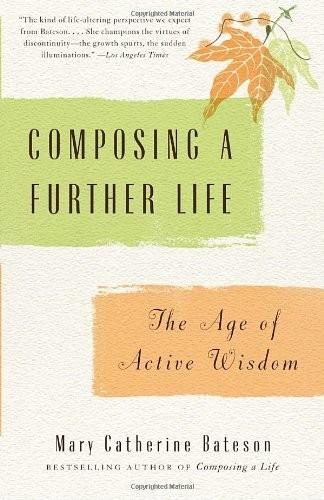
Composing a Further Life: The Age of Active Wisdom
by
Mary Catherine Bateson
Published 13 Sep 2010
I went to college where my parents had gone, and then I went straight to New York. Because I thought not only ‘big city,’ exciting, et cetera, but ‘Ooh, wouldn’t it be good to get away from all this?’ ” Ruth majored in psychology and studied social work in graduate school. While she was away, urban renewal came to Baton Rouge, and her grandparents’ home fell victim to development. “When they were in their early seventies and I was nineteen,” she said, “their little neighborhood and their house all fell to eminent domain. They were retired by that time. My grandfather had had a heart condition for a very long time, but he was functioning pretty well.
…
So I meet regularly with the Lutheran man and the United Church of Christ man and the Methodist man, and a new Roman Catholic man. So this group of inner-city executives of the churches decided that what was needed was a national center to retrain clergy—not seminarians but those who were already sitting in various downtown places that were now surrounded by alienated brown people, while urban renewal was doing its stuff, often making things worse. “Don Benedict, who was running the Chicago City Missionary Society, which was a United Church of Christ operation, said, ‘I think Chicago is the right place to do it because it’s a very, very black-white city, and a lot of churches have national offices in Chicago’ (they don’t now, but they did then), ‘and I have a place for it to be, right by the First Congregational Church on the West Side, and you can have that free.’
…
The ritual life of a cathedral necessarily evokes attention to performance, which had also been an important part of his growing up, but I asked how that all flowed together with architecture and design. “Well, it doesn’t—it really doesn’t flow,” he said, “but it explodes when I come to the cathedral, because that is the opportunity to be architect, complete the cathedral, make the cathedral the center of the city, the center of urban renewal”—he circled his hand—“and it’s also there that I recognize that the city is not all Episcopalian and not all Christian. This notion of a cathedral—think of those windows—it’s a cosmic notion. It’s to hold an entire people.… My whole interfaith thing starts there—it wasn’t part of Chicago at all.”
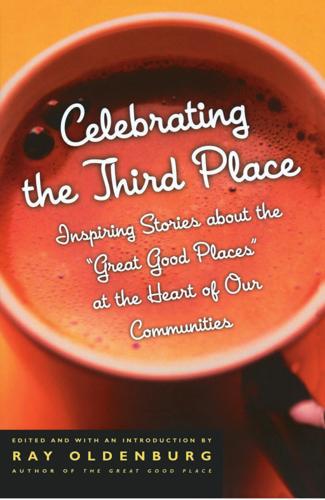
Celebrating the Third Place: Inspiring Stories About the Great Good Places at the Heart of Our Communities
by
Ray Oldenburg
Published 30 Nov 2001
Young Jim Maturani and Michael DeFazio, who opened on North Street, have since been joined by many others who bid welcome to those “on the town” or just seeking respite from daily routines. This medium-sized city hosts a public life that larger centers may well envy. Harrisburg’s architecture confirms New Urbanist thinking and it was protected in the same manner as the French Quarter in New Orleans. Economic stagnation discouraged corporate expansionism and urban renewal, thus preserving an urban landscape built to human scale and made interesting by a fine-grained pattern of mixed land use. Its seventeen-square-mile downtown remains walkable and charming and all the more interesting lately because there are people around in numbers not seen in years. Harrisburg illustrates the dual need for an inviting physical setting and the efforts of people who know how to implement hospitality.
…
Growth machines promoted the razing of inner-city neighborhoods and dislocation of minorities in the name of “slum clearance” and their replacement with suburban-style developments that catered to middle-class whites. We agree with Ray Oldenburg’s observation, “Segregation, isolation, compartmentalization, and sterilization seem to be the guiding principles of urban growth and urban renewal.” Eventually, federal funding to the old industrial cities began to dry up and local leaders were forced to come up with new growth strategies. In 1973 a group of private real estate developers came up with a plan called Chicago 21 that was endorsed by Mayor Daley. The plan aimed to use a combination of public and private sector money to expand the city’s downtown central district.
…
The university, with its immense financial resources (annual budget of a billion dollars), PR staff, patronage army, lobbying apparatus, alumni networks, and mayoral backing, aborted our every effort. We were part-time volunteers and they had full-time staff. With over a thousand college faculty and prominent departments in urban planning, social work, anthropology, sociology, and architecture, only three of the faculty gave us any assistance or spoke out against UIC’s old-fashioned, urban renewal people removal policy. UIC faculty’s politically correct liberal rhetoric turned out to be just empty posturing. Most of the faculty had never even visited Maxwell Street. They would drive past on their way someplace else and see a multitude of poor, minority, mostly male street vendors and shoppers and stereotype them as criminals.
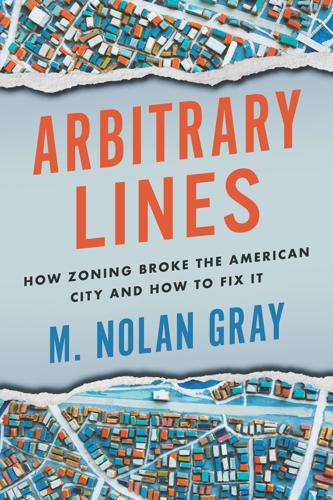
Arbitrary Lines: How Zoning Broke the American City and How to Fix It
by
M. Nolan Gray
Published 20 Jun 2022
As urban planning professor Charles Connerly recounts in his sweeping history of the planning of Birmingham, zoning was guided by comprehensive plans explicit in identifying White areas and Black areas, with public service provision focused on the former and denied to the latter.7 Indeed, official planning documents in cities like Austin and Kansas City continued to refer to “Black neighborhoods” and “White neighborhoods” as late as the 1980s.8 Public housing, which was segregated until 1954, would strengthen the patterns of segregation instituted by zoning, as would federal highway construction, which was often used to buffer White areas from Black areas. Where Black neighborhoods managed to survive against these extreme headwinds, urban renewal—or as James Baldwin characterized it, “negro removal”—would erase poor neighborhoods altogether, with Black neighborhoods in particular in the crosshairs. As African Americans moved north and west en masse as part of the Great Migration that surrounded the First and Second World Wars, the practice of strictly downzoning affluent White residential areas while relegating affordable housing to the worst parts of town would also spread, stripping the poor of their right to move to opportunity.
…
CHAPTER 6 Sprawl by Design On a warm late-summer evening in Queens, roughly a hundred locals had shown up for the monthly meeting of their neighborhood community board. Hosted in a local community center, the air was stuffy and the mood almost sleepy. As a city planner, it was my job to represent the city at these community board hearings, which had been tasked with reviewing land-use applications since 1975. On the heels of urban renewal, the city understandably opted to let locals have a say in developments that required extra zoning approvals. The snag was that as the zoning became tighter, more and more run-of-the-mill development projects would get swept up in the increasingly raucous public review process. The project at that night’s meeting was one such vanilla project.
…
Louis, 75, 83 standard building permits, 43 Standard Zoning Enabling Act (SZEA), 27–28 stormwater, 161, 189, 191 strip clubs and adult-oriented businesses, 137, 156 Superfund, 189 Surface Transportation Block Grant, 121 sustainability, 105, 164, 173, 182, 184 Sutherland, George, 29, 87 SZEA (Standard Zoning Enabling Act). see Standard Zoning Enabling Act (SZEA) technological advancement and urban industrialization, 17–18 text amendments, 44–46 The Equitable Building, 21–22 The Suburbs, 93 Thoreau, Henry David, 95 tiny houses, 116 trailers. see manufactured housing transportation in cities, 69 city expansion hampered by lack of, 14 as densities rise, options increase for methods of, 100 and effect of suppressing density, 99–103 and growth of city transit systems, 17 invention of electric streetcar and new systems of, 19 sprawl supported by improvements in, 94 universal car ownership, 5, 96 zoning and federal funding for, 13 zoning thwarts transit where it already exists, 101 triplexes, 37, 112, 113, 184 Trounstine, Jessica, 87, 88 Trump administration, 52 2020 Census, 3 Two zoning maps covering the exact same territory of New York City in 1961 and 2021 illustrating the exponential increase in complexity of zoning maps, 45 Ultimate zoned landscape: Levittown, Pennsylvania, circa 1959, 97 United Kingdom, 122 United States Department of Agriculture, 29 upzoning, 44 urban ideal, 13, 14, 27, 30 urban renewal, 85 U.S. Energy Information Administration, 94 U.S. Supreme Court, 13, 28–29, 83–84, 189 use and density rules, 43–44, 102–103 use designations, 37–39, 47, 56 variances, 43, 61 Vaux, Calvert, 95 Veiller, Lawrence, 27 Vermont, 100, 119 wages, 73–76 Wagon Wheel bar, 72 Washington, DC, 59, 75, 99–100, 102 Westenhaver, David C., 28 Whitten, Robert, 84 World War I, 85 World War II, 85, 87 Wright, Will, 11 YIMBY (Yes In My Backyard), 51–52, 109 zoning annual loss of US wages caused by, 76 attempts to address land-use compatibility, 136–139 code, 34 defined, 34 districts, 34 as environmental disaster, 93, 96 land use before, 14–15 maps, 34, 35–37, 44 and mismanagement of growth, 140–142 moves from explicitly racial to economic, 83–84 ordinances, 37 origins of, 26, 34–35 process, 34–35 restrictions, 3 rules and parking spaces per resident, 102–103 rules that drive racial and economic segregation, 88–89 steelman argument for, 129–131 text, 37, 44 thwarts transit where it already exists, 101 as tool of racial and economic exclusion, 88–90 two positive things achieved by, 131–134 untethered from city planning, 128 Zoning map for San Francisco, 1921, 36 Zoning Primer, 28 zoning reform by abolishing minimum parking requirements, 114–115 in actual practice, 159–160 by adopting statewide ADU ordinances, 118–119 by adoption of any new zoning code conditioned on supermajority support in even-year public referendum, 158–160 and advantages of Japanese zoning over American, 122–124 in the air, 5–7, 110 by allowing neighborhoods with extreme preference for zoning-like regulations to voluntarily opt in to stricter rules, 159 bill passed preempting power of local government to impose costly design and building materials standards, 119 by decriminalizing inherently affordable housing typologies, 116–117 by eliminating or lowering minimum lot size and floor area regulations, 115–116 end goal must be to abolish zoning, 129–131 by ending single-family zoning, 111–113 by ending zoning discrimination against manufactured housing, 117 and land-use regulation after zoning, 155–158 by narrowly and effectively regulating specific uses and nuisances that upset people, 159 by removing barriers to single-room occupancies (SROs), 117 ultimately in hands of state government rather than local, 118 using form-based codes, 46–47 using Houston as test case for non-zoning, 143 Zurich, Switzerland, 67 About the Author M.

The Color of Money: Black Banks and the Racial Wealth Gap
by
Mehrsa Baradaran
Published 14 Sep 2017
Black poverty, having been created by economic exclusion and segregation, was distinct from white poverty. The urban ghettos were zones with fewer public resources such as quality schools, roads, hospitals, universities, and infrastructure. In fact, even the urban renewal programs that upgraded and revived America’s cities in the 1960s did so at the expense of the black population. James Baldwin referred to “urban renewal” programs as “negro removal,” for the effect was that highways and roads built through ghettos pushed and packed black residents into increasingly overcrowded and under-resourced neighborhoods.25 The segregated ghetto contained too little capital, and its main export, labor, was struggling to find work as industries abandoned America’s cities for the less costly suburbs before eventually moving offshore.26 These trends were self-reinforcing.
…
The White House, “Remarks by President Trump in African American History Month Listening Session," February 1, 2016, https://www.whitehouse.gov/the -press-office/2017/02/01/remarks-president-trump-african-american-history -month-listening-session. 8. Tim Hains, “Trump Proposes ‘New Deal for Black America’ in Charlotte," Real-Clear Politics, October 26, 2016. 9. Donald J. Trump, “Donald J. Trump’s New Deal for Black America," October 31, 2016, https://www.donaldjtrump.com/press-releases/donald-j.-trump -announces-a-plan-for-urban-renewal. 10. David Leonhardt, “In Climbing Income Ladder, Location Matters," New York Times, July 22, 2013. 11. Jeff Chang, We Gon’ Be Alright: Notes on Race and Resegregation (New York: Macmillan, 2016), introduction and chap. 3. 12. Median household income was $37,000, which was $10,000 less than the rest of the state.
…
Jr., 172-173 American Dilemma, 97 “American Dream, The,” 140-141 Anderson, Charles H., 76, 77 Antidiscrimination laws, 131-132, 210-211 Anti-Semitism, 130 Arendt, Hannah, 36-37 Assets, as vulnerability of black banks, 89-93 Atwater, Lee, 212, 218 Backing Black Business, 276-277 Baldwin, James: on ghettos, 4; on Reconstruction, 21; on black leaders, 46; on treatment of blacks during WWII, 130; on urban renewal programs, 141; on crime, 160, 217; on impact of racism, 284 Baltimore, Maryland, 249 #BankBlack Movement, 276 Banking and banks: community, 4, 123, 124, 127; Hamilton on, 4, 13, 14; lost faith in, 31-32; cooperative, 35; affiliated, 40-44; discrimination in hiring and lending, 194-196, 332n145; change in nature of, 239-242; regulated and unregulated systems in, 260; tax credits for, 266; bailout for, 268-269, 270, 271-273, 352n152.
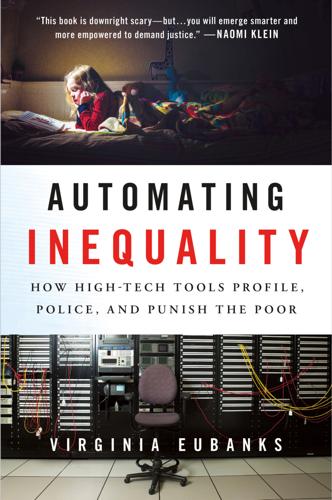
Automating Inequality
by
Virginia Eubanks
Shortly before voters committed to providing new resources to shelter the unhoused, the city council rewrote a municipal ordinance to reauthorize the kind of aggressive sweeps of tent encampments that were common before the Jones and Lavan rulings. Like the public housing that was supposed to replace the boardinghouses and SRO hotels demolished during urban renewal in the 1950s, new affordable housing development may founder in the face of active obstruction by professional middle-class and wealthy Angelenos. The problem is not that the city lacks adequate data on what kind of housing is needed to address the homelessness problem. Rather, poor and working-class people and their allies may not be able to overcome explicit political resistance from organized elites.
…
Ford, Mabel Ford, Shawntee foster care fraud detection and algorithms and Indiana technologies and universal basic income (UBI) Freeland, Mary Galton, Francis Gambrill, Eileen “gaming” the system Gandy, Oscar Gangadharan, Seeta Peña Garcetti, Eric Garza, Alicia gentrification. See also urban renewal Gilbert, Fred Gilens, Martin Gillespie, Sarah Goldberg v. Kelly Gordon, Pat Gray, Freddie Great Depression Great Railroad Strike of 1877 Great Recession of 2007 Gregory, Justin E. Gresham, Jane Porter Grzyb, Patrick Gustafson, Kaaryn Hankins, Tanya harm reduction Hawkins, Amanda Green health care and child neglect and mental health and passbook system and poorhouses as a right and surveys health-care fraud health-care system and employment and Indiana providers and employees health insurance and Indiana start dates for See also Medicaid Higgins, Will Hippocratic oath for technology and administration Holden, Ollice Holland, Gale Holly, Chris Holmes, Oliver Wendell Homeless Management Information System (HMIS) homelessness and criminalization of poverty and encampments Homeless Outreach Program Integrated Care System (HOPICS) Los Angeles Homeless Services Authority (LAHSA) Measure H (sales tax increase) Measure HHH (Homelessness Reduction and Prevention, Housing and Facilities Bond) “no wrong door” approach shelters and storage units See also housing Honkala, Cheri Hoover, J.
…
See also food stamps surveillance Talley, Monique task-based case management system Taylor, Linda “technology poor” Temporary Assistance to Needy Families (TANF) Thomas, George Tillmon, Johnnie Tolley, Anne Tometi, Opal “Tough on Crime” laws Trattner, Walter triage system Troy, New York Trump, Donald truth commissions Tyler, Dennis Uber United States Interagency Council on Homelessness United Way Universal Basic Income (UBI) Universal Declaration of Human Rights urban renewal. See also gentrification Vaithianathan, Rhema Vietnam War Villaraigosa, Antonio Volponi, Catherine Voluntary Community Assistance Network (V-CAN) Vulnerability Index-Service Prioritization Decision Assistance Tool (VI-SPDAT) Wagner, David Walters, Paul M. Ware, Nathanial Welch, Peggy welfare and public assistance benefits as personal property and due process eligibility modernization eligibility rules for and “mop-up” programs and privatization racial discrimination in sanctions social insurance as distinct from public assistance and voluntary resettlement plan “welfare queen” stereotype See also individual programs welfare diversion welfare rights movement and Adequate Income Act backlash against Mothers for Adequate Welfare National Welfare Rights Organization (NWRO) success of West, Terry White, Magner white supremacy Wilde, Dylan Willis, Tom Wilmot, William Wong, Julia Carrie Workflow Management System (WFMS) Works Progress Administration (WPA) World Courts of Women World War II Xerox Yates, John Van Ness Yellow Pages test Young, Omega Zimmerman, Roger Zuckerberg, Mark MORE PRAISE FOR AUTOMATING INEQUALITY “In this remarkable chronicle of ‘how the other half lives’ in the age of automation, Eubanks uncovers a new digital divide—a totalizing web of surveillance ensnaring our most marginalized communities.

Heaven Is a Place on Earth: Searching for an American Utopia
by
Adrian Shirk
Published 15 Mar 2022
I understood this to some extent, but the intensity of the irony was lost on me. Still, when I think about that project now I can see more clearly why I found those histories so compelling, in the way that looking back at a body of work reveals over and over again that you have always only been thinking about the same thing: the whole project of urban renewal, which is what the Brooklyn–Queens Expressway came out of, was a kind of fascist thought, a purified, sanitized vision of the future—masquerading as a sincerely hoped for utopian infrastructure where human life could be engineered into order by a strongman with a bird’s-eye view. Fascist visions of paradise erase texture, layer, history, so that we exist only in a simple unified present.
…
Woodlawn was chock-full of current and former IRA members and other people involved in the Irish freedom movement, who had been living in the multiracial Northwest Bronx for generations, and who had opened bars like the Jolly Tinker where the angel-woman told Sweeney about New Day, many of whom eventually became racist cops. Fascist dreams and utopian dreams are not infrequently indistinguishable at first, but their differences are much easier to catch when those dreams are playing out on the public stages of our cities. The spiritual fight against something like urban renewal or gentrification (or other forms of fascism masquerading as progress) is a fight against forgetting the difference. These days New York City seems to be living out the dreams of the very rich and very powerful—like a gated community that you earn your way into, or struggle bitterly to survive on the margins of, as though it has always been this way, and only ever will be.
…
Each block, he says, becomes an impenetrable “urban unit” which is “immune to totalitarian invasion.” The block is thus the street design of le peuple, and the city changes only through a “mosaic of episodes.” In this way, New York City finds a way to evolve without conquest, even under conditions that mimic conquest—like urban renewal or parking lots. The buildings shift the way the blocks do: mosaics are lateral—they do not represent forward or backward movement, but rather a whole world on a single surface which you must be moved into. According to the 1939 New York Times article “It’s Not All Swing in Harlem,” at Father Divine’s New York City Peace Mission Movement “heavens”—including the banquets at Rockland Palace—you could get “food and lodging to thousands more cheaply than any other place in Harlem.

City on the Verge
by
Mark Pendergrast
Published 5 May 2017
Designed by Jack Lenzo Library of Congress Cataloging-in-Publication Data Names: Pendergrast, Mark, author. Title: City on the verge : Atlanta and the fight for America’s urban future / Mark Pendergrast. Description: New York : Basic Books, [2017] | Includes index. Identifiers: LCCN 2016039907| ISBN 9780465054732 (hardcover) | ISBN 9780465094981 (electronic) Subjects: LCSH: Urban renewal—Georgia—Atlanta. | Community development—Georgia—Atlanta. | City planning—Georgia—Atlanta. |Urban policy—Georgia—Atlanta. | Social stratification—Georgia—Atlanta. Classification: LCC HT177.A77 P46 2017 | DDC 307.3/41609758231—dc23 LC record available at https://lccn.loc.gov/2016039907 E3-20170406-JV-NF CONTENTS Cover Title Page Copyright Dedication INTRODUCTION Atlanta’s Livable Future PART I: BUILDING THE BELTLINE PROLOGUE Walking the BeltLine CHAPTER 1 Ryan Gravel’s Epiphany CHAPTER 2 City on the Move CHAPTER 3 First Bumps Along the BeltLine CHAPTER 4 Two Atlantas: The Racial Divide CHAPTER 5 Learning to Fly While Building an Airplane CHAPTER 6 Mansions and Cat Holes CHAPTER 7 A Stake in the Ground CHAPTER 8 The Public’s Health CHAPTER 9 Impossible but Inevitable PART II: NEIGHBORS CHAPTER 10 East BeltLine: Chic, Walkable Neighborhoods CHAPTER 11 South BeltLine: A Slow Dance to Better Communities CHAPTER 12 West BeltLine: Trouble and Promise CHAPTER 13 North BeltLine: Easy Streets CHAPTER 14 Outside and Inside the BeltLine CHAPTER 15 The Future of Atlanta Epilogue: Georgia on My Mind Acknowledgments About the Author Also by Mark Pendergrast More Advance Praise for City on the Verge Glossary Photo Credits Note on Sources Index To the memory of: Willie Mae Pughsley (c. 1908–1975), otherwise known as Nee by the Pendergrast family and John Brittain (Britt) Pendergrast Jr. (1917–2016), my remarkable father, the epitome of a Southern gentleman—kind, wise, smart, principled, humble, loving, and funny This book is also dedicated to my equally remarkable mother, Nan Schwab Pendergrast (1920–), compassionate, ever-curious nature-lover and environmentalist, human rights activist, and still my writing mentor and biggest supporter These two photos—of traffic on I-75/85 and bikers on the BeltLine—represent two sides of Atlanta.
…
INTRODUCTION ATLANTA’S LIVABLE FUTURE Atlanta is on the brink of either tremendous rebirth or inexorable decline. At the center of a perfect storm of failed American urban policies, Atlanta has the highest income inequality, and its metro area features the longest commutes, in the country; attempts at twentieth-century urban renewal blasted highways through the city center and destroyed neighborhoods; suburban sprawl impaired the environment even as it eroded the urban tax base and exacerbated a long history of racial injustice. Although many cities across America suffer these problems, the issues have collided nowhere so conspicuously as in Atlanta.
…
To kick off the event, New Orleans transplant Chantelle Rytter proposed a lantern parade, drawing five hundred people with homemade lanterns onto the muddy, weedy trail at night in a glorious, ghostly procession. “Atlanta needed to believe that the creepy place behind the dumpsters would become our country’s best urban renewal project,” she recalled. The BeltLine Lantern Parade would become an annual tradition, with thousands more participating each year. Art on the BeltLine was a hit, luring people onto the trails, with young artists vying to win space in each year’s exhibits. By the third year the program received nearly two hundred submissions from graffiti artists, sculptors, painters, performers, and dancers.
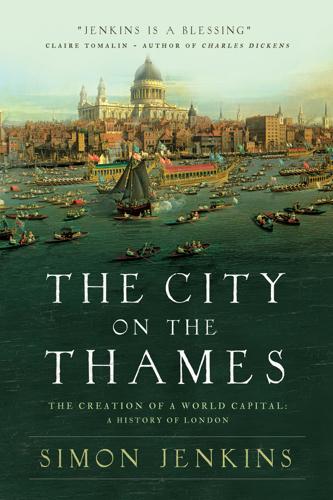
The City on the Thames
by
Simon Jenkins
Published 31 Aug 2020
Any property not reoccupied within five years would be forfeited to the town. Policy respected private property, yet the City should be helped back to life, regulated and taxed to a wider public good. The Stuart government embraced neighbourhood conservation, building standards, property inspection, jury adjudication and compensation. In my judgement London’s urban renewal was never so carefully considered as in the few months after the Great Fire. A committee of six was set up to oversee the rebuilding, with Wren as a member, though he was angry at the ‘obstinate averseness of a great part of the citizens to alter their old properties’, a cry of London’s architects down the ages.
…
The Duke of Devonshire sold his mansion by William Kent in Piccadilly, with its garden running north to Robert Adam’s Lansdowne House on Berkeley Square. Only the facade of the latter survives. Demolished in 1938 was the Duke of Norfolk’s gilded mansion on the south-east corner of St James’s Square, its music room salvaged for the V&A museum. Paris at the time was fortunate that its equivalent neighbourhood, Le Marais, was not in the path of urban renewal. Its degeneration into slumdom preserved it long enough to see its later rebirth. Outside the St James’s enclave, scarcely any of London’s eighteenth-century mansions survived. Hermione Hobhouse’s Lost London makes miserable reading. Of the great Piccadilly houses, only Apsley and the old In and Out club remain in anything like their original form.
…
It is hard to imagine what this area will be like in fifty years’ time, should foreign investors cash in and the market collapse. There must be a risk of Nine Elms mirroring the Victorian Ladbroke estate – and passing through a phase of collapsing values and ruination. * * * A more interventionist approach to urban renewal was attempted north of Stratford in east London in the wake of the Olympics extravaganza. The site was handicapped by the government’s refusal to demolish the stadium, too big for most team games and even then in only intermittent use. It was more than the government could bear to admit that £700 million had been wasted on two weeks of entertainment.
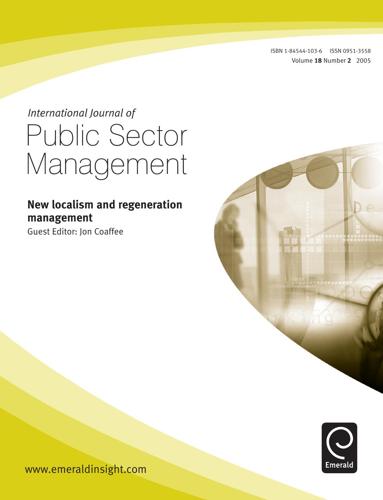
New Localism and Regeneration Management
by
Jon Coaffee
Published 1 Mar 2005
In short, the argument is for a far more nuanced, “pragmatic localism” where “models” of change are replaced by “ingredients”, “menus” and “frameworks” of alternative methods of service delivery and community capacity building, which are selected according to local circumstances of place and not centrality prescribed targets. Notes 1. Often referred to in North America as urban renewal. 2. This was connected to the introduction of the single regeneration budget (SRB). The SRB was a re-packaging and streamlining of government grants introduced in 1994. The aim was to make it easier for local authorities to apply for funds. 3. For a critique of UK regeneration policy under the Conservative government (1979-1997), see Thornley (1993). 4.
…
The criteria define the scope of the evaluation and, as a consequence, “rule in” or “rule out” certain questions and methodologies. In the UK there has been a concern in the recent past to examine the extent to which regeneration initiatives have added to the capacity of local economies or have increased the potential for urban renewal through physical infrastructure developments. In some cases this has resulted in quantitative studies that seek to explore the relationship between such investments and improvements in economic outputs. Whilst these approaches have some value they do not provide a “holistic” picture of what is happening within particular neighbourhoods nor do they capture the differential experiences of those living and working in their communities.
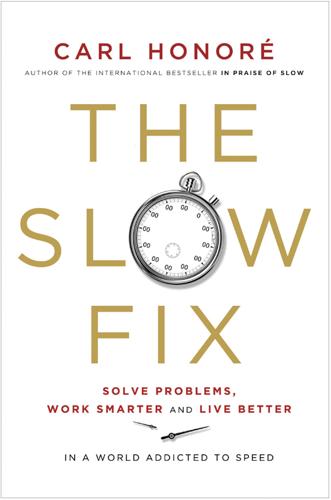
The Slow Fix: Solve Problems, Work Smarter, and Live Better in a World Addicted to Speed
by
Carl Honore
Published 29 Jan 2013
His character determines the character of the organization. Ralph Waldo Emerson Rush hour in Bogotá is not what it used to be. At least not for people like Manuel Ortega. These days, the 42-year-old banker commutes from the suburbs on a bus that has helped turn the Colombian capital into a darling of the green movement and a case study in urban renewal. The TransMilenio is no ordinary transport network. In the middle of its widest boulevards, Bogotá has carved out nine dedicated bus lanes that crisscross the city like an overground rail network. Each lane is set apart from the remaining road space by low walls, allowing fleets of red articulated buses to glide along unimpeded by ordinary traffic.
…
“Car-owners were the ones who held the power in town, they were the rich and no one had ever dared touch them before. They felt they had a divine right to drive and park wherever they wanted. They looked down on buses as the transport for the poor. It was a war to the death.” Peñalosa paid a steep price for that. Just over a year after he took office, opposition to his plans for urban renewal grew so virulent that he and his wife sent their then 12-year-old daughter away to live in Toronto. “I was public enemy number one; the only person more hated than me was the head of the guerrillas,” he says. “I remember praying in the morning: ‘God, please just let me get through this day.’ I didn’t even ask for the week, the month or the year.
…
Mencken hit the nail on the head when he warned: “There is always an easy solution to every human problem – neat, plausible, and wrong.” Yet the Slow Fix does get easier with experience. What you learn forging one solution can often be applied to similar problems elsewhere. All those years studying urban renewal and shaping the transformation of Bogotá have turned Enrique Peñalosa into a globetrotting Florence Nightingale for failing cities. “I’m now like a doctor who can just look at the patient’s colour and know what he’s suffering from,” he says. “I can drive through a city and just looking out the window I can tell you what is going wrong with it and what you have to do to make it right.”

City: A Guidebook for the Urban Age
by
P. D. Smith
Published 19 Jun 2012
When it comes to urban renewal today, incremental revitalisation is the approach favoured by planners. Gentrification can also play an important, though controversial, role. Gentrification refers to the way a working-class area is gradually colonised by the middle classes. It is said to have begun in Philadelphia in the 1950s, when wealthy people moved back into the riverside area of Society Hill, restoring the once grand eighteenth-century houses. This influx of the moneyed classes is not always welcomed by the locals. One Philadelphia resident observed bitterly that ‘urban renewal means Negro removal’.86 It is, however, a process that has been part of urban life for many years.
…
‘The poor we shall have always with us, but the slum we need not have,’ wrote Jacob Riis, author of the seminal exposé of tenement life, How the Other Half Lives (1890).78 This and works such as Andrew Mearns’ The Bitter Cry of Outcast London (1883) spurred reformers to campaign for the demolition of the worst slums. The dramatic scheme of urban renewal carried out by Georges-Eugène Haussmann in Paris from 1853 had shown what could be achieved. After the First World War, slum clearance gained momentum in Britain, where some 250,000 houses were demolished and replaced with new council houses. The dilapidated four-storey tenements of Glasgow’s East End were swept away and, by the 1970s, some 100,000 residents had been rehoused.
…
Their very names evoke instant images of exclusivity and style – New York’s Waldorf Astoria, Raffles in Singapore, Lucerne’s Schweizerhof or the Adlon in Berlin. One of the largest and most glamorous hotels ever built was in France. The Grand Hôtel was a jewel in the crown of ‘Nouveau Paris’, as it was known after Baron Haussmann’s radical programme of urban renewal that began in 1853. Sited in the Place de l’Opéra, in the fashionable 9th arrondissement, it was designed by Alfred Armand, who had also worked on the impressive Grand Hôtel du Louvre (1855).145 The Grand was built in fifteen months (1861–2), with construction work continuing day and night under arc lamps.
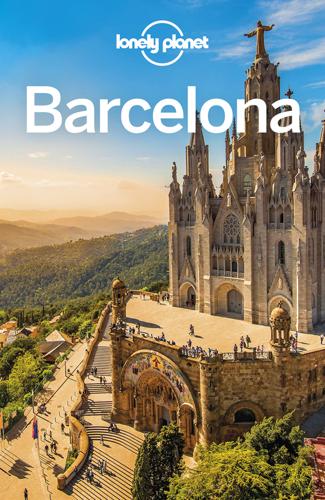
Lonely Planet Barcelona
by
Isabella Noble
and
Regis St Louis
Published 15 Nov 2022
The games spurred a burst of public works and art and brought new life to areas such as Montjuïc, where the major events were held. The once-shabby waterfront was transformed with promenades, beaches, marinas, restaurants, leisure attractions, sculpture and new housing. Urban Renewal After the turn of the millennium, Barcelona continued to invest in urban renewal, with ambitious projects such as the 22@ high-tech zone in the once-industrial El Poblenou district, the major development around new trade conference grounds between the city and the airport, and the Diagonal Mar waterfront development around the Parc del Fòrum at the northeast tip of the city.
…
TUPUNGATO/SHUTTERSTOCK © What’s New While concerns about overtourism and the issue of Catalan independence reached fever pitch in the years leading up to the COVID-19 pandemic, Barcelona – the city that gave birth to Gaudí and the ingenious creations of Modernisme – continues to break new ground, with ambitious projects bringing urban renewal. Market Makeovers Gràcia’s 1892 Mercat de l’Abaceria Central is set to be the next long-established traditional market to be glammed-up to better gel with the modern-day city. It follows the astonishing success of the Mercat de Sant Antoni restoration project in 2018. Vermouth Revival The traditional Barcelona drink of vermouth (brandy-fortified wine) has experienced a dazzling revival over the last decade.
…
In a rather thoughtful bit of recycling, British architect Lord Richard Rogers transformed the former Les Arenes bullring on Plaça d’Espanya into a singular, circular leisure complex, with shops, cinemas and more, which opened in 2011. He did so while maintaining its red-brick, 19th-century Moorish-looking facade. Perhaps its best feature is the rooftop with 360-degree views from the open-air promenade, cafes and restaurants. In the Ciutat Vella (Old City), El Raval has been the latest focal point for urban renewal. The Filmoteca de Catalunya is a hulking, rather brutalist building of concrete and glass, with sharp angles. It was designed by Catalan architect Josep Lluís Mateo, completed in 2011, and sits near the Richard Meier–designed MACBA. Facade of Las Arenas, in a former bullring | ESKYSTUDIO/SHUTTERSTOCK © Picasso, Miró & Dalí Three of Spain’s greatest 20th-century artists have deep connections to Barcelona.
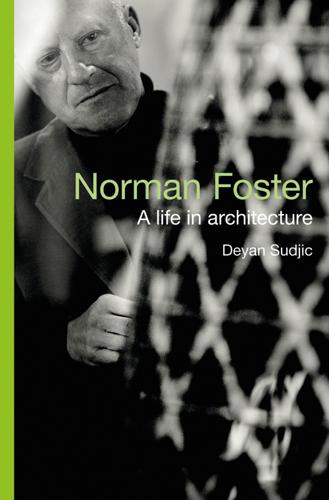
Norman Foster: A Life in Architecture
by
Deyan Sudjic
Published 1 Sep 2010
In Foster’s time in New Haven, these disastrous strategies were directed with what were no doubt the best intentions by an ambitious mayor, Richard Lee, who saw himself as the Robert Moses of the Kennedy era, and was determined to make New Haven into an international model for urban renewal. He was remarkably successful at lobbying Washington to divert federal funds to New Haven ahead of other cities. The money allowed him to turn the place into a laboratory for wholesale urban redevelopment. Lee justified calling in the bulldozers to demolish large swathes of his city by talking melodramatically about what he called the ‘shame’ brought upon New Haven by the 10,000 disease-carrying rats that he claimed his rat catchers had exterminated while cleaning up a single city block. His was a form of urban renewal that reflected what was soon to become American strategy in Vietnam.
…
Kennedy came to Yale to collect an honorary degree, and to deliver a speech that spoke of America’s obligations to the world. Foster stayed on the East Coast for a few more months. His town-planning qualification from Manchester got him a job with Pedersen and Tilney, a local firm working on urban renewal schemes in New Haven, that was his first practical experience of working beyond the scale of the individual building. Foster helped to find a way to secure Federal funding for a Pedersen and Tilney project in Massachusetts, arguing that the area had been blighted by a nearby airbase. Then he drove to San Francisco by way of Cape Canaveral in a little sports car, an MGA, to work for Anshen and Allen.
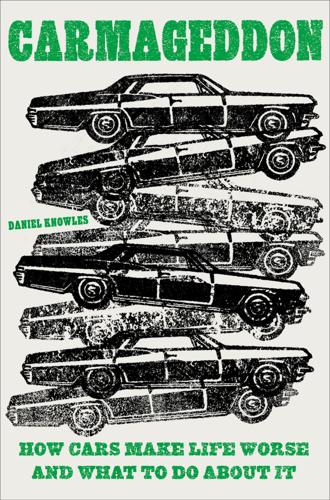
Carmageddon: How Cars Make Life Worse and What to Do About It
by
Daniel Knowles
Published 27 Mar 2023
Instead, an enormous highway, with an interchange, cuts through the neighborhood like a ribbon. Around it, most of the buildings are gone. Huge patches of gray suggest they have been replaced with parking lots. A caption helpfully explains the context. “The Hill District was a prosperous African American neighborhood that descended into crime and poverty during the urban renewal period and was further destroyed by riots following the assassination of Martin Luther King.” If what happened in Europe in the 1950s and ’60s was dramatic, what was happening in the United States was revolutionary. In America, already the richest country in the world by the mid-1920s, car ownership climbed far earlier than it did in Europe.
…
As long as the rest of Detroit’s enormous sprawl continues to struggle, which seems almost inevitable, its residents will continue to leave. Lest you think Detroit is unique, there are similar places all over America, albeit few where the decline was anywhere near as dramatic, or where the car industry itself played quite such a directly critical role. The combination of “urban renewal”—which generally meant road building—and mass suburban development hollowed out any number of neighborhoods. Weequahic, a neighborhood in Newark, New Jersey, is one I think of. It is where Philip Roth, the novelist, grew up and where his book American Pastoral is set. Architecturally, it is a lovely place.
…
The people who lived along the path of the proposed expressway would be given new, more salubrious, less overcrowded homes elsewhere. But unlike previous efforts to build expressways through the middle of American cities, this one was not going to be easy. In fact, it would prove the beginning of the end, at least temporarily, for the whole postwar moment of car-focused “urban renewal.” Moses had changed plenty of neighborhoods, but by the early 1960s, the power of his machine was waning. He had been through half a dozen different mayors, but each one had to be bent to his priorities. And in Lower Manhattan, he was about to encounter a surprising new nemesis, a middle-aged journalist and housewife originally from Scranton, Pennsylvania, named Jane Jacobs.
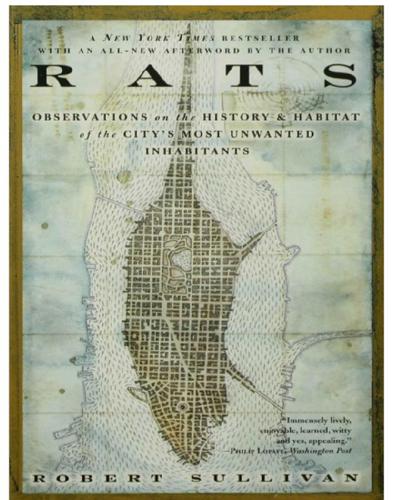
Rats
by
Robert Sullivan
Published 8 May 2009
An even less visible but more significant result of Gray's rat strike was the way in which Gray's grassroots group energized grassroots groups like it all over the city, and possibly the U.S.—one historian wrote that Gray's strike helped spawn the National Tenants' Organization, in 1969. It was the time in America when urban renewal was paving over old neighborhoods in New York in the name of progress and relocating them for the sake of highways, for sterile planned cities that were like laboratory cities, not at all wild. The chief formulator of urban renewal in New York and, because of his influence, in cities all over America was Robert Moses, the city's master builder. Most historians argue that Robert Moses and his destructive policies were finally halted by a liberal elite—groups of upper-middle-class homeowners who organized in Greenwich Village, for instance—but some people say it was the power of the tenants movement that stopped Robert Moses.
…
He appeared relaxed and was making me feel comfortable: hearing that I was from New York City, he said that his brother-in-law, a musician, had played with Tito Puente, the salsa player from the Bronx. The bodyguard drove and he was doing a good job of being quiet and formidable-looking. As we all drove out of the rat-infested neighborhood and into the beautifully renovated downtown, the mayor was going over some of his impressive credentials as an advocate for urban renewal and job creation; he talked about some of the factories he had encouraged to open up in the area; he talked about job creation plans. I was making notes when I made a remark that questioned whether crime was not somehow linked to poverty. "If you're looking for a poverty angle—well, if people really wanted to get a job they could," the mayor said, and turned around in his seat to look at me.
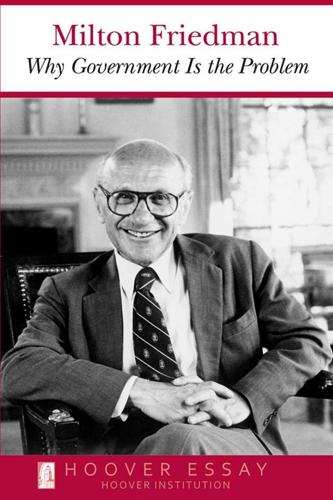
Why Government Is the Problem
by
Milton Friedman
Published 1 Feb 1993
Homelessness What produced the current wave of homelessness around the country, which is a disgrace and a scandal? Much of it was produced by government action. Rent control has contributed, though it has been even more damaging in other ways, as has the governmental decision to empty mental facilities and turn people out on the streets and urban renewal and public housing programs, which together have destroyed far more housing units than they have built and let many public housing units become breeding grounds for crime and viciousness. Family Values Government alone has not been responsible for the extraordinary collapse that has occurred in family values and the resulting explosion in the number of teenage pregnancies, illegitimate births, and one-parent families.
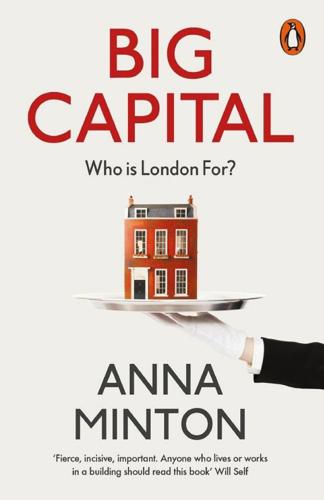
Big Capital: Who Is London For?
by
Anna Minton
Published 31 May 2017
Perraudin, Frances, ‘Government criticised for holding housing bill debate lasting until 2 am’, Guardian, 6 January 2016 36. Topple, Steve, ‘The Housing and Planning Bill reveals how little Tory MPs think of the public’, Independent, 13 January 2016 3. DEMOLITIONS 1. Lees, Loretta, ‘The urban injustices of New Labour’s “new urban renewal”: the case of the Aylesbury Estate in London’, Antipode, 2013 2. ‘Faulty Towers: Understanding the Impact of Overseas Corruption on the London Property Market’, Transparency International UK, March 2017 3. ‘Knock It Down or Do It Up? The Challenge of Estate Regeneration’, London Assembly Housing Committee, February 2015.
…
Bar-Hillel, Mira, ‘Elephant and Castle estate revamp “ripped off taxpayers” ’, Evening Standard, 6 February 2013 9. Minton, Anna, ‘Scaring the living daylights: the local lobby and the failure of democracy’, SpinWatch, 2013 10. ‘Knock It Down or Do It Up?’ 11. Lees, Loretta, Slater, Tom and Wyly, Elvin, Gentrification, Routledge, 2008 12. Lees, ‘The urban injustices of New Labour’s “urban renewal” ’ 13. Lees, Slater and Wyly, Gentrification 14. Minton, ‘Scaring the living daylights’ 15. Moore, Keith, ‘Muggers’ “paradise”, the Heygate Estate is demolished’, BBC News London, 15 April 2011 16. Aylesbury Estate Freedom of Information request dated 1 March 2016, Southwark Council 17. Campkin, Ben, Remaking London: Decline and Regeneration in Urban Culture, IB Tauris, 2013 18.
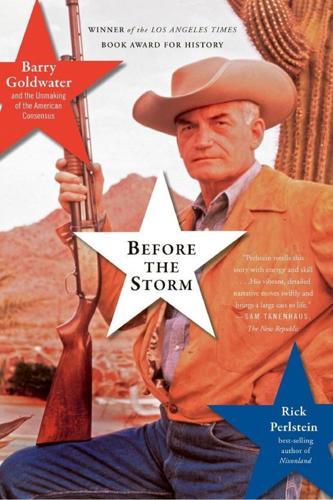
Before the Storm: Barry Goldwater and the Unmaking of the American Consensus
by
Rick Perlstein
Published 17 Mar 2009
“Communist subversion” was becoming the channel through which a hundred ordinary political grievances were now sluiced. When the Housing Act of 1961 passed Congress on June 28, increasing the funding authorized for urban renewal from $2 million to $4.5 million, and then Kennedy announced he would propose a new cabinet-level urban affairs department, the panic came in a torrent. Urban renewal meant seizure of property—from Administration critics? for secret government projects? Kent Courtney published a pamphlet, Kennedy’s Power Grab: The Department of Urban Affairs, calling Kennedy’s plan “a blueprint for the destruction of private property in the United States.”
…
Judson Morhouse, the New York GOP chairman and Nelson Rockefeller’s political right-hand man, explained to the press that the most pragmatic strategy for the Republicans to win the cities was to do what the Democrats did, only better: identify the people’s problems, then find government programs—urban renewal, health insurance, relief, and so forth—to solve them. It was the kind of plan only a Nelson Rockefeller could love. But Nelson Rockefeller hated it. His other top political deputy, suave, charming George Hinman, had been spending 1961 unobtrusively sucking up to conservatives around the country.
…
“A Fed Up Citizen” (no address listed) announced in his flyer, “If I were the devil and wanted to run America into a communist hell, I think I would do something like this...” (the devil bore a striking resemblance to Lyndon Baines Johnson). A massive yard sign in a Boston suburb being considered for urban renewal declared “WE SHALL DEFEND OUR HOMES WITH OUR LIVES”—next to one reading “BARRY GOLDWATER FOR PRESIDENT: BECAUSE HE IS A STAUNCH DEFENDER OF PROPERTY RIGHTS.” The media ridiculed this stuff if they noticed it at all—as they did the preachments of far-right radio programs (and, sometimes, TV programs) which had once been heard mostly in rural pockets but were now more and more frequently marinating the entire country.
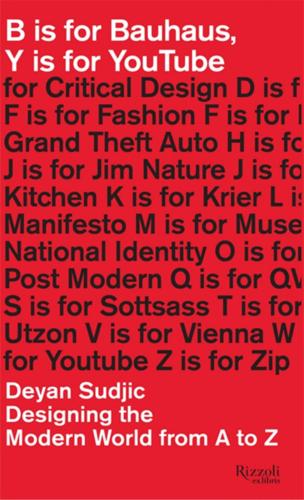
B Is for Bauhaus, Y Is for YouTube: Designing the Modern World From a to Z
by
Deyan Sudjic
Published 17 Feb 2015
The models were wonderful, but they reduced the individual to the scale of an ant, paving the way for Moses to start driving expressways through the Bronx, and demolishing swathes of Manhattan for the building of the Lincoln Center during the 1940s and 1950s. By the time of the 1964 New York World’s Fair, once more dominated by Robert Moses, by now already under attack as the dark genius of urban renewal, the very idea of the city of tomorrow had gone senile. Moses distrusted modern art even more than he distrusted modern architecture, and his one attempt at involving the younger generation of artists ended in embarrassment. Warhol painted 13 Most Wanted Men, a mural that caused a brief scandal before being obliterated on orders from Moses.
…
The more superficially sophisticated that the world appears to become, the more its public rituals signal that its underlying preoccupations remain as intoxicatedly atavistic as they have ever been. Like the Olympic Games and the Grand Prix circuit, the expo movement comes wrapped in the appearance of a glossy sense of modernity. For all the alibis of urban renewal, the real significance of the expo is closer to the motivations of the Easter Island head builders, or the ritual festivals of the Mayans. They are massively profligate undertakings that involve pouring huge resources into events that in the case of the Grand Prix races last less than two hours.
…
It’s an outrageously ambitious strategy, one that has transformed the world’s perceptions of what constitutes a museum. No longer is a museum primarily seen as a place to care for precious artefacts. Nor is it a national treasure house. The most successful museums have become a focus for entertainment, urban renewal and spectacle. Success is judged by size: by the number of visitors – anything less than five million a year excludes you from the first division – and the Guggenheim can’t achieve that even counting all its outposts. The current incarnation of the Guggenheim is the work of former director Thomas Krens; it is one that has both dazzled ambitious politicians looking to repeat the perceived success of the Bilbao outpost and attracted the scorn of other museums.

Scale: The Universal Laws of Growth, Innovation, Sustainability, and the Pace of Life in Organisms, Cities, Economies, and Companies
by
Geoffrey West
Published 15 May 2017
Much of the thinking was inspired by the critical writings of the great urbanists Lewis Mumford and Jane Jacobs, who had reminded us that cities are people and not just infrastructure in the service of the automobile and corporate concrete-and-steel high-rises. Jane Jacobs gained her fame and notoriety during the 1950s and ’60s battling plans to run a four-lane limited-access highway through Greenwich Village in New York City, where she then lived. This was the height of the period of “urban renewal” and “slum clearance” in which massive, unattractive high-rise public housing projects were erected along with major four-lane highways running through downtown city areas with little regard for the urban fabric or the human scale. The man behind all of this in New York City was Robert Moses, the powerful mastermind who reshaped and rejuvenated the infrastructure of the city over a period of almost forty years.
…
These are populated with all those crazy people who contribute to the urban buzz and proliferation of galleries, restaurants, and diverse cultural activities that help make New York such a great city—all of which the prophet Moses might well have unwittingly destroyed had it not been for Saint Jane the savior. New York and the rest of us should be eternally grateful to her. Many cities across the globe have suffered from this vision of urban renewal and slum clearance, all carried out with the very best of intentions and often for good reason. However, all too often the sense of community is neglected, to say nothing of the plight of those being displaced, leading to untold unintended consequences. In too many cases seemingly exitless highways have cut through traditional neighborhoods, leading to isolated islands literally cut off from the major arteries of the city.
…
As a footnote to this piece of urban history, it is ironic that NYU’s long-term strategic plans include a proposal to redevelop the Washington Square Village complex by demolishing those very same high-rise apartment buildings and restore the area to its original structure—plus ça change, plus c’est la même chose. In an interview4 in 2001 Jane Jacobs was asked: What do you think you’ll be remembered for most? You were the one who stood up to the federal bulldozers and the urban renewal people and said they were destroying the lifeblood of these cities. Is that what it will be? To which she replied: No. If I were to be remembered as a really important thinker of the century, the most important thing I’ve contributed is my discussion of what makes economic expansion happen.
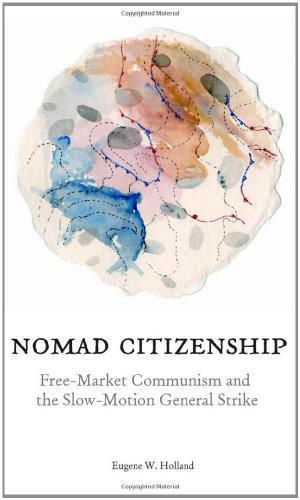
Nomad Citizenship: Free-Market Communism and the Slow-Motion General Strike
by
Eugene W. Holland
Published 1 Jan 2009
But in addition, for Jacobs, the neighborhood itself had to be well situated in relation to a larger urban space that would provide a supportive context (of pedestrian flows, adjacent destinations, etc.) for the neighborhood. Jacobs was writing more or less explicitly against the utopian programs of urban renewal that posed one kind of challenge to her ideal of com plex urban order; Berman cites another: suburbanization. In the decades following World War II, not only were older neighborhoods being wiped clean for urban renewal but jobs and those lucky enough to have them were being moved out of inner cities to suburban spaces, leaving the inner city to wither and die. For Berman, this more or less gradual process was made catastrophic in New York by the expressway system masterminded by Robert Moses, which ravaged the fabric of the five boroughs to make M anhattan accessible to suburbanites commuting by car.
…
The very density, anonymity, and complexity of city life counterbalances the centripetal force of commu nity self-organization and self-identification, compelling or encouraging urban dwellers to frequent “public spaces [where] people encounter other people, meanings, expressions, issues, which they may not understand or with which they do not identify.”40 City living not only fosters the de velopment of multiple, different affinity groups but also brings members of those groups into regular contact with others: the complexity of the city thus fosters not just self-contained difference but related difference. In The Death and Life of Great American Cities, Jacobs provides a pio neering account of the city as matrix of immanently related difference. H er work opposed not only the practices and programs of urban renewal rampant in post-World War II America but also the modernist view of city planning promulgated by Le Corbusier and others starting early in the century.41 The modernist city planner sought to simplify and ratio nalize the city: his ideal was a gridlike plan whereby various urban func tions—commercial, recreational, industrial, residential, and so on—would be carefully segregated from one other and the “formal layout” of city structure purified accordingly.42 To Jacobs, such single-use functionalism and geometrical moralism were anathema: she favored, instead, the rich complexity of multiuse urbanism as it emerged over time, without the need for top-down planning.43And where Follett emphasized the self-sufficiency of the neighborhood, Jacobs emphasized its necessary imbrication in the larger structures and dynamics of the surrounding city.
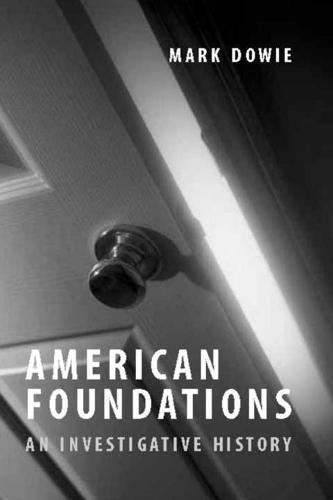
American Foundations: An Investigative History
by
Mark Dowie
Published 3 Oct 2009
As legislators shift their discourse on arts support from "how much?" to whether to fund them at all, cultural arbiters bemoan the state of American humanities and foundations seem reluctant to step into the gap. Many of those who do fund arts projects see them as little more than a civic adjunct, a utilitarian catalyst of urban renewal, rather than the cultural expression of a complex civilization. In chapter 8 I ask whether foundations intent on strengthening democracy will change course to look upon robust arts and humanities as essential to a civilized nation, as they did in the 1960s and 1970s. Will contemporary discourse on cultural philanthropy rise above seeing the arts as a commercial magnet to provide a competitive advantage for one tourist market over another?
…
A visible manifestation of the art-as-enterprise approach to grantmaking is the urban arts center, over a thousand of which have been built in American cities during the past two decades. Usually constructed (or retrofitted into abandoned structures) in depressed inner cities at costs ranging from $30 to $200 million, the centers are often conceived and promoted by downtown commercial and real estate interests as economic catalysts for urban renewal. And, although corporations and wealthy individuals have provided important support, the foundations have pumped millions of dollars for purchase and construction costs into new centers and complexes like Philadelphia's Avenue of the Arts. By providing facilities for a wide range of cultural expression-the visual and performance arts ranging from opera, ballet, and symphony all the way across the cultural spectrum to beauty pageants and bodybuilding competitions-these centers have had an unexpected impact on the arts.
…
And few, if any, could reasonably be accused of opposing democracy. In fact, by supporting voter registration drives in Jim Crow states, many foundations distinguished themselves as champions of electoral democracy; and initiatives like the Ford Foundation's Gray Areas Program, a vast, complex urban renewal effort of the 1960s, enhanced the cause of participatory democracy nationwide. It would thus be unfair to indict foundations for a lack of, or opposition to, democratic processes. But democratic management just isn't part of foundation culture. If the word existed, it would be fair to say that foundations are ademocratic.
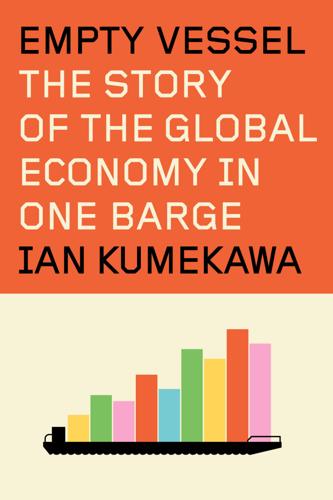
Empty Vessel: The Story of the Global Economy in One Barge
by
Ian Kumekawa
Published 6 May 2025
There were the sprawling low-rises of the Vladeck Houses, built back before America had entered World War II; the squat brick towers of the Fiorello LaGuardia Houses, shaped like plus signs, which opened in the mid-1950s. There were the twenty-story Rutgers Houses, which opened in 1965 after being the site of ongoing civil rights protests, and the twenty-six-floor Two Bridges Urban Renewal Area, completed in 1975. Eventually, Schumer would have crossed under the six-lane FDR Drive and arrived at the East River, with the Williamsburg Bridge off to the left, the Manhattan and Brooklyn Bridges stretching across the water to the right. There, he would have found Pier 36 and, beside it, the Bibby Resolution
…
BACK TO NOTE REFERENCE 14 See Kim Phillips-Fein, Fear City: New York’s Fiscal Crisis and the Rise of Austerity Politics (New York: Metropolitan Books, 2017), 288, 310. BACK TO NOTE REFERENCE 15 Themis Chronopoulos, Spatial Regulation in New York City: From Urban Renewal to Zero Tolerance (New York: Routledge, 2011), chapter 6; Alex Vitale, City of Disorder, chapter 3. BOCM, February 17, 1987. BACK TO NOTE REFERENCE 16 John Metzger, Oral History interview with Philip Caruso, August 16, 1994, Edward I. Koch Administration Oral History Project, 1992–1997, Columbia University, www.dlc.library.columbia.edu.
…
See homelessness, New York City Toyota, 107–9 Transatlantic Slave Trade Database, 205 transfer, registration, 95–99 transport barge, designation, 21–23. See also Vessel Treacy, Daniel, 159–60 Tubman, William, 91 twenty-foot equivalent units (TEUs), 36 Two Bridges Urban Renewal Area, 117 Type 1, car. See Volkswagen U ULURP. See Uniform Land Use Review Procedure UNCLOS. See UN Convention on the Law of the Sea Uni-Marine, 177, 182 Uniform Land Use Review Procedure (ULURP), 126 United Fruit Company, 89–90 United Nations Convention on the Continental Shelf, 40 United Nations Convention on the Law of the Sea (UNCLOS), 197, 263n24 United States, 11–12, 48, 93, 146, 164–65, 197, 235, 262n1.
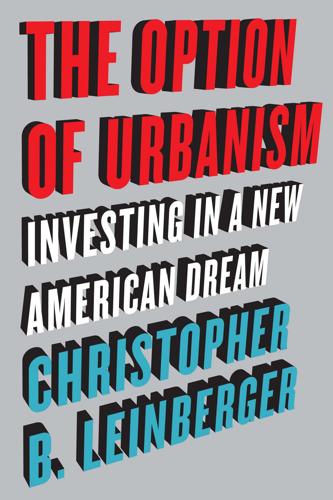
The Option of Urbanism: Investing in a New American Dream
by
Christopher B. Leinberger
Published 15 Nov 2008
The middle class left most center cities, leaving only the poor, who have the most social welfare needs and the least financial ability to pay the taxes to support these services. Certainly there were much-publicized efforts at revitalization; the Johnson administration launched the Model Cities program and urban renewal in the 1960s, city planners in the 1970s closed main streets to pretend the city was a suburban mall, and in the 1980s the federal government handed out Urban Development Action Grants. These programs had limited success at best, and most failed to achieve their objectives of returning center cities to health.
…
I NDEX f indicates entries in figures, n indicates endnote numbers. 1930s, 1, 4, 13, 16, 20, 25, 45–46, 65, 82, 178n14 1950s, ix, 33–36, 43, 69, 86, 90, 92, 127, 140, 155–157 1955 vs. 1985, 1–4, 11, 44, 180n30, 195n23 Atlanta, 4, 36, 42–43, 52, 74, 76, 93–97, 101, 120, 155, 158, 172, 189n6–7, 195n1 Auto-dependent, iv, 68 Baby boomers, 86, 89 Back to the Future, 2, 22, 34, 197n9 Bailey, L., 198n14 Beaumont, C., 180n35 Bel Geddes, N., 18, 25, 31, 43, 116, 178n9 Ben-Joseph, E., 180n28 Berube, A., 68, 177n4 Bezdek, R., 188n56 Biederman, Dan, 169 Block busting, 145 level, 195n21 Boredom, 90 Boston, 61, 93–96, 101, 107, 119, 189n6 Brooks, D., 39, 88, 182n10 Built environment, 2–8, 11, 17, 23, 32–33, 49, 63, 74, 83–84, 88–90, 104, 114, 117, 146, Adams, J., 185n23 Affordable housing, 65, 78, 133, 138–144, 163, 175, 191n4, 195n2, 196n3–6, 197n11 Agricultural jobs, 22, 23, 91 manufacturing, 13, 19, 23–24, 97 Airports, 42, 161 American Dream, 4, 9, 11–29, 87–92, 130, 150–176, 179n20, 189n5 Apartments, 17, 50, 55–58, 87, 102, 106–109, 122, 124, 141, 145– 146, 193n9 Arigoni, D., 196n3 Associations (see Neighborhood groups) Asthma, iv, 9, 75, 84 201 202 | INDEX 150–155, 160, 172–176, 181n1, 186n36, 191n3 pendulum, 3–5, 9–10, 61, 88, 146, 149 Business improvement districts (BIDS), 167–169 Carbon load, iv Carter, S., 177n1 Cattaneo, A., 181n2 Cervero, R., 186n28 Chen, D., 187n40 Chicago, 41, 60, 101, 119 Choice, 137, 166, 170, 189n6–7 Cisneros, Henry, 191n4 City planning, iv, 29 Civil rights movement, 40 Cohen, D., 186n38 Commercial brokerage firms, 46, 49, 60 Commercial development, 27, 34, 66, 116, 153, 158 Community decline, 9 Community development, iv, 97, 168 Concentrated poverty, 69, 184n9, 191n4 Condos, 98–99, 102 Consumer preferences, 10, 88 survey, 93–96, 106, 181n3 Cook, J., 181n9 Corkery, M., 190n25 Corn, J., 17, 178n8 Corporate strategic planning, xi, 37, 57, 104 Critical mass, 123, 169 199n25 Curry, T., 182n2 D’Arcy, M., 188n61 Debt, 46, 48–49, 160, 197n8 Density, see also Floor area ratio, 21, 72, 79, 113, 132, 166 Department of Transportation (DOT), 142, 164–165 NJDOT, 198n20 Desegregation, 40 Depression, the, 1, 4, 6, 12–15, 20–25, 33, 45, 63, 65 Detroit, 8–9, 57, 97, 102, 119–122, 137, 157, 177n6 Developers, 11, 32–35, 48–53, 58–59, 63, 71, 103, 106, 111–112, 129–132, 141–142, 156, 160, 162, 168–169, 174, 183n12, 194n16 Zell, S., 59 Development, commercial, 27, 34, 116, 153, 158 economic, 24, 91, 163, 170 land, 26, 123 real estate, 20 47, 106, 163 sub-urban, 5, 10, 29, 64, 66, 71, 74, 77, 79–81, 88, 114–115, 130–131, 140, 146, 150, 162, 167 urban, 29, 119, 124, 126, 176 walkable, 128, 135, 158 Displacement, 140 Domestic policy, 2, 4, 25, 27–29, 44, 67, 82, 150–151, 171–173, 176 Driver product types, 33, 38 apartment, 43, 51 hotel, 43, 45, 51–54 industrial, 45–56 office, 51, 56 retail, 43–45, 51–53 Drivable sub-urbanism, 4–11, 17, 24–29, 31, 39, 52, 59, 64–69, 72–88, 93–96, 113–119, 130, 135, 137, 139, 156–159, 172– 173, 187n50, 191n3 INDEX | 203 car manufacturing, 9, 24, 97 greenhouse gas emissions, 10, 74–78, 84, 172, 186n31 highways, 7, 16–21, 27–28, 33–40, 59, 62, 80, 158, 164, 180n34 oil industry, 9, 24 positive consequences, 64, 66 free parking, 66–67, 184n6, 192n6 JLUs, 54, 65, 66 unintended (negative) consequences, 9–11, 62, 67, 75, 78, 82, 85, 90, 132, 138, 141–149, 167 auto dependence, 68, 83, 97 elites, 70, 83, 184n12 job access, 69, 83 nondriver exclusion, 69–70, 83 poverty, 38, 68–69, 83, 140, 184n9, 191n4 social segregation, 68, 83 “Drive until you qualify,” 65, 67, 78, 139 Duany, Andres, 118 Duncan, J., 188n51 Economically sustainable, 11, 97, 167 Economic effects, 77, 84 Burchell, R., 78, 184n4 competitiveness, 78, 80, 84 Downs, A., 78 oil dependency, 81, 84, 173 personal finances, 77 Economic growth, 7, 36, 40, 91, 175, 179n25 built environment, 2–8, 11, 17, 23, 32–33, 49, 63, 74, 83–84, 88–90, 104, 114, 117, 146, 150–155, 160, 172–176, 181n1, 186n36, 191n3 Edge cities, 41–43, 59, 62, 69, 157–159 Edgeless cities, 59, 62, 87, 183n13 Edmonds, B., 190n27 Empty nesters, 89, 112 Engelke, P., 186n36 Entertainment, 5, 33, 54, 86, 110, 117, 119, 134, 168 Environmental effects, 71, 83 air quality, 73–74, 84, 165, 188n55 climate change, 74–75, 84, 166– 167, 172–175, 186n30 heat islands, 73, 83, 185n24 land consumption, 9, 71–72, 83, 175 water quality, 73, 83 Equity, 160–164, 168, 171, 175, 197n8 Euclidean zoning codes, 151, 196–197n2 Ewing, R., 185n19, 186n28 Export jobs, 179n27 Exurbia, 7, 62, 72, 177n3 Farmer’s markets, 148, 196n9 Farms, 23, 28, 64, 72, 87–88, 185n16, 190n19 Favored quarter, 35–44, 54–57, 62, 69, 134–141, 157 race and poverty, 38 Federal-Aid Highway Act of 1956, 27 Jackson, K., 21, 28, 179n19, 186n29 Federal Housing Administration (FHA), 25 Federal Reserve, 47–48, 183n8 asset class, 48–49, 64, 104, 161 Feehan, D., 199n24 Feit, M., 199n24 Floor area ratio (FAR), 113–119, 122–126, 158, 191n1–3 204 | INDEX Florida, R., 91 Foreign policy, 82, 84, 130 Friedman, T., 82, 188n60 O’Hanlon, M., 82, 188n61 trade-offs, 84, 92–93 For-sale housing, 45, 54–55, 64–65, 100, 151 Frank, L., 74–76, 96, 105, 113, 186n29, 186n33, 186n36–37, 189n7–8 Freeways, x, 13, 30, 39, 42, 56, 117, 158, 164 Frey, W., 177n4 Frumkin, H., 186n29 Garreau, J., 42 Gelernter, 178n6 General Motors (GM), 19, 25, 57 Gentrification, 138–141, 144, 196n6 Giuliani, Rudolph, 169 Glaab, C., 179n23 Global warming, iv, 199n27 Gowen, A., 197n4 Greenfield towns, 123 “Hand me down” housing, 140 Hansen, J., 172, 199n27 Health implications, 75–77, 84 Hickenlooper, John, 119, 166 High-density housing, 5, 109, 159 retail, 5, 44 work, 5, 78, 141 High-income housing, 38, 140 Hirsch, R., 188n56 Horrigan, B., 178n8 Housing, see also Affordable housing, 9, 31, 33, 44, 78, 96, 99, 117, 151, 163 projects, 115, 140–141, 191n4 rental, 39, 45, 109, 198n11 Impact fees, iv, 162–163 Inam, A., 94–95, 189n6 Inclusionary zoning, iv, 141–142 Industrial economy, 23–26, 91 car-based, 24–25, 84 rural ideal, 25 sub-burban ideal, 25, 40 Infrastructure development, 9, 29, 35, 40–41, 68, 80, 160–168, 171–174, 181n1 underwriting, 11, 160 Interstate highway system, 27–28, 31 Jackson, K., 21, 28, 179n19 Jackson, R., 186n29 Jacobs, J., 117 Jillson, C., 22, 179n20 “Just like us” (JLUs), 54, 65–66 Katz, B., 68, 184n9 Kostyack, J., 185n19 Kunstler, J., 77, 82, 188n58 Kutner, L., 185n23 Land consumption, 9, 71–72, 83, 175 Land value, 102–103, 142–144 Lang, R., 59, 183n13 Lasch, C., 70, 184n12 Lawrence, F., 74–75, 96, 186n29 Le Corbusier, 25, 113, 115, 158, 191n4 Le Corbuier’s Plan Voisin, 192n5 Leinberger, C., 183n9, 196n6 Levine, J., 26, 93–96, 105, 189n7 Lewis, T., 180n34 Life and Death in Great American Cities, 117 Lifestyle centers, 108–109, 124, 167 Limited-access highways, 33–38, 53, 59, 62 INDEX | 205 Lipman, B., 187n47 Locally undesirable land uses (LULUs), 42 Local-serving neighborhood retail center, 5, 128, 179, 12–13, 48, 122, 146–148 Los Angeles, 4, 36, 42–43, 61, 107, 115, 121–122, 128, 134, 141, 159, 172 Louis, B., 190n15 Louv, R., 77, 187n43 Low-density housing, 26, 79–80 regulatory guidelines, 26, 165, 197n6 Lucy, W., 41, 76, 187n Malamund Smith, J., 184n5 Market share, 29, 43, 90 McCann, B., 186n37 McPherson, M., 181n9 Media, 21, 86 Metropolitan areas, x-xi, 3–9, 17–18, 23, 26, 28, 31, 33, 36–38, 41–44, 59–63, 72– 80, 87–103, 118, 123, 128, 135–139, 142, 155, 164–165, 170–175, 177n2, 179n27, 185n16, 199n21 Metropolitan planning organization (MPO), 199n21 Miller, J., 190n26 Minorities, 40, 55 Minority housing, 37, 38, 69 redlining, 26, 39 Mumford, L., 18, 178n12 Myers, D., 189n2 National Interstate and Defense Highways Act, 27 Nee, B., 17, 178n15 Neighborhood groups, 71, 83, 130–134, 145 Neighborhood-serving retail, 33–35, 38, 128 Nelessen, A., 92–93, 189n5 Nelson, A., 88–89, 104–105, 125, 129, 144, 189n1, 194n17 Neverlands, 114–115, 140, 153, 192n5 redevelopment, 156–159 New economy, 11, 91 New Urbanism, 5, 87, 97, 106, 112, 117–118, 152, 158, 191n3–4 New York City, 36, 98, 130, 161 New York City World’s Fair, 15 Futurama, 12–31, 43–44, 63, 85, 116, 130, 172, 179n18 Not-in-my-backyard (NIMBY) groups, 71, 83, 133 Obesity, 9, 84 Obsolete housing, 80, 127, 140, 144–146, 153–156 Office space, 29, 33, 37, 43–47, 51, 56, 60, 74, 101, 109, 121–130, 136, 155–156, 158, 171, 192n8 Orfield, M., 40, 182n11 Owen, D., 200n29 Parking ratios, 150, 192n6 Pendall, R., 187n40 Pendulum (see Built-environment pendulum) Philadelphia, 8–15, 22, 36–37, 61, 119, 120–127, 133, 141, 157, 168, 170, 177n6 Phillips, D., 187n41 Phoenix, 4, 36, 42, 97, 101, 172 Pianca, E., 180n35 Population growth, 61–62, 72–73, 83, 144 206 | INDEX Poverty, 38, 68–69, 83, 140, see also Concentrated poverty Preindustrial “walking” cities, 21 nineteenth century, 21–23, 121–122, 154 twentieth century, 2, 4, 6, 9, 20–26, 39, 72, 85, 88, 115, 131, 151, 154 Prewar housing, 184n2 Privacy, 12, 14, 21, 24, 66–67, 115 Projects, see Housing projects Public housing, 115, 140 failure of, 191n4 Puentes, R., 198n14 Putman, R., 185n13 Race, 38, 40, 182n9, 192n5, 194n11 Rail transit, 3, 22, 30, 95, 112, 119, 123–124, 127, 151, 158–159, 163, 166, 171, 190n17, 193n10, 194n11 Real estate product types, 32, 38, 47, 49, 50–57, 59, 61, 115, 183n9 driver product types, 33 follower products, 33 Rees, W., 75, 186n34 Redevelopment, xi, 40, 61, 80, 125– 129, 153, 156–158, 167–169 Regional malls, 5, 35, 39, 109, 155, 159 Regional-serving walkable urbanism, 118, 124–128, 135–139, 173–174, 195n22 downtown-adjacent, 90, 119–122, 128, 132, 136, 146 greenfield town, 123 redeveloped malls, 118, 125–128 suburban town, 80, 88, 90, 97–98, 118, 122–123, 129 traditional downtown, 35–36, 99, 118–119, 167 REIT, 49–50, 58 Resolution Trust orporation (RTC), 47–49, 183n6 Reston Town Center, 102, 119, 123–124, 125f, 127, 136, 153 Retail chains, 109, 146–149 Retirement, 51, 128, 153, 160 Revitalization, 5, 88, 106, 129, 146, 156, 169 model cities program, 29 urban development action grants, 29 urban renewal, 29 Road diet, 197n7 Roulac, S., 8, 177n5 Rural areas, 22–23 S&Ls, 46–49, 182–183 crisis, 46 Safe, Accountable, Flexible, Efficient Transportation Equity Act (SAFETEA-LU), 164–165, 198n18 Schmid, T., 186n36 Seattle, 37, 98 Segregation, (see also Social segregation) 39–40, 65 Seinfeld, 87, 90, 106, 131 Shearin, R., 194n12 Shibut, L., 182n2 Shoup, D., 67, 184n6 Singer, A., 177n4 Smith-Lovin, L., 181n9 Social engineering, 25, 44, 67, 84, 137 segregation, 68–71 Solomon, D., 180n28 Southworth, M., 180n28 Sprawl, 78, 93, 122, 131, 151, 160, 184n4, 186n29 Street grid, 5, 199 INDEX | 207 Stein, B., 185n23 Strip malls, 5, 90, 92, 118, 125, 131, 148 Subdivisions, 6, 28, 35, 47, 50, 55, 88 Subsidies, 9, 11, 29–31, 67, 112, 144, 151, 162, 171–173 Suburban town center, 88, 90, 129 Superhighways, 17–21 Sustainable development, 112 Target market, 54–55 Terrestrial affiliation, 64, 67, 115, 184n1 Toll roads, 161 Torng, G-W., 189n6 Town center, 87–90, 112, 123, 129 Traditional neighborhood development (TND), 93, 117 Transect, 191n3 Transit-oriented development, 112, 117, 190n27, 199n20 Transportation, 3–4, 21–22, 27–32, 40, 63, 67–68, 74–81, 83, 93, 96, 116, 127, 142, 144, 151, 163, 166, 171–175, 181n1 infrastructure, 142, 165 Transportation Equity Act, 164, 182 Unemployment rate, 12, 69 Urbanism, see Walkable urbanism U.S.
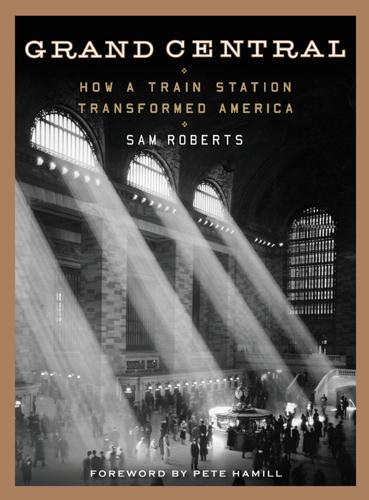
Grand Central: How a Train Station Transformed America
by
Sam Roberts
Published 22 Jan 2013
And 30 years later, a major renovation restored the station as an architectural gem and a destination not merely for train travelers, but also for shoppers, restaurant-goers, and other visitors. Grand Central anchored the revival of Midtown Manhattan, a revival that would spread west to Bryant Park, behind the New York Public Library, and Times Square and become emblematic of urban renewal at its best. Just recently, the Lincoln Building, originally named for the former president, was rechristened One Grand Central Place, in affirmation of the terminal’s cachet and the city’s resurgence. THIS BOOK IS MORE THAN A STORY ABOUT TRANSPORTATION. It’s about the expansion of the city of New York into a metropolis and the aggregation of metropolitan government, which mirrored the ruthless consolidation of corporate America and of the nation’s railroads.
…
Another contributing factor may have been that, although it was home to the Long Island Rail Road, until the post–World War II consolidation and bankruptcies of New Jersey railroads, Penn Station didn’t have a monopoly on commuters coming in from the west, many of whom went to Hoboken or Jersey City and got to the city on ferries or took the Tube, while, of course, Grand Central Terminal had all the traffic coming from the north right from the start. Also Grand Central to Wall Street is a straight shot on the subway for commuters. Fully a century later, the West Side of Manhattan is developing largely in spite of Penn Station, not because of it. EVEN BEFORE IT WAS FINISHED, Grand Central became the impetus for an extraordinary urban renewal and repurposing of nearby property. American Express’s stables, the Steinway piano factory, and the F & M Schaeffer Brewery would give way to fashionable apartments, hotels (the Ambassador, Biltmore, Commodore, Ritz-Carlton, and Waldorf-Astoria, the new Grand Central Palace, the Roosevelt, the Barclay and Park Lane), a post office, and the Central’s own offices—all lures for the multicolored cabs that, Thomas Wolfe wrote, now descended on Grand Central “like beetles in flight.”
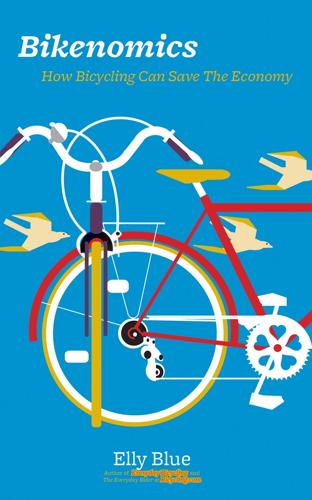
Bikenomics: How Bicycling Can Save the Economy (Bicycle)
by
Elly Blue
Published 29 Nov 2014
Those who could afford it now began to move into the suburbs, thanks to the automobile. They could live in commuting distance from city office and industrial jobs but live separate from the mayhem, with their nuclear family in their own small estate. Over the following decades, inner cities were gutted by urban renewal and inner-city freeways and these new suburbs seemed more and more attractive. And as more people wanted to buy houses, the investment of building new neighborhoods seemed more and more attractive to developers. In the last decade, new development rose to fever pitch, aided by heavy subsidies to builders and ill-considered bank loans to new home owners who could in no way afford them.
…
Community activists fought back and lost. The land was claimed, the theater, music halls, and restaurants at the heart of the neighborhood were torn down … and then nothing. The new wing of the hospital fell through, and the land sat empty for decades. The neighborhood around it failed to thrive until an urban renewal district was born. A light rail line was built to the neighborhood. Newcomers could, and did, get assistance buying houses and opening increasingly upscale businesses. Police started responding more promptly to calls from the area, and enforcing complaints against such grievous crimes as African American youth hanging out on their blocks and playing music.
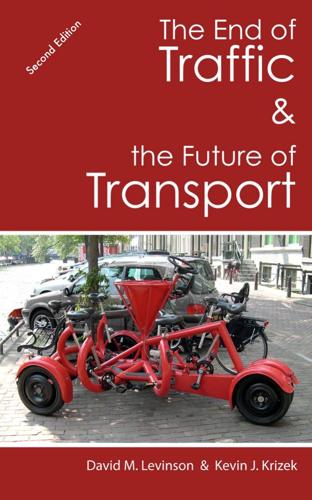
The End of Traffic and the Future of Transport: Second Edition
by
David Levinson
and
Kevin Krizek
Published 17 Aug 2015
Upon assuming the Presidency, he helped marshal resources for the US to build a comparable system, which had been mired in Congress for nearly a decade, just as his convoy had been mired on the dirt roads and collapsing bridges of post-World War I America. Coupled with policies in 1949 to stimulate "urban redevelopment," later broadened in 1954 to "urban renewal," monumental changes took root in cities. For Americans, this new roadscape meant accumulating more miles per capita by car than other modes, or than anywhere else in the work. Tectonic forces reinforced a continued march up Mount Auto. These include increases in: Population. As there were more people, there was more collective daily travel to everyday destinations like work, school, and the store.17 Workforce participation.
…
More women started working outside the home. Income. With money, people can satisfy wants in addition to needs, and the means by which that income is acquired (work) required more travel as well. Auto mass production. Ford's process spread widely, thereby dropping the relative price of auto-mobility.18 Developed area. Urban renewal gutted blighted and working neighborhoods alike. Metropolitan areas accommodated the automobile, new residential lots (and the houses sitting on them) got bigger. So did shops and offices—all of which were surrounded with parking lots. Road networks. Roads better accommodated the car by getting wider, sparser, and more tree-like; new limited access freeways were constructed.
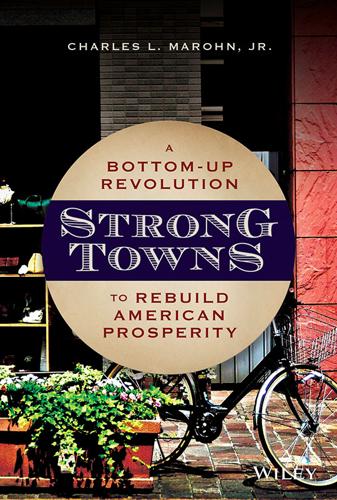
Strong Towns: A Bottom-Up Revolution to Rebuild American Prosperity
by
Charles L. Marohn, Jr.
Published 24 Sep 2019
In this period of time, Americans built the interstate highway system, the largest public works project in the history of mankind. These transportation investments broke the stifling stability of high land values, making abundant raw land available to the masses at affordable prices. Investments in infrastructure systems accelerated. Through Urban Renewal initiatives, new planning theories were put into practice, remaking entire neighborhoods. Policymakers quickly discovered that the tools for fighting deflation in the Great Depression worked even better for expanding the economy during the post-war boom. Focusing again on housing, the FHA used the same approach of lowering down payments and insuring banks against default.
…
Francis Catholic Church (Brainerd, Minnesota), 212–213 Sales tax, 49–50 Samuelson, Paul, 91 San Diego, California, 164–167 San Francisco, California, xi Santa Ana, California, ix–xii “Second ring” suburbs, 94 Sedlacek, Tomas, 104 Shovel-ready building sites, 32 Shreveport, Louisiana, 219–221 Sidewalk maintenance, 183, 203 Silos, in local government, 174–176 Simply Complexity (Johnson), 12 Sinclair, Upton, 50 Single-family housing, 144–145 Site-specific infrastructure, 130 Small businesses: importance of, in wealth creation, 162–163 productivity of, 133–134 Social return on investment, 78–79 Speck, Jeff, 206 Spooky wisdom: defining, 4 of farmers, 85 in human habitats, 5–10 in incremental growth of cities, 26 “Sprawl Repair,” 168 Stagflation, 94 State government: debt taken on by, 113–114 funding of local government by, 95 impact of infrastructure on, 79 limiting of municipal debt by, 191 relationship of local and, 197–198 Stewart, Paul, 152 Strategic retreats, 108–109 Strongest Town competition, 161 Strong Towns (organization), 226 Strong Towns movement, 225–226 Strong Towns Podcast, 152, 214–215 Subsidiarity principle, 195–198 Suburban development, 27–30 as growth, 100 urban infrastructure supporting, 114–115 Suburban Retrofit, 168–169 Summers, Lawrence, 63, 78 Sussman, Ann, 8, 9 Symmetry, 9 Systems: anti-fragile, 4, 6 cities as complicated, 11–14 complex, adaptive, see Complex, adaptive systems critical, 182–183 fragile, 4 maintenance-free, 112–113 maintenance required to continue, 115 noncritical, 182 redundant, 182 T Taco John's, 132–134 Tactical Urbanism, 158–159 Tactical Urbanism (Lydon and Garcia), 158 Taleb, Nassim, 4, 59, 120–121, 193 Taxation, 46–50 Tax subsidies, for redevelopment, 133–134 Team approach, in local governments, 175–176, 179–180 Temporal discounting, 57 Tents, 160–161 Thigmotaxis, 8 “Tiny homes,” 163 Traditional city development: as lead by private investment, 34 as low-risk investments, 149 productivity of, 131–134, 140–141 as series of little bets, 16–18 Transit coordinator, 178t–179t Transit projects, 73–74 Transportation: human habitats build around, 1–3 in Santa Ana, California, xi–xii Triage, 119–120 Tribe (Junger), 216 Trickle-down economics, 101 Trump, Donald, 63, 207 U United States: development pattern in Costa Rica vs., 126–127 Urban3, 138, 140, 142, 161 U.S.dollar, as basis for trade, 90–91 Use-based codes, 193–194 V Value: of infrastructure, 70 Value capture approach, 76–77 Value per acre analysis, 135, 138–144 determining productivity with, 138–142 of high-productivity neighborhoods, 150–151 for Lafayette, Louisiana, 141–144 and personal preferences, 144–145 of small businesses, 162 W Walkability: “General Theory of Walkability,” 206 improving, in Shreveport, 220 Walkable City, How Downtown Can Save America One Step at a Time (Speck), 206 Walking: in communities, 203–206 finding gaps in cities by, 160 human habitats build around, 1, 2 in suburbs, 111–112 Walmart, financial productivity of, 139–140, 139t Walt Disney Corporation, 151 Washington, George, 108 Watches, 11 Wealth: growth vs., 102–104 illusion of, 57–60 Wealth creation, in place-oriented government, 176–180, 177t–179t White flight, 111 Why Liberalism Failed (Deneen), 211 Whyte, William “Holly,” 158 Wikipedia, 196 Women, in workplace, 95–96 The World Until Yesterday (Diamond), 58, 84 World War I, 86–87 World War II: confirmation bias of Pacific Islanders after, 183–185 economic stability following, 89–91 Z Zoning: and changes in building use, 137 as constraint on growth, 167–168 and neighborhoods, 21 neighborhoods atrophied by, 163 and urban renewal, 117 WILEY END USER LICENSE AGREEMENT Go to www.wiley.com/go/eula to access Wiley’s ebook EULA.
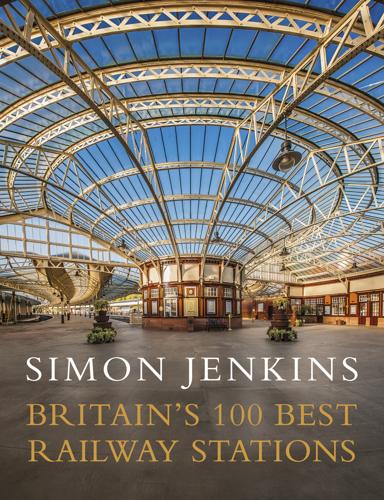
Britain's 100 Best Railway Stations
by
Simon Jenkins
Published 28 Jul 2017
There followed an internal battle within BR to save Wilson’s office range at 50 Liverpool Street, a saving that was critical to the Victorian character of the site. The outcome required the office range to be completely rebuilt in 1985–91. A final skirmish saved the two-storey arcade of shops across the road. Liverpool Street is a reminder that urban renewal is about choices, not inevitability. Today’s station offers variations on a Victorian theme. The separate entrance gateways to Liverpool Street and Bishopsgate are new, marked by two towers with lantern tops. They carry GER cartouches. New also is the internal concourse, the shopping arcades and, most extraordinary, the entire eastern shed.
…
Many had crossed England after landing from the Continent at Hull (see here) and now had to troop downhill to the harbour for their last hazardous voyage. Lime Street languished through the 20th century in relative squalor. Outside its gates we can still see the remains of the disaster that was Liverpool development in the 1960s under its ardently Socialist chief planner, Graeme Shankland. His slash-and-burn approach to urban renewal took the form of destroying historic buildings and erecting an excruciating shopping centre facing the station, which even he later regretted. The area degenerated until, in 2008, the buildings in front of Lime Street were demolished to reveal at least part of the original terminus to the square.
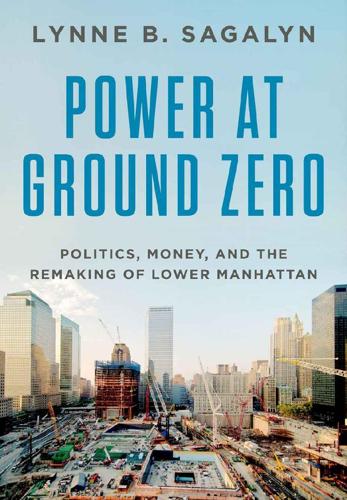
Power at Ground Zero: Politics, Money, and the Remaking of Lower Manhattan
by
Lynne B. Sagalyn
Published 8 Sep 2016
“In order to increase efficiency and protect pedestrians from traffic accidents, the great plaza that provided access to all the buildings was connected to neighboring blocks on three sides by bridges (in the process removing customers from city streets and damaging local businesses). Unfortunately, the plaza had to be closed four to five months out of the year due to danger that falling ice posed to pedestrians.”50 As one of the last of the massive urban renewal efforts in New York City, the World Trade Center complex was widely regarded as prima facie evidence of that era’s brutal disregard for the humanistic fabric of a city. It wore this legacy boldly, just the way its domineering public developer had intended. The 1960s plan for the World Trade Center complex embodied a planning concept woefully out of date at the start of the twenty-first century: a superblock assemblage dominated by skyscrapers rising up out of a vast open plaza (figure 1.7).
…
He was not like one of his well-known partners, William Zeckendorf Jr., son of legendary “Big” Bill, a man of big visions. The senior Zeckendorf assembled seventy-five parcels formerly housing smelly slaughterhouses on the East Side of Manhattan where the United Nations rose in 1947, and he built large-scale urban renewal projects in many cities (Century City in Los Angeles, Mile High Center in Denver, and Place Ville Marie in Montreal, among others) before his development company, Webb & Knapp, went bankrupt in 1965. Zeckendorf Jr. was more conservative than his father, but equally intense about building projects and of being in the game, although less focused than Silverstein on making the last dollar.
…
Map 3.2 The neighborhoods of lower Manhattan. Cartography: C&G Partners for the author The division of power between the state and the city is an age-old issue for mayors. For more than two decades during the era of ambitious federal support for revitalizing the nation’s urban centers beginning with the federal highway and urban renewal programs of the 1950s, mayors succeeded in winning the fight for local control.10 This victory, however, stands as an exception to the historical pattern. Under the U.S. Constitution, cities have no formal legal standing. Because of 9/11, Ground Zero was one place where this arrangement might have been different, remarked Carl B.
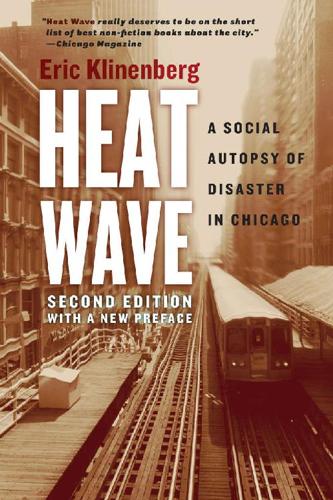
Heat Wave: A Social Autopsy of Disaster in Chicago
by
Eric Klinenberg
Published 11 Jul 2002
In the last fifty years, two changes in government policy have eliminated or degraded the stock of hotel buildings and reduced the quality of life for their residents; moreover, additional pressures from realtors and neighborhood groups have led several hotel proprietors to sell their buildings. First, the urban renewal programs of the 1950s and 1960s and urban development programs of the 1970s led to the destruction or conversion of most of the old SROs, but neither the city nor the federal government has funded or assisted much new hotel-style public housing since then. From 1960 to 1980 Chicago lost 85 percent of its one-room units in the West Madison region, 48 percent of its units in the South State Street area, and 84 percent of its units on the Near North Side, for a total loss of more than seven thousand units in these three areas alone.
…
The out-migration in Little Village was more gradual than in North Lawndale, though, in part because in 1940 the home ownership rate of 36 percent in Little Village was more than twice the rate in North Lawndale, where only 16 percent of the homes were owner occupied.65 The relatively slower pace of suburban out-migration from Little Village meant that the area did not open itself to African-Americans to the extent that North Lawndale did, and instead local realtors marketed housing in the area to the city’s growing Mexican-American communities as well as to Mexican immigrants. Beginning the mid-1950s, Mexican Americans who had been displaced from their Near West and North Side homes by urban renewal programs and new highways took refuge in Little Village, and by the late 1960s the area had acquired a decidedly Latino identity. In one telling sign of the transformation, the Bohemian Settlement House, which had been founded in 1896 and was a major community institution, changed its name to Casa Aztlan in 1970.66 Figure 33.
…
See drug use support services: paramilitary organizations and, 142, 232 support systems, 71, 159. See also social networks suspiciousness, 76–77 Taub, Richard, 263n.38 television, 59, 215, 275n.1. See also media; news transportation, 226; access to, 80, 225 trauma centers, 131 Twenty-sixth Street (Calle Mexico), 110–12 urban heat island effect, 16 urban renewal and development programs, 66 urban research, Chicago school of, 22 utilities costs, heat-related, 159, 206 Vaughan, Kevin, 237 violence: of everyday life, 97–103; and isolation, 54–55 violent crime, 127, 256n.31, 259–60n.9; elderly persons, danger, and, 51, 101. See also crime; fear violent crime rates, 55, 82–83; in Districts 10 and 11, 88; in Little Village, 109, 120 vulnerability, 248n.31; rhetoric of, vs. language of empowerment and consumerism, 157.
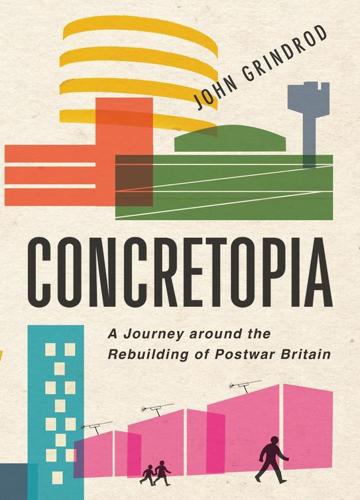
Concretopia: A Journey Around the Rebuilding of Postwar Britain
by
John Grindrod
Published 2 Nov 2013
Instead, he stressed that the complex ‘served only to complement the “real Bolton” around it’.25 Arndale and Ravenseft were keen on shopping centres, but they tended to avoid larger town centre redevelopment schemes, with their ring roads, bus stations and covered markets. Many councils, though, were dead set on just such integrated projects, and it was held against the developers that ‘they picked up all the plums of urban renewal, leaving the local authorities to do the unremunerative chores.’26 In the late fifties at the Elephant and Castle – the great, tangled road junction forming the gateway to south London, and at the heart of a large working class community – just such a complex scheme was underway. The sheer scale of the development there – whether of the big roads with their roundabouts and underpasses, or of the massive multi-level flats, offices, college, cinema and shopping centre – was awe-inspiring.
…
A few years ago I visited New York and explored Rochester’s huge Midtown Plaza, the inspiration for the Elephant and Castle’s shopping centre. This jauntily designed trinket box of a scheme was eerily deserted. Almost all the shops had closed and it was scheduled for demolition, the optimistic early sixties vision of urban renewal overtaken by out-of-town developments and the long arm of the internet. On 7 April 1971, the Queen opened Birmingham’s completed inner ring road, an idea that had been gestating since 1917. The local dignitaries who gathered that spring day to see their ambitious project given the royal blessing, less than a decade after Buchanan’s Traffic in Towns was published, could not have known that, apart from the odd project, the age of the grand urban road scheme was over.
…
In an audacious move, Cox employed his very own visionary to rival Copcutt: Graeme Shankland, a young and controversial London County Council planner who had got into all sorts of trouble as a leading light in yet another modernist splinter group – this one called SP UR. The Society for Promotion of Urban Renewal had frightened the residents of Boston Manor in London when the BBC showed their plan to demolish the entire district and rebuild it as a futuristic landscape of towers and walkways. Several prominent members of SP UR went on to design the Barbican. Yet Cox was adamant that Shankland, despite his bad boy reputation, was the man for Hook, refusing to take on the job without him.12 After a year’s work by Cox and his team, the authorities decided that it would be quicker and cheaper to expand the nearby towns of Basingstoke and Aldershot, and the Hook scheme was abandoned.
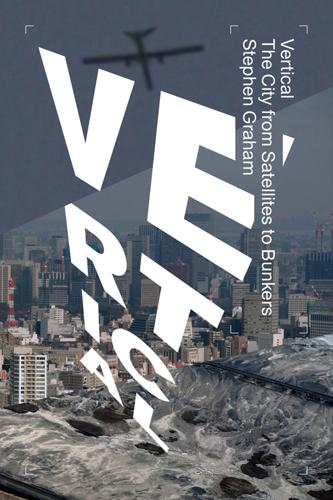
Vertical: The City From Satellites to Bunkers
by
Stephen Graham
Published 8 Nov 2016
Vertical stacking would, the argument went, allow land to be used much more intensively than through the more traditional horizontal separation of land uses in cities. One master plan for the comprehensive redevelopment of central Birmingham outlined the underlying ideas. ‘A factor which is absolutely essential in any modern master plan is the principle of segregation’, it suggested. ‘No project for urban renewal, be it extensive or quite local, will match up to modern necessities unless it provides for proper segregation of operations.’ Such a shift, it was argued, was ‘essential for safety, for maximum concentration of use, and for amenity and comfort … The transport design should, therefore, aim at the segregation of pedestrians, city roads, service roads, and car park roads, leading to multi-level circulation of functions such as two-storey shopping.’13 Shaped by the thinking of the Tatton-Browns, between 1955 and 1970, the City of London embarked on an ambitious programme of vertical segregation.
…
‘I draw an automobile on this regained ground [for parking], and I let air and vegetation go through.’14 In the process, as historian David Gissen points out, ‘the clean-up of the modern sewer and the banishment of the cellar from modernity represented a victory of the rhetoric of light and air over the dark, the tepid and the dank.’15 However, basements have also had their advocates. Some philosophers, as part of the wider backlash against the steamroller of modernist urban renewal, have been keen to point out the psychosocial importance of cellars and basements. French phenomenologist Gaston Bachelard, for example, argued passionately that housing provided more than technologically modern and sanitised ‘machines for living’ (in Le Corbusier’s infamous phrase). Housing architecture, Bachelard countered, also needed to address primordial psychological human needs for spaces within which dreamlike experiences could link with subconscious cultures of nature.
…
See Jamie Peck, ‘Economic Rationality Meets Celebrity Urbanology: Exploring Edward Glaeser’s City’, International Journal of Urban and Regional Research, 2016 (forthcoming). 6Paul Goldberger, ‘Too Rich, Too Thin, Too Tall, Vanity Fair, May 2014. 7As well as blocking out light, new towers often create wind systems at ground level that can be uncomfortable and even dangerous to those on the street. 8Lloyd Alter, ‘It’s Time to Dump the Tired Argument That Density and Height Are Green and Sustainable’, Treehugger, 3 January 2014, available at treehugger.com. 9Ibid. 10Samuel Zipp ‘The Roots and Routes of Urban Renewal’, Journal of Urban History 39:3, May 2013, p. 372. 11Walter Gropius, The New Architecture and the Bauhaus, Cambridge, MA: MIT Press, 1965, p. 146. 12Paul Christoph Haacke, ‘The Vertical Turn: Topographies of Metropolitan Modernism’, PhD thesis, University of California, Berkeley, 2011, available at escholarship.org/uc/item/1857736f. 13Fosco Lucarelli and Mariabruna Fabrizi, ‘The Trellick Tower: The Fall and Rise of a Modern Monument’, San Rocco Magazine 5, Fall 2012. 14Sigfried Giedeon, Building in France, Building in Iron, Building in Ferroconcrete, Santa Monica, CA: Getty Center for the History of Art and the Humanities, 1995 [1928]. 15Le Corbusier, The City of Tomorrow and Its Planning, New York: Dover, 1987 [1927], p. 280. 16This term comes from the US Citizens Housing Council, 1940.
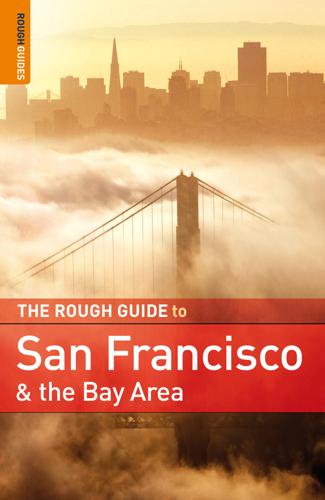
Rough Guide to San Francisco and the Bay Area
by
Nick Edwards
and
Mark Ellwood
Published 2 Jan 2009
An entertaining side trip is into the towering, triangular atrium of the adjacent Hyatt Regency, where the inverted shape of the terraces above gives the feeling that it could cave in at any moment. Mel Brooks fans will recognize this as the spot where the comic lost his marbles in 1977’s High Anxiety. Outside, it’s perhaps fitting that Justin Herman Plaza – named in honor of San Francisco’s father of urban renewal who, in the name of progress, bulldozed acres of historic buildings in the Western Addition after World War II – should be home to San Francisco’s least revered modernist work of art. FrenchCanadian artist Armand Vaillancourt’s 1971 Quebec Libre!, known locally as simply the Vaillancourt Fountain, is a tangled mass of square concrete tubing that looks as if it were inspired by air conditioning ducts.
…
This disaster was compounded by the fashion shift away from the Victorians’ excessive ornamentation in favor of less embellished stone and stucco homes. For a good chunk of the twentieth century, local Victorians became an endangered species: many were torn down during Justin Herman’s hurricane of urban renewal in the Western Addition (see p.135), while others were maimed simply through their owners’ economies. By the 1960s, though, grassroots support swelled for the structures, and the Victorian Alliance was formed to campaign for their preservation. A survey by the National Endowment for the Arts found only 13,487 Victorians remaining in the city (down from a pre-1906 peak of more than 58,000), of which only half had been unaltered.
…
Japanese-Americans were forcibly incarcerated in camps across the state by the federal government and forced to sell off their property at below-market prices. They only returned to the area in significant numbers following the construction of Japantown. Many of the cheap homes were sold to lower-waged African-Americans, and soon jazz clubs and black-owned businesses lined the streets. That is, until the area was leveled by the dual forces of 1960s urban renewal and blunderheaded civic planner Justin Herman. He demolished dozens of blocks of precious Victorian housing, replacing them with acres of monolithic concrete apartment blocks. Thanks to Herman and his henchmen, there’s now little to see in the area other than the famed Fillmore Auditorium, 1805 Geary Blvd at Fillmore (t 415/346-6000, w www.thefillmore.com), where promoter Bill Graham put on carnivalesque psychedelic rock shows for thousands of hallucinating hippies in the 1960s.
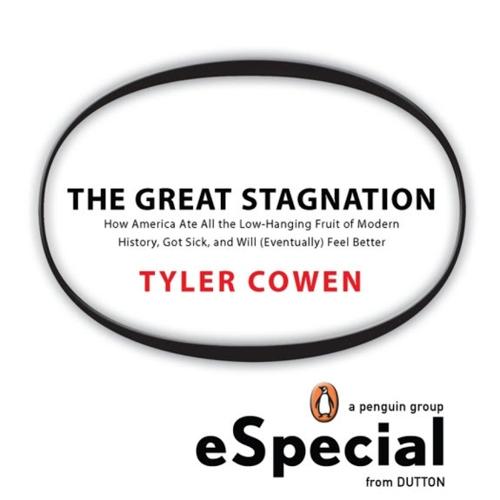
The Great Stagnation
by
Tyler Cowen
Published 24 Jan 2011
But still it is a general principle that the most fundamental functions of government are worth more than the extra, addon, or optional things that governments do. A dollar spent on very basic police and courts and army protection is worth more than a dollar spent on refurnishing a warehouse in Minneapolis under the guise of urban renewal. A dollar spent on welfare for the poorest is more valuable than a dollar spent extending the program to better-off but still poor cases. And so on. Yet when it comes to national income accounting, and measuring GDP, we are valuing every one of these different expenditures at $1. In our measurements, we are assuming that the quality, importance, and efficacy of government stays constant as the size of government grows.

The Great Shark Hunt: Strange Tales From a Strange Time
by
Hunter S. Thompson
Published 6 Nov 2003
A good example of the majority viewpoint shows up in the housing situation, which at the moment is inextricably linked with urban renewal. As it happens, the urban-renewal project centers mainly in the downtown Negro district, and most of the people who have to be relocated are black. It also happens that the only part of town to which Negroes can move is the West End, an old and tree-shaded neighborhood bypassed by progress and now in the throes of a selling panic because of the Negro influx. There is a growing fear, shared by whites and Negroes alike, that the West End is becoming a black ghetto. Frank Stanley, Jr., the Negro leader who said "Integration here is a farce," blames urban renewal for the problem.
…
All this is true -- and so it is all the more surprising to visit Louisville and find so much evidence to the contrary. Why, for instance, does a local Negro leader say, "Integration here is a farce"? Why, also, has a local Negro minister urged his congregation to arm themselves? Why do Louisville Negroes bitterly accuse the Federal urban-renewal project of creating "de facto segregation"? Why can't a Negro take out a mortgage to buy a home in most white neighborhoods? And why is there so much bitterness in the remarks of Louisvillians both black and white? "Integration is for poor people," one hears; "they can't afford to buy their way out of it."
…
Frank Stanley, Jr., the Negro leader who said "Integration here is a farce," blames urban renewal for the problem. "All they're doing is moving the ghetto, intact, from the middle of town to the West End." Urban-renewal officials reply to this by claiming the obvious: that their job is not to desegregate Louisville but to relocate people as quickly and advantageously as possible. "Sure they move to the West End," says one official. "Where else can they go?" It is a fact that whites are moving out of the West End as fast as they can. A vocal minority is trying to stem the tide, but there is hardly a block without a "For Sale" sign, and some blocks show as many as ten. Yet there is "hardly any" race prejudice in the West End.
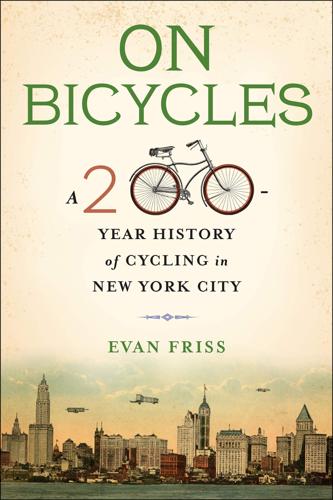
On Bicycles: A 200-Year History of Cycling in New York City
by
Evan Friss
Published 6 May 2019
“Mayor Breaks Ground for Eastchester Housing Project,” New York Times, September 29, 1948; Marlene Sciascia to John Lindsay, 20 October 1966, Box 103295, Folder 53, Records of the Department of Parks, Parks Commissioner and General Files, Municipal Archives, New York, NY. For more on Moses’s role in the city’s housing projects and urban renewal more generally, see Samuel Zipp, Manhattan Projects: The Rise and Fall of Urban Renewal in Cold War New York (New York: Oxford University Press, 2010). 44. “Bicycles Fill the Bill,” American Bicyclist and Motorcyclist, March 1942, 18; Marlene Sciascia to John Lindsay, 20 October 1966, Box 103295, Folder 53, Records of the Department of Parks, Parks Commissioner and General Files, Municipal Archives, New York, NY. 45.
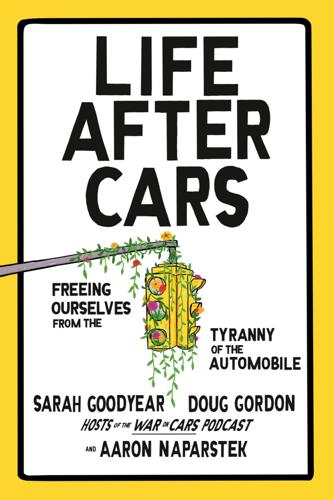
Life After Cars: Freeing Ourselves From the Tyranny of the Automobile
by
Sarah Goodyear
,
Doug Gordon
and
Aaron Naparstek
Published 21 Oct 2025
Not only do today’s ongoing road megaprojects in places like Houston, Austin, Phoenix, and New Jersey destroy people’s homes and businesses. Not only do they require enormous amounts of spending. Not only do they incentivize sprawl and lock future generations into the same exhausting drive-till-you-qualify nightmare that nobody wants to live. The toxic legacy of “urban renewal” road projects, Kimble’s book shows us, has so damaged community trust in the whole concept of urban planning that local residents are sometimes very skeptical of teardown projects, seeing them as another possible engine of displacement, with rising property values and potential gentrification the threat this time, rather than wrecking balls and bulldozers.
…
In an early 2024 referendum, voters approved a measure to triple parking fees for large SUVs in the city’s core. During the Olympics, the whole city took enormous pride in showing off the “new” Paris—a city that is still in recovery from car-centric planning decisions that obliterated many historic buildings to create auto infrastructure in the 1950s and ’60s. Those twentieth-century urban-renewal schemes echoed similar initiatives across North America and Europe, building highways like the Périphérique ring road that encircles central Paris. That road itself became a target in late 2024, when Hidalgo’s administration moved to mitigate the noise and pollution affecting the surrounding neighborhoods by lowering the speed limit from seventy to fifty kilometers per hour (roughly forty-five to thirty miles per hour).
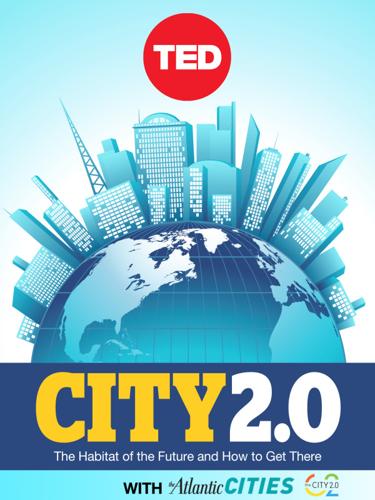
City 2.0: The Habitat of the Future and How to Get There
by
Ted Books
Published 20 Feb 2013
The results are unsustainable at the most personal and the most global levels. But while America changed — the market trending toward urban, mobile lifestyles — highways failed to change with it. Their role of connecting parts of the country hundreds of miles apart is undeniable, but in cities undergoing urban renewal, highways are increasingly problematic. Their blight on cities is generally recognizable as both causing great disinvestment in the area immediately surrounding them and also being particular to the cities they affect. Interstate 10 severs the New Orleans neighborhoods of the French Quarter, foreground, and the Treme.

Goddess of the Market: Ayn Rand and the American Right
by
Jennifer Burns
Published 18 Oct 2009
Jan Richman, a Los Angeles NBI representative, described her first meeting with Rand: “[She] said that I should take my glasses off. I took them off, and she said, you have very beautiful eyes. You shouldn’t hide them behind glasses; get contact lenses. I remember I felt like crying.” Martin Anderson, the author of a controversial book that attacked federal urban renewal programs, The Federal Bulldozer, was a professor at Columbia Business School when he and his girlfriend attended an NBI lecture they saw advertised in the New York Times. There he befriended Alan Greenspan, who invited him to several smaller events with Rand. Anderson remembers Rand as a “pussycat,” a warm and caring figure.
…
(New York: Lyle Stuart, 1968); John Hospers to AR, May 25, 1960, ARP 146-H01. 47. Letters, 531, 532. 48. Ibid., 532, 535, 533. 49. Karen Reedstrom, “Interview with Laurence I. Gould,” Full Context, November 1991, 3. 50. Jan Schulman, née Richman, September 26, 1997, Oral History, ARP; Martin Anderson, The Federal Bulldozer: A Critical Analysis of Urban Renewal 1949–62 (Cambridge, MA: MIT Press, 1964); Martin Anderson, interview with author, January 11, 2008. Charles and Mary Ann Sures also emphasize the warmer side of Rand in Facets of Ayn Rand (Irvine, CA: Ayn Rand Institute, 2001). 51. Karen Reedstrom, “Interview with Roger Donway,” Full Context, May 1992, 1; Karen Reedstrom and David Saum, “Interview with Ronald E.
…
Dictators, Democracy, and American Public Culture. Chapel Hill: University of North Carolina Press, 2003. Amadae, S. M. Rationalizing Capitalist Democracy: The Cold War Origins of Rational Choice Liberalism. Chicago: University of Chicago Press, 2003. Anderson, Martin. The Federal Bulldozer: A Critical Analysis of Urban Renewal 1949–62. Cambridge, MA: MIT Press, 1964. Anderson, Martin, and Barbara Honegger, eds. The Military Draft: Selected Readings on Conscription. Stanford, CA: Hoover Institution Press, 1982. Andrew, John A., III. The Other Side of the Sixties: Young Americans for Freedom and the Rise of Conservative Politics.
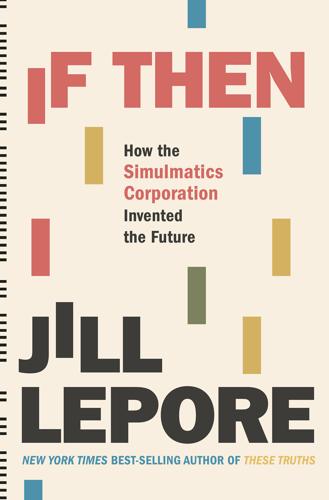
If Then: How Simulmatics Corporation Invented the Future
by
Jill Lepore
Published 14 Sep 2020
He moved into a house in Cambridge a few blocks from Pool.18 In the spring of 1967, Moynihan secured a contract for Simulmatics with the Eastman Kodak Company, in Rochester, New York.19 That summer, Simulmatics hired Moynihan as a consultant, for a term of three years, and appointed him to the research board. He was in the New York office often.20 Moynihan, then forty, was to be paid a minimum of $10,000 a year. He was also given a sizable amount of stock.21 Moynihan and Coleman teamed up on a Simulmatics project on urban design (which was another way of talking about “urban renewal”).22 But in joining Simulmatics, Moynihan had one particular research interest, above all: he wanted to know whether the computer simulation of urban problems could be used to predict race riots. This project began in Rochester. Since the riots there in 1964, community, civil rights, and labor organizers had pressed for change, including the institution of job training programs and fair employment practices at the Eastman Kodak Company.23 The company had made few changes.
…
The fantasy of predicting human behavior by way of machines did not. Instead, it took new forms, forms that depended on forgetting that Simulmatics had ever existed. By the time Simulmatics declared bankruptcy, the automated computer simulation of human behavior had fallen into disrepute, a casualty of McNamara’s simulated Vietnam, and of the disaster of urban renewal, its systems gone awry, its predictions proven wrong. In what one historian has called “the twilight of simulation,” universities stopped dedicating funding to systems analysis and simulation, journals stopped publishing, labs closed. MIT shut down its Urban Systems Lab, once headed by Ithiel de Sola Pool, in 1974.
…
“For anyone interested in an offbeat RANK speculation where the risks are tremendous, but the future exciting, we suggest you look closely at SIMULMATICS CORP. which is traded Over-the-Counter and presented quoted at 5–5½. This is a new company that is attempting to introduce a new idea to business and government by using human behavioral factors along with other data in electronic computers. The areas in which they can apply their technique are many and varied, for example: urban renewal, traffic patterns, new product introduction and advertising selection and marketing strategy. The officers of the company are the social scientists’ who’s who of the academic world, representing Johns Hopkins, Columbia, Yale, Harvard, and MIT. SIMULMATICS already has one contract from the Department of Health Education and Welfare and presently is negotiating an additional $800,000 of business.

Street Smart: The Rise of Cities and the Fall of Cars
by
Samuel I. Schwartz
Published 17 Aug 2015
As a reminder of how the federal government had become essential even to road building within cities, the last third of the Expressway couldn’t have been built at all without a very healthy contribution from the Highway Trust Fund, for which it qualified after a few hundred yards were shoehorned into the plans for Interstate 95. It was, along with the Verrazano-Narrows Bridge, the Master Builder’s last great success, and his swan song. By the time it opened, any notion that the Cross-Bronx Expressway would revive the Bronx specifically, and be a model for urban renewal generally, was the punch line to a joke. The Expressway hadn’t just destroyed East Tremont. Despite all the care Moses and his engineers lavished on keeping the Grand Concourse as grand as ever—the Concourse, unsurprisingly, with its 180-foot-wide streets and monumental architecture, was very much in the Moses style—it was already sliding into a vicious cycle of poverty and crime.
…
Despite his pedigree—four of his uncles had founded the multibillion-dollar family corporation in 1920—he was a down-to-earth, unassuming guy. A year before, Forest City Ratner had received the go-ahead from the relevant city and state authorities to start work on redeveloping the two dozen acres that had been designated the Atlantic Yards Urban Renewal Area, specifically the Long Island Rail Road yards between Atlantic Avenue and Pacific Streets.a The Atlantic Yards project called for a complex of residential and commercial buildings, but its centerpiece was to be a basketball and hockey arena, Barclays Center. Bruce had bought the NBA’s New Jersey Nets in 2004 and had spent the following two years planning to move the team to a new arena by the time he called on Sam Schwartz Engineering to design a transportation plan for it.
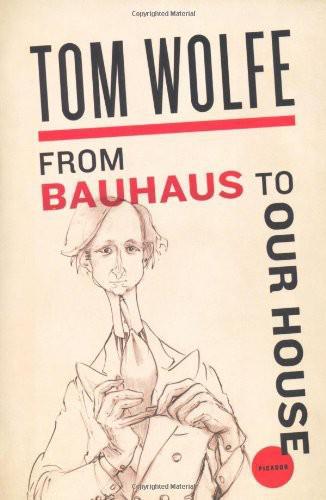
From Bauhaus to Our House
by
Tom Wolfe
Published 2 Jan 1981
Louis, July 15, 1972. Mankind finally arrives at a workable solution to the problem of public housing. That part of the worker-housing saga has not ended. It has just begun. At almost the same time that Pruitt-Igoe went down, the Oriental Gardens project went up in New Haven, the model city of urban renewal in America. The architect was one of America’s most prestigious compound architects, Paul Rudolph, dean of the Yale School of Architecture. The federal government’s Department of Housing and Urban Development, which was paying for the project, hailed Rudolph’s daring design as the vision of the housing projects of the future.

Instant City: Life and Death in Karachi
by
Steve Inskeep
Published 12 Oct 2011
At the close of World War II the Athenian oversaw substantial rebuilding in his battered nation, using American money provided by the Marshall Plan. He coined the term “ekistics” to describe the scientific study of human settlement, and he founded a firm that grew over many years to employ a staff of four hundred. They worked everywhere from Baghdad to Rio de Janeiro to cities in the United States—an urban renewal project in Philadelphia, the waterfront in Louisville, the redevelopment of Washington, D.C. Time magazine once described Doxiadis as a man who had “helped resettle 10 million humans in 15 countries.” As he considered the plan for a suburb at Korangi in 1958, Doxiadis recorded misgivings in his diary.
…
He worked for the government of Pakistan for much of the next decade. Doxiadis’s firm planned the new capital city, Islamabad, laid out in a green valley in the northern reaches of the country. Broad lawns surrounded public buildings. Future generations of American visitors would get the feeling that they had arrived in an American urban renewal project from the 1960s: Pakistan’s presidential palace brings to mind the Kennedy Center in Washington, no coincidence since the two buildings had the same American architect, Edward Durell Stone. In Islamabad, General Ayub Khan and his chief planner seized the rare opportunity of a blank slate.
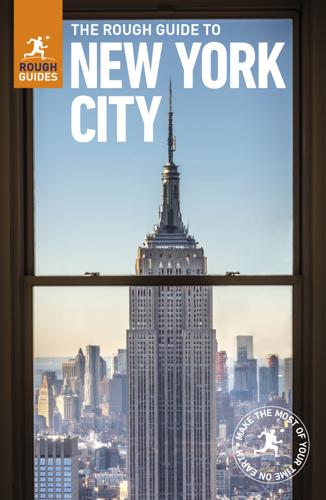
The Rough Guide to New York City
by
Rough Guides
Published 21 May 2018
What follows, in no particular order, is a selective taste of highlights: mind-blowing feats of engineering and design, waterfront amusements, hallowed art collections and, of course, plenty of eating, shopping and nightlife. 1 Statue of Liberty There’s no greater symbol of the American dream than the magnificent statue that graces New York Harbor. 2 Empire State Building Still the most original and elegant skyscraper of them all. 3 Metropolitan Museum of Art You could easily spend a whole day (or week or month) at the Met, exploring everything from Egyptian artefacts to modern masters. 4 9/11 Memorial & Museum The pools in the buildings’ footprints and museum artefacts including the “Last Column” can’t help but stir emotion. 5 Grand Central Terminal Hit up the shops, throw back some oysters and gawk at the celestial ceiling above the majestic concourse. 6 Baseball A summertime treat: enjoy a hot dog, a cold beer and America’s pastime in the Yankees’ or Mets’ homes – or for a more intimate experience, see a Cyclones game in Coney Island. 7 Museum of Modern Art Simply put, MoMA holds the most comprehensive collection of modern art in the world, curated in a breathtaking setting of glass atriums and statuary. 8 Pizza Whether you go nouveau (like at Roberta’s), Neapolitan or classic New York-style, you can’t leave without sampling the city’s signature dish. 9 Rockefeller Center If anywhere can truly claim to be the centre of New York, this stylish piece of twentieth-century urban planning is it. 10 Live jazz New York’s jazz scene is vibrant, but Harlem is first choice for interesting venues and late-night jam sessions. 11 Bar-hopping in Williamsburg Haute food, house-made bitters, vintage arcade games, a beer or three at a beloved local brewery – it all adds up to a night of good fun. 12 The Frick Collection He may have been a ruthless coal baron, but Henry Frick’s eye for art and the elegance of his collection’s setting make this one of the city’s best galleries. 13 Brooklyn Bridge Take the less-than-a-mile walk across the bridge to see beautiful views of the downtown skyline, Brooklyn waterfront and Harbor Islands. 14 A NIGHT AT THE THEATRE Can’t decide between a hit musical on Broadway or a quirky drama off it? See both. 15 The High Line This plant-lined Chelsea walkway offers a unique perspective on the city below and on the power of progressive urban renewal. 16 Central Park The city’s most beloved swathe of green: take a boat ride, watch Shakespeare in the Park or enjoy a picnic after a morning spent museum-hopping. 17 Staten Island Ferry Savour Manhattan’s skyline and the Statue of Liberty from a boat’s-eye view – absolutely free. 18 Long island city art MoMA PS1 is the focal point, but there are cool smaller galleries and, on the periphery, a funky sculpture park. 19 Coney Island Ride on classics like the Wonder Wheel or Cyclone, or on the new Thunderbolt, high above the boardwalk, for a seaside thrill
…
Brief history The centre is not, as most assume, named for President Abraham Lincoln; rather, it honours the name of the surrounding area in Manhattan’s early times, probably named Lincoln for a tenant farmer who tilled the land here. Robert Moses came up with the idea of creating a cultural centre here in the 1950s as a way of “encouraging” the area’s gentrification, one of his rare exercises in urban renewal that has been extremely successful. A number of architects worked on the plans, and the complex was finally built in the mid-1960s on a site that formerly held some of the city’s poorest slums. In a case of life imitating art imitating life, once the slums were emptied and their residents moved to ghettos farther uptown, the deserted area became a movie set: before construction began in 1960, the run-down buildings served as the open-air location for West Side Story, which was based on the stage musical set here.
…
In the 1960s and 1970s, drug lords such as Frank Lucas and Nicky Barnes made millions selling heroin; in the late 1980s, crack-cocaine devastated the neighbourhood. In the late 1990s, things began to turn around. A plethora of urban and community grants were put into effect for commercial and retail development, housing and general urban renewal. That initial investment is paying off: Harlem’s historic areas are well maintained and there seems to be construction everywhere you turn. The questions facing the community now are how to manage and control the area’s development (particularly as Columbia University expands into older neighbourhoods), as well as how to reconcile it with the long-term poverty and unemployment still very much in evidence.
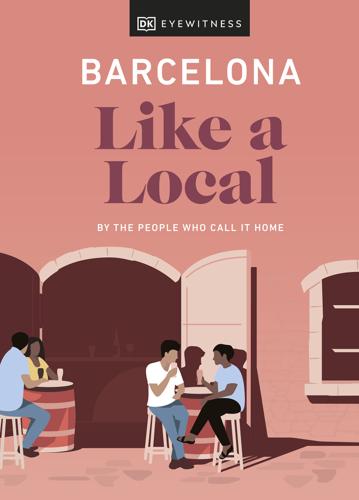
Barcelona Like a Local: by the People Who Call It Home
by
Dk Eyewitness
Families hold outdoor celebrations in its green spaces, folks enjoy a dose of culture at its world-class museums and wannabe Olympians make use of the running tracks. {map 3} Poblenou The former hub of Barcelona’s industry is now the heartland of young coffee-clutching professionals. Old factories house artists’ studios and cultural centres, plus the tech sector “Districte 22”. Barcelona’s version of Silicon Valley, this urban renewal project is aimed at tech start-ups. {map 5} Poble Sec Multicultural and working-class Poble Sec has managed to keep its edge in a city that’s fast-gentrifying. The little barri, at the foot of Montjuïc, is hard to beat for top-quality tapas joints, cheap and cheerful dive bars, and lively nightclubs.
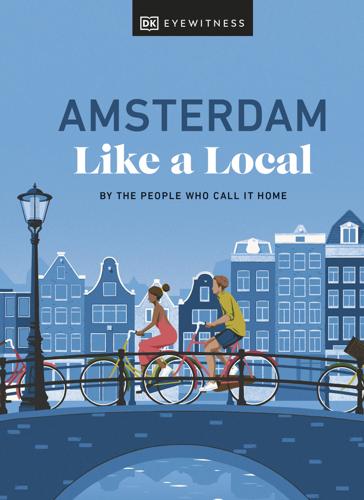
Amsterdam Like a Local
by
Dk Eyewitness
g Contents Amsterdam NEIGHBOURHOODS Amsterdam is a patchwork of village-like mini-neighbourhoods, each with its own personality. Here we take a look at some of our favourites. Bos en Lommer & De Baarsjes Built in the mid-1900s, these conjoined ’hoods with a strong Muslim community saw a wave of urban renewal and influx of cool dining spots in the 1990s. Now, they’re the place to be. {map 2} De Pijp Students, young creatives and a large LGBTQ+ community live in thriving De Pijp. After all, it has everything they want: hip bars, cafés and a distinct lack of tourists. {map 3} Grachtengordel Concentric rings of canals, lined with old, leaning buildings: this is quintessential Amsterdam.

The Human City: Urbanism for the Rest of Us
by
Joel Kotkin
Published 11 Apr 2016
On the ground, as Witold Rybczynski notes, the rise of successful urban cores increasingly has very little to do with Jacobs’s romantic notions about bottom-up organic urbanism: The most successful urban neighborhoods have attracted not the blue-collar families that she celebrated, but the rich and the young. The urban vitality that she espoused—and correctly saw as a barometer of healthy city life—has found new expressions in planned commercial and residential developments whose scale rivals that of the urban renewal of which she was so critical. These developments are the work of real estate entrepreneurs, who were absent from the city described . . . but loom large today, having long ago replaced planners and our chief urban strategists.96 As Rybczynski notes, the current rise of “urban vitality” derives not from the idiosyncratic, diverse, and, if you will, democratic form that Jacobs celebrated but from something more an expression of self-conscious corporate marketing.
…
“China Faces a Grad Glut After Boom at Colleges,” Wall Street Journal, http://www.wsj.com/articles/SB124087181303261033. ——— (2013, June 16). “China’s Great Uprooting: Moving 250 Million into Cities,” New York Times, http://www.nytimes.com/2013/06/16/world/asia/chinas-great-uprooting-moving-250-million-into-cities.html. JONES, E. Michael. (2004). The Slaughter of Cities: Urban Renewal as Ethnic Cleansing, South Bend: St. Augustine Press. JONES, Emrys. (1990). Metropolis: The World’s Great Cities, Oxford: Oxford University Press. JONES, Francis M. (1973). “The Aesthetic of the Nineteenth-Century Industrial Town,” The Victorian City: Images and Realities, London: Routledge & Kegan Paul.
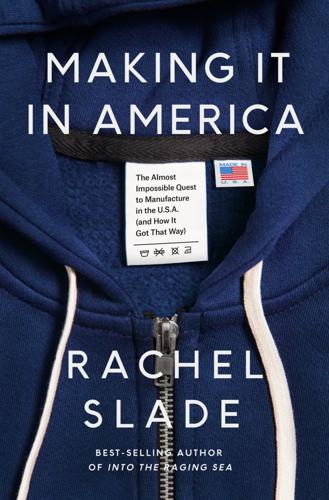
Making It in America: The Almost Impossible Quest to Manufacture in the U.S.A. (And How It Got That Way)
by
Rachel Slade
Published 9 Jan 2024
When the interstate system was completed in the late 1950s, Portland’s star dimmed considerably. The new highways ran north–south, funneling trade from Vermont and New Hampshire straight to Boston, Hartford, and New York City, bypassing Portland altogether. There was no work, there was no money. The city declined. Urban renewal and overzealous highway building in the 1960s and 1970s further sliced and diced the fabric of the old port city, leaving vast seas of open parking lots and highways and off-ramps that rendered the city’s neighborhoods a disjointed mess of remote islands. The city’s boom times were behind it, but Portland retained its middle-class pride.
…
American Roots’ cutter worked in a blocks-long cut-granite former cotton mill, built in the late nineteenth century, near the Taunton River, upriver from Buzzards Bay. The building sat in a sea of open parking lots dotted by fast-food joints. Much of the historic manufacturing city had been bulldozed during the urban renewal era, then cleaved by the construction of I-95. The pattern-cutter worked on the dusty top floor under the timber-framed roof. In the summer, it was like a sauna; in the winter, he could see his breath while he worked. To cut American Roots hoodie backs, fronts, sleeves, and hoods, he rolled out 100-foot lengths of cotton fleece on his table, creating a neat pile of fabric, maybe twenty layers thick.

Aerotropolis
by
John D. Kasarda
and
Greg Lindsay
Published 2 Jan 2009
Barely a year later, on June 22, 1988, the city and state announced a $700 million plan to essentially build a new airport atop the existing one, with long parallel runways, a sweet spot in between for the hub, and room to grow on either side. The next day, local officials announced what they dubbed the Louisville Airport Improvement Program: the condemnation, under “urban renewal” statutes, of the homes of 3,760 families in a half-dozen communities. Looking at a before-and-after mural hanging in the offices of the airport authority, one can see that entire neighborhoods have been wiped off the map. No one left empty-handed, at least—nearly $400 million was set aside to pay for buyouts of homes and businesses, including Minors Lane Heights, now the site of a “Renaissance Zone.”
…
They had worked so hard and so closely together under occasionally harrowing circumstances—Linda had had more than one gun waved in her face when she knocked on residents’ doors—that their manner suggested not just a married couple, but a married vaudeville couple, with Burt playing the polished magician and Linda his frazzled assistant. Exasperation still leaks into Burt’s voice when he describes the homeowners’ gut reaction to the improvement program: howling and lawsuits. Part of the problem was the “urban renewal” clauses in their foreclosures. Although he had tried to convince them that the payouts would be greater, a little extra cash had meant nothing to their pride—their homes were not blighted. They sued, took the relevant agencies to the Supreme Court, and won. Burt and Linda sighed and found another statute that would get the job done.
…
But no one cared what he thought after the “hip-hop mayor” quit office to serve time for perjury. Not that he was wrong—each ringleader flew here scheming to raise a new city beyond the ruins of his own. Can an aerotropolis save Detroit? The city that most desperately needs one is also its worst-case scenario. The self-styled “Renaissance City” has been a laboratory—and cemetery—for urban renewal fads since the 1970s. Perhaps the city’s most pathetic symbol of abortive rebirth is the People Mover, an elevated monorail gliding empty past downtown towers deserted for decades. Kasarda proposes custom-building cities by companies for companies, guaranteeing their survival by tailoring them to clients’ specifications— beginning with the airport.
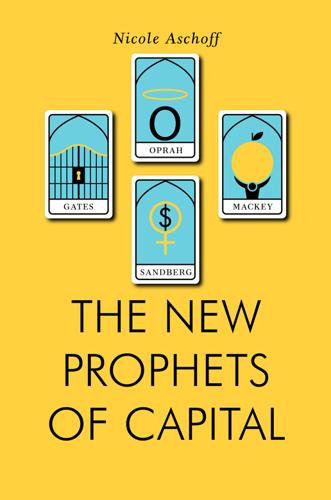
The New Prophets of Capital
by
Nicole Aschoff
Published 10 Mar 2015
The National Association for the Advancement of Colored People (NAACP), founded in 1909, was funded with money from numerous foundations, including Rosenwald, Peabody, and Rockefeller, and served as a crucial counterweight to the growing appeal of the Communist Party for black Americans during the 1920s. New Deal legislation of the 1930s was written by the Social Science Research Council, a Rockefeller organization, while Lyndon Johnson’s Great Society programs were developed from the Ford Foundation’s “Gray Areas” experiments—urban renewal programs designed to curb urban unrest and political organizing.13 The story today is similar. The consequences of skyrocketing inequality are of increasing concern, particularly to the super-elites. They worry about the long-term economic impacts of inequality, in terms of growth and innovation, and the political consequences of inequality—social unrest and demands for redistribution, particularly from the middle and upper-middle classes who believe in meritocracy.
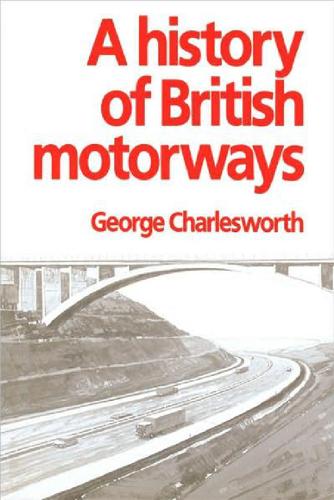
A History of British Motorways
by
G. Charlesworth
Published 1 Jan 1984
However, although the administrative arrangements covering urban modernisation may have been improved, economic difficulties and consequent cuts in capital investment in the public sector, pressures for the promotion of public transport together with strong environmental arguments against some forms of redevelopment and road building in urban areas, public participation and inquiry procedures, markedly slowed down urban renewal in the 1970s. Select Committees In 1972: a detailed review of urban transport planning was carried out by a Select Committee of the House ofCommons!3. After commenting that transport problems particularly in larger cities were the cause of "increasing public concern" they said there were doubts about the direction and efficiency of transport planning adducing as evidence for this: complaints about train and bus services; public demonstrations against urban motorways; dissatisfaction with traffic congestion; and "the swamping of city streets by private motor cars and intrusive heavy lorries".
…
It is clear that environmental and social factors are much more important in relation to urban motorways than to those in rural areas, and attempts to compare investment in rural and urban motorways are bound to be affected by the subjective nature of some of the assessments which have to be made. It is also clear that investment in motorways in urban areas is much more expensive than in rural areas although urban motorways can sometimes be fitted into more comprehensive schemes of urban renewal. New roads to by-pass urban communities have been successful not only in relieving congestion but also in improving amenity, particularly where heavy lorry traffic has been concerned. Motorways have undoubtedly proved valuable in this respect and the argument as to whether all-purpose by-passes specifically designed to by-pass local areas are a more efficient use of resources than the building of motorways as a system is one which does not seem to have been researched in depth.
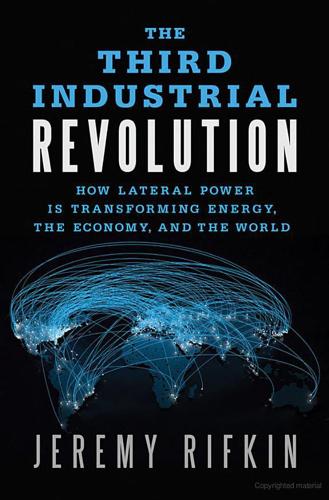
The Third Industrial Revolution: How Lateral Power Is Transforming Energy, the Economy, and the World
by
Jeremy Rifkin
Published 27 Sep 2011
The idea is similar to tax increment financing (TIF), which is used in redeveloping dilapidated areas in cities such as Chicago, Albuquerque, and Almeda. The basic idea is that the province would use the revenue generated from property taxes in the newly developed areas to finance urban renewal projects in the older sectors of the city. However, because the end goal of these initiatives is economic, the programs often receive criticism for being too much like a Robin Hood scheme—stealing from the rich and giving to the poor. But if the notion of urban renewal also included energy savings and environmental protection for the whole region, “energy financing” would ultimately benefit both the rich and the poor. The property tax revenue from new developments could be put into a fund that would help subsidize building owners in blighted areas of the city to retrofit their buildings.
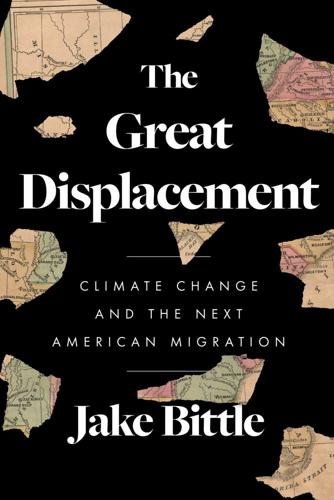
The Great Displacement: Climate Change and the Next American Migration
by
Jake Bittle
Published 21 Feb 2023
The second dam project fell by the wayside, as did other proposals to create new reservoirs in the area. The inaction lasted through the end of the century, with one exception. When a series of floods in the early 1980s caused heavy damage to a red-light district of Kinston called Happersville, the city took advantage of the disaster to engage in an impromptu urban renewal project. Happersville had for decades served as a kind of open-air waterfront bordello, drawing gamblers and criminals from all over the region, and now the city wanted to ensure it never recovered from the flood. Officials dipped into the town budget and came up with half a million dollars to pay off the impoverished residents of the district, giving them a cash stipend to move somewhere else.
…
from walking to school: Interview with Kim Sudderth, organizer from Mothers Out Front who helped advocate for a bus in Tidewater Gardens, April 2021. Michelle Cook passed away from complications of COVID-19 in late 2020. biggest public housing projects: Caleb Melby, “A Virginia City’s Playbook for Urban Renewal: Move Out the Poor,” Bloomberg Businessweek, September 22, 2020. See also Dana Smith, “Over Half of Tidewater Gardens Residents Re-Located to Make Way for Multi-Million Dollar Redevelopment,” 13News Now, June 29, 2021. or just too controversial: Interview with David Waggoner, architect at Waggoner Ball, and Mason Andrews, whose class at Hampton University designed the original Chesterfield flood resilience plan, March 2021.
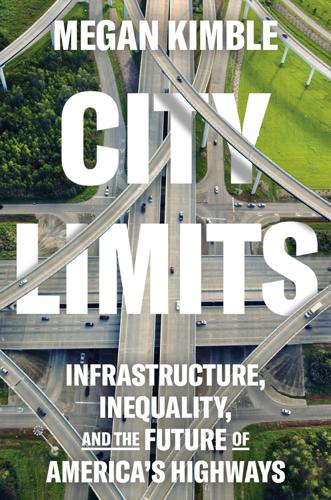
City Limits: Infrastructure, Inequality, and the Future of America's Highways
by
Megan Kimble
Published 2 Apr 2024
In 2018, two researchers compared digitized redlining maps with interstate routes and found that redlined neighborhoods were three times more likely to have an interstate highway routed through them than the best-rated neighborhoods. “Interstate highways caused sharp and persistent declines in population and housing stock for decades after they were built, and these declines were in addition to those resulting from neighborhood poverty, racial segregation, white flight, or urban renewal policies,” the researchers concluded. According to Eric Avila, an urban planning professor at the University of California, Los Angeles, between 1956 and 1966 highway construction demolished thirty-seven thousand units of housing annually. Decades later, the U.S. Department of Transportation would estimate that more than a million people were ultimately forced from their homes for highway construction.
…
GO TO NOTE REFERENCE IN TEXT Chapter 16: Repair A black-and-white aerial photograph: Seyma Bayram, “The Failed Akron Innerbelt Drove Decades of Racial Inequity. Can the Damage Be Repaired?,” Akron Beacon Journal, Feb. 3, 2022, www.beaconjournal.com/in-depth/news/2022/02/03/akron-innerbelt-history-racial-inequity-black-history-urban-renewal-ohio/9033520002. GO TO NOTE REFERENCE IN TEXT a $17.7 million grant: “Project Profile: Rochester Inner Loop East, New York, a Freeway to Boulevard,” Federal Highway Administration, Center for Innovative Finance Support, www.fhwa.dot.gov/ipd/project_profiles/ny_freeway_to_boulvard_rochester.aspx.

Lonely Planet Pocket Berlin
by
Lonely Planet
and
Andrea Schulte-Peevers
Published 31 Aug 2012
(www.alexacentre.com, in German; Grunerstrasse 20; 10am-9pm Mon-Sat; U-/S-Bahn Alexanderplatz) ALDOPAVAN/LONELY PLANET IMAGES © Potsdamer Platz Despite the name, Potsdamer Platz is not just a square but Berlin’s newest quarter, birthed in the ’90s from terrain once bisected by the Berlin Wall. A collaborative effort by the world’s finest architects, it is a vibrant showcase of urban renewal. A visit here is easily combined with the Kulturforum, a cluster of top-notch museums and concert halls, including the world-famous Berliner Philharmonie. Top Sights Potsdamer Platz (Click here) Gemäldegalerie (Click here) Best of Berlin Historical Sites Topographie des Terrors (Click here) Gedenkstätte Deutscher Widerstand (Click here) Checkpoint Charlie (Click here) Art Gemäldegalerie (Click here) Neue Nationalgalerie (Click here) DaimlerContemporary (Click here) Berliner Philharmonie (Click here) Live Music Berliner Philharmonie (Click here) Getting There Bus The 200 comes from Zoologischer Garten and Alexanderplatz, the M41 from the Hauptbahnhof and the M29 from Checkpoint Charlie.
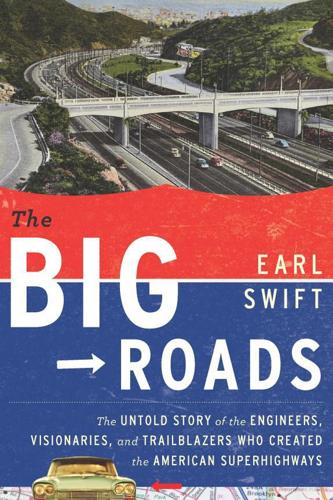
The Big Roads: The Untold Story of the Engineers, Visionaries, and Trailblazers Who Created the American Superhighways
by
Earl Swift
Published 8 Jun 2011
These new investments could " block the logical projection of the needed new arteries." In short, it would be easier and cheaper to take advantage of the blight before the blight was cleaned up. To read these passages today, tucked into the dense text of a little-known 1939 report, is to feel a twinge of foreboding, for the urban-renewal formula laid out in Toll Roads and Free Roads was exactly that adopted by cities across the nation a few years later—and because, for all of its clarity and comprehensiveness, the document overlooked an important element of the slum areas it targeted: degraded though they might be, they were home to millions of people. *** Among those praising Toll Roads and Free Roads was Miller McClintock, the originator of the friction theory, who'd long corresponded with MacDonald; he called the report " an excellent example of economic common sense and practical administrative statesmanship."
…
But " in most instances" the selected routes aimed for " sections where property values are low, and most of the buildings are of the type that should be torn down in any case, to rid the city of its slums." MacDonald's boss, General Fleming, went so far as to propose that Truman assign him the nation's entire urban renewal effort, arguing that highway and housing officials would be able to better choreograph their efforts. The president wasn't interested; he instead backed what became the Housing Act of 1949, which replaced decrepit slums with often-bleak public housing projects. Still, the Chief threw Public Roads into its part of changing the cityscape.
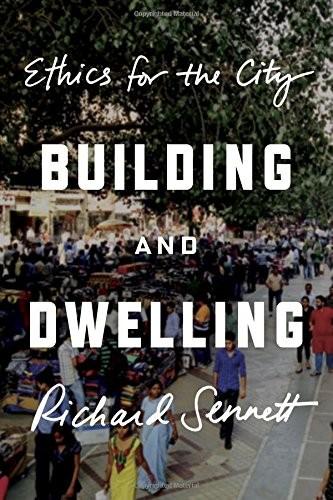
Building and Dwelling: Ethics for the City
by
Richard Sennett
Published 9 Apr 2018
See Florian Urban, Tower and Slab (London: Routledge, 2012), pp. 148–64. 28. Campanella, The Concrete Dragon, pp. 144–71, especially pp. 163ff. 29. So, too, Marc Fried found that a level-and-rebuild urban renewal project in Boston in the mid-twentieth century prompted profound social disorientation; see Marc Fried, ‘Grieving for a Lost Home: Psychological Costs of Relocation’, in Urban Renewal: The Record and the Controversy, ed. James Q. Wilson (Cambridge, Mass.: MIT Press, 1966), pp. 359–79. 30. Herbert J. Gans, The Urban Villagers: Group and Class in the Life of Italian-Americans (New York: Free Press, 1982). 31.
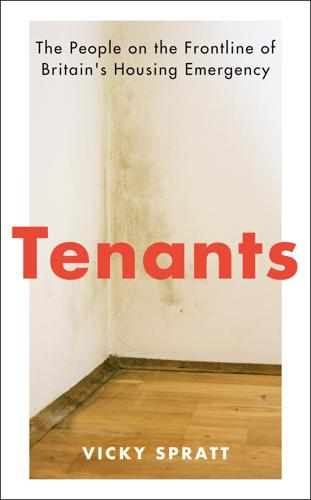
Tenants: The People on the Frontline of Britain's Housing Emergency
by
Vicky Spratt
Published 18 May 2022
Fullilove has spent decades of her career studying how people from urban areas in the United States invest in the places they inhabit and what happens to them when they are suddenly forced to leave, through the so-called ‘regeneration’ programmes that so often result in social cleansing. But ‘root shock’ can also be seen in the psychiatric trauma experienced by people who are evicted or displaced for other reasons. When there is emotional pain, psychiatrists like Fullilove like to believe they can help. But, as she wrote in her 2004 study of the psychological impact of urban renewal policies on the people they displace, psychiatrists cannot act in the interest of those in suffering until they find ‘some handle for the problem, some name to guide action’. When a plant is moved, gardeners know it must be done carefully. If it is not, the transplanted tree or shrub can experience ‘root shock’.
…
They may use Right to Buy, or become a landlord through buy-to-let; they may move to a cheaper area to rent in the hope of one day being able to buy, or to buy somewhere cheap in the hope of making money on their home. In this economy, as the cost of living and housing rises but wages do not, who could blame them? But although such decisions make financial sense for the individual, they hurt the fortunes (and wellbeing) of others. That’s the push–pull of Britain’s housing market. To this day, urban renewal or regeneration is always premised on the idea of such progress, of socially balanced and mixed communities, but, just as Ruth Glass was sceptical that this was being achieved when slums were cleared in the 1960s to make way for municipal housing, there is reason to be sceptical now: the very blocks that were built on slum-cleared land, like the Aylesbury and Heygate estates in Elephant and Castle, have now been demolished and replaced with new builds that are not affordable to local people.

Frommer's London 2009
by
Darwin Porter
and
Danforth Prince
Published 25 Aug 2008
. • Cruising London’s Waterways: In addition to the Thames, London has an antique canal system, with towpath walks, bridges, and wharves. Replaced by the railroad as the prime means of transportation, the canal system was all but forgotten until it was rediscovered by a new generation. Now undergoing a process of urban renewal, the old system has been restored, with bridges painted and repaired, and paths cleaned up, for you to enjoy. See “River Cruises along the Thames,” on p. 249. • Spending Sunday Morning at Speakers Corner: At the northeast corner of Hyde Park, a British tradition carries on. Speakers sound off on every imaginable subject, and “inyour-face” hecklers are part of the fun.
…
Strolling through Covent Garden: George Bernard Shaw got his inspiration for Pygmalion here, where the cockney lass who inspired the character of Eliza Doolittle sold violets to wealthy opera-goers. The old market, with its cauliflower peddlers and butchers in blood-soaked aprons, is long gone. What’s left is London’s best example of urban renewal and one of its hippest shopping districts. There’s an antiques market on Monday and a crafts market Tuesday through Saturday. See p. 286 for market details. When you’re parched, there are plenty of pubs to quench your thirst, including the Nags Head, 10 James St., WC2 (& 020/ 7836-4678; p. 308), an Edwardian pub that’ll serve you a draft of Guinness and a plate of pork cooked in cider.
…
It maintains its own Information Centre at St. Paul’s Churchyard, EC4 (& 020/73321456), which is open daily from 10am to 5:50pm. The East End Traditionally, this was one of London’s poorest districts, nearly bombed out of existence during World War II. In the words of one commentator, Hitler created “instant urban renewal” here. The East End extends east from the City Walls, encompassing Stepney, Bow, Poplar, West Ham, Canning Town, and other districts. The East End is the home of the cockney. To be a true cockney, it’s said that you must be born within the sound of the Bow Bells of St. Mary-leBow church, an old church rebuilt by Sir Christopher Wren in 1670.

The Rise of the Network Society
by
Manuel Castells
Published 31 Aug 1996
As a 20–year-old political exile, without much to lose except my revolutionary ideals, I was given shelter by a Spanish construction worker, an anarchist union leader, who introduced me to the tradition of the place. Nine years later, this time as a sociologist, I was still walking Belleville, working with immigrant workers’ committees, and studying social movements against urban renewal: the struggles of what I labeled “La Cité du Peuple,” reported in my first book.87 More than thirty years after our first encounter, both Belleville and I have changed. But Belleville is still a place, while I am afraid I look more like a flow. The new immigrants (Asians, Yugoslavs) have joined a long-established stream of Tunisian Jews, Maghrebian Muslims, and southern Europeans, themselves the successors of the intra-urban exiles pushed into Belleville in the nineteenth century by the Hausmannian design of building a bourgeois Paris.
…
The new immigrants (Asians, Yugoslavs) have joined a long-established stream of Tunisian Jews, Maghrebian Muslims, and southern Europeans, themselves the successors of the intra-urban exiles pushed into Belleville in the nineteenth century by the Hausmannian design of building a bourgeois Paris. Belleville itself has been hit by several waves of urban renewal, intensified in the 1970s.88 Its traditional physical landscape of a poor but harmonious historic faubourg has been messed up with postmodernism, cheap modernism, and sanitized gardens on top of a still somewhat dilapidated housing stock. And yet, Belleville in 1999 is a clearly identifiable place, both from the outside and from the inside (see figure 6.9).
…
We both agreed that the new architectural monuments of our epoch are likely to be built as “communication exchangers” (airports, train stations, intermodal transfer areas, telecommunication infrastructures, harbors, and computerized trading centers). 86 For a useful debate on the matter, see Lillyman et al. (1994). 87 Castells (1972: 496ff). 88 For an updated social and spatial, illustrated history of Belleville, see the delightful book by Morier (1994); on urban renewal in Paris in the 1970s, see Godard et al. (1973). 89 Boyer (1994). 90 Jacobs (1993). 91 Machimura (1995: 16). See his book on the social and political forces underlying the restructuring of Tokyo: Machimura (1994). 7 The Edge of Forever: Timeless Time We are embodied time, and so are our societies, made out of history.
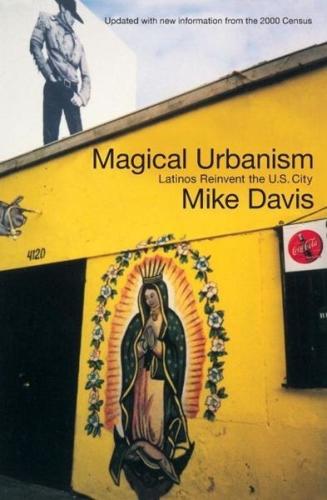
Magical Urbanism: Latinos Reinvent the US City
by
Mike Davis
Published 27 Aug 2001
what Thus in critics have termed "city-sponsored western suburban Addison, following a large Latino influx in the 1980s, the village purchased and de- stroyed most of a sprawling apartment complex that was the center of an immigrant community. In charging Addison with violat- ing the Fair Housing Act, an assistant attorney general observed, "This is not urban renewal, it is urban destruction motivated by the national origin of the residents." torney General's Office Similarly, the Illinois At- denounced (whose Latino population exploded from percent in 1990) for using Latinization. the illegal Cicero 8.6 percent in 1980 to 37 occupancy ordinances to stop "The town has made no number of inner-suburban secret that it wanted to Hispanics."
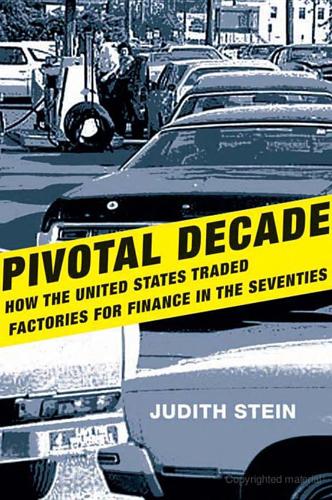
Pivotal Decade: How the United States Traded Factories for Finance in the Seventies
by
Judith Stein
Published 30 Apr 2010
Many jobs and much of the middle class had moved from cities such as Detroit, Chicago, Cleveland, Philadelphia, New York, and Boston to the suburbs, or even farther away from urban areas during the 1950S and 1960S. Cities attempted to attract the middle class back with arts centers, sports stadiums, hospitals, and universities, and this form of urban renewal often destroyed working-class neighborhoods, Such victims relocated in adjacent quarters, which became overcrowded and turned run-down areas into genuine slums.10 At the same time, the continued black migration from the South turned cities like Newark, Detroit, and Gary into majority-black municipalities.
…
New York Times, Nov. 5, 1975. 8. Harry McPherson, A Political Education (Boston: Houghton Mifflin, 1972), 37–39. 9. Harry McPherson Oral History Interview, 4/9/69, 7, Internet Copy, Lyndon Baines Johnson Library and Museum, Austin, Tex. 10. Martin Anderson, The Federal Bulldozer: A Critical Analysis of Urban Renewal, 1949–1962 (Cambridge, Mass.: MIT Press, 1964). For the story of the Hough neighborhood in Cleveland, see Todd Swanstrom, The Crisis of Growth Politics: Cleveland, Kucinich, and the Challenge of Urban Populism (Philadelphia: Temple University Press), 1985), 98–100. 11. Margaret Weir, Politics and Jobs: The Boundaries of Employment Policy in the United States (Princeton: Princeton University Press, 1992), 86. 12.
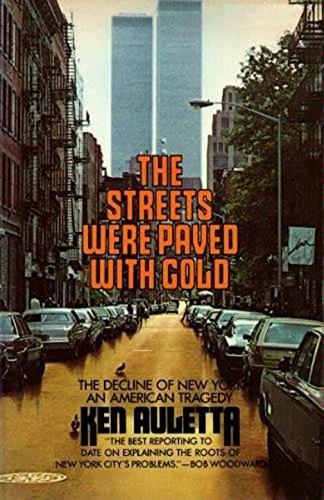
The Streets Were Paved With Gold
by
Ken Auletta
Published 14 Jul 1980
Two 1975 audits by state Comptroller Arthur Levitt disclosed that in fiscal 1973, city officials borrowed money by claiming as collateral $324 million in fictitious state and federal aid. The audits revealed that by June 30, 1975, the city had overstated—by a staggering $408.3 million—its real-estate taxes. The city accomplished this feat by including in its tax base properties that paid no taxes: “diplomatic properties … vacant land, city-occupied office buildings, an urban-renewal land site, Carnegie Hall, and even a public park and high school.” The audit showed that these “receivables” were then knowingly pledged to repay $380 million of tax anticipation notes issued on June 11, 1975. To borrow, the city claimed revenues it did not have and had no hope of getting. An October 1, 1974, memo from Clifford to Comptroller Goldin stated: “to balance the expense budget, the City employs a series of unsound budgeting and accounting practices including carrying forward bogus receivables … [and] overestimation of revenues.… In New York City, we create a receivable not when we bill for services, not when we deliver reimburseable services, but when we estimate revenues.… In this method overestimations of state and federal aid need never be recognized, they can simply be rolled over.… The total amount of bad receivables which may have been rolled forward may exceed $500 million.”
…
It kind of feeds on itself.” Many of those mom-and-pop stores—groceries, luncheonettes, dry-cleaning shops—don’t show up on the Bureau of Labor Statistics reports because they often paid salaries off the books. Many were victims of “progress.” Such major construction projects as the Cross Bronx Expressway, urban renewal, the World Trade Center in downtown Manhattan, uprooted neighborhoods and the satellite businesses that serve them. Perhaps eventually those people and businesses would have left anyway. Older cities like New York suffer from obsolescence. Small garment center lofts were designed to serve neighborhood retail haberdashers, not large discounters like J.
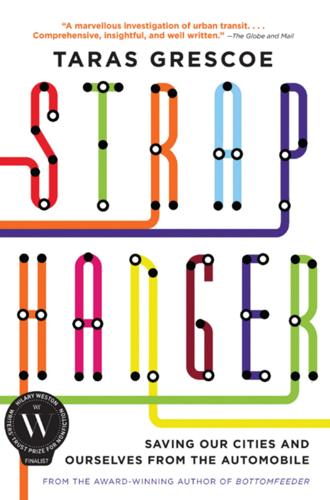
Straphanger
by
Taras Grescoe
Published 8 Sep 2011
Toronto’s answer to the redlining of poor districts—the denial of federally guaranteed mortgages that doomed so many African-American and immigrant neighborhoods in the United States—was “white-painting.” In the ‘70s, proto-gentrifiers, young professionals the Toronto Star dubbed “urban adventurers,” slapped coats of acrylic on century-old downtown rowhouses, brilliantly proclaiming their intentions to build lives in the city. At the same time, Canadian efforts at urban renewal tended to be far more modest. After experiments with concrete-slab housing projects—among them the blighted Regent Park and St. James Town—proved unpopular, Toronto built a modern neighborhood of low-rise brick row houses called the St. Lawrence community. A textbook example of what would now be called transit-oriented infill, the relative prosperity and low rates of rental turnover of this central-city neighborhood remain a reproach to crime-ridden Le Corbusier–inspired projects in other cities (at least those that haven’t been demolished).
…
Milwaukee, San Francisco, Baltimore, and New Haven have already revived neighborhoods by tearing out stretches of inner-city expressways, and Seattle’s Alaskan Way Viaduct, New Orleans’s Interstate 10, Cleveland’s West Shoreway, and parts of Philadelphia’s Interstate 95 could be turned into tree-lined, stoplighted boulevards, or torn out altogether. (Kick-starting urban renewal by removing the expressways that initiated blight in the first place would also be sweet justice.) I’ve been traveling the world as a straphanger for years now, and I’m not going to pretend it was always an uplifting experience. Riding public transport, you see a bit of everything. In Shanghai, I watched a tiny boy beggar enter a metro car, throw himself on his knees in front of a well dressed woman on a bench seat, and repeatedly kowtow, bashing his forehead on the floor until she handed him a coin.

Masters of Mankind
by
Noam Chomsky
Published 1 Sep 2014
Similarly, it may be true, in the abstract, that “the techniques of economic stimulation and stabilization are simply neutral administrative tools capable of distributing national income either more or less equitably, improving the relative bargaining position of either unions or employers, and increasing or decreasing the importance of the public sector of the economy.56 But in the real world, as the same author points out, these “neutral administrative tools” are applied “within the context of a consensus whose limits are defined by the business community.” The tax reforms of the “new economics” benefit the rich.57 Urban renewal, the war on poverty, expenditures for science and education, turn out, in large measure, to be a subsidy to the already privileged. There are a number of ways in which the intellectual who is aware of these facts can hope to change them. He might, for example, try to “humanize” the meritocratic or corporate elite or the government bureaucrats closely allied to them, a plan that has seemed plausible to many scientists and social scientists.

Frommer's England 2011: With Wales
by
Darwin Porter
and
Danforth Prince
Published 2 Jan 2010
An easy trip from London, Kew 8 04_615386-ch01.indd 804_615386-ch01.indd 8 8/24/10 2:06 PM8/24/10 2:06 PM W W W W W W W Wandering through Covent Garden: George Bernard Shaw got his inspiration for Pygmalion here, where the character of Eliza Doolittle sold violets to wealthy operagoers. The old fruit-and-vegetable market, with its Cockney cauliflower peddlers and butchers in blood-soaked aprons, is long gone. But what’s left is just as interesting: Today’s Covent Garden is London’s best example of urban renewal. An antiques market is in the piazza on Monday, a crafts market Tuesday through Saturday. See p. 107 and p. 215. Enjoying a Traditional Afternoon Tea: Nothing is more typically British, and it’s a great way to spend an afternoon. We suggest our favorite places for tea on p. 165. Viewing the Turners at the Tate: Upon his death in 1851, J.
…
With the right companion, it’s one of the most idyllic ways to spend a sunny London afternoon. See p. 198. Cruising London’s Waterways: In addition to the Thames, London is riddled with an antique canal system, complete with towpaths, bridges, and wharves. Replaced by the railroad, the system was forgotten until rediscovered by a new generation. An urban renewal effort has restored the system, with bridges painted and repaired, and towpaths cleaned up. See p. 207. Watching the Sunset at Waterloo Bridge: Waterloo Bridge is the best place in London to watch the sun set over Westminster. From here, you can also see the last rays of sunlight bounce off the city spires in the East End.
…
BIRMINGHAM & THE WEST MIDLANDS The area known as the West Midlands embraces the so-called “Black Country.” Birmingham, nicknamed “Brum,” is Britain’s largest city after London. This sprawling metropolis is still characterized by its overpass jungles and tacky suburbs, as well as its great piles of Victorian architecture. Urban renewal is underway, however. The English marshes cut through the old counties of Shropshire and Herefordshire. The Ironbridge Gorge was at the heart of the Industrial Revolution, and the famous Potteries are in Staffordshire. EAST ANGLIA (ESSEX, CAMBRIDGESHIRE, NORFOLK & SUFFOLK) SUGGESTED ENGLAND ITINERARIES The Regions in Brief 4 East Anglia, a semicircular geographic bulge northeast of London, is the name applied to these four very flat counties.

From Counterculture to Cyberculture: Stewart Brand, the Whole Earth Network, and the Rise of Digital Utopianism
by
Fred Turner
Published 31 Aug 2006
As Katherine Hayles has observed, such devices “functioned as exchangers,” bringing “man and machine into equivalence.”49 In the process, they served to exemplify in real, concrete terms—and thus to legitimate—the claims of cyberneticians and systems theorists that just as information itself spanned multiple domains, their theory could be deployed in multiple disciplines. Over the two decades following World War II, such claims found a home in massive military research projects; in a variety of academic disciplines, including management theory, clinical psychology, political science, biology, and ecology; and ultimately in the urban renewal projects of Lyndon Johnson’s Great Society.50 As Katherine Hayles and Steve Heims have shown, cybernetics’s migration into the social and, to some extent, the physical and biological sciences was driven in large part by the Macy Conferences.51 Sponsored by the Macy Foundation in the late 1940s and early 1950s, these meetings brought together biologists, physicists, and mathematicians, including cyberneticians such as Arturo Rosenblueth and Warren McCulloch, psychiatrists such as Ross Ashby, and sociologists and anthropologists such as Gregory Bateson and Margaret Mead.
…
For more on Ashby’s homeostat, see Hayles, How We Became Posthuman, 65 – 66. 49. Hayles, How We Became Posthuman, 62. [ 266 ] N o t e s t o Pa g e s 2 6 _ 3 2 50. See Lilienfeld, Rise of Systems Theory. For a fascinating study of the roles defense planners and cybernetics played in cold war attempts at urban renewal, see Light, From Warfare to Welfare. 51. Hayles, How We Became Posthuman; Heims, Social Science for Post-War America. 52. According to Hayles, these meetings ultimately helped bring into existence a new cultural category, the “posthuman.” Within this view, she writes, the world consists of information patterns and the boundaries of the individual body and mind are highly porous, and because of these facts, the human being can be “seamlessly articulated with intelligent machines.”
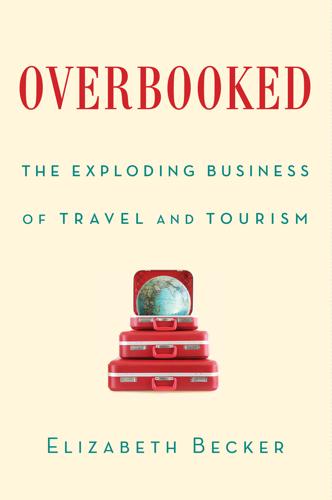
Overbooked: The Exploding Business of Travel and Tourism
by
Elizabeth Becker
Published 16 Apr 2013
“We had been a city of millionaires fascinated by the river and trade since the eighteenth century, a golden age . . . then Bordeaux lost its role, no trade, no industry, and we treated our city’s patrimony badly . . . our wines are absolutely magical, so why wasn’t Bordeaux seductive, too?” Delaux said the tourism campaigns were planned in parallel with Juppé’s urban renewal. “Before, Bordeaux was absolutely not touristic—no, not at all. Tourists were condescending towards Bordeaux. They were only interested in the vineyards.” The public works proceeded apace, cleaning the city, uncovering buildings that had been shrouded in two centuries of filth. “We were shocked by its beauty.”
…
W., Jr., 28–29 Apsara association, 97, 100 Aquaventure, 179 Arabian Peninsula, habitat destruction in, 198–99 Arabic language, 202 Arab Spring, 169, 181, 193 tourism and, 19 Arden, Miguel, 376 Arias Sánchez, Óscar, 255 Arison, Micky, 134, 141 Arison, Shari, 134 Arison, Ted, 133–37, 140, 141 modern cruise ship industry created by, 133–34, 135–36 Arison School of Business, 141 Armani, Giorgio, 178 Armani Hotel Dubai, 178 Aruba, 150 Ashoka Changemakers, 268 Asian Development Bank, 98–99 Asian tourists: in Cambodia, 93 sex tourism and, 118–19 Atlanta, Ga., 1996 Olympics in, 350, 351 Atlantic, 370 Atlantis Hotel, Dubai, 178–79, 180, 196 ATOUT France, 46, 47, 52, 66, 75 Auschwitz, Poland, 106 Australia, Chinese tourists in, 307 Baedeker, Karl, 26 Baedeker travel guides, 23 Bahamas, 157, 161 ship registry of, 140 Bahrain, 172, 193 Baker, Simeon, 127 Bali, 197, 281 Banda, Rupiah, 229–30, 237–38 Bangkok, 37, 281 Bangladesh, 183 Bank of China, 236 Barboza, David, 314–15 Barcelona, 1992 Olympics in, 350 Bargemon, France, 73 Bar Harbor, Maine, 152 Barro Colorado, 248 Baumgartner, Jean-Claude, 273–74 Bayon, 93, 98 Beijing, China, 296 architectural and cultural destruction in, 297–99 “Democracy Wall” in, 297 International Tourism Conference in, 303–4, 306 Tiananmen Square massacre in, 305, 330 2008 Olympics in, 293–94, 322, 323, 333 Beijing Marriott Hotel City Wall, 312–13, 315, 316 Belize, 130–31, 150, 153 Belize Audubon Society, 153 Bennett, Paul, 152 Berlin Wall, fall of, 13, 173 Bethlehem, West Bank, 185 Bhutan, 21 bin Laden, Osama, killing of, 366 Bin Tahnoon Al Nahyan, Sultan, 193 Bizzaro, Andrea, 219 Bjørnøy, Helen, 162–63 Black Lamb and Grey Falcon (West), 25 Blum, Léon, 52 BOAC, 172 Bordeaux, France, 37, 58–66 Tourism Bureau of, 64 Bordeaux City, France, 58–59 tourism policy of, 64–65 urban renewal in, 59–60, 61–62, 63, 64–66 Bordeaux Uncorked, 63–64 Bosnian War, 25 Botswana, 208, 209, 233 Bourdain, Anthony, 32 Bowling, Charles, 370 Bradesco Bank, 275 Brazil, 36–37, 272–76 deforestation in, 275 sex tourism in, 116 2016 Summer Olympics in, 273, 276, 362 U.S. visa applications in, 364 Brazilian tourists, in U.S., 365 Brenes Mora, Alberto Manuel, 251 British Airways, 175 British tourists: declining U.S. travel of, 356 in France, 49, 50–51 Brocon Group, 112 Broderick, Douglas, 100 Bruner, Edward M., 241–42 Bryson, John, 365 Buddha Zen Hotel, 338–39 Budowski, Gerardo, 251 Building Towers, Cheating Workers (Human Rights Watch), 187 Burj Al Arab Hotel, 195, 200 Burj Khalifa, 167, 177–78 Burma, 19 Burton, Richard, 25 Bush, George W., 348, 354, 359 Bush (George W.) administration, 353, 354, 358, 359–60, 366, 374 Bushcamp Company, 214, 217, 219, 225–29 Byrd, Richard E., 24 Byron, George Gordon, Lord, 82 Caballos-Lascuráin, Héctor, 266 Cabrini, Luigi, 35 California, 161 Calvo, José, 252 Cambodia, 37, 87–89 evictions and land seizures in, 109–13 foreign investment in, 96, 99, 100 French colonial legacy of, 89 Khmer Rouge in, 88, 90, 92, 95, 104, 105–8 money-laundering in, 113 orphanages in, 101–3 poverty and unemployment in, 91 private coastline development in, 111–12 Tourism Ministry of, 105, 108–10, 119 U.N. peacekeeping mission to, 89, 114–15 Vietnamese invasion of, 106 wealth inequality in, 101 Cambodia, tourism in, 14, 21, 89–121 Asian tourists in, 93 beach resorts in, 92, 105 casinos in, 112–13 corruption in, 91–92, 96, 100–101, 104, 108–9 “dark tourism” in, 92, 107 as development strategy, 99 as percentage of economy, 92 sex trade in, 92, 93, 104–5, 111, 114–21 South Korea and, 98–99 travel philanthropy scams in, 101–2, 103 see also Angkor temples Cambodian War, 87–88 Cambridge, Catherine, Duchess of, 385 Camp, Beatrice, 364 Canada, 16, 377 capuchin monkeys, 252, 261–62 carbon emissions, 20, 38, 195–96, 199–200, 271, 276 Carnival Corporation, 133 Carnival Cruise Lines, 137–38, 140–41, 143, 149 Arison and, 133–34, 136–37 Diamonds International and, 149 illegal waste water dumping by, 159 ship registry of, 140 Carnivale (cruise ship), 137 Carr, Greg, 238–39 Carr, Norman, 217–18 Carte Blanche (Deaver), 180 Catholic Relief Services, 259 Center for Responsible Travel (CREST), 259–60, 268 Center on Ecotourism and Sustainable Development, 153 Centers for Disease Control, U.S., 379 Central American Free Trade Agreement (CAFTA), 260 Centre Georges Pompidou, 56 Cerro Frantzius, 250 Certification for Sustainable Tourism, 261 Cézanne, Paul, 47 Chakari, Mohammad Sidiq, 183 Changqing Nature Reserve, 336 Charles de Gaulle Airport, 56–57, 171 Château Haut-Bailly, 60–61 Cheng, Henry K.
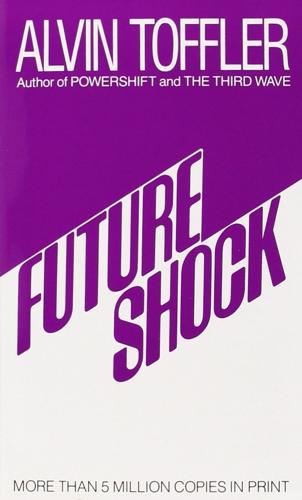
Future Shock
by
Alvin Toffler
Published 1 Jun 1984
The economy demands mobility, and most Western governments—notably Sweden, Norway, Denmark, and the United States—spend large sums to encourage workers to retrain for new jobs and leave their homes in pursuit of them. For coalminers in Appalachia or textile workers in the French provinces, however, this proves to be excruciatingly painful. Even for big-city workers uprooted by urban renewal and relocated quite near to their former homes, the disruption is often agonizing. "It is quite precise to speak of their reactions," says Dr. Marc Fried of the Center for Community Studies, Massachusetts General Hospital, "as expressions of grief. These are manifest in the feelings of painful loss, the continued longing, the general depressive tone, frequent symptoms of psychological or social or somatic distress ... the sense of helplessness, the occasional expressions of both direct and displaced anger, and tendencies to idealize the lost place."
…
How can we prevent mass future shock, selectively adjusting the tempos of change, raising or lowering levels of stimulation, when governments—including those with the best intentions—seem unable even to point change in the right direction? Thus a leading American urbanologist writes with unconcealed disgust: "At a cost of more than three billion dollars, the Urban Renewal Agency has succeeded in materially reducing the supply of low cost housing in American cities." Similar debacles could be cited in a dozen fields. Why do welfare programs today often cripple rather than help their clients? Why do college students, supposedly a pampered elite, riot and rebel? Why do expressways add to traffic congestion rather than reduce it?
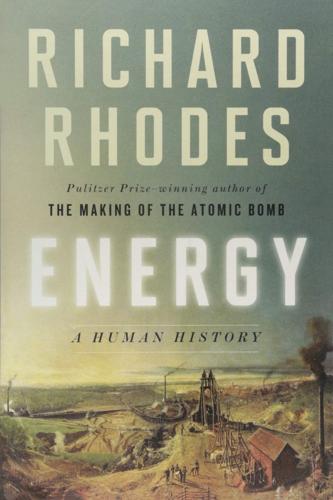
Energy: A Human History
by
Richard Rhodes
Published 28 May 2018
It would also, Evelyn added, give employment to “thousands of able Watermen” delivering the products of industry upriver into the city, would free up “Places and Houses” within the city for conversion into “Tenements, and some of them into Noble Houses for use and pleasure” with attractive river views. (Urban renewal and gentrification have ancient antecedents.) Moving industry to the suburbs would help prevent fires as well, Evelyn concluded. He thought accidental fires originated in “places where such great and exorbitant Fires are perpetually kept going.”36 London in the year of Fumifugium’s first publication, 1661, was indeed only five years away from her Great Fire of 1666, which burned out all the city within the old medieval walls.
…
Hyde (Stevenson), 224 Strauss, Lewis, 319 straw, 110 Street, Peter, 3, 4 streetcars, 207, 216–18 Strelley, 44 strontium, 89 Stuart royal family, 108 “Studies in the Identity of the Forces of Chemistry and Electricity” (Oersted), 178 Stukeley, William, 47 Sturtevant, Alfred H., 320 Suleiman, Sheikh Abdullah, 253 sulfur, 10, 13, 171, 295, 332 sulfur dioxide, 171, 247n, 295, 298, 303 Summer Olympic Games of 2008, 221 Summerside, Thomas, 88 Sumter, 161–62 Superior, Lake, 190 Supreme Court, US, 236 surgery, 118, 141, 146 Svedenstierna, Eric, 64 Swan Electric Light, 192 Swansea, 85 Sweden, 38, 322 Swensrud, Sidney A., 268 Swift, Jonathan, 58 Switzerland, 203 Sylva: Or, a Discourse of Forest-Trees and the Propagation of Timber in his Majesty’s Dominions (Evelyn), 15 syphilis, 127 Syracuse, N.Y., 151 Systema Saturnium, Galileo (Huygens), 27 Taff River, 74 tallow, 101, 119, 125, 138 tar, 122, 140 by-products of, 109 coal-, 108–10 mineral, 142 pine, 124 Tarbell, Ida, xiii, 156, 166–67 Tarentum, Pa., 152–53 Taylor, John, 44 Tees River, 91 telegraphy, 180–81, 187 telephones, 187 telescopes, 26, 53 Telluride Power Company, 198 Tennessee Gas Transmission Company, 271 Terceira Island, 162 Tesla, Nikola, 200 Texas, 139, 249, 262, 263, 264 Texas, University of, 320 Thames River, xi, 3, 4, 13, 14, 15, 25, 25, 36, 44, 73, 77 Thermolamp, 119–20, 120, 122 thermonuclear fusion, 277–78 Thomas, William, 83–84 thorium, 277, 290, 291 Three Mile Island, 324, 332, 333, 335 thunderstorms, 170, 179 tin, 37–38, 112, 138, 175, 180 Tindal Fell, 90 Titusville, Pa., 144, 145, 147, 150–53, 156–57, 159, 167 Tokheim, John J., 235 Tokyo Electric Power (Tepco), 335 Torricelli, Evangelista, 22 Townsend, James, 150–51, 155 “Tragedy of the Commons, The” (Hardin), 166 tramways, 75–76 Treasury Department, US, 160, 252 Treaty of Amiens, 121 trees, 84 oak, 5, 6–7 pine (Pinus palustris), 7, 122, 139–40, 139 Trent & Mersey Canal, 65 Trevithick, Jane Harvey, 67, 79 Trevithick, Richard, Jr., 66–79, 78, 86, 107–8 Triewald, Marten, 38, 40 Trinidad, 140, 141, 141, 142 trolleys, 188, 218 Trollope, Anthony, 222, 223 Truman, Harry S., 270 tryworks, 129, 130 Tschudi, Johann Jakob von, 213–14 tsunamis, 335–36 tuberculosis, 87, 114–15, 225 turnpikes, 81–82 turpentine, 138, 139–40, 143, 156, 160 Tyldesley, 122 Tyne River, 10, 44, 46, 85, 86, 87 typhoid, 25, 217, 224 U-boats, 265, 266 Ukraine, 332 Union Army, 159 Union Carbide, 297 Union Navy, 160–64 Southern ports blockaded by, 160 Union Oil Company of California, 299 Union Pacific Railroad, 217 United Kingdom, 285, 298 United Mine Workers, 269–70 United Nations, 226, 315 General Assembly of, 284 United States, xii, 59, 81, 133, 191 gas lighting in, 123–25 Midwestern, 150, 264 New England in, 7, 128, 130, 134, 145, 211, 234, 264 population of, 80, 136 Southern, 160 thirteen original colonies of, 109 United States Public Health Service, 293, 294–95 uranium, 272–80, 273, 280, 286, 315 U235, 274, 275, 277, 290–91 U238, 274–75, 277, 291 urban renewal, 14 U.S. Steel, 295, 297 Utrecht, 300 vacuums, 22–24, 23, 39, 52, 55–57, 67, 68, 88 partial, 24, 28, 31, 36, 37 Vanguard I satellite, 329, 329 Varadi, Peter, 329–30 Vauxhall, 27 Veblen, Thorstein, 247 Venice, 29 Vermont, 145, 150, 201, 264 Versailles, 27, 62 Virginia, 139 vitriol, 113 Vivian, Andrew, 71–73 Vivian, John, 73 V Laboratory Nuclear Center, 285 Volta, Alessandro, 110, 111, 173–76, 175, 176, 177 Volti, Rudi, 230 Von Guericke, Otto, 22, 23, 28 wagons, 96, 157 coal, 85, 85 horse-drawn, 80 wagonways, 44–48, 45, 65, 83, 87 Wahhabi sect, 251, 252, 253 Wales, 20, 45, 74, 85 Walker, James, 97, 100–101 Wampanoag Indians, 127–28 Wanackmamak, Chief, 127 War Emergency Pipelines, 266 War of 1812, 92n, 135, 136 War of the Electric Currents, 200, 206 Washington, George, 82 Washington Monument, 204n Washington Post, 270 waste, xiv animal and human, 83 industrial, 13 mining, 64 nuclear, 292, 337 petroleum, 158, 165, 167 Waste Isolation Pilot Plant (WIPP), US, 337 watches, 87 pocket, 28, 108 water: condensation of, 55–56 draining of, 67, 94 falling, 81, 184, 185–87, 190, 198 heating of, 24, 26, 37, 100 injection of, 88 in mine shafts, 18, 21, 30, 33, 36–38, 43, 48, 88 potable, 122, 162 pressurized (PWR), 98, 283, 313 pumping of, xii, 32, 33, 59, 60, 64, 100 rain, 122, 153–55 salt-, 151–52, 176, 225 sea, 94, 162 steam produced from, 29–30, 38–39, 54–55 underground, 165, 166 volume of, 189 Water Row, 87 Watertown, Mass., 123 Watson, James, 321 Watt, Gregory, 119, 121 Watt, James, xiii, 49–58, 68, 84, 107, 110, 114–16, 119, 120–21 “factitious airs” machine of, 115–16, 117 separate condenser of, 56–57, 56, 67 steam engine developed by, xi, xii, 50–58, 65–67 Watt, James, Sr., 49, 53, 114 Watt, Jessy, 115 Watt, Margaret Millar “Peggy,” 53 Waverly, 163–64 Wear River, 44, 45 Webb, Beatrice, 42, 81–82 Webb, Sidney, 42, 81–82 Wedgwood, Josiah, 59, 107, 116 Wedgwood, Thomas, 116, 117 Weidlein, Edward R., 297, 299 Weinberg, Alvin, 314–15 welding, 257–61, 266 arc, xiv, 258–60, 259 electric, 257, 261–62 West Indies, 7, 141 Westinghouse, George, 192–98, 200, 204, 225–26, 257 Westinghouse, Herman, 192 Westinghouse Electric Company, 197, 198, 285–88, 314 Westminster Bridge, 81, 123 Westminster Palace, 8, 10 whales, xiii–xiv, 101, 125, 126, 138, 160 blubber of, 129–30, 130 sperm, 129, 129, 134, 162 spermaceti oil of, 128–32, 129, 134, 137, 138, 143, 160–61, 164 whaling, 126, 128–31, 133–37, 138, 160–64 wheels: carriage, 71–72 iron, 65, 69, 86 mill, 153 steering, 75 water-, 186, 188, 202 Whewell, William, 22n Whig party, 110 White, Gilbert, 105–6 Whitehall Palace, 4 Whitney, Henry, 217 Wilkinson, John, 59–60 Willamette Falls Electric Company, 198 William I, King of England, 107 Willoughby, Percival, 44–45 Wilson, Robert E., 242 wind, xiv, 45, 171, 326–28, 330 turbines, 327, 331 windmills, 27, 33, 327, 327 Windsor, 4 Winslow, Lanier & Co., 201 Winsor, Frederick Albert, 122–23 Witton Park Colliery, 91 Wollaton, 44 Wollaton Pits, 44 wood, 3–8, 82, 119, 178, 187, 223 buildings of, 4, 7 burning of, 4, 6, 8 cost of, 4, 5, 6, 48, 59 destruction and waste of, 8 fire-, 4–5, 137 as fuel, xii gathering of, 64 implements of, 4 scarcity of, 3, 5–7, 8, 47, 48, 64, 81, 108 selling of, 5, 7 transport of, 7 Wood, Robert, 61 wool, 82, 209 Woolwich, 92 Wordsworth, Dorothy, 40, 81 Wordsworth, William, 40, 81, 84 Workers’ Health Bureau, 246 World Primary Energy Substitution, 338–39, 339 World War I, 164, 260–61, 328 World War II, 164, 226, 264–68, 275, 281, 293, 295, 298, 305–6, 308, 329 Worsley, 62 Wrigley, E.

Evil Geniuses: The Unmaking of America: A Recent History
by
Kurt Andersen
Published 14 Sep 2020
Among the unfortunate effects was the national consensus that the way to deal with urban neighborhoods full of old buildings (and black people) in older cities was wholesale demolition and replacing them with massive new buildings and highways. In 1963 New York City began demolishing one of its two grand railway terminals, Pennsylvania Station, just fifty-three years old—mainly because it was not new. Federally funded “urban renewal,” as its promoters had just rebranded it, wrecked and maimed many more neighborhoods than it renewed or revived. Just before the policies of the best and brightest in Washington started destroying villages in Vietnam in order to save them, a kind of nonlethal dress rehearsal had taken place in American cities.
…
In the later 1960s, “almost overnight, everything stopped looking futuristic” in fashion and instead became riffs on the exotically foreign or—because in the ’60s the past was an especially foreign country—the bygone “Victoriana, Edwardiana, twenties and thirties influences.” All at once, the past started to seem charming to many more people, while purely excited, hopeful visions of the future came to seem naïve or absurd.*2 Earlier I mentioned midcentury urban renewal as an example of America’s love for the new turning single-minded and reckless. It was like an autoimmune disease, when misguided antibodies destroy healthy human tissue. But even as that demolition of old buildings and neighborhoods was going full speed, local activists (in New York City most of all) and a few enlightened owners (in Omaha, for instance) started to beat it back—another example of how American citizens have placed essential checks and balances on excessive and misguided power.
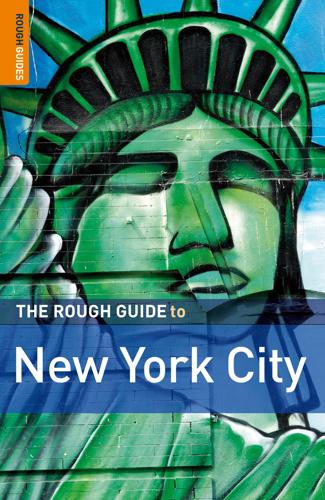
The Rough Guide to New York City
by
Martin Dunford
Published 2 Jan 2009
It’s not, as most assume, named for President Abraham Lincoln; rather, it honors the name of the surrounding area in Manhattan’s early times, likely named Lincoln for a tenant farmer who tilled the land here. Robert Moses came up with the idea of creating a cultural center here in the 1950s as a way of “encouraging” the area’s gentrification, one of his rare exercises in urban renewal that has been extremely successful. A number of architects worked on the plans, and the complex was finally built in the mid-1960s on a site that formerly held some of the city’s poorest slums. In a case of life imitating art imitating life, once the slums were emptied and their residents moved to ghettos farther uptown, the deserted area became a movie set: before construction began in 1960, the run-down buildings served as the open-air location for West Side Story, which was based on the stage musical set here.
…
Years of disgraceful living conditions brought residents to a boiling point, and slumlords and absentee landlords were held accountable for their roles in the area’s ruin. A plethora of urban and community grants were put into effect for commercial and retail development, housing, and general urban renewal. Some years later, that initial investment is paying off: Harlem’s historic areas are well maintained and there seems to be construction everywhere you turn. Savvy locals have purchased many of the district’s nineteenth-century brownstones, which are some of the most beautiful in the city. The federally established Upper Manhattan Empowerment Zone, encompassing Harlem and part of the South Bronx, is pumping millions into various area projects – many of them retail-driven.
…
The Morris–Jumel Mansion and around 214 Within easy walking distance of Audubon Terrace and the cemetery is the Morris–Jumel Mansion, 65 Jumel Terrace at 160th St and Edgecombe Ave (Wed–Sun 10am–4pm; $4; T 212/923-8008, W www.morrisjumel.org). Another uptown surprise, the mansion somehow survived the urban renewal (or better, destruction) that occurred all around it, and is now one of the city’s more George Washington Bridge The Cloisters Museum and around The only reason most visitors come this far uptown is to see The Cloisters Museum in Fort Tryon Park (Tues–Sun: March–Oct 9.30am–5.15pm; Nov– Feb 9.30am–4.45pm; suggested donation $20, $15 seniors, $10 students, includes same-day admission to the Metropolitan Museum; T 212/923-3700, W www.metmuseum.org).

Top 10 San Diego
by
Pamela Barrus
and
Dk Publishing
Published 2 Jan 2007
Apothecary & Soap Shoppe This Old Town shop is filled with bins of herbal- and citrus-scented bath salts, and handmade soaps and lotions with unusual scents such as cotton candy, lemongrass, and eucalyptus. d Map N5 • 2765 San Diego Ave • (619) 574-1115 Whole Foods With an emphasis on fresh organic food, you’ll find flavorful produce, a great assortment of imported cheese and olives, a deli that specializes in healthy takeout, and all the vitamins you’ll ever need. d Map C4 • 711 University Ave • (619) 294–2800 Diego Ave • (619) 692-0466 Wear It Again Sam Vintage clothing includes party dresses, leopard jackets, and Western wear. d Map C4 • 3823 5th Ave • (619) 299-0185 Village Hat Shop If you want to keep the sun off your head, this is the right 82 . Adams Avenue & Park Boulevard Antique Row Still untouched by San Diego’s urban renewal boom, antique stores, second-hand book and record shops, and retro-clothing boutiques are sprinkled along these streets in east Hillcrest and Normal Heights. d Adams Ave: Map D4 • Park Blvd: Map D4 Price Categories $ $$ $$$ $$$$ $$$$$ For a three course meal for one with half a bottle of wine (or equivalent meal), taxes and extra charges.
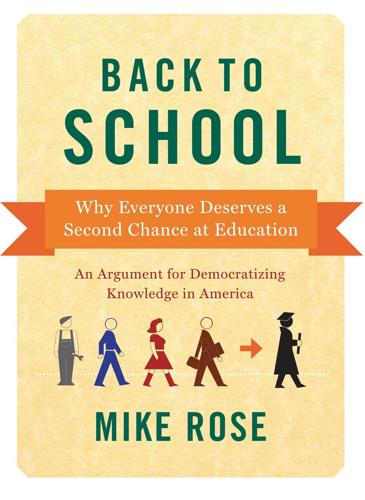
Back to School: Why Everyone Deserves a Second Chance at Education
by
Mike Rose
Published 17 Sep 2012
The typical study would not capture the motives and decisions of that woman in the fashion program and the guy who joined the navy. Furthermore, no matter how refined the collection and analysis of statistical data, without knowledge of the history and culture and daily reality of the place from which the data were 14 I N T RO D U C T I O N collected, policy makers can make huge blunders, as the history of failures in urban renewal and agricultural development illustrate. In general, the makers of education policy have not learned this lesson. The heightened attention these studies of student success have brought to the community college (and likewise to adult school) has definitely put reform of two-year colleges on the map—a welcome development, for that segment of postsecondary education typically gets little attention.
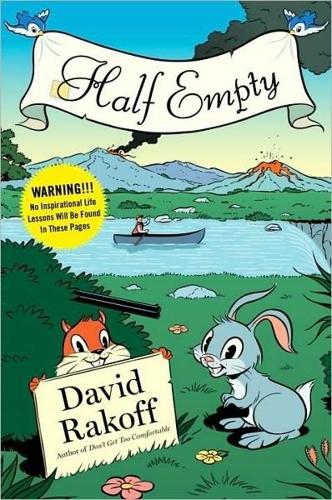
Half Empty
by
David Rakoff
Published 20 Sep 2010
Perplexed Northern Europeans—hereafter PNEs—turn out to be just one of the mainstays of the area, along with leafleting evangelicals, sex workers, harmless ambulant schizophrenics, and beat cops. There are some places where an intrinsic melancholy might be reason enough to stay away, I suppose, although I can’t think of any. Hollywood Boulevard recently underwent a major urban renewal, a charge led by the building of the Kodak Theatre complex, current home of the Oscars and American Idol telecasts. But the neighborhood’s dilapidated, honky-tonk charms, and they are legion, lie in the vestiges of its storied past that endure obstinately: Grauman’s Egyptian Theatre, currently home of the American Cinematheque, with its sandstone forecourt and hieroglyphics, looking like something straight out of the Valley of the Kings; the polychrome-plaster opulence of the El Capitan Theatre, restored and now owned by Disney; the affronted but intact dignity of Marlene Dietrich’s star as it sits for eternity in front of Greco’s New York Pizzeria; similarly the star of June Havoc, baby sister to Gypsy Rose Lee, which welcomes shoppers to the rubber and fetish extravaganza of Pleasure’s Treasures.
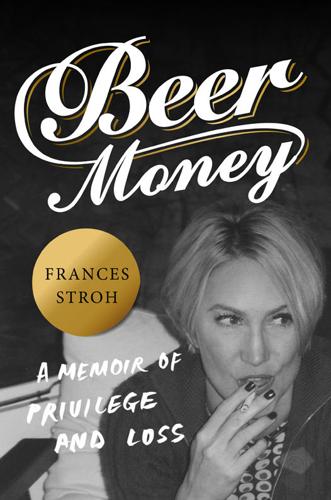
Beer Money: A Memoir of Privilege and Loss
by
Frances Stroh
Published 2 May 2016
With a population drop of over 50 percent, the city was returning the valueless land to farmland, trying to consolidate the occupied area into a more sustainable footprint. No longer could Detroit afford the trash collection, police force, and fire protection in so widespread an area, and the grocery chains had fled the city because of the ever-rising crime, putting vegetables in high demand. Come springtime, grassroots urban renewal groups would be working the fields, planting everything from romaine to rutabaga. “Just surreal,” I said, staring out the window. “I mean . . . I can’t believe we still own an office building down here.” Bobby kept his eyes on the road. “John’s trying to get government leases now.” He turned down the volume on the radio.
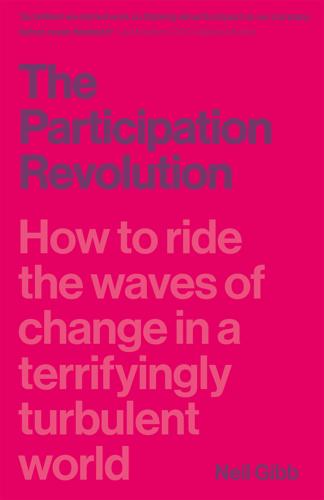
The Participation Revolution: How to Ride the Waves of Change in a Terrifyingly Turbulent World
by
Neil Gibb
Published 15 Feb 2018
In September 2012, the United Nations Settlements Program announced the launch of “block by block”, an initiative designed to encourage people to re-imagine 300 run-down public spaces across the globe using Minecraft; its first area of focus being the Kibera slum in Nairobi, Kenya. This project is something that Lisa is particularly interested in. She was trained as a designer in Taipei but wasn’t able to find any meaningful work. The UN initiative has suggested a means for her and her friends to start to use Minecraft to develop and pitch ideas for urban renewal back in Taiwan – something her network of Minecraft co-creators had started to explore. In October 2013, Minecraft received what might be the ultimate accolade. It was affectionately parodied in the American TV programme South Park. The show’s Corey Lanskin character summed it up thus: “Minecraft, it don’t got no winner.

Survival of the Richest: Escape Fantasies of the Tech Billionaires
by
Douglas Rushkoff
Published 7 Sep 2022
It was the central planning she objected to, not the participation of civic and government interests. She hated Robert Moses’s overarching plans for New York not because they were mandated by the government but because they were overarching plans—and, more specifically, because they called for “slum clearance” and “urban renewal” that did not respect rights and interests of the people already living in a neighborhood. The new urbanists recast the communitarian Jacobs as a libertarian, and her appreciation for bottom-up natural urban development as an endorsement of the free market. Entirely omitting her call for slow, natural growth of urban districts, new urbanism now amounts to little more than a euphemism for totally planned shopping malls with apartments over the stores.
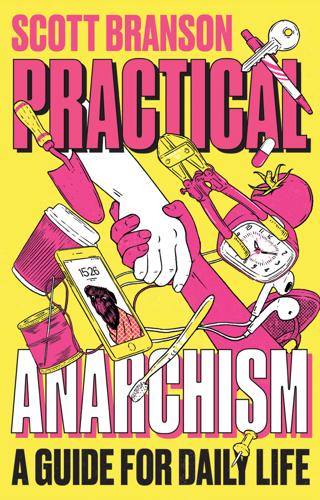
Practical Anarchism: A Guide for Daily Life
by
Scott. Branson
Published 14 Jun 2022
This outcome is one of the ways neoliberalism shifted the way that the state manages its land, passing off more and more to privatized companies with no accountability (except to shareholders). Additionally, when people tout state infrastructure projects, they neglect to mention how many of these seemingly great projects decimate whole communities, for example, when a freeway breaks up a historically Black neighborhood in favor of commuter ease and tourist access. Every process of urban renewal and redevelopment has displaced poor and racialized people. Our roads plow through communities, solidify divisions of class and race, and frame our lives towards always working for more. Therefore, an even more complex anarchist response would address how the infrastructure that builds the world we live in isn’t made for our survival, not to mention sustainability of life on the planet.

Berlin
by
Andrea Schulte-Peevers
Published 20 Oct 2010
Return to beginning of chapter CRITICAL RECONSTRUCTION While mass housing mushroomed on the peripheries, the inner city suffered from decay and neglect, especially in the shadow of the Berlin Wall and nowhere more so than in Kreuzberg. To kick-start the district’s revitalisation, another Interbau was held in 1978. It would blend two architectural principles: ‘careful urban renewal’, which would focus on preserving, renovating and reusing existing buildings; and ‘critical reconstruction’, which meant filling vacant lots with new buildings that reflected the layout or design of surrounding structures. The goal was to re-knit the urban fabric that had been torn apart by Speer’s megalomania, wartime bombing and hasty postwar planning.
…
Since 1958 Will Lammert’s haunting sculpture of 13 fatigued women has commemorated the site’s history. 9 Museum Blindenwerkstatt Otto Weidt The small Museum Blindenwerkstatt Otto Weidt is set up in the original workshop of Otto Weidt and tells the story of how this German broom and brush maker saved many of his blind and deaf Jewish workers from the Nazi death camps. 10 Block der Frauen Inge Hunzinger’s 1994 sandstone sculpture called Block of the Women stands in Rosenstrasse on the site where German women peacefully but tenaciously protested the planned deportation of their Jewish husbands, in a rare and courageous act of defiance against the Nazi regime. Also see the boxed text. Return to beginning of chapter POTSDAMER PLATZ & TIERGARTEN Drinking; Eating; Shopping; Sleeping Despite the name, Potsdamer Platz is not just a square but Berlin’s newest quarter and a stunning showcase of urban renewal. It’s built on terrain once bifurcated by the Wall, a short walk south of the Brandenburger Tor on the edge of Tiergarten. After 1989, big developers quickly swooped on the real estate of the former death strip (which was several hundred metres wide here) and pretty soon an international cast of ‘starchitects’, including Helmut Jahn, Renzo Piano and Rafael Moneo, got to work.
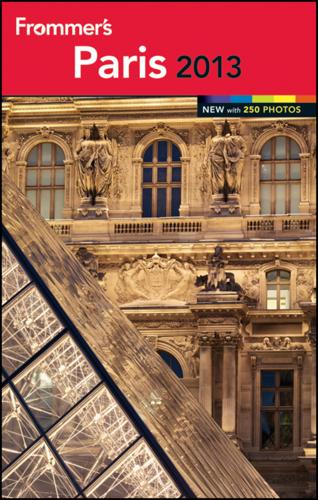
Frommer's Paris 2013
by
Kate van Der Boogert
Published 24 Sep 2012
Strikes and breakdowns are frequent occurrences. Many believe that the solution lies in better integrating Paris into the surrounding suburbs—or better integrating the surrounding suburbs into Paris, depending on how you look at it, and President Nicolas Sarkozy seemed to agree. In April 2009, he launched an ambitious urban renewal project, Le Grand Paris, which aims to improve transportation and housing in the Paris metropolitan region, while making Paris a greener, more sustainable 21st-century city. Internationally-renowned architects, like Jean Nouvel, Roland Castro, and Richard Rogers, lead teams that are responsible for generating new ideas and analyzing Paris’s urban development.
…
The debate is particularly pertinent in Paris because the majority of Paris’s immigrant populations live on the other side of the périphérique in the banlieues. This means that there is a physical, as well as psychological, divide between Parisians and the Paris region’s immigrant population. What is sure is that if Le Grand Paris or other urban renewal projects are to succeed, they must include these new Parisians. Key to this identity debate is the position of Islam in France, which is home to the largest Muslim population in Europe—Muslims account for roughly 8% of the French population. In January 2010 the government began a campaign to ban the burqa (the veil that covers all of a woman’s face).
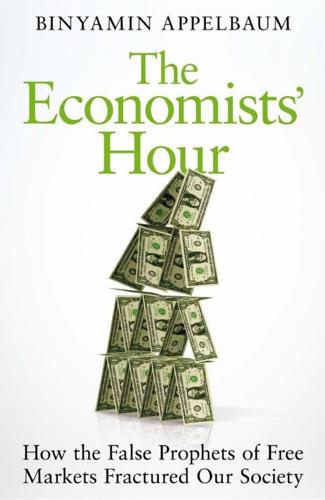
The Economists' Hour: How the False Prophets of Free Markets Fractured Our Society
by
Binyamin Appelbaum
Published 4 Sep 2019
They had a sense of the moral rightness, if you will, of service to your country, or at least being liable for such service.”46 The Mercenary Professor Among the economists who played a leading role in ending the draft, Martin Anderson was the only who had served in the military: he enrolled in the ROTC program at Dartmouth College and then spent 1958–1959 as a second lieutenant in army intelligence.47 After returning to academia, he earned a doctorate in economics at MIT and joined the faculty at Columbia’s business school, where he taught finance. Anderson, quickwitted and gregarious, had a contrarian bent. In 1964, he published The Federal Bulldozer, which called for the end of urban renewal projects, then widely regarded as the epitome of progressive urban policy. Anderson argued the government was destroying far more housing than it was creating, and he mocked the premise that poor families were finding better housing. If such housing existed, he wrote, “wouldn’t it be far simpler and much cheaper to advise people of these attractive bargains without going to all the trouble of tearing their homes down?”
…
In a 1996 interview, Friedman said that he stayed at Treasury to stay out of the war. “The only reason to stay on at Treasury was to avoid the draft,” he said. His second wartime job, at Columbia, preserved his exemption. See “Rose and Milton Friedman: Our Early Years,” Hoover Digest, 1996. 48. Martin Anderson, The Federal Bulldozer: A Critical Analysis of Urban Renewal, 1949–1962 (Cambridge: MIT Press, 1964), 56. 49. Martin Anderson, Impostors in the Temple (New York: Simon and Schuster, 1992), 37. 50. Martin Anderson, “An Analysis of the Factors Involved in Moving to an All-Volunteer Force,” April 1969 and July 10, 1969, Martin Anderson Collection, Richard Nixon Presidential Library, Yorba Linda, Calif.; available at nixonfoundation.org/2015/02/ towards-volunteer-force/.

Insight Guides South America (Travel Guide eBook)
by
Insight Guides
Published 15 Dec 2022
Tip Caracas residents are known as caraqueños. The city’s name comes from the eponymous group that lived just to its north. A few minutes east from the Centro is the now dilapidated and dangerous Parque Central, yet another city landmark that has sadly suffered from neglect and slow degradation. This massive urban renewal project has 53-story twin towers and seven 44-story apartments, split into two zones and each holding cultural centers and museums. The western zone includes the hands-on, interactive children’s museum, the Museo de los Niños, and the Museo del Teclado, a keyboard museum which organizes concerts and other cultural activities.
…
Crime and Safety With the exception of Guayaquil, Ecuador has long been known as one of the safest countries in South America. The situation has, however, improved in Guayaquil’s protected areas around the waterfront and Las Peñas. Unfortunately, the situation in Cuenca and particularly in Quito has deteriorated despite the urban renewal of the capital’s historic old town. Visitors should not walk to El Panecillo overlooking the old town, and should be careful when hiking to the summit of Pichincha from the cable car where muggings and pickpocketing are frequent. Pickpockets are also a problem in the public transport system and robberies in the Mariscal district.

The Gods of New York: Egotists, Idealists, Opportunists, and the Birth of the Modern City: 1986-1990
by
Jonathan Mahler
Published 11 Aug 2025
While Manhattan was being reimagined and rebuilt, block after block in the outer boroughs remained neglected and in many cases burned-out and abandoned. Public schools and hospitals were underfunded and overcrowded, struggling under the weight of need. The massive mid-century public housing projects that loomed over the landscapes of Brooklyn, Queens, and the Bronx had become symbols not of urban renewal but of urban despair, sealing their residents off from the city around them. Poverty bred helplessness, and hopelessness bred drug use. As the city’s complexion changed and poverty became more entrenched, long-simmering racial resentments bubbled over. In 1984, a white electrical engineer named Bernhard Goetz became a folk hero after shooting at a group of Black teenagers who approached him on the subway, asking for five dollars.
…
Legal gambling was still relatively new to Atlantic City. Its residents had passed the referendum a little more than a decade earlier, hoping that the money pouring in to fund the inevitable explosion of casinos, hotels, and accompanying entertainment would restore the struggling city to its fabled glory—urban renewal through blackjack tables and slot machines. Developers rushed in as planned, tearing down decaying Jazz Age hotels and beachfront apartment buildings and replacing them with modern glass-and-steel casino-hotels. Trump had joined the gold rush five years earlier while he was still putting the finishing touches on Trump Tower.
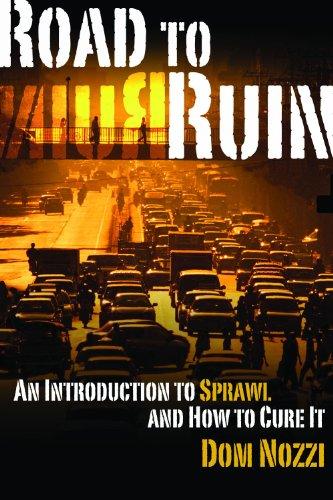
Road to ruin: an introduction to sprawl and how to cure it
by
Dom Nozzi
Published 15 Dec 2003
(Thefirst and second places are home and work.) The disappearance of third places—a trend that began about the same time many of us took off for the suburbs—has been part of a decline in informal public life in the United States. Old neighborhoods and their cafes, taverns, and corner stores fell to urban renewal, freeway expansion, and newer neighborhoods zoned residential only. Third places are the bedrock of community life, according to Oldenburg. Distinctive, informal gathering places, they make us feel at home; they nourish relationships and a diversity of human contact; they help create a sense of place and community; they evoke civic pride; they provide numerous opportunities for serendipity; they promote companionship; they allow people to relax and unwind after work; they are socially binding; they encourage sociability instead of isolation; they make life more colorful; and they enrich public life and democracy.

The Secret War Between Downloading and Uploading: Tales of the Computer as Culture Machine
by
Peter Lunenfeld
Published 31 Mar 2011
She went over the whole sad history of those influential thinkers who saw 84 WEB n.0 cities as horrid, dirty, overcrowded places filled with the dregs of humanity who needed planners to come in and rationalize, de-densify, and order their spaces for them. Jacobs instead looked out her window and analyzed what worked in cities, seeking those “fine grained mixtures of street-uses” that enliven any great city. She valued mixed-use areas, where people live, work, shop, and play in contiguous spaces, at discontinuous times. As urban renewal destroyed these kinds of neighborhoods in favor of single-use ones—think of the Lincoln Center arts complex in New York City or the Cabrini Green housing projects in Chicago—cities no longer were able to knit themselves together as well as remain safe, enjoyable, and viable. Jacobs wanted stimulating, mixed-use cityscapes to enhance urban economic actants.
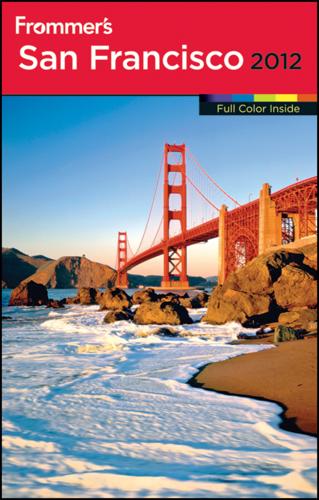
Frommer's San Francisco 2012
by
Matthew Poole
,
Erika Lenkert
and
Kristin Luna
Published 4 Oct 2011
At its center stands the five-tiered Peace Pagoda, designed by world-famous Japanese architect Yoshiro Taniguchi “to convey the friendship and goodwill of the Japanese to the people of the United States.” Surrounding the pagoda, through a network of arcades, squares, and bridges, you can explore dozens of shops featuring everything from TVs and tansu chests to pearls, bonsai, and kimonos. Kabuki Springs & Spa (see the “Urban Renewal” box below) is the center’s most famous tenant. But locals also head here for its numerous authentic restaurants, teahouses, shops, and the Sundance multiplex movie theater. There is often live entertainment on summer weekends and during spring’s cherry blossom festival, including Japanese music and dance performances, tea ceremonies, flower-arranging demonstrations, martial-arts presentations, and other cultural events.
…
Not if you are here for a day or two, but it’s certainly worth an excursion on longer trips, if only to enjoy a cone of Cherry Garcia at the now-famous Ben & Jerry’s Ice Cream Store on the corner of Haight and Ashbury streets, and then to wander and gawk at the area’s intentional freaks. Urban Renewal • Kabuki Springs & Spa, 1750 Geary Blvd. ( 415/922-6000; www.kabukisprings.com), the Japan Center’s most famous tenant, was once an authentic, traditional Japanese bathhouse. The Joie de Vivre hotel group bought and renovated it, however, and it’s now more of a Pan-Asian spa with a focus on wellness.

Lonely Planet Andalucia: Chapter From Spain Travel Guide
by
Lonely Planet
Published 31 May 2012
The sharp modernism of Expo ‘92 was reflected in its giant international exhibits and the infrastructure projects that were built to support them, including the spectacular river-spanning Alamillo and Barqueta bridges. Keen to keep the ball rolling, Seville continued its march into the 21st century under the auspices of proactive city mayor Alfredo Sánchez Monteseirín (1999–2011), who reacted to the challenges of climate change and urban renewal with fiery aplomb. In the space of just five years, Monteseirín oversaw the opening of an overland tram, a subterranean metro, a bike-sharing scheme and an electric car-sharing project. At the same time, he helped launch two architectural icons that would rival the Gothic cathedral in their audacity: the controversial Metropol Parasol and the carefully revived El Pabellon de la Navegación.
…
Catch bus number 6 from the city bus station and get off at Plaza Huerto Paco. Walk one block south down Avenida de las Adoratrices and turn left on Calle Villamundaka. Drinking CAFE Café Central Offline map Google map (Calle Duque de la Victoria 6; closed Sun) A bit of tradition amid the relentless urban renewal of the centre, the Café Central feels like it’s been there forever with its steel counter, marble-top tables and super-attentive waiters. No churros here, but it’s alright to get them at Bar Paco Perdigones across the way and tote them over. Information Municipal Tourist Information Kiosk (Plaza de las Monjas; 10am-2pm & 5-8.30pm Mon-Sat) Download a bluetooth guide of Huelva here.
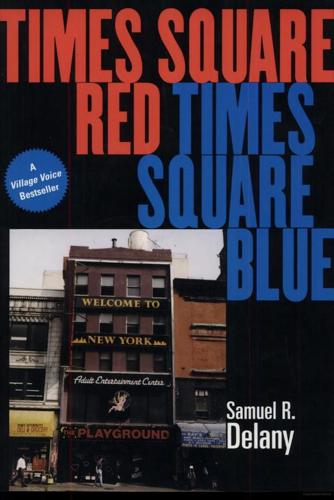
Times Square Red, Times Square Blue
by
Samuel R. Delany
Published 1 Jan 1999
ISBN 0-8147-1919-8 (cloth : perm. paper) — ISBN 0-8147-1920-1 pbk. 1. Sex-oriented businesses—New York (State)—New York. 2. Sex customs—New York (State)—New York. 3. Times Square (New York, N.Y.)—Social life and customs. 4. Times Square (New York, N.Y.)—Social conditions. 5. Homosexuality, Male—New York (State)—New York. 6. Urban renewal—New York (State)—New York—History—20th century. I. Title. II. Series. HQ146.N7 D45 1999 306.74'09747—dc21 99-6130 CIP New York University Press books are printed on acid-free paper, and their binding materials are chosen for strength and durability. Manufactured in the United States of America 10 9 8 7 6 5 4 3 2 1 For Bruce Benderson Contents Acknowledgments Writer’s Preface ix xi Part 1.
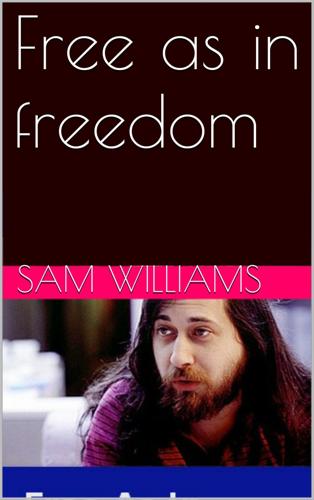
Free as in Freedom
by
Sam Williams
Published 16 Nov 2015
For more information on DeSapio and the politics of post-war New York, see John Davenport, "Skinning the Tiger: Carmine DeSapio and the End of the Tammany Era," New York Affairs (1975): 3:1. says Lippman. "I was the representative to the city council and was very much involved in creating a viable urban-renewal plan that went beyond simply adding more luxury housing to the neighborhood." Such involvement would blossom into greater political activity during the 1960s. By 1965, Lippman had become an "outspoken" supporter for political candidates like William Fitts Ryan, a Democratic elected to 36 Congress with the help of reform clubs and one of the first U.S. representatives to speak out against the Vietnam War.
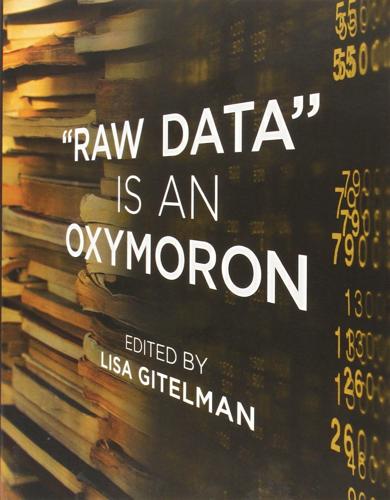
Raw Data Is an Oxymoron
by
Lisa Gitelman
Published 25 Jan 2013
For others this presented a natural experimental condition: “This, for us, was a great experimental opportunity because we had seven years of background data off these twelve streams and a few of them were very strongly affected by the sewage improvements and a few of them were not.” Considered as an “experiment,” the new sewage system provided a unique occasion for a novel study that no other researcher has had the ability to enact. Long-term data stretching before and after a change will open a window of understanding on urban renewal. Many cities in America and around the world are going through a similar process. But, how are these new data to be reconciled as a single longitudinal arc? Scores of variables that were well understood are thrown into a complex flux—making environmental claims difficult for those scientists to assert.

Uncanny Valley: A Memoir
by
Anna Wiener
Published 14 Jan 2020
San Francisco was an underdog city struggling to absorb an influx of aspiring alphas. It had long been a haven for hippies and queers, artists and activists, Burners and leather daddies, the disenfranchised and the weird. It also had a historically corrupt government, and a housing market built atop racist urban-renewal policies—real estate values had benefited as much from redlining as from discriminatory zoning practices and midcentury internment camps—but these narratives, along with the reality that an entire generation had been prematurely lost to AIDS, undercut its reputation as a mecca for the free and freakish, people on the fringe.
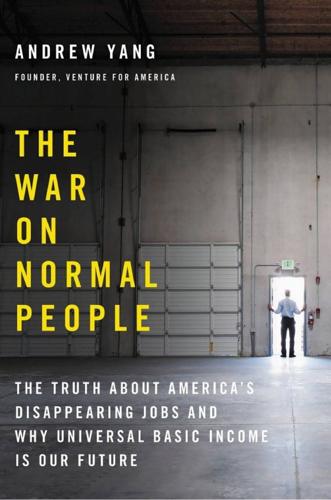
The War on Normal People: The Truth About America's Disappearing Jobs and Why Universal Basic Income Is Our Future
by
Andrew Yang
Published 2 Apr 2018
The population declined from 102,551 in 1970 to 74,420 in 2016. “Between 1950 and 1980… patterns of social pathology emerged [in Camden] as real elements of everyday life,” wrote Howard Gillette Jr., a history professor at Rutgers. “Camden and the great majority of its citizens remain, after the fall, strivers for that illusive urban renewal that invests as much in human lives as it does in monetary return.” Matt Taibbi in Rolling Stone described Camden as “a major metropolitan area run by armed teenagers with no access to jobs or healthy food” in 2013, noting that 30 percent of the population was 18 or younger. Between 2010 and 2013, the state of New Jersey cut back on subsidies that supported many of the services in Camden, resulting in a surge in violent crime.
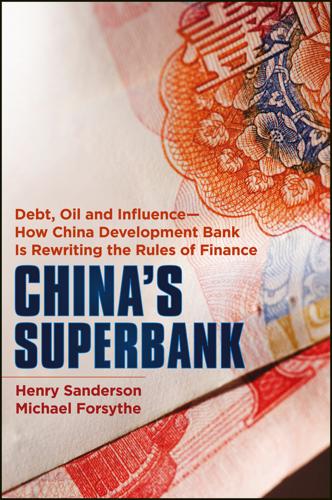
China's Superbank
by
Henry Sanderson
and
Michael Forsythe
Published 26 Sep 2012
Fred Hu and Victor Shih also lent us their wise insight. Chapter 1 Let 10,000 Projects Bloom While our national government enjoys virtually unlimited credit, the initiators of urbanization projects, local governments, have little. Public faith in the economic success of governmental undertakings in the area of urban renewal and revitalization is not yet to the point that significant securities issues of pending or completed projects can be floated on capital markets. —Chen Yuan, governor of China Development Bank, on CDB Web site, 2005 Loudi is one of countless cities with millions of inhabitants that few outside of China have ever heard of.
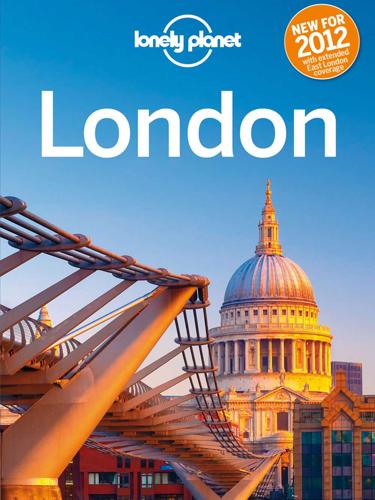
Lonely Planet London
by
Lonely Planet
Published 22 Apr 2012
Islington & Kings Cross Top Sights British Library A6 Sights 1 Eastern Curve Gardens H2 2 Estorick Collection of Modern Italian Art E3 3 Euston Fire StationA7 4 London Canal Museum B5 5 Ridley Road Market H2 6 St Pancras ChambersA6 Eating 7 A Little of What You Fancy H3 8Acorn HouseB6 9 Addis B6 10 Afghan Kitchen D5 11 Breakfast Club D5 Café Oto (see 35) 12Duke of CambridgeE5 13 Gallipoli D4 14Georgian Iberian RestaurantC4 15 Le Mercury D4 16Mangal OcakbasiH1 17 Masala Zone D4 18 Morgan M C2 19OttolenghiD4 20 Rodizio Rico D5 Drinking & Nightlife 21 Bar 23 H1 22 Barrio North E4 23 Big Chill House B6 24 Bull D4 25 Camino B6 26 Castle D5 Dalston Superstore (see 38) 27 Egg A3 28 Green D5 Jazz Bar Dalston (see 40) 29 Junction D2 30Passing CloudsH3 31 Public House D3 32 Ruby Lounge B5 33 Somers Town Coffeehouse A6 Entertainment 34 Arcola Theatre H2 35 Café Oto H2 36London's Little Opera House at the King's Head TheatreD4 37 O2 Academy Islington D5 38 Rio Cinema H1 39 Union Chapel D3 40 Vortex Jazz Club H2 Shopping 41 Annie's Vintage Costumes & Textiles D5 42Camden PassageD5 43 Gill Wing D3 44 Housmans B6 45 Past Caring E4 Sleeping 46Clink261B6 47Clink78C6 48Premier InnA7 49Rough LuxeB6 50St Pancras Renaissance HotelA6 51YHA St Pancras InternationalA6 Hampstead & Highgate Top Sights Hampstead HeathB3 Highgate CemeteryC2 Kenwood House B2 Sights 1 Burgh HouseA3 2 Fenton House A3 3 Highgate Cemetery EntrancesD2 4 Highgate Wood C1 5 Keats House B4 6 No 2 Willow Road B4 7 Parliament Hill C3 8 Sculptures by Henry Moore & Barbara HepworthB2 Eating 9Gaucho GrillA3 10 La Gaffe A3 11 Wells Tavern B3 12 Woodlands A3 Drinking & Nightlife 13BoogalooD1 14 Flask Tavern C2 15 Garden Gate B4 16 Holly Bush A3 17 Spaniard's Inn A2 Entertainment 18 Bull & Gate D4 19 Everyman Hampstead A4 20 Forum D4 Sports & Activities 21Hampstead Heath Men's PondC3 22Hampstead Heath Mixed PondB3 23Hampstead Heath Women's PondC2 24 Parliament Hill Lido C4 Sleeping 25Hampstead GuesthouseB4 Camden Top Sights Camden MarketD3 London Zoo C4 Sights 1 London Central Islamic Centre & Mosque A6 2 London Zoo (Entrance)B4 3 Primrose Hill B3 4 Regent's Park C5 Eating Bar Gansa (see 14) 5 Belgo Noord C2 6EngineerC3 7 Haché D3 8 Mango Room D3 9 Manna B2 10 Marine Ices C2 11 Market D3 12 Mestizo E6 13 York & Albany D4 Drinking & Nightlife 14 Bar Vinyl D3 15 Black Cap D3 16 Crown & Goose D4 17Edinboro CastleD4 18 Lock Tavern D2 Proud Camden(see 28) 19 Queen's B3 Entertainment 20 Barfly C2 21 Electric Ballroom D3 22 Jazz Café D3 23 Koko E4 24 Lowdown at the Albany D7 25 Roundhouse C2 Shopping Buck Street Market (see 21) 26 Canal Market D2 27 Lock Market D2 28 Stables Market C2 Sleeping 29International Student HouseD7 York & Albany (see 13) Hampstead & North London Eating | Drinking & Nightlife | Entertainment | Shopping | Sports & Activities Sights North London is a collection of small neighbourhoods, ancient villages that were slowly drawn into London as the metropolis expanded. King’s Cross has historically been a blight on the capital’s landscape, but the opening of the beautiful St Pancras International train terminal and the urban renewal behind the station (the University of London will move there in 2014) is making this part of town more attractive. The rest of North London certainly doesn’t suffer from an image problem: with wonderful parks, amazing views and some of the best pubs around, it’s a great place for a more sedate day out.
…
Unstoppable, though, is London’s biggest urban development project, the 200-hectare Olympic Park Offline map in the Lea River Valley near Stratford, where most of the events of the 2012 Summer Olympiad will take place. Front and centre will be Zaha Hadid’s stunning Aquatics Centre, a breathtaking structure suitably inspired by the fluid geometry of water. The spotlight may be over East London, but parts of South London are undergoing energetic and perhaps even visionary urban renewal. A vastly expensive commercial, business and transport regeneration scheme, the London Bridge Quarter (www.londonbridgequarter.com) in Borough consists of the Shard, a brand new piazza, The Place – the so-called Baby Shard (a misnomer) – and the transformation of London Bridge Station as the focal point of access.
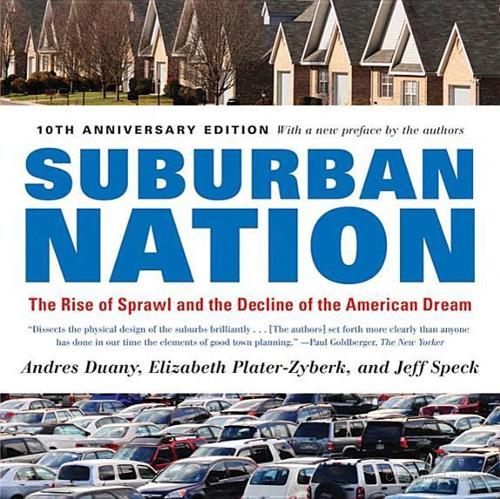
Suburban Nation
by
Andres Duany
,
Elizabeth Plater-Zyberk
and
Jeff Speck
Published 14 Sep 2010
Suburban nation : the rise of sprawl and the decline of the American Dream / Andres Duany, Elizabeth Plater-Zyberk, and Jeff Speck.—1st ed. p. cm. Includes bibliographical references. 1. Urbanization—United States. 2. Suburbs—United States. 3. Community development, Urban—United States. 4. Urban renewal—United States. 5. Urban policy—United States. I. Plater-Zyberk, Elizabeth. II. Speck, Jeff. III. Title. HT384.U5 D83 2000 307·76′0973—dc21 990052186 10th Anniversary Paperback ISBN: 978-0-86547-750-6

The Wikipedia Revolution: How a Bunch of Nobodies Created the World's Greatest Encyclopedia
by
Andrew Lih
Published 5 Jul 2010
There is no better historical example than that explored in Jane Jacobs’s book The Death and Life of Great American Cities, her critique of the modernist planning policies of the 1950s and 1960s, an era when New York City developer Robert Moses was razing entire swaths of neighborhoods for planned housing projects and communities. Jacobs argued for preserving her small neighborhood on Hudson Street and resisting massive urban renewal, because the intimate sidewalks served an important social function. She argued that sidewalks provided three important things: safety, contact, and the assimilation of children in the community. In the summary of Jacobs’s vision of the sidewalk, there are parallels to wikis and how to build community: Street safety is promoted by pavements clearly marking a public/private separation, and by spontaneous protection with the eyes of both pedestrians and those watching the continual flow of pedestrians from buildings.
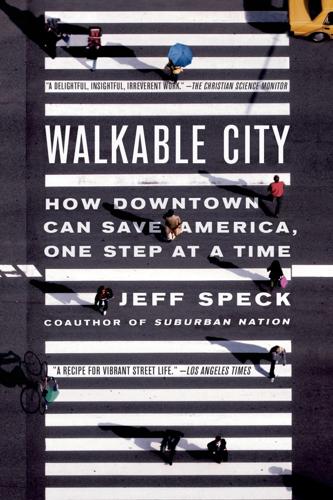
Walkable City: How Downtown Can Save America, One Step at a Time
by
Jeff Speck
Published 13 Nov 2012
The Library of Congress has cataloged the hardcover edition as follows: Speck, Jeff. Walkable city: how downtown can save America, one step at a time / Jeff Speck. p. cm. Includes bibliographical references and index. ISBN 978-0-374-28581-4 (alk. paper) 1. Central business districts—United States—Planning. 2. Pedestrian areas—United States—Planning. 3. Urban renewal—United States. 4. City planning—United States. I. Title. HT175 .S64 2012 307.1'2160973—dc23 2012018934 Paperback ISBN: 978-0-86547-772-8 www.fsgbooks.com www.twitter.com/fsgbooks • www.facebook.com/fsgbooks eISBN 9781429945967 ●This program, now in its twenty-sixth year, has served nearly one thousand mayors, with dramatic results.
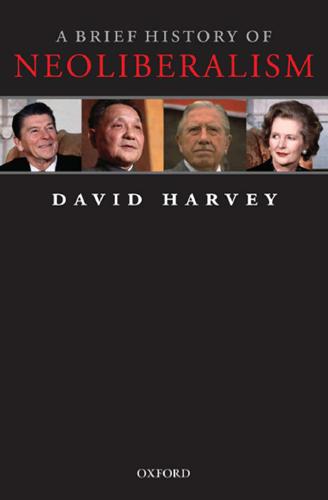
A Brief History of Neoliberalism
by
David Harvey
Published 2 Jan 1995
The privatization of the ejidos in Mexico during the 1990s had analogous effects upon the prospects for the Mexican peasantry, forcing many rural dwellers off the land into the cities in search of employment. The Chinese state has sanctioned the transfer of assets to a small elite to the detriment of the mass of the population and provoking violently repressed protests. Reports now indicate that as many as 350,000 families (a million people) are being displaced to make way for the urban renewal of much of old Beijing, with the same outcome as that in Britain and Mexico outlined above. In the US, revenue-strapped municipalities are now regularly using the power of eminent domain to displace low- and even moderate-income property owners living in perfectly good housing stock in order to free land for upper-income and commercial developments that will enhance the tax base (in New York State there are more than sixty current cases of this).15 The neoliberal state also redistributes wealth and income through revisions in the tax code to benefit returns on investment rather than incomes and wages, promotion of regressive elements in the tax code (such as sales taxes), the imposition of user fees (now widespread in rural China), and the provision of a vast array of subsidies and tax breaks to corporations.
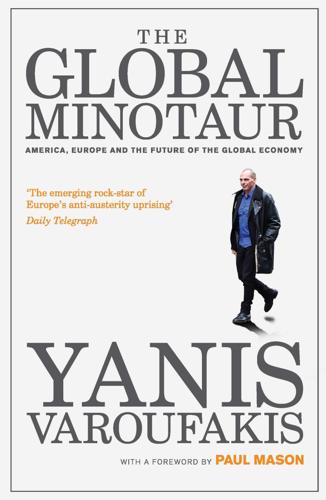
The Global Minotaur
by
Yanis Varoufakis
and
Paul Mason
Published 4 Jul 2015
To put the importance of the Kennedy–Johnson social programmes in perspective, it helps to note that, from 1955 until Kennedy’s election in 1960, economic growth tailed off in the United States – a petering out that affected mostly the poor and the marginal. After eight years of Republican rule (1952–60), Kennedy was elected on a New Deal-alluding platform. His New Frontier manifesto promised to revive the spirit of the New Deal by spending on education, health, urban renewal, transportation, the arts, environmental protection, public broadcasting, research in the humanities, etc. After Kennedy’s assassination, President Johnson, especially after his 1964 landslide victory, incorporated many of the (largely un-enacted) New Frontier policies into his much more ambitious Great Society proclamation.
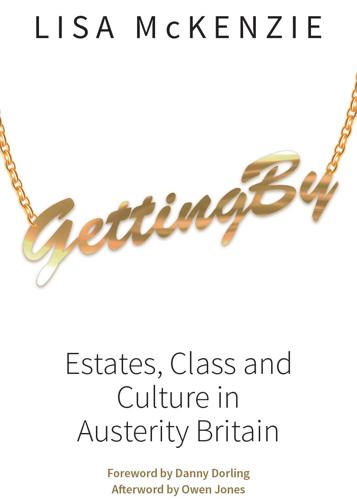
Getting By: Estates, Class and Culture in Austerity Britain
by
Lisa McKenzie
Published 14 Jan 2015
Modernist interpretations vaguely linked to the works and writings of Le Corbusier’s visions of homes and cities began to spring up all over the UK, from the Thamesmead estate and Trellick Tower in London, to Manzoni’s concrete modernist dream of Birmingham. Local authorities on tight budgets have since been accused of plagiarising modernist theories on urban renewal which often failed to understand the essential humanism behind Le Corbusier’s plans, and his would-be imitators led modernist architecture to being blamed for the problems of Western cities in the 1960s and 1970s. During this period the inner-city middle class moved out to the suburbs, leaving the poorest whites and minority ethnic groups within their new concrete estates.
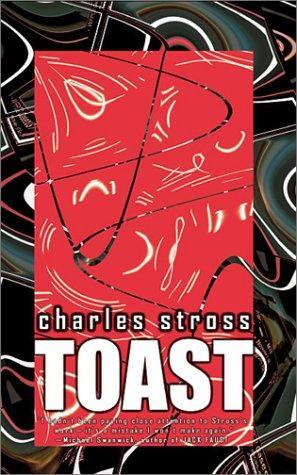
Toast
by
Stross, Charles
Published 1 Jan 2002
“You’re going to have to re-write the route discovery code. Never mind, it’ll run a bit faster . . . ” I rose out of cubicle hell in a daze, blinking in the cloud-filtered daylight. Eight years lay in ruins behind me, tattered and bleeding bodies scattered in the wreckage. I walked to the landscaped car park: on the other side of the world, urban renewal police with M16’s beat the crap out of dissident organizers, finally necklacing them in the damp, humid night. War raged on three fronts, spaced out around a burning planet. Even so, this was by no means the worst of all possible worlds. It had problems, sure, but nothing serious—until now. Now it had just acquired a sucking chest wound; none of those wars were more than a stubbed toe in comparison to the nightmare future that lay ahead.
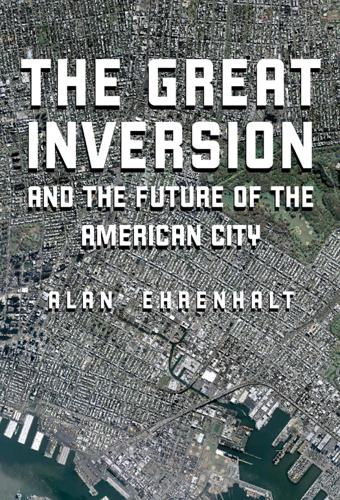
The Great Inversion and the Future of the American City
by
Alan Ehrenhalt
Published 23 Apr 2012
Even the recession that has badly damaged the city’s two big banks and economic drivers, Bank of America and Wachovia (and forced Wachovia to merge with Wells Fargo), has not diminished the entertainment vibrancy and affluent ambience of the downtown streets. Many big cities, including a significant number in the South and West, tried wholesale urban renewal in the mid- to late twentieth century, nearly always with disastrous results. Charlotte, for now at least, seems to have beaten the odds. It has done that for many reasons, but one above all: the presence of two of America’s four biggest banking institutions. Bank of America and Wachovia wanted to stay in downtown Charlotte, they wanted it to be a showplace, and they paid for what they wanted.

The Perfect Storm: A True Story of Men Against the Sea
by
Sebastian Junger
Published 30 Sep 1999
That spring Ethel remembers the older boys being excused from school to fight the brush fires that were raging across Cape Ann; the fires burned through a wild area called Dogtown Common, an expanse of swamp and glacial moraine that was once home to the local crazy and forgotten. The bridge was the northern terminus of Boston's Route 128 beltway, and it basically brought the twentieth century to downtown Gloucester. Urban renewal paved over the waterfront in the 1970s, and soon there was a thriving drug trade and one of the highest heroin overdose rates in the country. In 1984, a Gloucester swordfishing boat named the Valhalla was busted for running guns to the Irish Republican Army; the guns had been bought with drug money from the Irish Mafia in Boston.
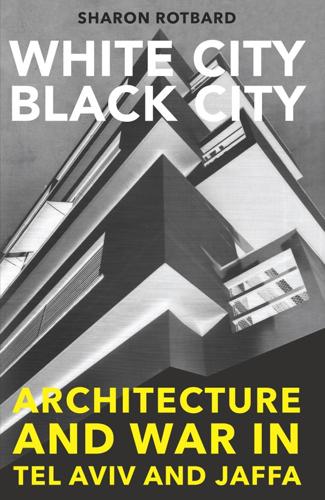
White City, Black City: Architecture and War in Tel Aviv and Jaffa
by
Sharon Rotbard
Published 1 Jan 2005
Just as Jaffa’s Old City had been carved up in the 1950s under a banner of ‘development’, ‘planning’ is still offered today as a justification for the continued dismantling of Jaffa’s remaining Palestinian neighbourhoods, Ajami and Jabaliya; Manshieh’s final destruction was also couched in the language of ‘renovation’ and ‘urban renewal’. As it happened, the project outlined by Niv, Reifer, Schwartz and Schwartz, which promised extensive corporate development, did not take off. While elements of their blueprint were included in the final outline for the neighbourhood, most of the area was left in its flattened form, despite the dizzying investment and the high commercial expectations.
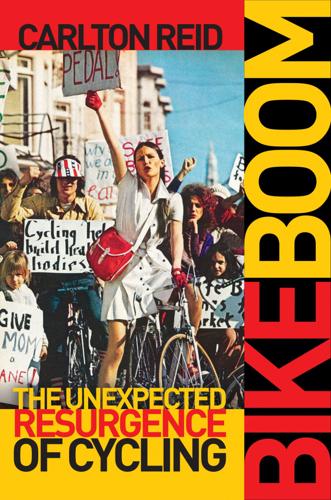
Bike Boom: The Unexpected Resurgence of Cycling
by
Carlton Reid
Published 14 Jun 2017
For 44 years, from 1924 until 1968, Moses built parks, highways, bridges, playgrounds, housing, tunnels, zoos, and exhibition halls. The job of parks commissioner was just one of many he held simultaneously. In The Power Broker, his 1974 biography of Moses, Robert Caro called Moses a genius and “perhaps the single most influential seminal thinker” in twentieth-century urban renewal, but Caro was also highly critical of the commissioner’s autocratic style and bombast. After he forced the New York Aquarium to up-sticks to Coney Island a wag wrote: No one opposes Commissioner Moses, Even the fishes accede to his wishes. Caro’s Pulitzer Prize-winning book was dismissive of Moses’ 1930s-style belief in the hegemony of the car.
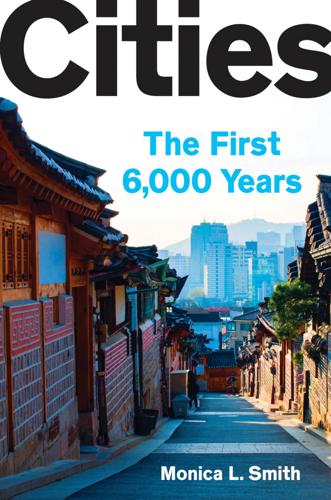
Cities: The First 6,000 Years
by
Monica L. Smith
Published 31 Mar 2019
Christopher Jones links this stylistic upgrade to the reign of a ruler named Jasaw in the early eighth century A.D. who had the good fortune of having not only a sense of style but also enough longevity to carry out extensive renovations. Jasaw’s building programs also included the paving of causeways that led into the plaza and its marketplace, all wrapped up in a grand program of urban renewal carried out under the watchful eye and generous patronage of the city overlord. Lavish, distinctive architectural styles have appeared over and over again in cities, often identified with some great ruler, like the Roman emperor Augustus, the Angkorian ruler Jayavarman VII, or Queen Victoria.

The Socialist Manifesto: The Case for Radical Politics in an Era of Extreme Inequality
by
Bhaskar Sunkara
Published 1 Feb 2019
As part of this shift, historic labor parties were transformed into social liberal ones, their appeals designed more for middle-class professionals than their long-neglected working-class bases.29 ANTHONY CROSLAND’S THE Future of Socialism was at its most poignant in its demands for “not only higher exports and old-age pensions, but more open-air cafes, brighter and gayer streets at night… brighter and cleaner eating houses, more riverside cafes, more pleasure gardens on the Battersea model.” The welfare state certainly should not be the end point of human ambitions. But those who embraced Crosland’s moderate legacy in bids to modernize their old parties proved better able to enact his dreams of green urban renewal than of social equality. Does that mean that the decades of effort to build social democracy were in vain? We can recall Rosa Luxemburg’s comparison of reformism with the “labor of Sisyphus,” the giant in Greek mythology, eternally pushing a boulder uphill, only to see it slide down again when it nears the top.
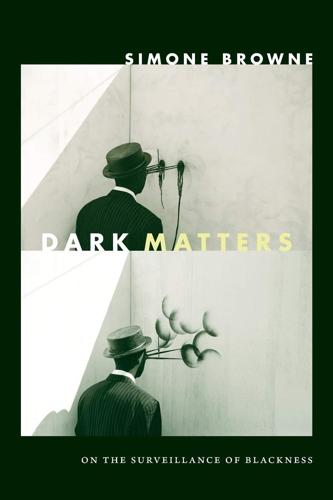
Dark Matters: On the Surveillance of Blackness
by
Simone Browne
Published 1 Oct 2015
In the sense that blackness is often absented from what is theorized and who is cited, it is ever present in the subjection of black motorists to a disproportionate number of traffic stops (driving while black), stop-and-frisk policing practices that subject black and Latino pedestrians in New York City and other urban spaces to just that, CCTV and urban renewal projects that displace those living in black city spaces, and mass incarceration in the United States where, for example, black men between the ages of twenty and twenty-four are imprisoned at a rate seven times higher than white men of that age group, and the various exclusions and other matters where blackness meets surveillance and then reveals the ongoing racisms of unfinished emancipation.30 Unfinished emancipation suggests that slavery matters and the archive of transatlantic slavery must be engaged if we are to create a surveillance studies that grapples with its constitutive genealogies, where the archive of slavery is taken up in a way that does not replicate the racial schema that spawned it and that it reproduced, but at the same time does not erase its violence.
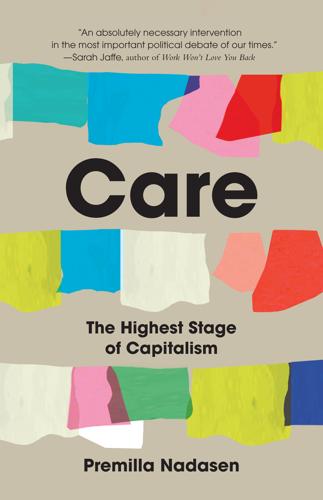
Care: The Highest Stage of Capitalism
by
Premilla Nadasen
Published 10 Oct 2023
Pablo “Yoruba” Guzmán one of the leaders of the Lords, reflected on the Garbage Offensive a year later: “Our objective…[was] to move on the government for allowing the garbage to pile up in the first place. By questioning this system’s basic level of sanitation, our people would then begin to question drug traffic, urban renewal, sterilization etc [sic] until the whole corrupt machine could be exposed for the greedy monster it is.”5 For both the Black Panthers and the Young Lords, these programs were intertwined with their long-term goal of radicalizing people: getting people to recognize that inadequate social reproductive services were a product of broader inequities.

The Way That Leads Among the Lost: Life, Death, and Hope in Mexico City's Anexos
by
Angela Garcia
Published 30 Apr 2024
According to Carlos Monsiváis, “The guerrillas were lynched with excessive wrath, the bodies were thrown into the sea.” Official discourse reduced dissidents to criminals, much as victims of today’s narco war are characterized. Among other repressive policies, the authoritarian government pursued an urban renewal program that sought to bulldoze Tepito’s vecindades and replace them with middle-class housing projects. In response, Casa San Felipe’s little room became a meeting place for community and political organizing to resist eviction. Arturo, a longtime resident of the vecindad, recalled his father heading over to the cuartito to discuss oppressive policing practices that targeted the neighborhood and residents who made their livings as street vendors.

Lonely Planet London City Guide
by
Tom Masters
,
Steve Fallon
and
Vesna Maric
Published 31 Jan 2010
Further east lie the East End and Docklands: the East End is ‘real’ London, a multi-ethnic yet strangely traditional stretch of the city that’s the home of the famous cockney. It’s currently being transformed for the 2012 Olympics, which are centred around the valley of the River Lea in and around Stratford at the East End’s furthest edge. Docklands is another, albeit government- and financial-sector–driven, example of urban renewal – now seriously rivalling the City as the home of money men and London’s tallest skyscrapers. The future belongs to the east, due not only to the Olympics but also to the Thames Gateway, a huge development of the Thames estuary. North London is a hilly collection of charming villages, which often seem to exist as worlds within themselves, such as old-money Hampstead and Highgate, celebrity-filled Primrose Hill, fashionable Islington, hippie Stoke Newington and well-heeled Crouch End.
…
Starting north of Euston Rd, this region of the capital includes King’s Cross and Camden Town – two names both likely to elicit a response from Londoners. King’s Cross has historically been one of the capital’s nastiest urban blights, but a redevelopment of the tube station, the opening of the beautiful St Pancras International train terminal and the slow but thorough urban renewal going on elsewhere is making King’s Cross more and more desirable, although it’s fair to say it’ll be a while before we’re all meeting there for drinks. Camden is an even stranger beast – much reviled among Londoners for its touristy market Click here and ‘crusty’ locals, outside of the Lock and away from Camden High St the area is actually a wonderful place full of great bars, restaurants and some architectural gems.
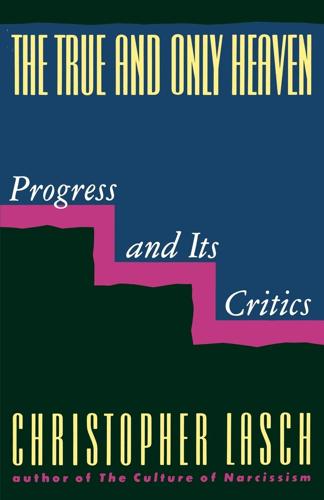
The True and Only Heaven: Progress and Its Critics
by
Christopher Lasch
Published 16 Sep 1991
The president of the Jewish Community Council, defending a boycott of schools integrated under court order, cried, "We have built the swamps of Canarsie into a beautiful community, and no one is going to take it away from us." In Charlestown, Massachusetts, the conflict over busing was preceded by protracted conflicts over urban renewal. Here the immediate threat -497- came not from black people pressing into the neighborhood but from advocates of redevelopment, who dreamed of Boston as a model of the "information economy" destined to grow up on the ruins of heavy industry. With a sense of self-importance reminiscent of the city's seventeenth‐ century founders, but with little of their moral vision, promoters of redevelopment envisioned the "new Boston" as a city on a hill, a show‐ place of advanced technology, cosmopolitan sophistication, high finance, and architectural splendor.
…
Destro, "Guaranteeing the 'Quality' of Life through Law: The Emerging 'Right' to a Good Life," in Richard John Neuhaus, ed., Guaranteeing the Good Life (1990); and Richard John Neuhaus, "The Return of Eugenics," Commentary 85 (April 1988): 15-26, reprinted in Guaranteeing the Good Life. The most evenhanded account of the school wars in Boston is J. Anthony Lukas, Common Ground (1985). Brian Sheehan, The Boston School Integration Dispute: Social Change and Legal Maneuvers (1984), presents a good analysis of the political alignments growing out of earlier battles over urban renewal. Martha Bayles criticizes the single-minded preoccupation with "racism" in her article "On Busing in Boston," Harper's, July 1980, 77-79. Ione Malloy's diary of the South Boston -565- conflict was published under the title Southie Won't Go: A Teacher's Diary of the Desegregation of South Boston High School (1986).
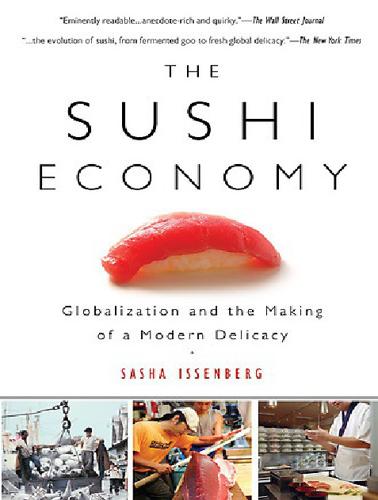
The Sushi Economy: Globalization and the Making of a Modern Delicacy
by
Sasha Issenberg
Published 1 Jan 2007
Sushi began to adapt to a pullulating city’s shifting moods and attitudes, its alternating affections for high culture and low, its willingness to succumb to faddishness all while impervious to the attendant embarrassment. In Japanese Village Plaza, an openair mini-mall bizarrely styled as a mountain hamlet by a city government that saw it as an urban-renewal solution to Little Tokyo’s problems, sushi spun around a conveyor belt at the inexplicably named Frying Fish, a nod to the kaiten-zushi popping up all over Japan at the time. Nearby, Sushi Kappo Bukyu opened with a different gimmick: all you can eat in an hour for $12.99. On the side of its sake cups, California Beach, in Newport Beach, promised ROCK & ROLL SUSHI.
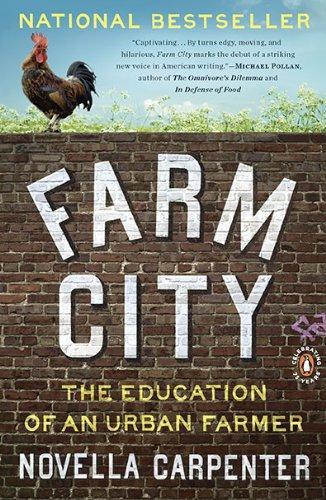
Farm City: The Education of an Urban Farmer
by
Novella Carpenter
Published 25 May 2010
From those stable, well-paying jobs sprang a community. But it wasn’t just African Americans, Ali said; there were Norwegians and Chinese people, too—a multiethnic community in which people mostly got along. “But they broke it up,” Melvin said, sighing. “They” was the city of Oakland and the federal government and something called urban renewal, Melvin told me. First came the construction of Oakland’s main post office, in the heart of the burgeoning black community. Though the post office was supposed to provide jobs, the leveling of homes with tanks, actual military tanks, alienated many. And when the jobs did come, there were only a few.

The New Urban Crisis: How Our Cities Are Increasing Inequality, Deepening Segregation, and Failing the Middle Class?and What We Can Do About It
by
Richard Florida
Published 9 May 2016
And today’s suburbs, like today’s cities, have divided into areas of concentrated affluence and concentrated disadvantage. During the mid-1980s, before anyone thought of the suburbs as being on a downward trajectory, the urban designer David Lewis, a Carnegie Mellon colleague of mine at the time, told me that the future project of suburban renewal would likely make our vast twentieth-century urban renewal efforts look like a walk in the park. Indeed, with their enormous physical footprints, shoddy construction, and hastily put up infrastructure, many of our suburbs are visibly crumbling. Across the nation, hundreds of suburban shopping malls are dead or dying; countless suburban factories, like their urban counterparts a couple of generations ago, have fallen silent.

Ground Control: Fear and Happiness in the Twenty First Century City
by
Anna Minton
Published 24 Jun 2009
The centralized planning initiatives of the post-war years were not standing up to scrutiny. Looking at cities through history, the authors recalled how planning everywhere rides roughshod over the people who live there, from Haussmann’s Paris, which was cleared by demolition gangs, to American urban renewal projects which uprooted local people with scant compensation. ‘What would happen if there were no plan? What would people prefer to do, if their choices were untrammelled?’ the essay asked. The authors proposed ‘a precise and carefully observed experiment in non-planning’ in a few appropriate places.
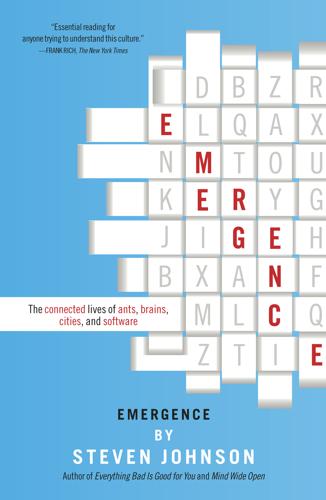
Emergence
by
Steven Johnson
You need the Web to hear it wail. * * * In June of 1962, a full year after the appearance of The Death and Life of Great American Cities, Lewis Mumford published a scathing critique of Jane Jacobs’s manifesto in his legendary New Yorker column, “The Sky Line.” In her prescriptions for a sidewalk-centric urban renewal, “Mother Jacobs”—as Mumford derisively called her—offered a “homemade poultice for the cure of cancer.” The New Yorker critic had been an early advocate of Jacobs’s work, encouraging her to translate her thoughts into a book while she was a junior editor at Architecture Forum in the midfifties.
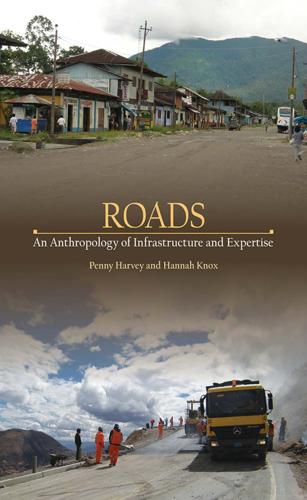
Roads: An Anthropology of Infrastructure and Expertise (Expertise: Cultures and Technologies of Knowledge)
by
Penny Harvey
and
Hannah Knox
Published 22 Jun 2015
Critique of Anthropology 23 (4): 349–72. Fujimura, J. H. 1992. “Crafting Science: Standardized Packages, Boundary Objects, and ‘Translation.’ ” In Science as Practice and Culture, edited by A. Pickering, 168–211. Chicago: University of Chicago Press. Gandolfo, D. 2009. The City at Its Limits: Taboo, Transgression, and Urban Renewal in Lima. Chicago: University of Chicago Press. Garcia Morcillo, J. 1982. “Nueva Conquista y Colonizacion de la Amazonia Peruana.” Historia 16 (51): 62–64. Gluckman, M. (1940) 2002. “ ‘The Bridge’: Analysis of a Social Situation in Zululand.” Reprinted in The Anthropology of Politics: A Reader in Ethnography, Theory, Critique, edited by J.
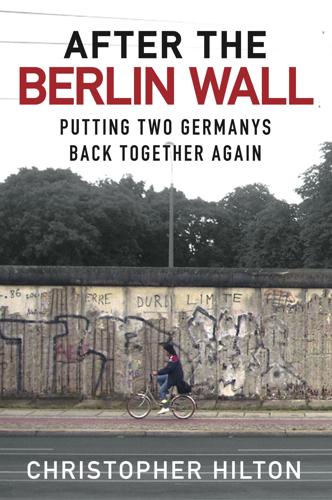
After the Berlin Wall
by
Christopher Hilton
Published 15 Dec 2011
The cars rolled over it and the people walked over it without realising.’ Rüdiger Patzschke, a Berlin architect, helped found the Association for the Historic Dresden Newmarket (Gesellschaft Historischer Neumarkt Dresden) to rebuild the area as near as possible to exactly how it had been. Gabriele Tagliaventi – a leading figure in European urban renewal – and his students at the University of Ferrara began work on a plan for all of the Newmarket. ‘A lot of people don’t realise that parts of the city were not blown down,’ Dr Russell says. ‘If you go out into the suburbs where the hills and all those great villas and the three castles are, there is a lot of beauty which survived.
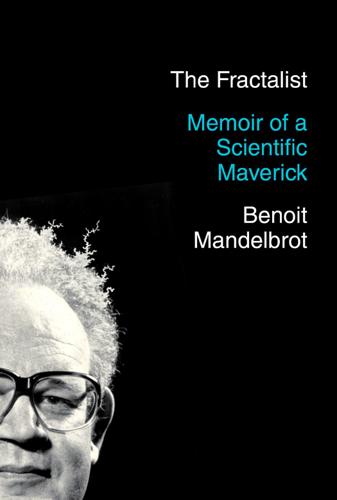
The Fractalist
by
Benoit Mandelbrot
Published 30 Oct 2012
Belleville is in the east end of Paris, at the bottom in terms of prestige—and far from the promise of its travel brochure name. In Paris, like in London, the prevalent winds blow from the west, so the nice area is the west end. The rue de Chaumont was (and remains) a small dead-end street in the middle of a beat-up area long slated for urban renewal (which came decades later). At numbers 5–7 stood a clean and relatively nice building. Having found it, Father spoke to the concierge, who was also the owner, and in effect, he was given an exam. Reassured that we were not homeless derelicts but a middle-class, down-at-the-heels family, the owner let us rent a flat: two narrow rooms end to end, railroad-style, from street to courtyard.
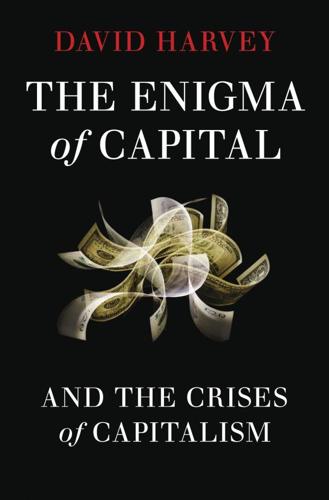
The Enigma of Capital: And the Crises of Capitalism
by
David Harvey
Published 1 Jan 2010
Robert Moses ‘took a meat axe to the Bronx’ (in his own infamous words) and long and loud were the lamentations of neighbourhood groups and movements, which eventually coalesced around the rhetoric of the inveterate urban reformer Jane Jacobs, at the unimaginable destruction of valued urban fabric but also at the loss of whole communities of residents and their long-established networks of social integration. Once the brutal power of state expropriations and older neighbourhood destruction for purposes of highway construction and urban renewal had been successfully resisted and contained by the political and street agitations of ’68 (with Paris once more an epicentre but with violent confrontations everywhere from Chicago to Mexico City and Bangkok), a far more insidious and cancerous process of transformation began through fiscal disciplining of democratic urban governments, the freeing up of land markets from controls, property speculation and the sorting of land to those uses that generated the highest possible financial rate of return.
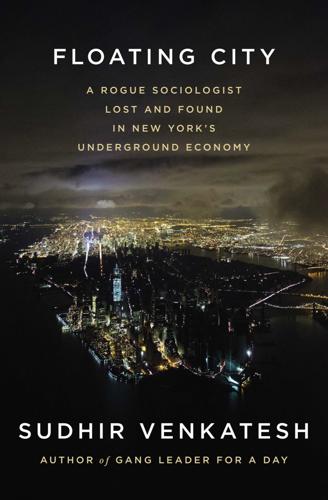
Floating City: A Rogue Sociologist Lost and Found in New York's Underground Economy
by
Sudhir Venkatesh
Published 11 Sep 2013
In this sense, Hell’s Kitchen had become a sort of postmodern neighborhood, stuck between genres—just like the world music my more artsy academic colleagues admired. Once again, all this would have been a rare sight in Chicago. Gentrification and urban development took place there, to be sure. Indeed, the national program of “urban renewal” was first developed in Chicago in an effort to reclaim seedy areas. But Chicago mayors typically sent bulldozers into down-and-out neighborhoods and then resold the land for private development—sports stadiums, universities, highways. It was a rapid-fire form of social bleaching. Gentrification in New York was like an IV drip.
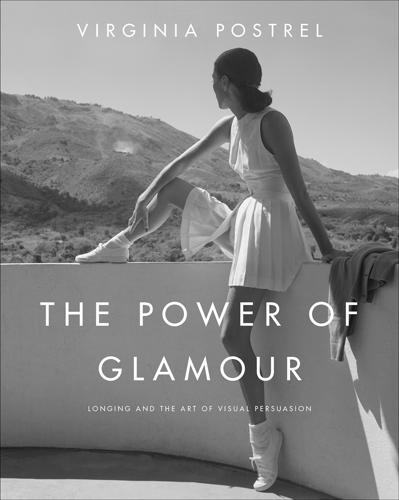
The Power of Glamour: Longing and the Art of Visual Persuasion
by
Virginia Postrel
Published 5 Nov 2013
Lynn Pan, Shanghai Style: Art and Design Between the Wars (South San Francisco, CA: Long River Press, 2008) pp. 247–53. Ruan Lingyu is often described as the Chinese Garbo. Pan notes that “between the 1980s and 1990s (and even into the 2000s) furniture like the kind seen in the movies . . . filled whole warehouses in Shanghai, sourced from prewar houses that were demolished in the frenzy of urban renewal that overtook the city during those decades.” 17. Robert Sklar, Movie-Made America: A Cultural History of American Movies (New York: Vintage Books, 1994) pp. 222–27. 18. Howard Gutner, Gowns by Adrian, p. 9. 19. Colin McGinn, The Power of Movies: How Screen and Mind Interact (New York: Pantheon, 2005) p. 18. 20.
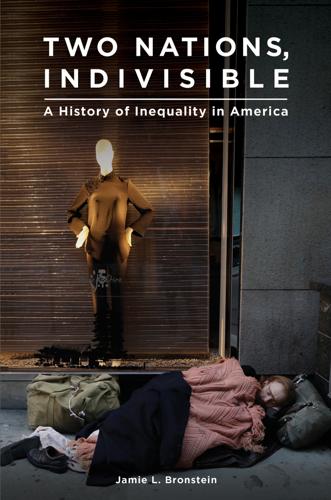
Two Nations, Indivisible: A History of Inequality in America: A History of Inequality in America
by
Jamie Bronstein
Published 29 Oct 2016
Blue-collar white workers who had their own modest homes saw any black movement into these neighborhoods as detrimental to their property values.19 Even when African Americans could get their mortgages guaranteed by the federal government, as with GI Bill–entitled veterans, banks were reluctant to extend credit. The upwardly mobile black middle class pushed the boundaries of urban settlement, leaving behind the poorest black people concentrated in areas that then became neglected ghettoes. The construction of highways, and “urban renewal” without replacement of destroyed housing, left formerly prosperous black neighborhoods disconnected and devastated; evicted residents had nowhere to live. Public housing was also racially segregated, and needy white families were placed into public housing more rapidly than were black families.20 The drive for racial equality in the 1950s focused on the legal and social realms rather than the economic realm.
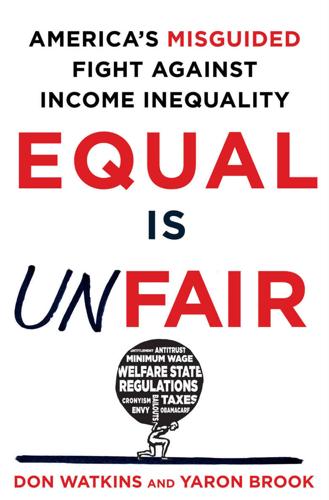
Equal Is Unfair: America's Misguided Fight Against Income Inequality
by
Don Watkins
and
Yaron Brook
Published 28 Mar 2016
Land-use laws, zoning restrictions, height restrictions, and minimum-lot-size requirements all constrain the supply of housing and help to raise prices in many areas.31 Rent-control laws, among other evils, lead to poor quality of rent-controlled units and higher prices for non-rent-controlled units. So-called urban renewal projects have demolished much of the affordable housing once available to low-income Americans, largely in order to appease outsiders who had enough money to live elsewhere.32 And the government’s “affordable housing” crusade helped spur the housing bubble that drove up the cost of many houses, to the detriment of everyone who didn’t yet own homes.
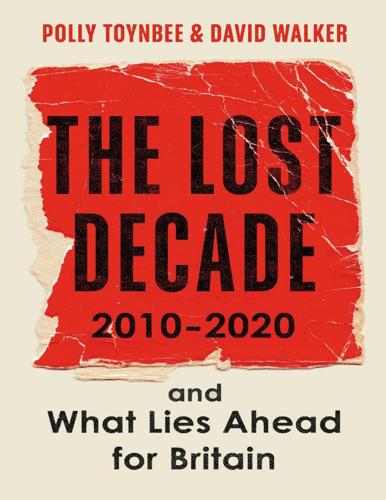
The Lost Decade: 2010–2020, and What Lies Ahead for Britain
by
Polly Toynbee
and
David Walker
Published 3 Mar 2020
Marvin Rees, the elected mayor, was brought up in poor and predominantly minority-populated St Paul’s and was keenly aware of plural identities. In his spacious office in Bristol’s commanding 1930s city hall, he lived twin stories. Since he took office in 2016 Bristol had lost 50 per cent of its government grant, and yet he felt he needed to talk positively about the social programmes, housebuilding, growth and urban renewal. Duality marked Rees’s own story as a mixed-race Bristolian. ‘When I was growing up, there was plenty of abuse,’ he remembers. But now he suits Bristol, a healing symbol in a city that was made wealthy by black enslavement. In the teeth of austerity, the city had managed to keep children’s centres going, along with holiday food programmes and libraries, by drawing down reserves and putting up council tax to the maximum.
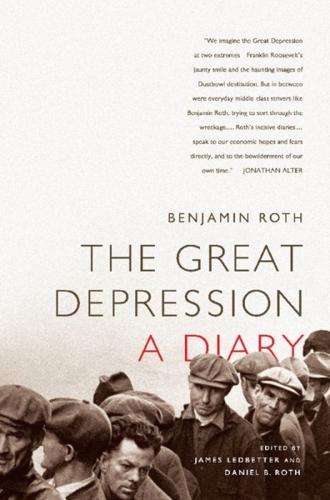
The Great Depression: A Diary
by
Benjamin Roth
,
James Ledbetter
and
Daniel B. Roth
Published 21 Jul 2009
This family has bought much real estate this way and in the next few years will reap a harvest. 6/28/62 The U—family bought half of East Federal St. at sheriff sales in the 1930s. However down-town real estate has gone to pot because of the growth of suburban shopping centers. The U—family still owns half of E. Federal St. but the buildings are empty and they cannot sell. 7/10/70 Almost all of E. Federal has been purchased by Urban Renewal at modest prices. The stores are vacant or have been torn down. The cheap E. Federal stores have moved to W. Federal and the good stores have moved to the suburbs. AUGUST 17, 1931 I just came back from a short stay at Geneva-on-the-Lake. Summer resorts seem to be particularly hard hit.
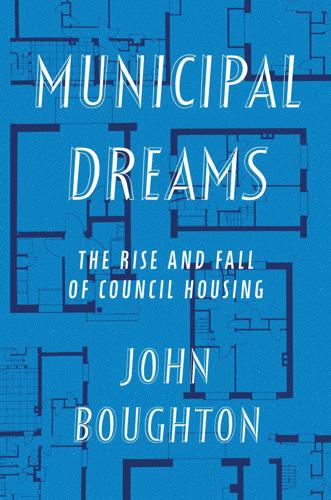
Municipal Dreams: The Rise and Fall of Council Housing
by
John Boughton
Published 14 May 2018
Research has shown, however, that the commonly deployed trope of three workless generations is very largely an urban myth. 2Office of the Deputy Prime Minister, Sustainable Communities: People, Places and Prosperity, 2005, 65. 3Madanipour, Cars and Allen quoted in Dave Adamson, The Impact of Devolution: Area-Based Regeneration Policies in the UK (Joseph Rowntree Foundation, January 2010), 9, jrf.org.uk, accessed 14 March 2017. 4Adamson, The Impact of Devolution: Area-Based Regeneration Policies in the UK, 9–10. 5‘Report of the Social Exclusion Unit: A New Commitment to Neighbourhood Renewal National Strategy Action Plan’, Cabinet Office, January 2001, 8, neighbourhood.statistics.gov.uk, accessed 14 March 2017. 6Aylesbury Tenants and Leaseholders First website, aylesburytenantsfirst.org.uk, accessed 14 March 2017. 7Christopher Beanland, ‘Channel 4’s Aylesbury Estate Ident Gets a Revamp – Starring the Residents’, Guardian, 14 March 2014, theguardian.com, accessed 15 March 2017. 8Loretta Lees, ‘The Urban Injustices of New Labour’s “New Urban Renewal”: The Case of the Aylesbury Estate in London’, Antipode, vol. 46, no. 4, 2014, 923–4. 9Southwark Council, Aylesbury Area Action Plan, January 2010, 179. 10David Blackman, ‘ “Where Did it All Go Wrong?” in Regeneration’, Inside Housing, 22 February 2002, insidehousing.co.uk, accessed 15 March 2017. 11Southwark Council, Southwark Affordable Rent Product Study July 2015, 5–6, and London’s Poverty Profile: Southwark, londonspovertyprofile.org.uk, accessed 17 March 2017. 12Colin Marrs, ‘Javid Rejects Aylesbury Estate CPO as Breach of Human Rights’, Architects’ Journal, 19 September 2016, architectsjournal.co.uk, accessed 8 June 2017. 13Heygate was Home, ‘Broken Promises’, heygatewashome.org, accessed 8 June 2017. 14Jon Kirk, ‘Welcome to the Aylesbury Estate – Once So Grim its Residents Dubbed it a Hell-Hole’, The People, 24 June 2007. 15Cited in Karl Murray, ‘Understanding the Impact of the Economic Down Turn on BAME Communities: A Case Study of the Aylesbury Estate in the London Borough of Southwark’, Black Training and Enterprise Group, June 2012, 11, bteg.co.uk, accessed 22 March 2017. 16Murray, ‘Understanding the Impact of the Economic Down Turn on BAME Communities: A Case Study of the Aylesbury Estate’, 12. 17Centre for Regional Economic and Social Research, Sheffield Hallam University, ‘The New Deal for Communities Experience: A Final Assessment’ (Department of Communities and Local Government, March 2010), 6, extra.shu.ac.uk, accessed 23 March 2017. 18Centre for Regional Economic and Social Research, ‘The New Deal for Communities Experience: A Final Assessment’, 40. 19See Paul Watt, ‘Housing Stock Transfers, Regeneration and State-Led Gentrification in London’, Urban Policy and Research, vol. 27, no. 3, 2009. 20Gene Robertson, ‘Labour’s Legacy’, Inside Housing, 7 May 2010, insidehousing.co.uk, accessed 24 March 2017. 21London Borough of Tower Hamlets, Housing Evidence Base, June 2016, 86, towerhamlets.gov.uk, accessed 27 March 2017. 22Jennifer Maureen Lowe, ‘Social Justice and Localities: The Allocation of Council Housing in Tower Hamlets’, PhD thesis, Queen Mary College, University of London, March 2004, 150–2. 23Tower Hamlets Fairness Commission, ‘Who Lives in Tower Hamlets?
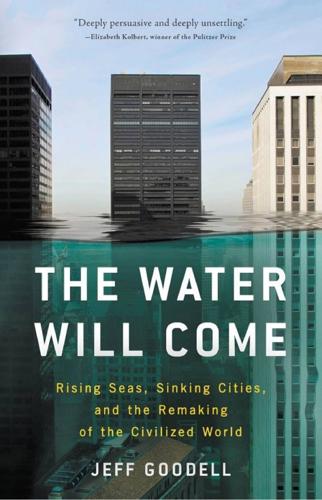
The Water Will Come: Rising Seas, Sinking Cities, and the Remaking of the Civilized World
by
Jeff Goodell
Published 23 Oct 2017
(Illustration courtesy of Reinaldo Borges) In Miami, as in every other city in the world, there is hope that if sea levels rise slowly enough, it will erode the politics of denial and inspire innovation and creative thinking, and the whole crisis will be manageable. People who don’t want to live with the risk of higher water can move to Denver, while the people who want to experiment with a platform city and new ways of living with water can remain behind, pioneers in a watery urban renewal. The problem is, rising seas also raise other kinds of risks—including the risk of sudden catastrophe. In Miami, the biggest concern is a potential nuclear disaster at the Turkey Point nuclear power plant, which sits on the edge of Biscayne Bay just south of Miami, completely exposed to hurricanes and rising seas.
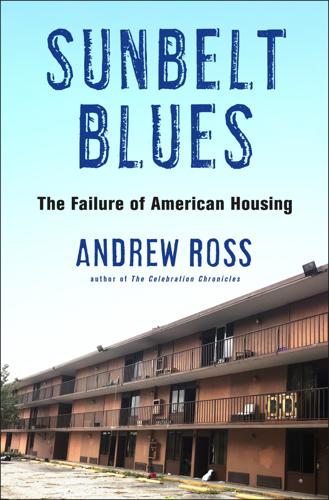
Sunbelt Blues: The Failure of American Housing
by
Andrew Ross
Published 25 Oct 2021
Hard-hit locations like Osceola County make that decoupling all the more visible. We must learn from these places if we want to fulfill the aspiration of “a decent home and a suitable living environment for every American family”—the goal set by the landmark Housing Act of 1949, a core accomplishment of Harry Truman’s Fair Deal.9 The public housing and urban renewal projects ushered in by that legislation were flawed in their implementation and were anything but fair in their impact on minority populations. But the stated goal was a righteous one and comfortably attainable for the richest country in the world. Today, the ambition of the 1949 act is carried on by the housing justice movement, with its renewed focus on renter rights, tenant organization, and the rallying cry of “Homes for All.”10 THE DIFFERENT FACES OF A CRISIS Although it is national in scope, the US housing crisis looks quite different from place to place.
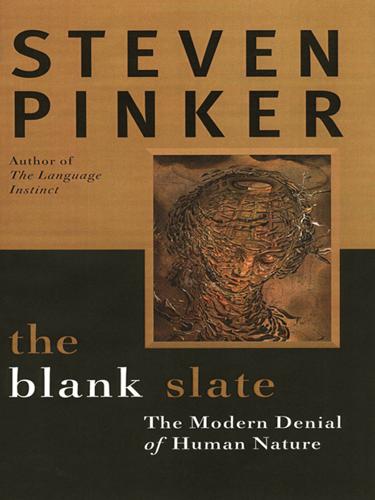
The Blank Slate: The Modern Denial of Human Nature
by
Steven Pinker
Published 1 Jan 2002
But in the 1950s he was given carte blanche to design Chandigarh, the capital of the Punjab, and one of his disciples was given a clean tablecloth for Brasília, the capital of Brazil. Today, both cities are notorious as uninviting wastelands detested by the civil servants who live in them. Authoritarian High Modernism also led to the “urban renewal” projects in many American cities during the 1960s that replaced vibrant neighborhoods with freeways, high-rises, and empty windswept plazas. Social scientists, too, have sometimes gotten carried away with dreams of social engineering. The child psychiatrist Bruce Perry, concerned that ghetto mothers are not giving children the enriched environment needed by their plastic brains, believes we must “transform our culture”: “We need to change our child rearing practices, we need to change the malignant and destructive view that children are the property of their biological parents.
…
Tuchman, Barbara Turkheimer, Eric Turner, Frederick Turner, Mark Turner, Terence Turner’s syndrome Tversky, Amos Twain, Mark twin studies 2001: A Space Odyssey Ultimatum game United Nations United States Universal Declaration of Human Rights Universal Grammar Universal People universals, human see also specific topics Updike, John urban renewal usury utopianism Utopian Vision Valian, Virginia Vanatinai van Buren, Abigail van Gogh, Vincent Vasquez, John Veblen, Thorstein vegetarianism Venter, Craig Verbal Behavior (Skinner) Vietnam War violence fear and feuds and honor and morality and prevention of as public health problem Violence Initiative visual illusions visual system arts and Vonnegut, Kurt Waddington, C.
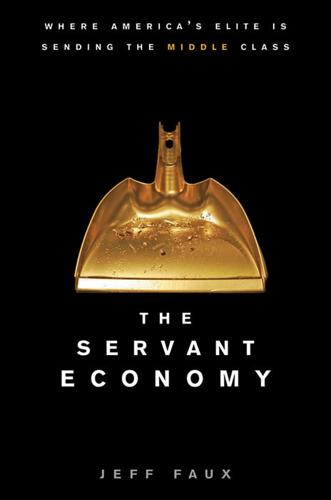
Servant Economy: Where America's Elite Is Sending the Middle Class
by
Jeff Faux
Published 16 May 2012
The New Deal restored the earlier idea of internal development as a conscious national enterprise, which had been lost in the late nineteenth century when industrialization morphed into finance capitalism and the westward expansion morphed into the thirst for overseas empire. Roosevelt understood that investment is the future-shaping act. The government financed dams, rural electrification, schools, roads and bridges, agricultural research, parks, and conservation and urban renewal projects and connected these infrastructure needs of the future to the immediate need to create jobs. Social Security, unemployment compensation, and other social insurance programs reflected a political ethos of taking shared responsibility for tomorrow. The United States would remain a private market economy, but be guided by shared public goals.
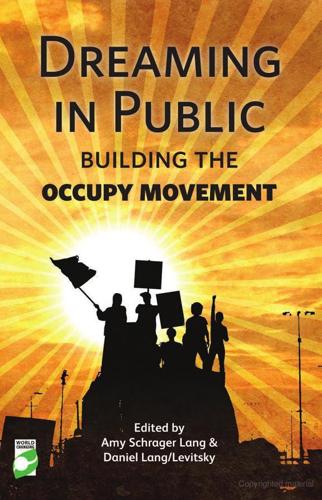
Dreaming in Public: Building the Occupy Movement
by
Amy Lang
and
Daniel Lang/levitsky
Published 11 Jun 2012
* * * At this point, then, we have to talk about Oakland itself, about what ‘Oscar Grant’ means to the people who made that name the center of their protest (or what it would mean if Occupy Oakland renamed itself ‘Decolonize and Liberate Oakland.’6) The broad and racialized social restructuring that Oakland has undergone in the last half century – an ‘urban renewal’, after the end of segregation, that has melded seamlessly into suburbanization and gentrification – is a process that has analogs in cities across the United States. But the Bay Area is also unique, and the fact that Oscar Grant was a young African American man traveling on the Bay Area Rapid Transit (BART) system – and was shot and killed by a police officer charged with policing BART – is a perfect symbol of the forms of differential inclusion through which Oakland has been formed and reformed (as this blogger describes too precisely for me to need to replicate7).
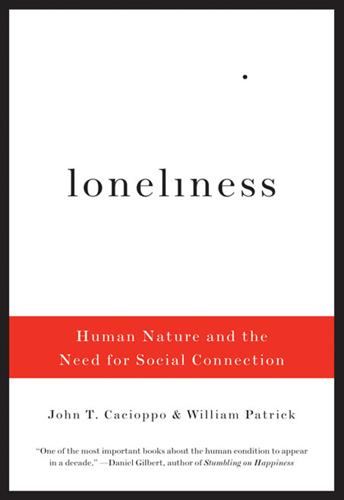
Loneliness: Human Nature and the Need for Social Connection
by
John T. Cacioppo
Published 9 Aug 2009
He noted that “low population density and the loss of natural daily social gatherings on the porch, the street, or the corner drugstore made sharing experiences and insulating problems more difficult.”5 Residents of transient communities lacked not only long-term relationships with friends and neighbors but the benefits of living close to older generations of their own families. Weiss’s colleague Mark Fried referred to the loneliness of working-class residents of Boston’s West End “grieving for a lost home” after their neighborhood was razed for what was then called urban renewal.6 This was a community of people rich in attachments, both to the place and to one another. Just a few years ago you could get a taste of what the West End had been like by walking through Boston’s North End—a chaotic jumble that seemed to operate as an extended family. But now gentrification threatens the established connections in that community as well.

Among Schoolchildren
by
Tracy Kidder
Published 14 Jun 1989
But even by then Holyoke's industries had fallen into a decline, which by the 1970s became altogether visible. As the city's population fell, from nearly seventy thousand at the peak to about forty thousand in the 1980s, the buildings of the Flats deteriorated. Some mills were abandoned. In the name of urban renewal—and partly in order to limit the size of the growing Puerto Rican population—City Hall presided over the demolition of many old apartment blocks. Most dramatically, the Flats burned. For years, flames lit the nighttime sky over Holyoke. Fires started in old wiring. Pyromaniacs and people bent on personal vendettas and professionals interested in insurance money set fires, and several were fatal.
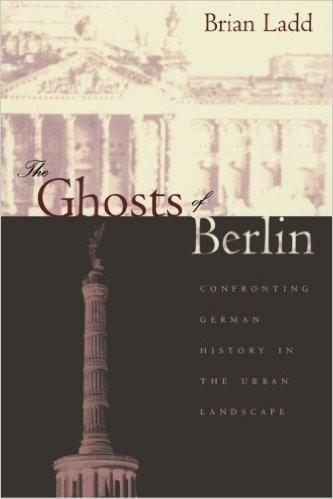
The Ghosts of Berlin: Confronting German History in the Urban Landscape
by
Brian Ladd
Published 1 Jan 1997
West Berlin's industries only limped through the decades during which the half-city was a subsidized political symbol and an economic absurdity. But East Berlin remained a major industrial center until 1990. Only the demise of the East German economy shut down the old factories along the upper Spree and jerked it over to the Western European norm of empty factories and unemployed proletarians. Despite war and urban renewal, the valley of the Spree across much of Berlin remains a landscape of old industrial structures. Among them are the innovative and influential factory buildings built for AEG by Peter Behrens between 1909 and 1914 (years during which his assistants included Walter Gropius, Le Corbusier, and Ludwig Mies van der Rohe).

Bold: How to Go Big, Create Wealth and Impact the World
by
Peter H. Diamandis
and
Steven Kotler
Published 3 Feb 2015
They band people together to paint bike lanes on streets, plant trees in public spaces, and create outdoor cafés and pop-up shops—all without governmental approval. Not only does this help them build their community, the point they make with these crowdsourced, temporary urban improvements usually leads to changes in legislature and long-term urban renewal.27 6. Host Events. This has been discussed before, but it’s worth repeating: nothing brings people together like, well, actually bringing people together. 7. Technical Optimization. If you want a larger online presence, don’t forget the tried and true: search engine optimization tactics, AdWords, Facebook advertising, etc.
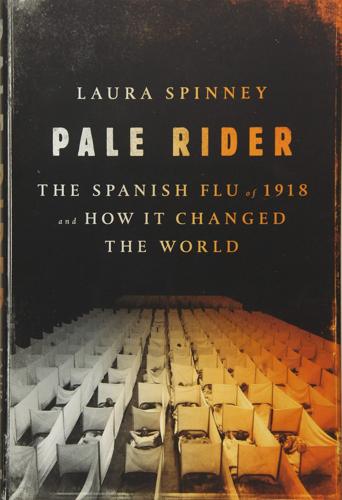
Pale Rider: The Spanish Flu of 1918 and How It Changed the World
by
Laura Spinney
Published 31 May 2017
And next door, Miranda grew more and more alarmed and appalled by that brutal and exuberant world, that implacable jungle growing beneath his windows with roots thicker and more treacherous than serpents, undermining everything, threatening to break through the soil in his yard and shake his house to its very foundations. When President Francisco de Paula Rodrigues Alves came to power in 1902, he launched an ambitious programme of urban renewal with the goal of turning Rio into a showcase of modern, republican civilisation. In his vision of the cidade maravilhosa, the marvellous city, there was no place for the cortiços, those nests of disease whose inhabitants, condemned by their biology, were ‘locked into a vicious cycle of malnutrition and infection’.11 They were razed and their inhabitants forced out.
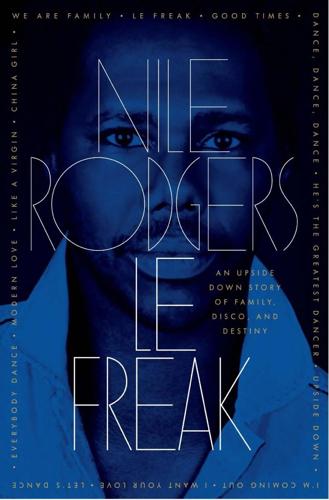
Le Freak: An Upside Down Story of Family, Disco, and Destiny
by
Nile Rodgers
Published 17 Oct 2011
The first artist on the bill for my maiden night was Screamin’ Jay. The music director knew that I could sight-read right through the show, so he told me I didn’t have to make Jay’s rehearsal. I just needed to be backstage an hour before the curtain. I used this free time to casually tour this familiar part of Harlem. Urban renewal was in full effect. The Apollo was just two blocks from the old Black Panther office, and around the corner from the Gold Lounge, where my old band had been overshadowed by a triple homicide. I walked east on 125th Street to Seventh Avenue and saw the New York State Office Building (President Clinton’s future office site).
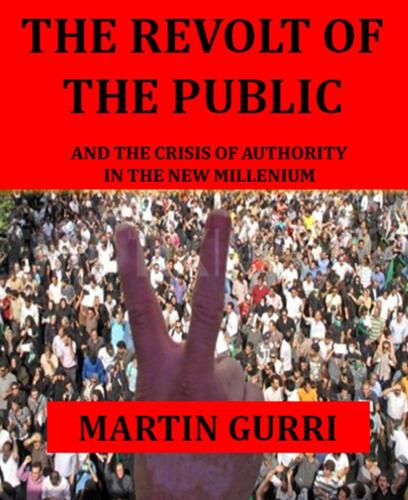
The Revolt of the Public and the Crisis of Authority in the New Millennium
by
Martin Gurri
Published 13 Nov 2018
Scott has called the twentieth century’s “high modernist” approach to government routinely gambled on colossal projects designed to bring perfection to the social order.[177] Authoritarian examples of such projects were Stalin’s collectivization of Soviet agriculture, Mao Zedong’s “Great Leap Forward” for China, and Julius Nyere’s “villagization” of Tanzania. Democratic examples included the building of the city of Brasilia, “urban renewal” housing projects like Chicago’s Cabrini Green, and the various “wars” waged by the US government against poverty, crime, drugs, and cancer. The purpose in each case was to engineer perfection in social relations by the application of political power. High modernist ideology was a utopian faith: it assumed that rational planning and scientific knowhow, if imposed on a gigantic enough scale, could eradicate the miseries of the human condition, from tyranny and inequality to hunger and disease.

Golden Gates: Fighting for Housing in America
by
Conor Dougherty
Published 18 Feb 2020
But the same redevelopment programs that demolished black neighborhoods around the country also destroyed thousands of rooming houses and “cage hotels” with single-occupant dwellings and shared bathrooms, removing a crucial supply of last-resort shelter. In the decades since, the combination of urban renewal, housing discrimination, and the conversion of bargain rentals to condos and co-ops has left the country with a deficit of seven million fewer affordable units than households who need them. For decades the archetypal homeless person was a white man with a drinking problem. Now it’s as diverse as the country: women, families, wayward teens, and many more nonwhite people fill the surveys of shelters and outdoor encampments in California and elsewhere.
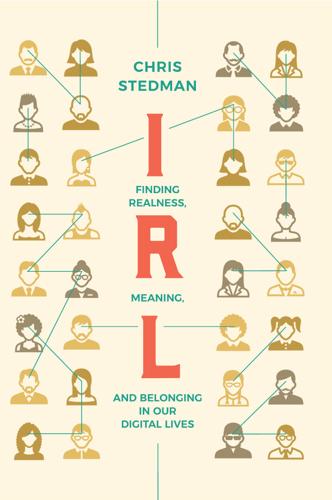
IRL: Finding Realness, Meaning, and Belonging in Our Digital Lives
by
Chris Stedman
Published 19 Oct 2020
This designation forever changed how people outside the neighborhood thought of and related to it. At Mapping Prejudice, I mentioned Schmid’s map. In response, Delegard told me about a memory map of Minneapolis’s Near Northside that Clarence Miller created with neighborhood residents in the 1950s to document an area that had been razed by urban renewal. While Schmid’s map was geographically accurate and the memory map was not, the latter captured things about the neighborhood that the former didn’t think of as important, as worth communicating. Rather than streets or the ages of buildings, Miller’s map conveyed relationships and social infrastructure.

The Hidden History of Burma
by
Thant Myint-U
There was a deluge of goodwill and, within Burma, political support at the highest level. No one was really against what we were trying to do, which was to move beyond a halt in demolitions to the actual renovation of several derelict and largely empty government-owned buildings, as a first step toward a broader program of urban renewal. There were no major vested interests to counter us. The public was on our side. But the Yangon Heritage Trust faced a wall of inertia, the existing way of doing things, which was nearly impossible to overcome. The bureaucracy offered many avenues for corrupt bureaucrats to get rich. In the past, a direct order from the military dictator had produced results.
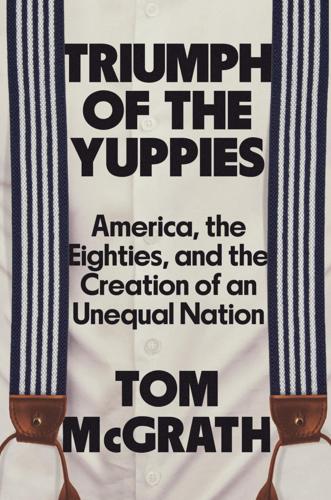
Triumph of the Yuppies: America, the Eighties, and the Creation of an Unequal Nation
by
Tom McGrath
Published 3 Jun 2024
Once an affluent and vital neighborhood filled with beautiful brownstones and ornate apartment buildings, it had suffered through an economic downturn in the ’30s and ’40s, and by the ’60s was home to an increasing number of low-income Black and Latino residents, many of whom lived in what had been converted into single-room occupancy (SRO) buildings. In the early ’70s—thanks in part to a city-led push for urban renewal that had begun a decade earlier—a handful of middle-class residents had begun to buy some of those brownstones on the cheap, and a growing number of young professionals, most of them white, had started to move into the neighborhood. One of them was a young woman named Betsy West, who in 1975 leased an apartment on the Upper West Side.
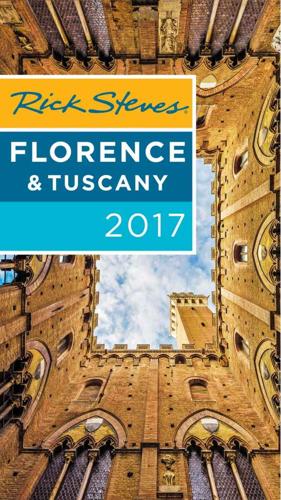
Rick Steves Florence & Tuscany 2017
by
Rick Steves
Published 8 Nov 2016
FLORENTINE & TUSCAN HISTORY ETRUSCANS, ROMANS, AND “BARBARIANS” (550 B.C.-A.D. 1000) FLORENCE’S FLOURISHING, PISA’S PEAK, AND SIENA’S SUMMIT (1000-1400) THE QUATTROCENTO: A PROSPEROUS RENAISSANCE CITY UNDER MEDICI PRINCES (1400s) DECLINE, MEDICI DUKES, RENAISSANCE GOES SOUTH (1500-1800) ITALIAN UNIFICATION, UNCONTROLLED URBANIZATION, URBAN RENEWAL (1800s TO TODAY) This chapter presents Florence and Tuscany’s history in a nutshell, divided into major historical periods. For each era, I’ve given a list of sights you can see during your travels that bring that period to life. ETRUSCANS, ROMANS, AND “BARBARIANS” (550 B.C. – A.D. 1000) In prehistoric times, much of what we today call “Tuscany” was part of the Etruscan Empire.
…
Sights • Michelangelo’s Florentine works—David, Medici Chapels, and Laurentian Medici Library • Pitti Palace and Boboli Gardens (the later Medici palace) • Later paintings (Uffizi) and statues (Bargello) • Destruction of the original Duomo facade (Duomo Museum) • Medici Chapels—pompous tombs of (mostly) later Medici • Ponte Vecchio cleaned up for jewelry shops • Baroque interiors of many older churches • Galileo’s fingers, telescopes, and experiments in the Galileo Science Museum ITALIAN UNIFICATION, UNCONTROLLED URBANIZATION, URBAN RENEWAL (1800s TO TODAY) After years of rule by Austrian nobles, Florence peacefully booted out the Ausländers and joined the Italian unification movement. The city even served briefly as modern Italy’s capital (1865-1870). It enjoyed an artistic revival of both medieval (Neo-Gothic) and Renaissance (Neoclassical) styles.
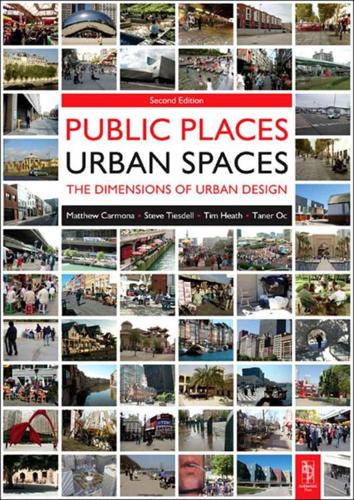
Public Places, Urban Spaces: The Dimensions of Urban Design
by
Matthew Carmona
,
Tim Heath
,
Steve Tiesdell
and
Taner Oc
Published 15 Feb 2010
Nevertheless, although often painful, through most of the 1945 to mid-1970s period, the destruction of the physical, social and cultural fabric of inner city areas, mixed-use functional neighbourhoods, and poorer, working-class residential areas was accepted without serious question. But, with increasing force from the early 1960s onwards, there was increasing compliant, unrest and questioning of the conventional wisdom of urban renewal and redevelopment and a number of criticisms of, and reactions to, Modernist ideas of urban space design and prevailing practices of urban development can be identified (see Box 2.2). Contemporary urban space design has in large part drawn stimulus from these perceived shortcomings (see Chapter 4).
…
This pattern of road infrastructure becomes an important armature determining the form of development, which is frequently known as pod development (see below). In established urban areas, hierarchical systems are seen in a hybrid form as quasi-hierarchical systems. Where comprehensive redevelopment and urban renewal schemes occurred, new development was often based on hierarchical road patterns and the creation of superblocks – larger than a traditional city block, a superblock is typically bounded by widely spaced, high-speed, arterial or circulating routes rather than by local streets. Superblocks, rather than traditional urban grids, for example, were frequently used in public housing projects during the second half of the twentieth century.

Lonely Planet Western Balkans
by
Lonely Planet
,
Peter Dragicevich
,
Mark Baker
,
Stuart Butler
,
Anthony Ham
,
Jessica Lee
,
Vesna Maric
,
Kevin Raub
and
Brana Vladisavljevic
Published 1 Oct 2019
To get to the bus station from the centre, ask locals to put you on a bus to ‘Terminali Autobusave’. Korça %082 / POP 51,000 Korça is southern Albania’s intellectual centre and a town with a proud cultural heritage. It’s an exceptionally pleasant and well-cared-for place by Albanian standards; recent efforts at urban renewal have made this even more so, with a showcase pedestrian avenue linking the town’s main square to its rebuilt Orthodox cathedral. The main reason to come here is to visit the town’s excellent Museum of Medieval Art, but even though there’s little to keep you here for much longer, many visitors are charmed by this characterful, green place, with a friendly population and some gorgeous countryside nearby.
…
A large swath of the city, especially around Novi Beograd and the Sava River waterfront, are almost a time capsule of brutalist architectural might. Its streets harbour crumbling concrete blocks, faded facades and a general vibe that makes one wonder if Belgradians got the memo: Yugoslavia died in 1992! Others might have a point in saying the city needs to modernise and a bit of urban renewal might do it some good. But few bargained for what they are getting: an Emirati-funded (and Emirates-evoking) development project known as the Belgrade Waterfront (www.belgradewaterfront.com), a rather controversial and grandiose makeover of nearly 2 million square metres of land on the southern bank of the Sava River in Savamala, (once) the city’s most cutting-edge and bohemian district.
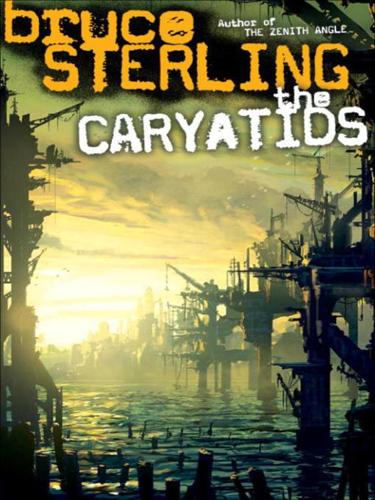
The Caryatids
by
Bruce Sterling
Published 24 Feb 2009
I can’t remember my roles in immersive worlds—there are just too many.” “No, I meant last August,” said Feininger politely. “In the streets of Los Angeles. You were lasciviously dancing on the top of a giant walking tripod that fired laser weapons into people’s homes.” “Oh that!” said Radmila. “You mean our urban-renewal festival.” “That behavior truly baffles us in the Acquis,” said Feininger. “Please try not to worry,” said Radmila, wide-eyed. “I’m just an actress. It’s all for show.” “Leaving aside the social-justice aspects of preferentially wrecking the neighborhoods of the poor,” said Feininger, “are you aware of what happens, technically speaking, within the legs of those tripods?”
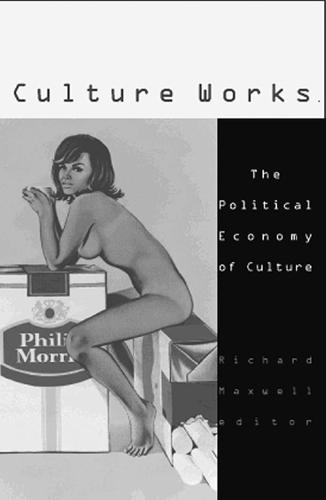
Culture works: the political economy of culture
by
Richard Maxwell
Published 15 Jan 2001
Immediately after this seemingly minor change in the tax code, the nationwide number of new retail projects shot up, and the size of shopping centers became larger. The tax code offered little incentive for upkeep and rehabilitation, so it fostered the now familiar pattern of sparkling new malls being built next door to faded old ones. Meanwhile, Hanchett argues, direct federal grants during the first ten years of urban renewal, aimed at alleviating the crisis of housing and jobs in the older downtowns, totaled only $712 million, “less than a single year’s tax expenditure for accelerated depreciation in real estate” (ibid., 1107). 31. Ibid., 1105. 32. Ibid., 1104–5. 33. Ibid., 1105. Investment in real-estate structures rose by 56 percent in the first five years of the Reagan administration, under which Congress enacted new tax shelters that reaccelerated the building boom.
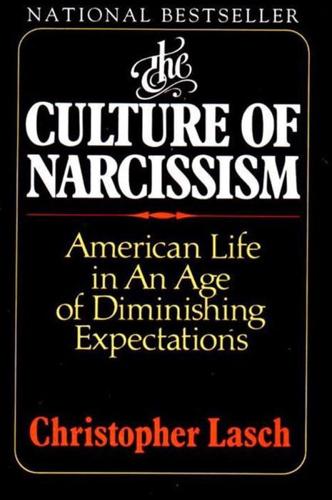
The Culture of Narcissism: American Life in an Age of Diminishing Expectations
by
Christopher Lasch
Published 1 Jan 1978
From the 1870s down to the First World War, advocates of research, social service, and liberal culture vied for control of the other enterprises. The corporate policies of the university both internal and external-addition of new departments and pro- university. Faculties divided into adherents of one or another of these programs, while students and administrators injected their grams, cooperation in war research, participation in urban renewal programs-now had to be made by administrators and the idea of the service university or multiversity whose lacilities were own interests into the debate. In the end, none of these faction achieved a decisive victory, but each won substantial concessions. The introduction of electives, together with extracurricular diversions of various kinds, helped to pacify the students.
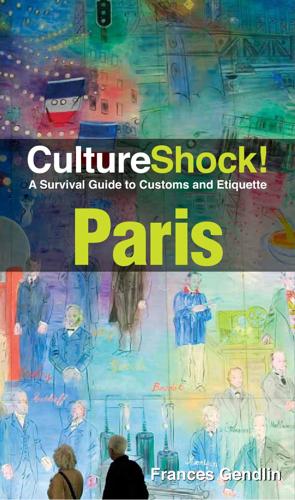
Cultureshock Paris
by
Cultureshock Staff
Published 6 Oct 2010
Paris rate of unemployment. Today this population congregates to the sides of the boulevard de Belleville at the Arab and Asian shops, Muslim and Jewish establishments and the crowded, inexpensive market. Much of this western side where the 20e and the 11e abut is rundown, but some parts bear the mixed results of urban renewal. In the 1960s, the 20e began to experience the same faceless development as parts of the 13e and 15e, but the outcry of the residents, les Bellevillois, caused at least some areas to be preserved. Thus, this hilly northern part of the district contains apartment blocks, charming cottages and dismal slums.
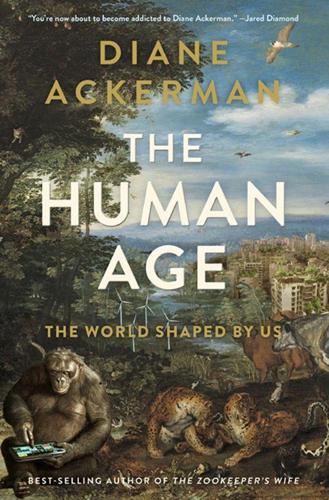
The Human Age: The World Shaped by Us
by
Diane Ackerman
Published 9 Sep 2014
In a practical sense, it’s a lofty shortcut, a sky alley that avoids all the intersections. A million people have already strolled its landscaped corridors, and it’s inspired other cities hoping for similar sky parks. Chicago, Mexico City, Rotterdam, Santiago, and Jerusalem are among those following suit with their derelict trestles, each an urban renewal project featuring regional plants and its own special character or sense of humor. In Wuppertal, Germany, the rails-to-trails corridor includes a brightly colored LEGO-style bridge. Like the wastewater wetlands, such projects are widening our notion of recycling and yielding an urban lifestyle that’s interwoven with nature.
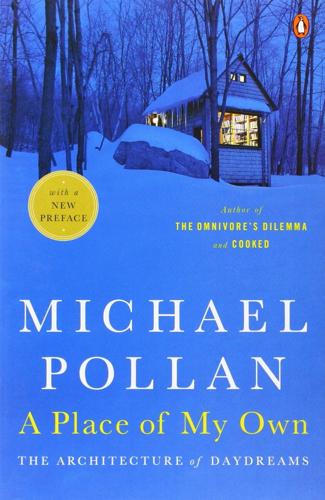
A Place of My Own: The Architecture of Daydreams
by
Michael Pollan
Published 15 Jan 1997
In our own time, the balance between the two terms has been steadily tilting toward the There end of the scale. There are some powerful abstractions on the side of There, and in the last century or so these have tended to run over the local landscape. The force and logic of these abstractions are what have helped farmland to give way to tract housing, city neighborhoods to ambitious schemes of “urban renewal,” and regional architecture to an “international style” that for a while elevated the principle of There—of universal culture—to a utopian program and moral precept. Modernism has always regarded Here as an anachronism, an impediment to progress. This might explain why so many of its houses walked the earth on white stilts, looking as though they wanted to get off, to escape the messy particularities of place for the streamlined abstraction of space.

Lonely Planet Ireland's Best Trips
by
Lonely Planet
Published 1 Mar 2017
WHY THIS IS A CLASSIC TRIP CATHERINE LE NEVEZ, WRITER Journeying from Killarney to Dungarvan, this trip not only incorporates all of Ireland’s definitive elements but also plenty of unexpected ones, from the Titanic’s fateful final port to exotic animals roaming free in an island-set zoo to a spine-tingling former prison – as well as countless opportunities for serendipitous detours (because, of course, serendipity is what makes a road trip a true classic). Top of Chapter TRIP HIGHLIGHT 7 Cork City Ireland’s second city is first in every important respect – at least according to the locals, who cheerfully refer to it as the ‘real capital of Ireland’. A flurry of urban renewal has resulted in new buildings, bars and arts centres and tidied-up thoroughfares. The best of the city is still happily traditional, though – snug pubs with regular live-music sessions, excellent local produce in an ever-expanding list of restaurants and a genuinely proud welcome from the locals.

Lonely Planet's Best of USA
by
Lonely Planet
MoMA PS1 A smaller, hipper relative of MoMA, MoMA PS1 (%718-784-2084; www.momaps1.org; 22-25 Jackson Ave, Long Island City; suggested donation adult/child $10/free, admission free with MoMA ticket; hnoon-6pm Thu-Mon; bE/M to 23rd St-Court Sq, G/7 Court Sq) is a master at hunting down fresh, bold contemporary art and serving it up in a Berlin-esque, ex-school locale. Forget about pretty lily ponds in gilded frames. Here you’ll be peering at videos through floorboards and debating the meaning of nonstatic structures while staring through a hole in the wall. TOP EXPERIENCE The High Line A resounding triumph of urban renewal, the High Line is a remarkable linear public park built along a disused elevated rail line. This aerial greenway attracts millions of visitors each year. CHRIS TOBIN / GETTY IMAGES © Great For… y Don’t Miss The third and final part of the High Line, which opened in 2014 and bends by the Hudson River at 34th St. 8 Need to Know Map; %212-206-9922; www.thehighline.org; Gansevoort St; h7am-11pm Jun-Sep, to 10pm Apr, May, Oct & Nov, to 7pm Dec-Mar; gM11 to Washington St, M11, M14 to 9th Ave, M23, M34 to 10th Ave, bL, A/C/E to 14th St-8th Ave, C/E to 23rd St-8th Ave; F 5 Take a Break A cache of eateries, from sushi joints to creperies, is stashed within Chelsea Market at the 14th St exit.

Pour Your Heart Into It: How Starbucks Built a Company One Cup at a Time
by
Howard Schultz
and
Dori Jones Yang
Homes in beautiful neighborhoods like Capitol Hill sat empty and abandoned. So many people lost jobs and moved out of town that one billboard near the airport joked, “Will the last person leaving Seattle—turn out the lights?” That famous message appeared in April 1971, the same month that Starbucks opened its first store. At that time, also, an urban renewal project was threatening to tear down the Pike Place Market. A group of developers wanted to build a commercial center with a hotel, convention hall, and parking lot in its place. In a referendum, Seattle’s citizens voted to preserve Pike Place as it was. Seattle in those days was just beginning to shed its image as an exotic, isolated corner of America.
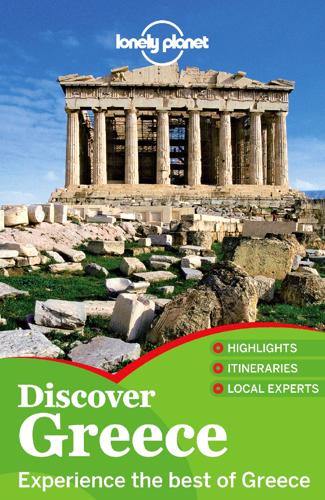
Discover Greece Travel Guide
by
Lonely Planet
ATHENS & AROUND ATHENS’ HIGHLIGHTS ATHENS’ BEST… ATHENS WALKING TOUR DISCOVER ATHENS & AROUND Excursions from Athens Piraeus Temple of Poseidon Peania & Around Hydra Top of chapter Athens & Around Ancient and modern, with equal measures of grunge and grace, bustling Athens is a heady mix of history and edginess, lively cafes and alfresco dining, chaos and pure fun. The magnificent Acropolis that rises majestically above the sprawling metropolis has stood witness to the city’s many transformations. In over a decade of radical urban renewal, Athens has reinvented itself. Post-Olympics Athens is conspicuously wealthier, more sophisticated and more cosmopolitan. The shift is evident in the stylish new restaurants, shops and hip hotels, and in the emerging artsy-industrial neighbourhoods and entertainment precincts. The car-free historic centre is an open-air museum, yet the city’s cultural and social life takes place around these ancient monuments, reconciling past and present.
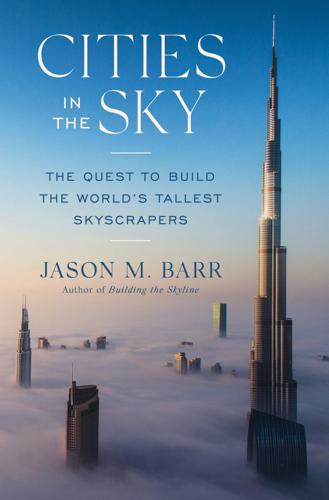
Cities in the Sky: The Quest to Build the World's Tallest Skyscrapers
by
Jason M. Barr
Published 13 May 2024
That it took till 1998 for this strategy to surface in Asia—starting with the Petronas Towers in Kuala Lumpur—was due to the time Asia needed to catch up with its economic development and infrastructure. That it wasn’t replicated in the United States after that was because by the end of the 1970s America’s era of big government-funded urban renewal projects was over, while in Asia government-funded projects were just beginning. As noted earlier, the WTC concept would help spawn World Trade Centers around the world, such as those in Chicago, Dhaka, Jakarta, Bahrain, and Dubai. The idea of using a skyscraper to promote trade is arguably one of their most natural uses.

Whole Earth Discipline: An Ecopragmatist Manifesto
by
Stewart Brand
Published 15 Mar 2009
You should provide clean water, toilets, electricity, garbage collection and disposal, and maybe let people build their own houses if they can, using materials that you can provide,” says Aprodicio Laquian, the Filipino-Canadian planner who practically invented the idea of slum-dweller-designed urban rehabilitation in the 1960s. . . . These sorts of schemes, known as “slum upgrading” or “sites and services,” have been at the heart of the most successful urban-renewal projects of the past 40 years. As the 2003 UN report points out, “When more than half of the urban population lives in them, the slums become the dominant city.” A city planet has every reason to learn to understand slums, to respect the people there, and to help clear the way for them to become full citizens.
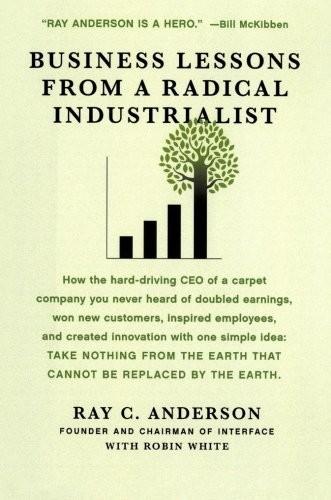
Business Lessons From a Radical Industrialist
by
Ray C. Anderson
Published 28 Mar 2011
I knew how many tons of nylon we’d recycled. But how do you quantify what is so much the qualitative? How much social sustainability had we created, and how much was enough? My right brain seemed inadequate for the challenge. Fortunately, our guest speaker that night, Majora Carter, a visionary voice in city planning who views urban renewal through an environmental lens, had a lot to say to us about some of these things. Carter was awarded a 2005 MacArthur “genius” grant after founding Sustainable South Bronx, a community organization that pushes for eco-friendly practices (such as green and cool roofs). Equally important are job training and green-related economic development for her neighborhood.

The Iron Cage: The Story of the Palestinian Struggle for Statehood
by
Rashid Khalidi
Published 31 Aug 2006
Hundreds of homes were blown up (perhaps as many as two thousand),2 crops were destroyed, and over one hundred rebels were summarily executed simply for the possession of firearms, or even ammunition.3 Curfews, administrative detention, internal exile, and other punishments were liberally applied, and particularly cruel means were employed by the British, such as tying villagers to the front of locomotive engines to prevent rebels from blowing up trains. An entire quarter of the Old City of Jaffa was dynamited (under the rubric of “urban renewal”) after the British failed to bring it under control. Total Arab casualties during the revolt were approximately 5,000 killed and 10,000 wounded, while those detained totaled 5,679 in 1939.4 The number of those exiled or forced to flee is unknown, but is probably in the thousands. In an Arab population of about 1 million, these were considerable figures: they meant that over 10 percent of the adult male population was killed, wounded, imprisoned, or exiled.5 Although some of the casualties were simply bystanders, these figures give some indication of the extent of popular participation in the revolt, and of its all-encompassing national nature.

Poverty for Profit
by
Anne Kim
“The public housing projects were getting bigger and bigger and bigger, and they were becoming just nests of crime,” Peabody told me in a 2016 interview.21 By the 1970s, infamous “projects” included California’s Jordan Downs Development, epicenter of the Watts Rebellion in 1965; and Chicago’s Cabrini Green, a seventy-acre development press accounts described as a “war zone.”22 In 1972, the government demolished the troubled Pruitt-Igoe projects in St. Louis, designed by Minoru Yamasaki, a Japanese American architect who would later design the World Trade Center towers.23 A thirty-three-building complex with more than 2,800 units, Pruitt-Igoe became a symbol of urban dysfunction, governmental incompetence, and the failure of “urban renewal.” Besides the rampant crime—including drug dealing, prostitution, gang activity, and murder—“heaters, toilets, garbage incinerators and electricity all malfunctioned, and at one point the faulty plumbing let loose floods of raw sewage through the hallways,” The Guardian reported in a 2015 retrospective.24 Vouchers, Peabody argued, rescued families from that kind of misery.
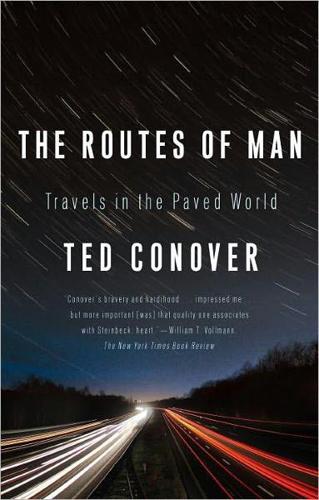
The Routes of Man: How Roads Are Changing the World and the Way We Live Today
by
Ted Conover
Published 15 Jan 2010
His nephew, Louis Napoléon—elected the first president of France’s Second Republic in 1848, before restoring the monarchy and becoming Emperor Napoléon III in 1852—focused more on home. The industrial revolution was taking hold in France; buoyed by a popular mandate to restore and remake his chaotic nation, Napoléon III undertook a program of massive urban renewal. The ramshackle, medieval quarters of Paris were symbols not only of poverty and disease but of insurrection. Among his early projects was construction of the grand boulevards of Paris. Though the Champs-Élysées had begun to take shape nearly two centuries before, Napoléon III (through his prefect, Baron Georges-Eugène Haussmann) expanded the concept, tearing down twisting crowded districts dating from the Middle Ages and remaking the fractious city by endowing it with, in Haussmann’s words, “spaces, air, light, verdure and flowers, in a word, with all that dispenses health.”
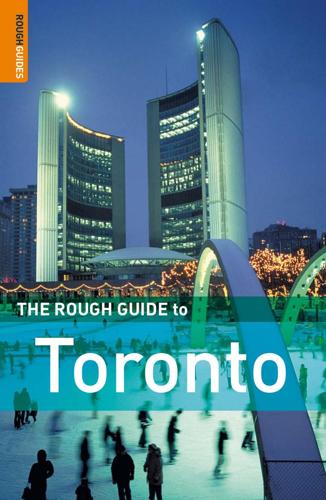
The Rough Guide to Toronto
by
Helen Lovekin
and
Phil Lee
Published 29 Apr 2006
| Gardens, wetlands, waterparks & zoos For an account of Toronto Zoo, see p.99. K I D S ’ TO R O N TO oronto does an excellent job of keeping visitors with children in good spirits. Its reputation as being both safe and clean goes a long way toward promoting a family-positive image, and many attractions were specifically created with families in mind – a result of urban renewal and development coinciding with the maturing of the Baby Boom generation. In addition, Toronto is unusual in that a significant portion of its population lives within city limits, so parks or playgrounds are always close at hand. Major cultural institutions such as the Art Gallery of Ontario and the Royal Ontario Museum (see p.67 and p.79, respectively), as well as attractions like the Ontario Science Centre (see p.104), have innovative programming specifically designed for children.
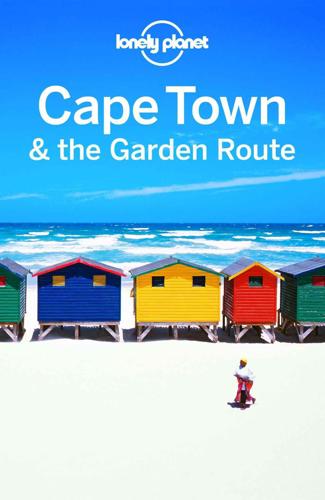
Lonely Planet Cape Town & the Garden Route (Travel Guide)
by
Lucy Corne
Published 1 Sep 2015
In national and provincial elections two years later the ANC were equally triumphant, and Ebrahim Rasool – a practising Muslim whose family had been moved out of District Six when he was 10 – was appointed premier of the Western Cape. Conscious of their core vote in the Cape Flats, the ANC-led city council vowed to improve the lot of township folk by upgrading the infrastructure in the informal settlements and boosting investment in low-cost housing, such as the N2 Gateway Project. Urban renewal projects were also announced for Mitchell's Plain, one of the deprived coloured areas of the city blighted, like so many Cape Flats suburbs, by the murderous drug trade. Particularly deadly has been the rise in addiction to methamphetamine, known locally as ‘tik’. Xenophobia & Football Battling charges of corruption and blamed for disruptive rolling power cuts caused by the Western Cape’s overstretched nuclear power station at Koeberg, the ANC narrowly lost out to the Democratic Alliance (DA) in the municipal elections of March 2006.
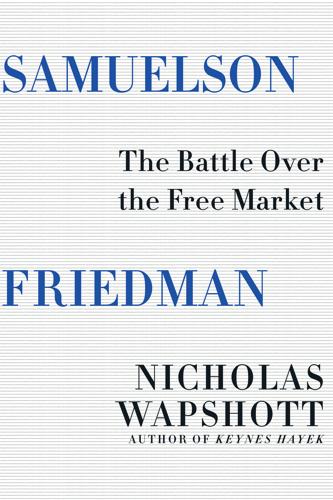
Samuelson Friedman: The Battle Over the Free Market
by
Nicholas Wapshott
Published 2 Aug 2021
Samuelson agreed, but warned the committee of the consequences of such deals. “If everybody wants to catch up all the time to the previous situation, then you are going to have an egg-chicken-egg situation which will perpetuate the rate of inflation,”46 he said. While praising Nixon’s proposed cuts in public spending on health, education, and urban renewal, although he did not believe the president would ensure that the Democratic-held Congress would make such cuts, Friedman was unequivocal in his opposition to the federal government intervening in the labor market and consumer prices. “I strongly oppose the wage-price freeze and the more limited control of wages and prices that will doubtless succeed the freeze,” he testified.
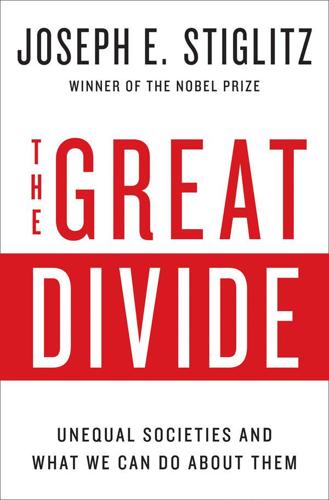
The Great Divide: Unequal Societies and What We Can Do About Them
by
Joseph E. Stiglitz
Published 15 Mar 2015
But it more rapidly shifted its economy from one dependent on steel and coal to one that emphasizes education, health care, and legal and financial services. Manchester, the center of Britain’s textile industry for more than a century, has been transformed into a center of education, culture, and music. America does have an urban renewal program, but it is aimed more at restoring buildings and gentrification than at maintaining and restoring communities, and even at that, it is languishing. American workers were sold “free” trade policies on the promise that the winners could compensate the losers. The losers are still waiting.

The Job: The Future of Work in the Modern Era
by
Ellen Ruppel Shell
Published 22 Oct 2018
Photos from the period show a windowless room festooned with American flags and men of various ages in dark suits staring stiffly at the camera. In 1948 what was then known as “YMCA College” was rechristened Sinclair College in honor of deceased YMCA secretary David A. Sinclair. A quarter century later, the college moved to its current home, a sixty-five-acre wedge of urban renewal on the western edge of downtown Dayton, just minutes off the interstate. Convenience, and plenty of parking space, seemed to be central features. “For many of us, college is one of the few things you do only once—you go when you’re eighteen, stay until you’re twenty-two, and never go back,” Johnson said.
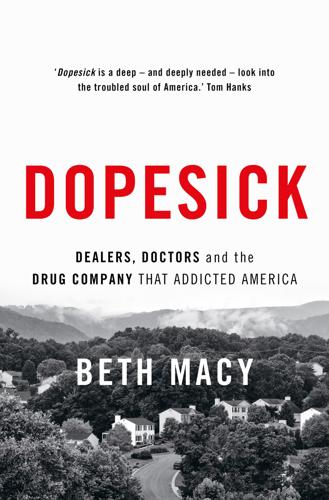
Dopesick: Dealers, Doctors and the Drug Company That Addicted America
by
Beth Macy
Published 4 Mar 2019
“On the other side of the cities [many Americans] live in, there’s poverty and poor health probably just as bad,” he said. In Appalachia, he conceded, poverty and poor health were not only harder to camouflage; they were increasingly harder to recover from. For decades, black poverty had been concentrated in urban zones, a by-product of earlier inner-city deindustrialization, racial segregation, and urban renewal projects of the 1950s and 1960s that decimated black neighborhoods and made them natural markets for heroin and cocaine. Whites had historically been more likely to live in spread-out settings that were less marred by social problems, but in much of rural America that was clearly no longer the case.
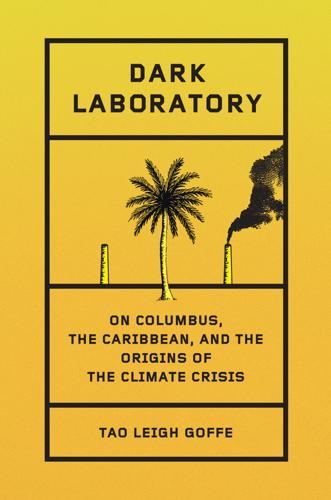
Dark Laboratory: On Columbus, the Caribbean, and the Origins of the Climate Crisis
by
Tao Leigh. Goffe
Published 14 Mar 2025
Later, it transformed into a hub for the African American community of New Haven and hosted the Black Expo and events for the Black Coalition of Greater New Haven. It was once also a concert venue where performers like Stevie Wonder took the stage. It is now part of the Connecticut Freedom Trail that honors the Civil Rights history of the state. The abandoned Goffe Street Armory is the target of community-engaged urban renewal initiatives. Is there green potential in such renovations led by Yale University faculty and friends of the Goffe Street Armory? Only time will tell. Why are infrastructures in Black neighborhoods allowed to fall into such disrepair? Who knows the fugitive tale of William Goffe? Who is aware of the Black Goffes who live across New England and the Caribbean?
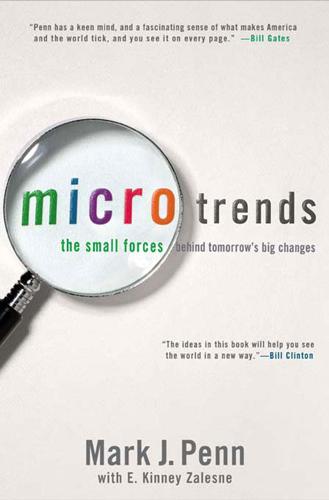
Microtrends: The Small Forces Behind Tomorrow's Big Changes
by
Mark Penn
and
E. Kinney Zalesne
Published 5 Sep 2007
And after a couple months, they could be U.N. translators, if their current jobs don’t work out. Or books on tape. Extreme Commuters are the transportation equivalent of speed readers. They could get through War and Peace in twelve days, or The Da Vinci Code in five. Lyndon Johnson said he was declaring war on poverty and beginning massive urban renewal because, he predicted, 95 percent of Americans were going to live in cities. But in fact, people have spread out across the country to suburbs and exurbs faster than anyone could have predicted. (This just proves how hard it is to make assumptions about what America will look like fifty years from now—while you’re focused on a few big trends, other microtrends seep in and upset your expectations.)
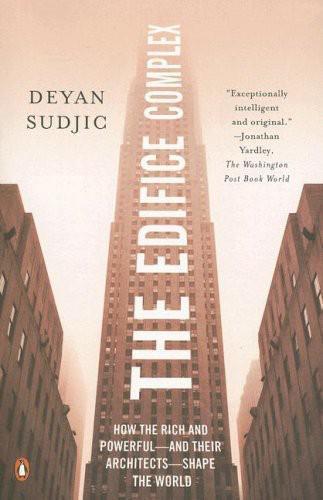
The Edifice Complex: How the Rich and Powerful--And Their Architects--Shape the World
by
Deyan Sudjic
Published 27 Nov 2006
The World Trade Center had a personality, and it was what gave the towers their impact, as much as their height. The towers were interpreted as a signal of power and authority by those who wanted to challenge America’s hold on the world. They were, it was insinuated, the personification of the evils of capitalism. The idea of building them was first put forward by David Rockefeller, as part of an urban renewal proposal that would have the effect of safeguarding his investment in the area. His brother Nelson, from his Albany citadel, ensured its financial viability when, as Governor of New York State, he leased space in them for 1,000 civil servants. But they were actually built by a group of public officials in a bid to revitalize the local economy of the city, badly damaged by the loss of traditional employers as shipping operations in Manhattan vanished in the 1950s.
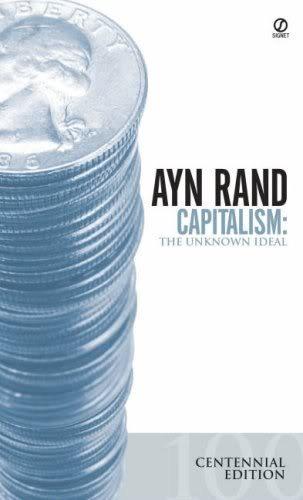
Capitalism: the unknown ideal
by
Ayn Rand
Published 15 Aug 1966
The following authors are not exponents of Objectivism, and these recommendations should not be understood as an unqualified endorsement of their total intellectual positions. Anderson, Benjamin M., Economics and the Public Welfare: Financial and Economic History of the United States, 1914-1946, Princeton, New Jersey: D. Van Nostrand Co., 1949. Anderson, Martin, The Federal Bulldozer: A Critical Analysis of Urban Renewal, 1949-1962, Cambridge, Massachusetts: The M.I.T. Press, 1964. Ashton, T. S., An Economic History of England: The Eighteenth Century, New York: Barnes and Noble, 1955. ——, The Industrial Revolution, 1760-1830, London: Oxford University Press, 1948. Ballvé, Faustino, Essentials of Economics, Princeton, New Jersey: D.
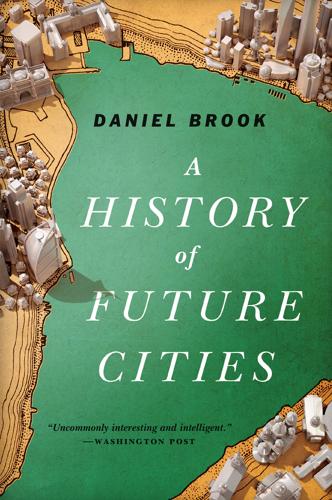
A History of Future Cities
by
Daniel Brook
Published 18 Feb 2013
Many of the “slum dwellers” that the British wanted to rehouse in their “improvement” schemes simply wanted to stay put, valuing the preservation of their communal life over any material benefits that the trust might offer. Indian tenants and landlords opposed to the demolitions of their neighborhoods tried to stop the urban renewal effort through thousands of petitions and court cases. And many Bombayites spurned the trust’s offer of new housing in a new neighborhood, instead finding or building themselves new accommodations close to their old demolished homes. To the Bombayites, the trust embodied everything that was demeaning about British rule.
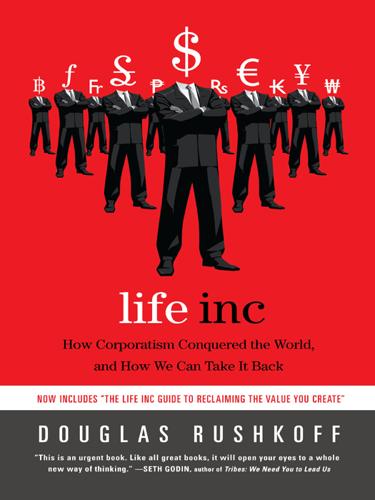
Life Inc.: How the World Became a Corporation and How to Take It Back
by
Douglas Rushkoff
Published 1 Jun 2009
For most visitors the connection felt real enough—at least compared with whatever else they were getting in their home neighborhoods and office parks. These projects were hailed as successes from nearly all corners. Landmarks were being restored, and the uniqueness of place was being celebrated. Urban-renewal advocates issued reports showing how these projects lowered crime in the streets, relieved residents of boredom, and increased tourism. Theme malls served as a compelling enough proof-of-concept for developers to attempt the Gruen Transfer on an even greater scale: they would transform whole districts into master-planned shopping environments.
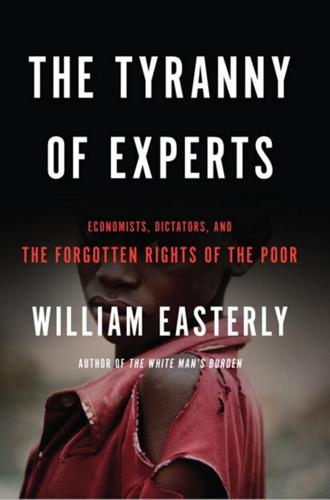
The Tyranny of Experts: Economists, Dictators, and the Forgotten Rights of the Poor
by
William Easterly
Published 4 Mar 2014
“Shacktown Pulls Through the Winter,” New York Times, March 26, 1933, accessed September 10, 2013, http://select.nytimes.com/gst/abstract.html?res=F00C1FFE3D5E1A7A93C4AB1788D85F478385F9. 25. Arthur C. Holden, “Planning Recommendations for the Washington Square Area” prepared for the Washington Square Association, 1946, 12. 26. Hilary Ballon, “Robert Moses and Urban Renewal,” in Robert Moses and the Modern City: The Transformation of New York, eds. Hillary Ballon and Kenneth T. Jackson (New York: W. W. Norton & Company, 2007). 27. Holden, “Planning Recommendations,” 17, 42. 28. Ibid., 54. 29. “South Village: Slum Clearance Plan Under Title I of the Housing Act of 1949,” January 1951 and “Washington Square South: Slum Clearance Plan Under Title I of the Housing Act of 1949,” January 1951, Robert Moses Papers, New York Public Library Manuscript and Archives Division, New York. 30.
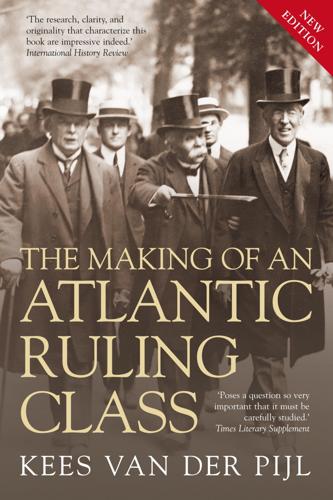
The Making of an Atlantic Ruling Class
by
Kees Van der Pijl
Published 2 Jun 2014
The outward thrust of the Kennedy policy was based firmly in domestic reforms and expansionary measures, even if it was often left to his successor to win final congressional approval. In his own lifetime, Kennedy succeeded in having passed an improved minimum wage, low-cost housing projects and urban renewal, as well as a $900 million public works programme.78 Employment was still recovering from the 1958 and 1959/60 recessions when Kennedy came to power. At first, the new administration refrained from substantial state intervention and seemed to continue the passive attitude of its predecessor, allowing unemployment to rise again in 1961.

Smart Cities: Big Data, Civic Hackers, and the Quest for a New Utopia
by
Anthony M. Townsend
Published 29 Sep 2013
As Anthony Flint recounts in Wrestling with Moses, Jacobs was dumbstruck when she learned about the plans in the pages of the New York Times in February 1961, a month after submitting the manuscript for Death and Life of Great American Cities. “Her home and neighborhood, the very neighborhood she had identified as a model of city living in the book she had just written, were now targeted by the urban renewal machine that Robert Moses had set in motion.”21 The blight study was a trick she knew well. “It always began with a study to see if a neighborhood is a slum,” Jacobs had noted in her manuscript. “Then they could bulldoze it and it would fall into the hands of developers who could make a lot of money.”22 In place of the funky nineteenth-century neighborhood of bohemians and ethnics would rise modern middle-class tower blocks.
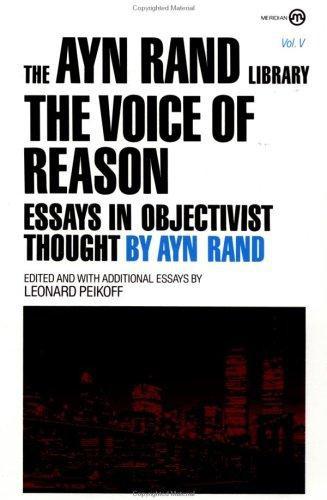
The Voice of Reason: Essays in Objectivist Thought
by
Ayn Rand
,
Leonard Peikoff
and
Peter Schwartz
Published 1 Jan 1989
If a man who earns his living hears constant denunciations of his “selfish greed” and then, as a moral example, is offered the spectacle of the War on Poverty—which fills the newspapers with allegations of political favoritism, intrigues, maneuvering, corruption among its “selfless” administrators—what will happen to his sense of honesty? If a young man struggles sixteen hours a day to work his way through school, and then has to pay taxes to help the dropouts from the dropout programs—what will happen to his ambition? If a man saves for years to build a home, which is then seized by the profiteers of Urban Renewal because their profits are “in the public interest,” but his are not—what will happen to his sense of justice? If a miserable little private holdup man is hauled off to jail, but when the government forces men into a gang big enough to be called a union and they hold up New York City, they get away with it—what will happen to the public’s respect for the law?

The Wizard of Menlo Park: How Thomas Alva Edison Invented the Modern World
by
Randall E. Stross
Published 13 Mar 2007
When the directors: TAE to George Gouraud, 7 March 1881, PTAED, LB008024. This letter book copy is exceedingly difficult to read. A typeset and annotated copy is provided in PTAE, 5:996–997. Etna Iron Works: Roach’s property was located on Goerck Street, a street that later disappeared in the course of urban renewal. The two partners decided: Jehl, Reminiscences, 744. One reporter marveled: “The Doom of Gas,” St. Louis Post-Dispatch, 1 May 1882, PTAED, MBSB52192. The family doctor: Leslie D. Ward to TAE, 18 January 1882, PTAED, D8214C. Often he napped on the premises: Dyer and Martin, Edison, 400. He insisted on custom building: Friedel and Israel, Edison’s Electric Light, 173.
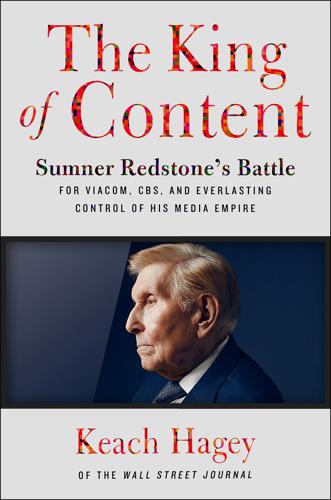
The King of Content: Sumner Redstone's Battle for Viacom, CBS, and Everlasting Control of His Media Empire
by
Keach Hagey
Published 25 Jun 2018
But when Hynes was sworn in, his corporation counsel informed him that he did not in fact have the authority to revoke the permits.52,53 The corrupt Curley era ended, but not before giving one last leg up to Mickey and Sagansky. Still, Hynes had promised a “New Boston,” and he was true to his word. In one of the most controversial acts in the history of American urban renewal, he set about wiping the West End from the face of the earth, bulldozing its tenements to make way for gleaming high-rises. The narrow streets were a fire hazard, he argued, the empty storefronts were blighted, and the new buildings and the upper-middle-class tenants that would inhabit them would bring more tax revenue to the city.
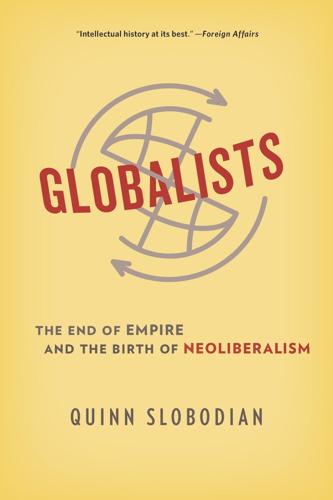
Globalists
by
Quinn Slobodian
Published 16 Mar 2018
In his classic study of fin-de-siècle Vienna, Carl Schorske describes how the liberal city government used the Ringstrasse to showcase its vision of social order, building the parliament and city hall alongside theaters and the university.14 The developments echoed those under way in Paris under the direction of Baron George-Eugène Haussmann. Both urban renewal projects created arteries of commerce and transportation in medieval cities, building wide streets that could serve simultaneously as sites of cultural enrichment in their opera houses and museums, expressions of state power in their monuments, and sites of consumption in their shop windows and sidewalk cafes.15 The wide streets would also make it harder for future insurgents to build the barricades that characterized the revolutions of 1848.
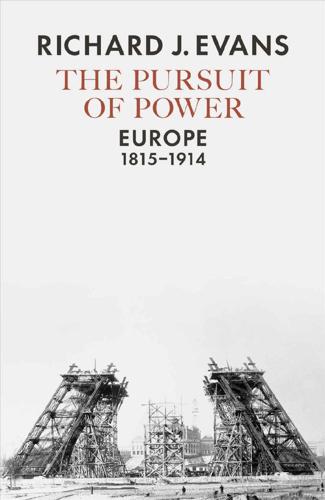
The Pursuit of Power: Europe, 1815-1914
by
Richard J. Evans
Published 31 Aug 2016
A similar dam was built at Lake Vyrnwy in the 1870s to provide water for Liverpool. All over Europe, schemes such as these were in progress, with the first in Germany being completed near Remscheid in 1891. More than the provision of hygienic water supplies was needed to bring about urban improvement. The most famous of all nineteenth-century projects of urban renewal was begun by the Prefect of Paris under Napoleon III, Baron Georges-Eugène Haussmann (1809–91), soon after his appointment in 1853. His aim was to rid the city of what one critic called ‘the tiny, narrow, putrid and tangled streets’ that never let in the sun. As he cleared away the narrow alleys and replaced them with broad boulevards, Haussmann the ‘demolition artist’ (as he called himself) was also removing the ideal sites for the construction of barricades by revolutionary crowds and opening up the city to the forces of order.
…
The traditional landowning aristocracy had been undermined by the forces of economic change, by political reforms such as the abolition of serfdom, by the advent of elected legislatures, however limited their powers, by the ending of corporate privileges such as those that had sustained the Baltic nobility earlier in the century, and by the increasing wealth and ambition of the business, banking and professional classes. A new, hybrid social elite had emerged, based on bourgeois values of thrift, hard work, sobriety and responsibility. These values had come to dominate society and politics in large parts of Europe, finding their expression in urban renewal, sanitation and hygiene, agricultural improvement, penal reform, and the attempt, not always successful, to impose order on the criminal or semi-criminal underworld. They percolated down in various forms to the petty bourgeoisie and the respectable working class, however much their politics may have differed from those of doctors, lawyers, teachers, or businessmen.

Lonely Planet Turkey
by
Lonely Planet
Note that it is not safe to wander through Kemeraltı at night, particularly in the area around Havra Sokağı. oKordonWATERFRONT (map Google map; g12, 253, 811, mKonak) It’s difficult to imagine life in İzmir without its iconic seafront kordon, which stretches north from Cumhuriyet Meydanı to Alsancak and south from Konak Pier to Konak Meydanı. A triumph of urban renewal, these two stretches are grassed, have bicycle and walking paths, and are lined on their eastern edge with bars, cafes and restaurants. Locals flock here at the end of the day to meet with friends, relax on the grass and watch the picture-perfect sunsets. A number of museums and attractions are located on the kordon, including the Zübeyde Hanım Museum Ship (map Google map; Zübeyde Hanım Müze Gemisi; Pasaport Pier, Konak; h10am-6pm Tue-Wed & Fri-Sun; c) F, the Arkas Art Centre (map Google map; Arkas Sanat Merkezi; %0232-464 6600; www.arkassanatmerkezi.com; 1380 Sk 1, Alsancak; h10am-6pm Tue, Wed & Fri-Sun, to 8pm Thu) F and the Atatürk Museum (map Google map; Atatürk Müzesi; %0232-464 8085; Atatürk Caddesi 248, Alsancak; h8.30am-5pm Tue-Sun) F.
…
Haleplibahçe Mosaic MuseumMUSEUM (map Google map; Haleplibahçe Mozaik Müzesi; Haleplibahçe Caddesi; incl Şanlıurfa Archaeology Museum ₺12; h9am-6.30pm Tue-Sat) This domed structure protects the excellent Haleplibahçe (Aleppo Gardens) mosaics, part of a Roman villa complex discovered in 2006 when construction started on a planned theme park as part of an urban renewal project on this site. Instead, archaeologists moved in and began excavating, resulting in a haul of highly detailed Roman-era mosaics that are superbly presented here. Highlights include the Hunted Amazons mosaic, dating from the 5th or 6th century, and the Achilles mosaic, depicting scenes from Achilles’ life.

Eon
by
Greg Bear
Published 2 Jan 1985
We’ve all asked the question at one time or another: Why did the Stoners keep Alexandria in its earlier state, rather than rebuilding and modernizing? Certainly people with our present-day temperament would feel awkward living in comparatively primitive surroundings when more modern facilities could he had for the price of a little urban renewal. “We know a great deal now about living conditions in Alexandria but substantially less about Thistledown City. As you know, security–Stoner security—is very tight at Thistledown City, and unless we want to do some extensive breaking and entering, we have only one location where we have access to living quarters.
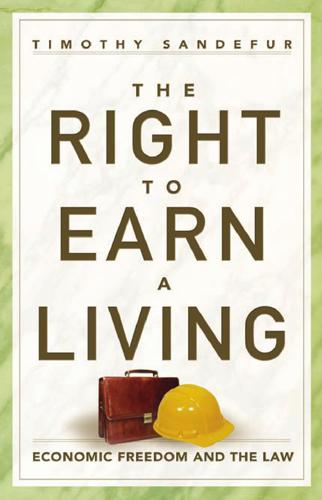
The Right to Earn a Living: Economic Freedom and the Law
by
Timothy Sandefur
Published 16 Aug 2010
Charles Paul Freund, “Our Secret Pledge,” Reason, June 27, 2002, http: //reason.com/news/show/33640.html. 38. McGerr, A Fierce Discontent, p. 214. 39. Eric R. Claeys, “Euclid Lives? The Uneasy Legacy of Progressivism in Zoning,” Fordham Law Review 73 (2004): 751–53; and Wendell E. Pritchett, “The ‘Public Menace’ of Blight: Urban Renewal and the Private Uses of Eminent Domain,” Yale Law and Policy Review 21 (2003): 1–52. 40. Woodrow Wilson, “Position and Importance of the Arts Course as Distinct from the Professional and Semi-Professional Courses,” Journal and Proceedings of the Association of American Universities Sixth Annual Conference (Chicago: University of Chicago Press, 1905), p. 74. 41.
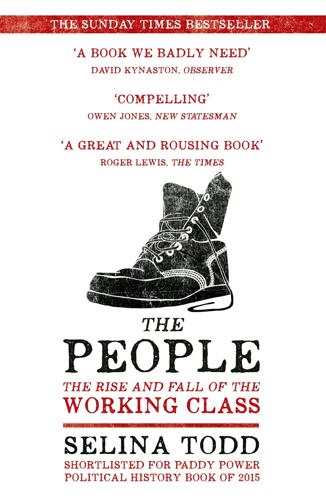
The People: The Rise and Fall of the Working Class, 1910-2010
by
Selina Todd
Published 9 Apr 2014
(ed.), Living in Towns: Selected Research Papers in Urban Sociology of the Faculty of Commerce and Social Science, University of Birmingham (London: Cresset Press, 1953) Madge, C., War-time Patterns of Saving and Spending (Cambridge: Cambridge University Press, 1943) Madge, C., and T. Harrisson, Britain by Mass Observation (Harmondsworth: Penguin, 1939) Marsden, D., Mothers Alone: Poverty and the Fatherless Family (London: Allen Lane, 1969) Mogey, J.M., Family and Neighbourhood: Two Studies in Oxford (London: Oxford University Press, 1956) Muchnick, D.M., Urban Renewal in Liverpool: A Study of the Politics of Redevelopment (London: Bell, 1970) Orwell, G., The Road to Wigan Pier (London: V. Gollancz, 1937) Pantazis, C., D. Gordon and R. Levitas, Poverty and Social Exclusion in Britain: The Millennium Survey (Bristol: Policy, 2006) Park, A. et al. (eds.), British Social Attitudes: The 20th Report (London: Sage, 2003).
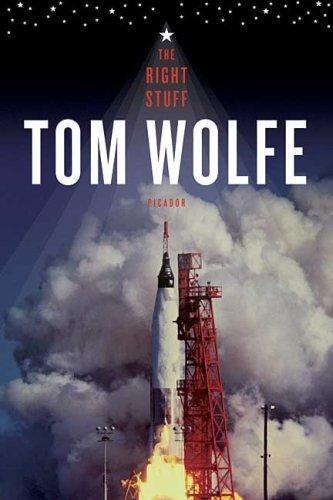
The Right Stuff
by
Tom Wolfe
Published 1 Jan 1979
The very top pilots, with the most righteous stuff, were content to receive that unmentionable glistening look from aviators and support personnel at their own base. Shepard had already had it beamed upon him by every sort of congressman, canned-food distributor, Associated Florists board chairman, and urban-renewal speculator, not to mention the anonymous little cookies with their trembling little custards who simply materialized around you at the Cape. He had already accepted the payment… up front!—and millions of wide-open humid eyes were now upon him. The ancient instinct of a people, their so-called folk wisdom, in the matter of the care, preparation, and recompense of single-combat warriors was indeed sound.

Exploding the Phone: The Untold Story of the Teenagers and Outlaws Who Hacked Ma Bell
by
Phil Lapsley
Published 5 Feb 2013
Nearby, a telephone company employee toiled, doing whatever it is that telephone company employees do. She walked over and told him about the rude man and his odd little box. Months earlier, in April 1971, British Columbia Telephone took a wrecking ball to the phone phreaks’ home on the network. In a bit of telephonic urban renewal, the old mechanical Vancouver step tandem—home to the 2111 conference—was replaced with a shiny new 4A crossbar toll switching machine. The old step tandem still existed but it was relegated to other, lesser duties. Unfortunately for the phreaks, the telephone company thoughtlessly failed to provide a phone phreak conference call setup in the new switching machine.

Cities Under Siege: The New Military Urbanism
by
Stephen Graham
Published 30 Oct 2009
Many of these, in turn, have stimulated not only vast migrations but also the construction of city-scale refugee camps to accommodate the displaced populations, who already numbered some fifty million by 2002.72 The permiation of organized, political violence within and through cities and systems of cities is complicated by the fact that much ‘planned’ urban change, even in times of relative peace, itself involves warlike levels of violence, destabilization, rupture, forced expulsion and place annihilation.73 Particularly within the dizzying peaks and troughs of capitalist and neoliberal urbanism or the implementation of programmes for large-scale urban ‘renewal’, ‘regeneration’ or ‘renaissance’, state-led planning often amounts to the legitimized clearance of vast tracts of cities in the name of the removal of decay, of modernization, improvement, or ordering, of economic competition, or of facilitating technological change and capital accumulation and speculation.74 While tracts of booming cities are often erased through state-engineered speculation, the many cities that are shrinking because of de-industrialization, global industrial relocation, and demographic emptying are also vulnerable to clean-sweep planning.

Barcelona
by
Damien Simonis
Published 9 Dec 2010
A great chunk of El Poblenou (117 blocks to be precise), once an industrial and warehouse zone, is slowly being converted into a hi-tech business district, dubbed 22@bcn, or 22@for short. Although take-up of office space by such cutting-edge firms has been slow to date, the 22@ development was hailed by the CNBC European Business magazine in 2008 as one of the best urban renewal projects in Europe. To the north, the Sagrera area will be transformed by the new high-speed railway station and transport interchange, while the completion of the giant new trade fair area, a single giant justice and courts complex, and nearby office complexes along Gran Via de les Corts Catalanes in L’Hospital de Llobregat and in the Zona Franca has already changed the look of this area between the city centre and the airport beyond recognition.
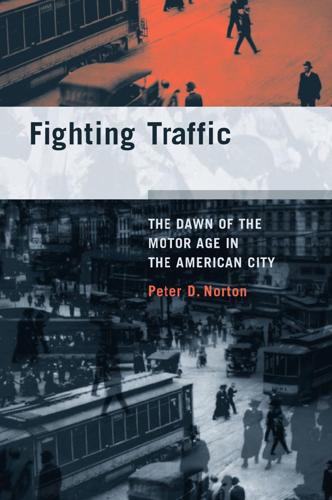
Fighting Traffic: The Dawn of the Motor Age in the American City
by
Peter D. Norton
Published 15 Jan 2008
The reality was somewhat different. Though highway engineers (especially c. 1930–1970) represented themselves as technicians working to fulfill others’ demands, in practice they did much more. For example, in locating highways they sometimes involved themselves in sensitive policy questions (e.g. urban renewal), and in meeting motorists’ demands they promoted motor transportation over other modes. See Peter Norton, “Fighting Traffic: U.S. Transportation Policy and Urban Traffic Congestion, 1950–1970,” Essays in History 38 (1996), available at http://etext. lib.virginia.edu. 132. “The Story of the ‘Snitching Post,’ ” Highway User, Nov. 1965, 19–21 (19). 133.

Wealth and Poverty: A New Edition for the Twenty-First Century
by
George Gilder
Published 30 Apr 1981
Similarly in and around Los Angeles, where 20 percent of Americans were jobless, aliens poured into the city from Mexico and found work on farms and in factories, in hotels and restaurants, in the garment industry and as domestics—all jobs that they now dominate in many American cities.18 Most of these aliens, like earlier immigrants, worked for low pay at menial jobs, disdaining the dole. In San Diego County, a center of Mexican flows, officials could discover only ten illegal aliens among 9,132 welfare cases surveyed in 1975.19 These newcomers are a great American capital asset. Senator Chafee of Rhode Island said that “our best urban renewal program is Portuguese immigrants.”20 Of the thousands of Vietnamese who arrived in the United States wide-eyed and battered from harrowing ordeals on land and sea, only 10 percent ended on welfare, and hundreds opened shops, laundries, and restaurants. In San Diego thousands worked in the city’s electrical-component assembly shops, which operated under contract to larger manufacturers of ordnance and communications equipment.21 They received low pay, but it was far higher than that of their competitors in Taiwan, Hong Kong, and Singapore.

A Voyage Long and Strange: On the Trail of Vikings, Conquistadors, Lost Colonists, and Other Adventurers in Early America
by
Tony Horwitz
Published 1 Jan 2008
Calls flooded in from across the country, particularly New England, where Gannon was dubbed “the Grinch who stole Thanksgiving.” The historian didn’t flinch from the controversy; he stoked it. When a TV interviewer in Boston told him that Plymouth officials had called an emergency meeting to discuss his remarks, the professor coolly replied: “By the time the Pilgrims came to Plymouth, St. Augustine was up for urban renewal.” In the years since, Gannon had often replayed his role as Thanksgiving provocateur. But he cheerfully acknowledged that the fuss was much ado about little. Other Europeans in pre-Mayflower America had also marked their arrival by offering prayers of thanksgiving. Some may have celebrated the occasion by feasting with Indians.
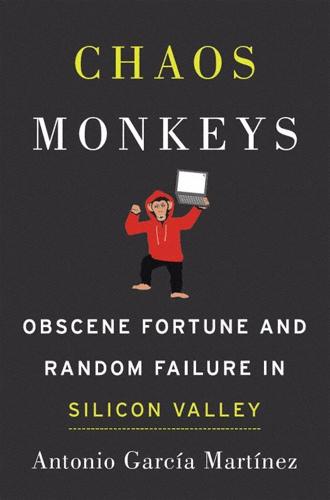
Chaos Monkeys: Obscene Fortune and Random Failure in Silicon Valley
by
Antonio Garcia Martinez
Published 27 Jun 2016
The new office was just south of that crusty asshole of the SF cityscape, the Tenderloin. With Twitter setting up shop there, and the entire attendant economy of yuppie/hipster services like $5 coffee, craft beer, and expensive lofts that would no doubt arise to service it and its employees, local wags had renamed that part of the slum “the Twitterloin.” Who needed urban renewal or half-competent city planning when SF had IPOs? Name tag back around neck, I greeted Adam Bain’s admin in the reception area and was walked to a conference room. Through the conference room window, I spied the two men I’d last spoken to when I was wooing them and their company, and was then wooed in return, only to ultimately spurn.
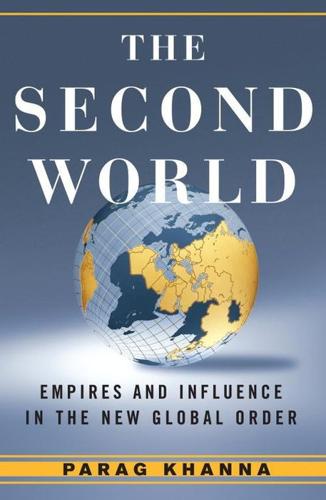
Second World: Empires and Influence in the New Global Order
by
Parag Khanna
Published 4 Mar 2008
The social mobility that “equal opportunity” would entail is increasingly a myth, particularly for those already at the bottom: African Americans and Latinos, 50 percent of whom do not complete high school. From Los Angeles to Brooklyn, Latino minorities crowd crumbling districts and live at the mercy of despotic slumlords. Gentrification is a euphemism for urban renewal, which widely amounts to the same slum clearance seen in the second and third worlds. The influx of low-wage migrant labor has expanded the ranks of the poor, both due to their own numbers and because they reduce the wages of unskilled Americans.24 Almost two decades ago Los Angeles was described as the “capital of the third world” due to its segregated immigrant communities seeking simply to stay afloat with little regard for the broader society.25 Samuel Huntington also recently argued that America’s Anglo-Protestant culture and melting pot creed have been undermined by nonintegrating Hispanic minorities, warning that there cannot be an “Americano dream” to substitute for the American Dream without America becoming a schizophrenic nation.26 But it is hard to speak of a deep “community of values” in America when the primary reason Americans don’t support a welfare state to support the poor is that the poor are disproportionately minorities.27 In a country where recidivist violence seems never more than a few steps away, could white nativism reappear more regularly than it already does?

Lonely Planet Panama (Travel Guide)
by
Lonely Planet
and
Carolyn McCarthy
Published 30 Jun 2013
Multicentro Mall MALL OFFLINE MAP GOOGLE MAP (www.multicentropanama.com.pa; Av Balboa, Paitilla; 10am-9pm) Has a cinema and shops, along with many outdoor restaurants. Multiplaza Mall MALL (Vía Israel & Vía Brasil, Punta Pacifica; 10am-9pm) The biggest downtown mall, with designer shops, restaurant and cinema. It’s east of downtown, on the way to Panamá Viejo. Information Dangers & Annoyances Casco Viejo is the focus of an ambitious urban renewal program, but it’s still a work in progress. Generally speaking, the tip of the peninsula southeast of the Iglesia de la Merced is safe for tourists and heavily patrolled by police officers on bicycles. Always exercise caution, and stay where it’s well lit and where there are plenty of people around.
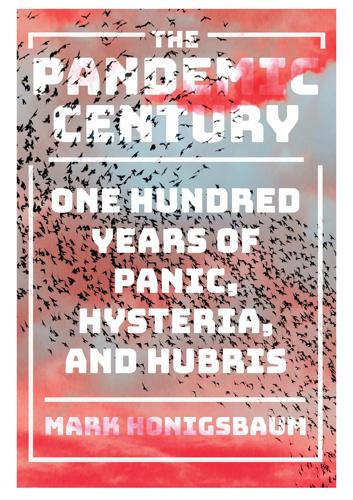
The Pandemic Century: One Hundred Years of Panic, Hysteria, and Hubris
by
Mark Honigsbaum
Published 8 Apr 2019
The trials have the backing of major charitable funders, including the Bill and Melinda Gates Foundation in Seattle, Washington, and the London-based Wellcome Trust, not least because they can be conducted in distinct geographic areas and the effects are relatively easy to quantify using scientific measures—one of the key requisites for global health interventions “from above.” Meanwhile, low-tech ground-up control measures, such as providing bednets and screens for windows, are neglected, as are urban renewal programs that might improve waste management and the provision of water services to the poorest, mosquito-blighted communities. One day I accompanied Ayres’s mosquito collectors on one of their regular sweeps through Jaboatão dos Guararapes. The aim was to visit ten addresses in the favela and vacuum up mosquitoes from people’s bedrooms and living rooms, but in the event one of the portable aspirators failed, so it was only possible to visit five addresses.
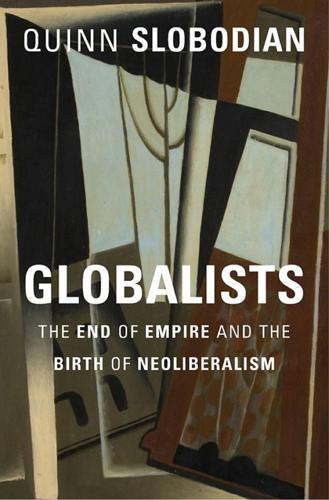
Globalists: The End of Empire and the Birth of Neoliberalism
by
Quinn Slobodian
Published 16 Mar 2018
In his classic study of fin- de-siècle Vienna, Carl Schorske describes how the liberal city government used the Ringstrasse to showcase its vision of social order, building the parliament and city hall alongside theaters and the university.14 The developments echoed those under way in Paris under the direction of Baron George-Eugène Haussmann. Both urban renewal projects created arteries of commerce and transportation in medieval cities, building wide streets that could serve simultaneously as sites of cultural enrichment in their opera h ouses and museums, expressions of state power in their monuments, and sites of consumption in their shop windows and sidewalk cafes.15 The wide streets would also make it harder for future insurgents to build the barricades that characterized the revolutions of 1848.
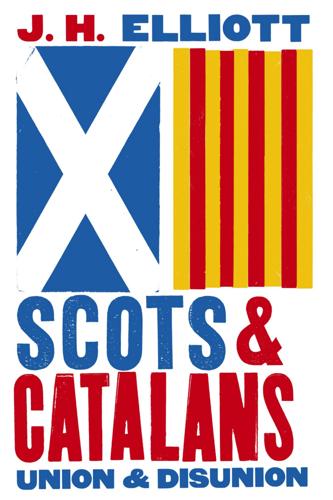
Scots and Catalans: Union and Disunion
by
J. H. Elliott
Published 20 Aug 2018
With the support of Liberal Prime Minister Práxedes Sagasta of Spain, and of Conservative and Liberal members of the local elites with ties to the business community, he would showcase Barcelona as the motor of Spain’s economy. He would also reveal it to the world as a progressive European metropolis, whose modernity was reflected in the great process of urban renewal then under way and in the new public monuments under construction. The exhibition was opened by Sagasta, who spoke some words in Catalan in the presence of the queen regent, María Cristina de Austria, accompanied by her infant son, Alfonso XIII. The concluding speech was delivered entirely in Catalan by Marcelino Menéndez y Pelayo, the great Catholic polymath who held a chair in Spanish literature at the University of Madrid.
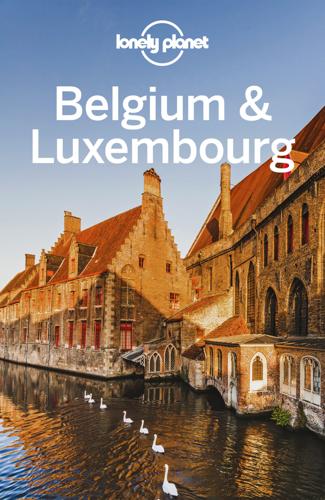
Lonely Planet Belgium & Luxembourg
by
Lonely Planet
Cold beer, limited light menu, live music Friday nights. 8Information Infokantoor Visit Geraardsbergen (%054 43 72 89; www.visitgeraardsbergen.be; Markt; h10am-5pm) 8Getting There & Away From Geraardsbergen station, 900m south of Markt on Stationsplein, frequent rail services operate to to Lessines (€2.40, seven minutes), Ath (€3.60, 23 minutes), Ghent (€6.40, 50 minutes) and Brussels (€7.80, 1⅓ hours). Ghent POP 248,358 Despite being one of Belgium’s oldest cities, Ghent remains small enough to feel cosy but big enough to be a vibrant, relevant centre for trade and culture. There’s a wealth of medieval and classical architecture here, contrasted by large post-industrial areas undergoing urban renewal that give Ghent a gritty-but-good industrial feel. In the centre, tourists remain surprisingly thin on the ground, but Ghent’s large student and youth population means there’s always people about, enjoying the city’s fabulous canal-side architecture, abundance of quirky bars and good-value restaurants, and some of Belgium’s best museums.
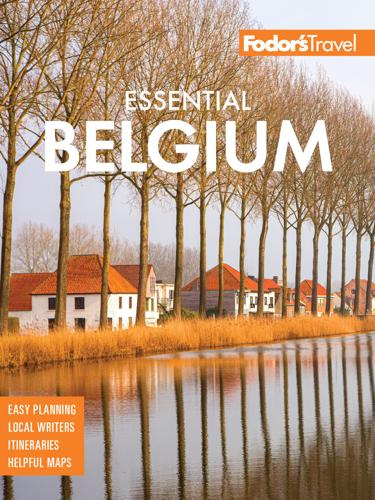
Fodor's Essential Belgium
by
Fodor's Travel Guides
Published 23 Aug 2022
A coal mine tour takes two hours, though you can spend at least half a day here with the kids because there’s also a museum, playground, restaurant, and café. ERue Lambert Marlet 23, Blegny j15 km (9 miles) northeast of Liège P04/387–4333 wwww.blegnymine.be A€13. Cour St-Antoine PLAZA/SQUARE | In a clever example of urban renewal, what was formerly a slum is now a beautifully restored residential square with a small-village feel. The facade of the red house at the north end of the square resembles a church and is connected by a small channel to a pyramidlike structure replicating Tikal, a Mayan ruin in Guatemala. EBetween rue des Brasseurs and rue Hors-Château, Liège AFree.

The Rise and Fall of the Neoliberal Order: America and the World in the Free Market Era
by
Gary Gerstle
Published 14 Oct 2022
“We want to improve and expand our social security program,” Eisenhower declared. “We want a broader and stronger system of unemployment insurance. We want more and better homes for our people. We want to do away with slums in our cities. We want to foster a much improved health program.” Broadened social security, better unemployment insurance, urban renewal, and national health care—here, in embryo, was the vision that would animate the Great Society, the ambitious legislative program pushed through Congress by Democratic president Lyndon Johnson in the 1960s to complete the welfare state that Roosevelt and the New Deal had launched in the 1930s.
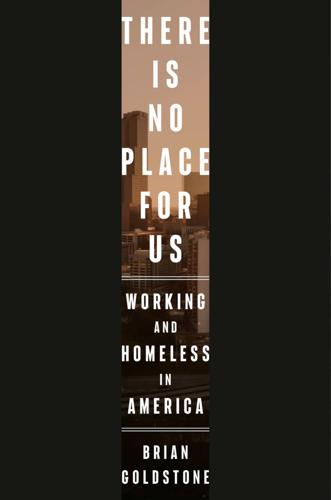
There Is No Place for Us: Working and Homeless in America
by
Brian Goldstone
Published 25 Mar 2025
The following day, Natalia devoured a magazine article by the acclaimed writer Ta-Nehisi Coates, which showed how the spirit of Jim Crow had extended even to northern cities. She felt as if she was reading the story of her family’s own predicament: an account of housing insecurity that began with four million formerly enslaved people deprived of land and forced into an economy of low wages, rent, and debt—and continuing with the devastating effects of urban renewal, redlining, restrictive covenants, and, more recently, subprime lending. A long history of discrimination and dispossession. A question stuck with her: Emancipated into what, exactly? When the song ended, Shantel and Anthony were itching to get back to their Xbox. Natalia wanted to discuss the song’s meaning with them.
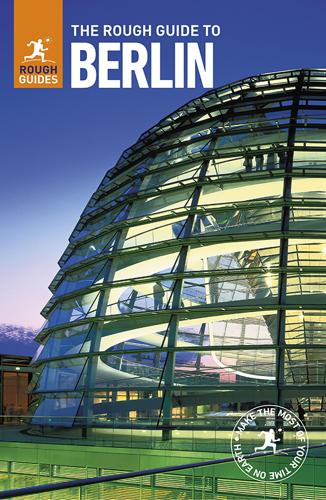
The Rough Guide to Berlin
by
Rough Guides
Anti-nuclear activists protested during the Berlin visit of President Ronald Reagan in June 1981. But the tension and sabre-rattling of the 1950s and 1960s Cold War didn’t return to Berlin even though ideological hostility prevented the two halves of the city from jointly celebrating Berlin’s 750th anniversary in 1987. In East Berlin anniversary celebrations were preceded by a massive urban renewal project, in both the city centre and the inner suburbs; the reconstructed Nikolaiviertel stems from this time. In West Berlin, the elections of spring 1989 swept the CDU administration from power, and an SPD/Alternative Liste coalition took over, with Walter Momper as mayor. In Kreuzberg, demonstrations against what many regarded as an Alternative Liste sellout were put down with unwarranted force, sparking running street battles.

Frommer's Hawaii 2009
by
Jeanette Foster
Published 2 Jan 2008
In the 1940s, military personnel on leave flocked here looking for different kinds of exotic treats—in the form of pool halls, tattoo joints, and brothels. Today Chinatown is again rising from the ashes. After deteriorating over the years into a tawdry district of seedy bars, drug dealing, and homeless squatters, the neighborhood recently underwent extensive urban renewal. There’s still just enough sleaze on the fringes (a few peep shows and a couple of topless bars) to keep it from being some theme-park-style tourist attraction, but Chinatown is poised to relive its glory days. It’s not exactly a microcosm of China, however. What you’ll find is a mix of Asian cultures, all packed into a small area where tangy spices rule the cuisine, open-air markets have kept out the minimalls, and the way to good health is through acupuncture and herbalists.
…
This fabulous experience really should be undertaken only by the physically fit (it will take about an hour to hike down and another 90 min. to hike back up). Cost for ferry, transportation, tour, and lunch is $277 (participants must be at least 16 years old). THE WEST END MAUNALOA In the first and only attempt at urban renewal on Molokai, the 1920s-era pineappleplantation town of Maunaloa has become a ghost town ever since the Molokai Ranch closed all of its operations in 2008 (including the movie theater, restaurant, lodge, and some shops). ON THE NORTHWEST SHORE: MOOMOMI DUNES Undisturbed for centuries, the Moomomi Dunes, on Molokai’s northwest shore, are a unique treasure chest of great scientific value.
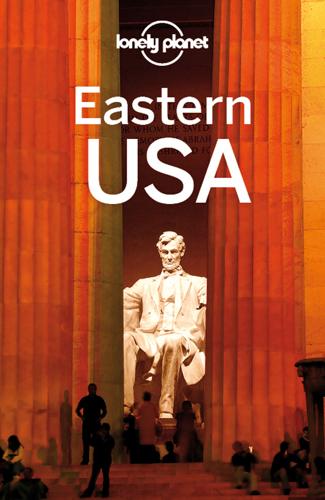
Eastern USA
by
Lonely Planet
But it didn’t take long for European settlers to displace those communities, thus giving rise to Pennsylvania’s status as the richest and most populous British colony in North America. It had great influence on the independence movement and, much later, became an economic leader through its major supply of coal, iron and timber, followed by raw materials and labor during WWI and WWII. In the postwar period its industrial importance gradually declined. Urban-renewal programs and the growth of service, high-tech and health-care industries have boosted the economy, most notably in Philadelphia and Pittsburgh. PENNSYLVANIA FACTS »Nicknames Keystone State, Quaker State »Population 12.4 million »Area 46,058 sq miles »Capital city Harrisburg (population 53,000) »Other cities Philadelphia (population 1.45 million), Pittsburgh (population 313,000), Erie (population 102,000) »Sales tax 6% »Birthplace of Writer Louisa May Alcott (1832−88), dancer Martha Graham (1878−1948), artist Andy Warhol (1928−87), movie star Grace Kelly (1929−82), comic Bill Cosby (b 1937) »Home of US Constitution, the Liberty Bell, first daily newspaper (1784), first auto service station (1913), first computer (1946) »Politics ‘Swing state,’ Republican Governor, progressive Philly and blue collar Democrats elsewhere »Famous for soft pretzels, Amish people, Philadelphia cheesesteak, Pittsburgh steel mills »Wildlife home of the largest herd of wild elk east of the Mississippi »Driving distances Philadelphia to NYC 100 miles, Philadelphia to Pittsburgh 306 miles Philadelphia Although it may seem like a little sibling to NYC, which is less than 90 miles away, Philadelphia is more representative of what East Coast city living is like.
…
For a time the second-largest city in the British Empire (after London), Philadelphia became a center for opposition to British colonial policy. It was the new nation’s capital at the start of the Revolutionary War and again after the war until 1790, when Washington, DC, took over. By the 19th century, New York City had superseded Philadelphia as the nation’s cultural, commercial and industrial center. Though urban renewal has been going on for decades, some parts of the city formerly populated by industrial workers are blighted and worlds away from the carefully manicured lawns and park-service-glutted historic district around the Liberty Bell and Independence Hall. Philadelphia Top Sights Mutter MuseumB4 Philadelphia Museum of ArtA1 Philadelpia's Magic GardenE6 Sights 1Academy of Natural Sciences MuseumC3 2Chinese Friendship GateE3 3City HallD4 4Franklin Institute Science MuseumB3 5Independence Seaport MuseumH5 6Joan of Arc StatueA1 7Pennsylvania Academy of the Fine ArtsD3 8Physick HouseG5 9Rodin MuseumB2 10Rosenbach Museum & LibraryB5 Activities, Courses & Tours 11Spirit of PhiladelphiaH5 Sleeping 12Alexander InnE5 13Hotel PalomarC4 14Morris House HotelF5 15Rittenhouse 1715C5 16The Independent HotelE5 Eating 17Banana LeafE3 18Dim Sum GardenE3 19HorizonsF6 20Jim's SteaksG6 21Joe'sD4 22La ViolaD5 23Le Bec-FinD4 24Lee How FookE3 25Mama PalmasB5 26Mama's VegetarianC4 27Maoz VegetarianG6 28MorimotoF4 29Nanzhou Handdrawn Noodle HouseE3 30Parc BrasserieC5 31Philly FlavorsC1 32RangoonE3 33Reading Terminal MarketE3 34Sabrina's CafeE6 35Silk City DinerG1 36South Street SouvlakiF6 37SupperE6 Drinking 38Franklin Mortgage & Investment CoC4 39McGillin's Olde Ale HouseD4 40Nodding Head BreweryD4 41Standard TapG1 42Tavern on CamacE5 43Urban SaloonB1 44Village WhiskeyC4 Entertainment 45Chris' Jazz ClubD4 46Kimmel Center for the Performing ArtsD5 47Ortlieb's JazzhausG1 48Pennsylvania BalletC3 49Philadelphia OrchestraD5 50Philadelphia Theatre CompanyD5 51ShampooF2 52SistersD5 53Trocadero TheaterE3 54World Cafe LiveA4 Sights & Activities Philadelphia is easy to navigate.

Lonely Planet Brazil
by
Lonely Planet
Every bus has its key destination displayed on the illuminated signboard in front. If you see the bus you want, hail it by sticking your arm straight out (drivers won’t stop unless flagged down). Light Rail Rio’s new light rail – the VLT (www.vltcarioca.com.br; one way R$3.80; h6am-midnight) – is part of a massive urban-renewal project helping to revitalize Centro. Launched in 2016, the VLT has 26 stations in Rio, running on two different routes through downtown. For visitors, handy access is at Cinelândia (outside the metro) to Praça Mauá (to the stop labelled Parada dos Museus). To reach Praça XV (Quinze) de Novembro or Praça Tiradentes, take the Praia Formosa line, which you can access on Rua Sete de Setembro, just west of Rio Branco.
…
The large air-conditioned lobby and professional service are a breath of fresh air, and guestrooms are spotless, if not spacious. 5Eating oMercado VelhoMARKET$ (map Google map; Praça Bandeira; dishes from R$6; h7am-10pm) Dubbed the ‘Old Market,’ this is actually part of a highly successful urban-renewal effort. An old port building was transformed into an attractive food market where you can order anything from grilled comfort food to complete entrees, served at indoor booths or at tables overlooking a tidy riverfront plaza. Especially popular in the evenings, when there’s live music. AFA Bistrô D’AmazôniaBUFFET$$ (map Google map; Ribeiro 99; per kg R$65 Mon-Fri, R$82 Sat & Sun; h11am-2:30pm) An unassuming exterior belies a fancy-pants bistro that’s town’s favorite lunch spot.
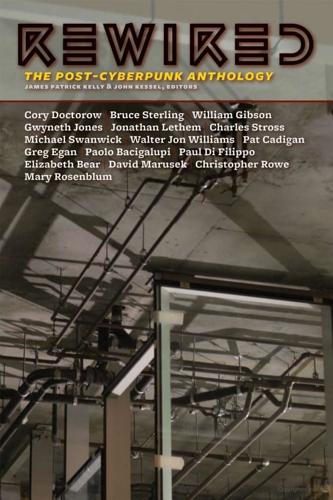
Rewired: The Post-Cyberpunk Anthology
by
James Patrick Kelly
and
John Kessel
Published 30 Sep 2007
Pretty soon the offices of professionals will be filtering in, and they’ll restore the water and the wiring. Once that happens, the real-estate prices will kick in big-time, and the whole zone will transmute right back into gentryville. It happens all the time.” Mabel waved her arm at the door. “If you knew anything about modern urban geography, you’d see this kind of, uh, spontaneous urban renewal happening all over the place. As long as you’ve got naive young people with plenty of energy who can be suckered into living inside rotten, hazardous dumps for nothing, in exchange for imagining that they’re free from oversight, then it all works out just great in the long run.” “Oh.” “Yeah, zones like this turn out to be extremely handy for all concerned.

Frommer's San Diego 2011
by
Mark Hiss
Published 2 Jan 2007
Despite civic and cultural improvements, downtown—still overrun with porn theaters, strip clubs, flophouse hotels, and dive bars—was decidedly unbefitting of California’s second-largest city. But the 1984 construction of the kaleidoscopic, carnivalesque Horton Plaza (p. 208) shopping center, named for founding father Alonzo Horton, kicked off urban renewal in San Diego. Downtown’s seedy elements were eradicated, and the quirky, colorful, multilevel mall now anchors the vibrant Gaslamp Quarter (p. 183) entertainment district. The construction of a new baseball stadium east of the Gaslamp Quarter further invigorated downtown. When PETCO Park (p. 180) opened in 2004, the surrounding neighborhood (dubbed the East Village, p. 54) began to gentrify, with restaurants, galleries, and boutiques replacing industrial warehouses.

The Relentless Revolution: A History of Capitalism
by
Joyce Appleby
Published 22 Dec 2009
In 1950, 29 percent of the world population lived in cities; in 2008 the figure was 60 percent, with India in the vanguard. Singh has committed billions to refurbish sixty-three Indian cities. Plans call for luring the poor in from the depressing outskirts of urban areas with decent living. Hyderabad has completed its urban renewal, and Calcutta and Bangalore have entered the blueprint stage. What makes these ambitious programs possible has been the 8.8 percent growth rate India has sustained for several years. Should it persist—a tall order—its one-trillion-dollar economy will double by mid-2016! A Young Cohort of Indian Consumers India is pressing close to the United States in having the world’s top spenders; domestic consumption is 64 percent of Indian GDP, compared with 70 percent in the United States, 57 percent in Japan, 54 percent in Europe, and 38 percent in China.
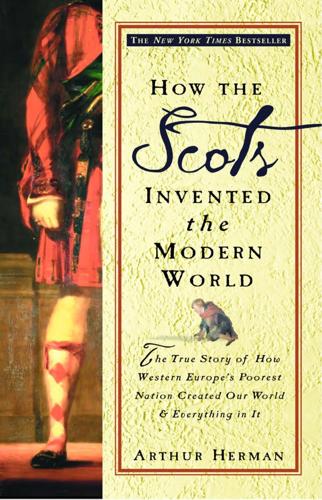
How the Scots Invented the Modern World: The True Story of How Western Europe's Poorest Nation Created Our World and Everything in It
by
Arthur Herman
Published 27 Nov 2001
One out of seven Scottish children went to secondary school in 1914, compared with one in twenty in England. But the problem of drawing into school those who most needed it, the poorest and most disadvantaged, remained as intractable as ever. Something like 15 percent of Glasgow’s children never saw the inside of a classroom. Increasingly it was government that was called in to help; as with urban renewal and social reform, reform in education steadily passed out of private hands or church-based organizations and into the arms of the state, which meant London. Scottish businessmen had once led innovations in the printing industry and the book trade. The Edinburgh Review had set the standard for the English-speaking world of serious intellectual culture.
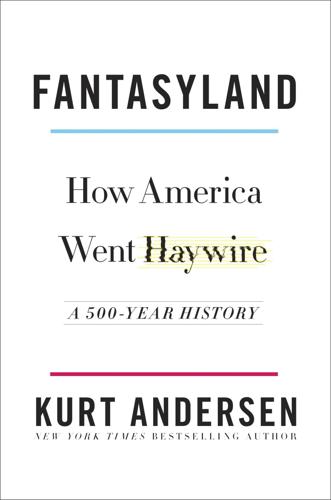
Fantasyland: How America Went Haywire: A 500-Year History
by
Kurt Andersen
Published 4 Sep 2017
Why not, they decided in the 1970s, sprinkle this amazing new pixie dust of nostalgia on an abandoned two-hundred-year-old hulk in Boston and turn Quincy Market and Faneuil Hall into a colonial-themed shopping mall? And then the South Street Seaport in Manhattan? Both were Rouse projects. Thus the “festival marketplace” became the new middle-class mode of instant American urban renewal—dying or atrophied urban organs and limbs revivified as imaginary versions of themselves. Themed was becoming the standard MO for the creation of any and all new American places and spaces. When I was born, restaurants were neither national businesses nor themed. That changed as suburbs fulfilled the old-timey small-town American dream and as Disney cracked the code for themed commerce.
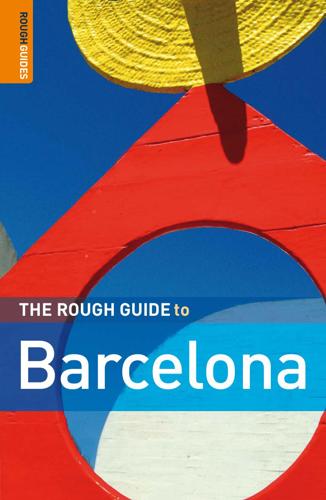
The Rough Guide to Barcelona 8
by
Jules Brown
and
Rough Guides
Published 2 Feb 2009
Green Barcelona From the huge, high-profile photovoltaic plant at the Fòrum site to the city buses powered by compressed natural gas, Barcelona likes to see itself as a future “sustainable” city. Its hosting of the 2004 Universal Forum of Cultures expo might have been politically controversial, but at its heart was a vision of sustainable development that the city authorities embraced with vigour. Subsequent urban-renewal projects have all incorporated innovative “green” methodology, while the city has pioneered several successful green schemes, from neighbourhood recycling of rubbish and rain-water to the Bicing bikesharing project and charge-points for electric vehicles. However, in 2008, the worst drought in Spain since the 1940s brought Barcelona’s green image into sharp relief.

Fodor's Barcelona
by
Fodor's
Published 5 Apr 2011
Street names are signposted in Catalan, and newspapers, radio stations, and a TV channel publish and broadcast in Catalan. The culmination of this rebirth was the staging of the Olympics in 1992—ring roads were constructed, new harborside promenades were created, and Catalonia announced its existence and national identity to the world. The urban renewal for the Olympics under Mayor Pasqual Maragall (later president of the Generalitat) was just the beginning. Mayor Joan Clos, with the 2004 Fòrum Universal de les Cultures, engineered the new Diagonal-Mar development, stretching from Plaça de les Glòries to the mouth of the Besòs River and populated with Jean Nouvel, Oscar Tusquets, and Herzog & de Meuron buildings that keep architecture students on a perennial field trip.

Lonely Planet Wales (Travel Guide)
by
Lonely Planet
Published 17 Apr 2017
As you edge nearer along country lanes and the castle looms into view in the distance, it's easy to make the mental trade-in of your rental car for a fine steed, galloping bravely towards unknown danger. ADAM BURTON / ROBERTHARDING / GETTY IMAGES © Top Experiences Cardiff Bay The transformation of stinky Cardiff Bay into the shiny architectural showcase of today is a textbook example of urban renewal at its best. Yes, it's cut off from the city centre and there are still abandoned buildings on its fringes, but Cardiff Bay is a worthy testament to the rebirth of an ancient nation as a modern democratic country, increasingly in control of its own destiny. A highlight is the Doctor Who Experience, right next to BBC Wales' flash studio complex.
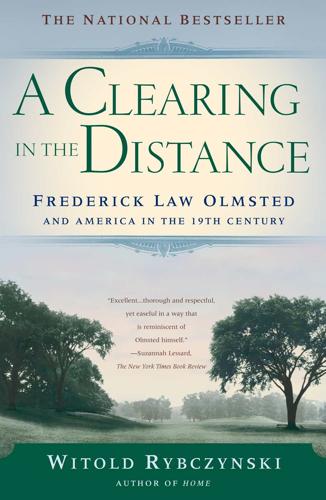
A Clearing in the Distance: Frederick Law Olmsted and America in the 19th Century
by
Witold Rybczynski
Published 1 Jan 1999
The work would continue over the next seven years until Buffalo became, as Olmsted proudly wrote to Waring, “the best planned city, as to its streets, public places and grounds, in the United States if not in the world.” For decades, these parks and parkways guided the growth of what subsequently became known as the City of Elms. It would take the automobile, urban renewal, and a less sensitive generation of planners to undo Olmsted and Vaux’s achievement. • • • • Childs, true to his word, started construction at Riverside immediately. Olmsted, Vaux & Co. opened a field office headed by their partner, Frederick Withers. The firm received several architectural commissions.
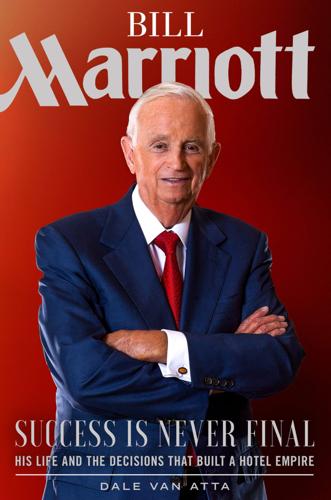
Bill Marriott: Success Is Never Final--His Life and the Decisions That Built a Hotel Empire
by
Dale van Atta
Published 14 Aug 2019
” • • • While Marriott launched new hotel concepts in the economy and moderate price ranges, at the same time, the company continued to expand the fleet with convention and luxury hotels. The New York Marriott Marquis opened soon after J.W.’s passing, but before that, the flagship JW Marriott Hotel in Washington, D.C., opened in 1984, a year before J.W.’s death. That downtown Washington project had begun as an urban renewal idea and had taken almost six years to come to fruition. Bill had not been the city’s first choice. Atlanta developer John Portman was the front-runner, but the city fathers balked at his design and asked Bill to enter the competition. The proposed convention hotel would be the first major hotel development in what was still a “war zone” after the race riots of the late 1960s.
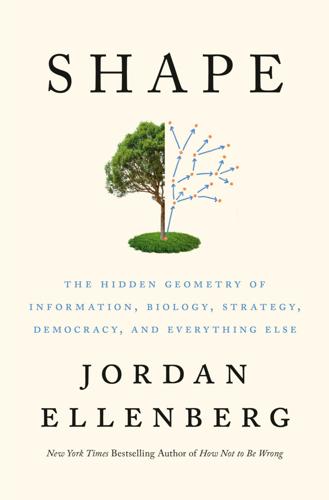
Shape: The Hidden Geometry of Information, Biology, Strategy, Democracy, and Everything Else
by
Jordan Ellenberg
Published 14 May 2021
If two absolutely perfect players faced off, either white would always win, white would always lose, or the game would always end in a draw. And in principle, computing which one is the case is merely a matter of working step by step down the tree to the root. Chess is a hard problem, yes, but it’s not a hard problem like writing a poem that captures the intersection of midcentury Atom Age politics with urban renewal, nostalgia for childhood, the endless reverberations of the Civil War, and the replacement of the human spirit by mechanized artifice. It’s a hard problem like multiplying two really big numbers together. It might take a long time to do it, but in principle you know how to finish the task, step by step.
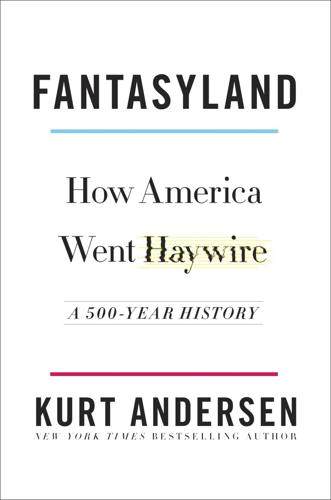
Fantasyland
by
Kurt Andersen
Published 5 Sep 2017
Why not, they decided in the 1970s, sprinkle this amazing new pixie dust of nostalgia on an abandoned two-hundred-year-old hulk in Boston and turn Quincy Market and Faneuil Hall into a colonial-themed shopping mall? And then the South Street Seaport in Manhattan? Both were Rouse projects. Thus the “festival marketplace” became the new middle-class mode of instant American urban renewal—dying or atrophied urban organs and limbs revivified as imaginary versions of themselves. Themed was becoming the standard MO for the creation of any and all new American places and spaces. When I was born, restaurants were neither national businesses nor themed. That changed as suburbs fulfilled the old-timey small-town American dream and as Disney cracked the code for themed commerce.
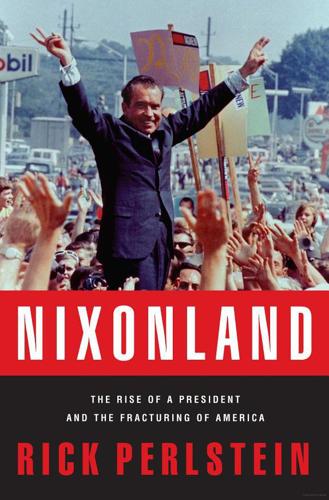
Nixonland: The Rise of a President and the Fracturing of America
by
Rick Perlstein
Published 1 Jan 2008
Twenty-eight babies died in a diarrhea epidemic in 1965, eighteen of them at City Hospital, which was also infested by bats. The city’s major industry was illegal gambling. Cops ran heroin rings. Food stores raised prices the day welfare checks arrived. All the same, downtown was filled with construction cranes. “Urban renewal” served Mayor Addonizio’s political purpose: by continually scattering Negroes, who were 65 percent of the population, it radically reduced their power. Wednesday, July 12, 1967, police manhandled a cabdriver during an arrest. He had bushy hair, and they might have thought that made him a Black Muslim, whose lairs they had recently been raiding.
…
The theory was further developed by Richard Nixon’s new bulldog, the vice president of the United States. Agnew was scheduled to speak October 19 at a party fund-raiser in New Orleans. He was still sufficiently low on the White House totem pole that his speeches tended to fixate on the tiny policy portfolio they’d given him (maritime affairs, urban renewal, Native Americans), or to repeat what the president had said the week before. His public appearances ran to affairs like the ribbon-cutting for the Spiro T. Agnew Mental Health Center in Maryland. For New Orleans, his speechwriter drafted him seven dry pages of facts for the party faithful on the administration’s accomplishments and goals, thirty-nine methodical bullet points from “casualties for the first nine months of this year are down by two-thirds” to “the Soviets have already deployed 64 ABMs.”

Greece
by
Korina Miller
Published 1 Mar 2010
Sure, it’s easy to find remote, traditional villages with brilliant white buildings and roaming donkeys and goats, but the shepherd will likely be talking on their mobile phone and making a date for the local, trendy cafe. Athens has a firm grip on style and sophistication to rival any European capital. The Greek modern art scene is fresh and vibrant, and the political scene is passionate. It’s a nation that welcomes and even insists upon change – from the unstoppable urban renewal taking place in Athens to the internet cafes found on the smallest islands and modern, impressive museums popping up around the nation. There are few cultures that embrace the past so fondly while simultaneously welcoming the future with open arms. Like everywhere, it’s not always smooth sailing in Greece.
…
Return to beginning of chapter Athens & Attica Αθα & Αττικ * * * ATHENS ΑΘΗΝΑ HISTORY ORIENTATION INFORMATION DANGERS & ANNOYANCES SIGHTS ACTIVITIES WALKING TOUR COURSES ATHENS FOR CHILDREN TOURS FESTIVALS & EVENTS SLEEPING EATING DRINKING ENTERTAINMENT SHOPPING GETTING THERE & AWAY GETTING AROUND PIRAEUS ΠΕΙΡΑΙΑΣ HISTORY ORIENTATION INFORMATION SIGHTS SLEEPING EATING & DRINKING SHOPPING GETTING THERE & AWAY GETTING AROUND ATTICA ΑΤΤΙΚΗ CAPE SOUNION ΑΚΡΩΤΗΡΙΟ ΣΟΥΝΙΟ ELEFSINA (ELEUSIS) ΕΛΕΥΣIΝΑ MARATHON & AROUND VRAVRONA ΒΡΑΥΡΩΝΑ RAFINA ΡΑΦΗΝΑ LAVRIO ΛΑΥΡΙΟ AROUND PEANIA MT PARNITHA ΠΑΡΝΗΘΑ * * * Ancient and modern, with equal measures of grunge and grace, bustling Athens is a heady mix of history and edginess, lively cafes and alfresco dining, chaos and downright fun. The magnificent Acropolis rising majestically above the sprawling metropolis has stood witness to the city’s many transformations. Over a decade of radical urban renewal Athens has reinvented itself. Post-Olympics Athens is conspicuously wealthier, more sophisticated and cosmopolitan. The shift is evident in the stylish new restaurants, shops and hip hotels, and in the emerging artsy-industrial neighbourhoods and entertainment precincts. The car-free historic centre is an open-air museum, yet the city’s cultural and social life takes place around these ancient monuments, reconciling past and present.

Fodor's California 2014
by
Fodor's
Published 5 Nov 2013
Previous Chapter | Beginning of Chapter | Next Chapter | Table of Contents Previous Chapter | Next Chapter | Table of Contents Downtown | Balboa Park and San Diego Zoo | Old Town and Uptown | Mission Bay, Beaches, and SeaWorld | La Jolla | Point Loma and Coronado with Harbor and Shelter Islands, and Ocean Beach Updated by Claire Deeks van der Lee Next Map | California Maps Downtown Nearly written off in the 1970s, today Downtown San Diego is a testament to conservation and urban renewal. Once derelict Victorian storefronts now house the hottest restaurants, and the Star of India, the world’s oldest active sailing ship, almost lost to scrap, floats regally along the Embarcadero. Like many modern U.S. cities, Downtown San Diego’s story is as much about its rebirth as its history.
…
The museum is open Wednesday through Sunday from noon to 5 and Thursday until 8 pm. | 310/825–4361 | www.fowler.ucla.edu | Free; parking $11, use lot 4 off Sunset Blvd. Downtown and Los Feliz Once the lively heart of Los Angeles, Downtown was a no man’s land until a few decades ago, when high-rise condos starting going up and urban renewal followed. While certain sections can still be gritty, some of the city’s most talked about restaurants, bars, and cultural attractions, including the Frank Gehry–designed Walt Disney Concert Hall, reside Downtown. In 2014, the debut of the Broad Museum will complete the neighborhood’s transformation.
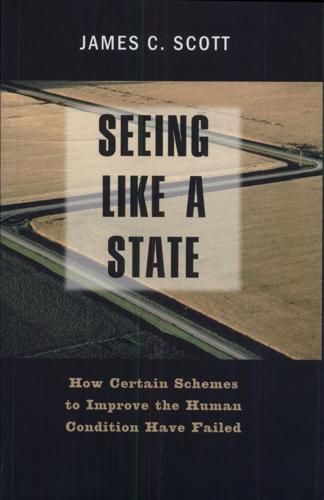
Seeing Like a State: How Certain Schemes to Improve the Human Condition Have Failed
by
James C. Scott
Published 8 Feb 1999
As long as these areas were reasonably stable, the economy relatively strong, and people and businesses not starved for credit, the slums could, given time, manage to "unslum" themselves. Many already had. Planners frequently destroyed "unslum- ming slums" because these areas violated their doctrines of "layout, use, ground coverage, mixture and activities "v8-not to mention the land speculation and security concerns behind much "urban renewal." From time to time Jacobs stands back from the infinite and changing variety of American cities to express a certain awe and humility: "Their intricate order-a manifestation of the freedom of countless numbers of people to make and carry out countless plans-is in many ways a great wonder. We ought not to be reluctant to make this living collection of interdependent uses, this freedom, this life, more understandable for what it is, nor so unaware that we do not know what it is."99 The magisterial assumption behind the doctrines of many urban planners-that they know what people want and how people should spend their time-seems to Jacobs shortsighted and arrogant.
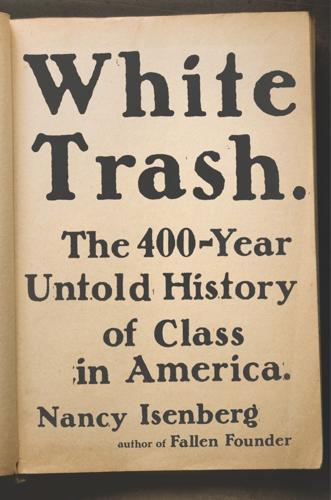
White Trash: The 400-Year Untold History of Class in America
by
Nancy Isenberg
Published 20 Jun 2016
In 1969, the thirteen Appalachian states were on the receiving end of 40 percent of mobile home shipments, and, not surprisingly, the cheapest models (under $5,000) headed for the hills. In 1971, New York City approved its first trailer park, after Mayor John Lindsay found support for a policy of housing the homeless in trailers. These were not Bowery bums, but people who were being uprooted as a result of urban renewal—yet somehow the solution was to stow them away in a most nonurban sort of accommodation. From Appalachia to the Big Apple, then, those without economic security and with the least political clout were seen as the most likely candidates for the trailer park.40 Cheap land, a plot of concrete and mud, and a junkyard trailer—the updated squatter’s hovel—became the measure of white trash identity.
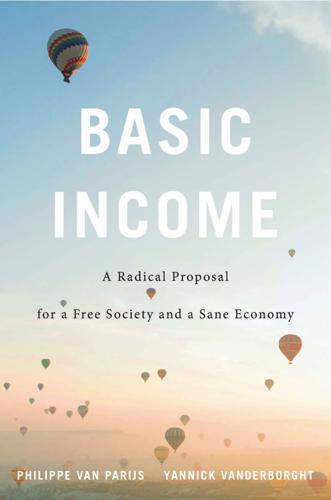
Basic Income: A Radical Proposal for a Free Society and a Sane Economy
by
Philippe van Parijs
and
Yannick Vanderborght
Published 20 Mar 2017
In subsequent articles and interviews, however, he spelled out his proposal and the long-Â� 84 Hi story: From Uto pi an D ream to World wi de M ovement term perspective in which it was being made. The negative income tax, in his view, should replace the bulk of AmerÂ�iÂ�ca’s welfare programs. We have a maze of detailed governmental programs that have been justified on welfare grounds—Â� though typically their product is “Â�illfare”: public housing, urban renewal, old-Â�age and unemployment insurance, job training, the host of assorted programs Â�under the mislabeled “war on poverty,” farm price supports, and so on at incredible length.â•‹.â•‹.â•‹.╋╉The Negative Income Tax would be vastly superior to this collection of welfare meaÂ�sures. It would concentrate public funds on supplementing the incomes of the poor—Â�not distribute funds broadside in the hope that some Â�will trickle down to the poor.67 Friedman, however, did not Â�favor just any negative income tax.
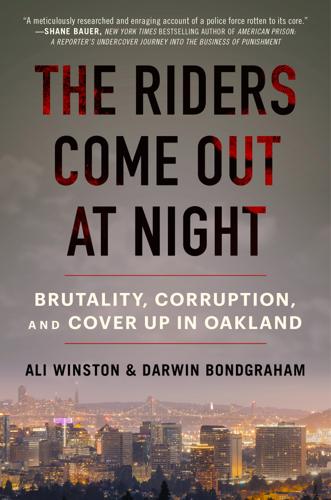
The Riders Come Out at Night: Brutality, Corruption, and Cover-Up in Oakland
by
Ali Winston
and
Darwin Bondgraham
Published 10 Jan 2023
The fact that there was a Black mayor who owed his position partly to the Black Panthers’ influence emboldened activists. If the city’s Black residents and progressives couldn’t achieve the goal now, could they ever? The Oakland NAACP united with the powerful Central Labor Council of Alameda County and the Oakland Citizens Committee for Urban Renewal to demand the establishment of a police oversight commission. They were joined by County Supervisor John George, who challenged Mayor Wilson and his colleagues during a council meeting: “The question is, who rules Oakland? The city council or the police?”4 Wilson established a task force to explore the idea of an oversight entity.
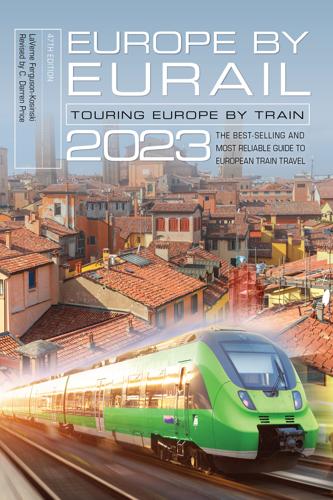
Europe by Eurail 2023
by
Laverne Ferguson-Kosinski
and
C. Darren Price
Published 8 Jan 2023
One of Danaus’s daughters, realizing that it could ruin her honeymoon, let her spouse escape the murderous nuptial-night activities. For this she was rewarded by becoming the ancestral matriarch of a long line of mythological heroes. The modern town of Argos was built up over ancient ruins from previous centuries of conflict. The last ethnic group to participate in that form of urban renewal was the Turks, who ravaged the town in 1397. As a result, Argos has scant visible remains of its ancient origins except the theater and the Roman baths. Day Excursion to Corinth (Korinthos) And the Isthmian Canal Depart from Athens Larissa Station Distance by Train: 57 miles (91 km) Average Train Time: 1 hour, 32 minutes City Dialing Code: 741 www.ancientcorinth.net This day excursion runs from modern Greece back through the millennia to the Bronze Age.

Germany Travel Guide
by
Lonely Planet
Other surprises include massively magnified insect models and a spooky but artistically illuminated ‘wet collection’ with over a million ethanol-preserved animals. POTSDAMER PLATZ & TIERGARTEN Berlin’s newest quarter, Potsdamer Platz was built on terrain once bifurcated by the Berlin Wall and is essentially a showcase of urban renewal. Some of the world’s finest architects, including Renzo Piano, Richard Rodgers and Helmut Jahn, collaborated on this modern reinterpretation of the historic square, which had the vibrancy of New York’s Times Square until WWII sucked all life out of the area. The new Potsdamer Platz is divided into three slices:DaimlerCity with a large mall, public art and high-profile entertainment venues; the flashy Sony Center Offline map Google map anchored by a plaza dramatically canopied by a tent-like glass roof; and the comparatively subdued Beisheim Center, which was inspired by American skyscraper design.
…
Fat Tire Bike Tours BICYCLE TOUR Offline map Google map (2404 7991; www.fattirebiketours.com/berlin; Panoramastrasse 1a; tours €24, concession €22; Alexanderplatz, Alexanderplatz) Has classic Berlin, Nazi and Cold War tours as well as the fascinating Raw Tour, which gets under the urban, counter-cultural skin of the city and addresses such hot-button issues as gentrification, urban renewal and multicultural living. BUS TOUR ON THE CHEAP Get a crash course in ‘Berlinology’ by hopping on the upper deck of bus 100 or 200 at Zoologischer Garten or Alexanderplatz and letting the landmarks whoosh by for the price of a standard bus ticket (€2.40, day pass €6.50). Bus 100 goes via the Tiergarten, 200 via Potsdamer Platz.
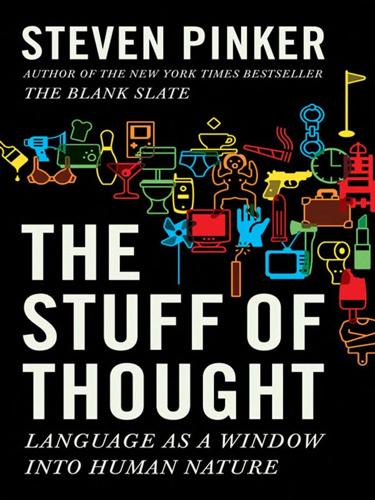
The Stuff of Thought: Language as a Window Into Human Nature
by
Steven Pinker
Published 10 Sep 2007
Since then, the idea that framing affects thinking has been applied to many spheres of human activity. The urban planner Donald Schön has argued that an “urban blight” metaphor led planners to treat crowded neighborhoods as if they were diseased plants, which had to be extirpated to prevent the spread of rot. The result was the disastrous “urban renewal” projects of the 1960s.19 The judge Michael Boudin has argued that judges can be illicitly affected by metaphors such as the “fruit of the poisonous tree” (illegally obtained evidence), the “wall of separation between church and state,” and “bottleneck monopolies” (companies that control a distribution channel such as a power grid or realty listing service).20 A book on psychotherapy called Metaphors in Mind calls on therapists to work with their patients’ metaphors, like “I have sensitive radar for insults” and “I’m trapped behind a door.”21 A book on business leadership called The Art of Framing examines references to businesses as journeys, games, wars, machines, organisms, and societies.22 A lot follows from the idea that the mind is a metaphor-monger.

The Simple Living Guide
by
Janet Luhrs
Published 1 Apr 2014
If you are handy like Pat Murphy and enjoy this kind of work, your extra labor will be worthwhile. If you have to hire out all this work, you may be better off using new materials. A man in Alabama determined that in one six-year period, the state tore down about 6,000 houses to make way for a highway and urban renewal. He calculated approximately 5,000 board feet of lumber in the average house, for a total of about 30 million board feet tossed into landfills. Unfortunately, this man discovered a stipulation in standard building codes that only new wood, grade-stamped for quality, could be used in home construction or repair.

Moon Portugal
by
Carrie-Marie Bratley
Published 15 Mar 2021
Tasca do Chico Rua do Diario de Noticias 39; tel. 961 339 696; daily 7pm-2am; €15 Unlike other fado venues, Tasca do Chico is more of a fado bar than a restaurant. Dim lighting in this tiny tavern enhances the atmospheric experience. Drinks and typical Portuguese tapas, such as plates of cured meats, are served. There is no minimum consumption fee, but it’s cash only. Cais do Sodré Created through a clever urban renewal program, the Pink Street project has taken a part of town that once was a red-light district and turned it into one of the hippest hangouts in Lisbon, with varying ambience along a short, colorful stretch. Bars and Pubs Pensão Amor Rua do Alecrim 19; tel. 213 143 399; www.pensaoamor.pt; Sun.

Germany
by
Andrea Schulte-Peevers
Published 17 Oct 2010
Finish up at the Scheunenviertel where you should have no trouble sourcing good spots for dinner, drinks and dancing. Two Days Follow the one-day itinerary, then revisit Cold War history at Checkpoint Charlie and the nearby Haus am Checkpoint Charlie. Spend the rest of the morning at the amazing Jüdisches Museum before heading off to Berlin’s showcase of urban renewal, the Potsdamer Platz. Make a stop here at the Museum für Film und Fernsehen or walk a few steps west to the Kulturforum and the superb Gemäldegalerie. At night, sample the cuisine and bar scene of Prenzlauer Berg (p140 and Click here). Three Days Follow the two-day itinerary, then devote the morning of day three to Schloss Charlottenburg where you shouldn’t miss the Neuer Flügel (New Wing) or a spin around the Schlossgarten (palace park).
…
Called the Hamburger Bahnhof (Map; 3978 3439; Invalidenstrasse 50-51; adult/concession/under 16yr €8/4/free, last 4hr Thu free; 10am-6pm Tue-Fri, 11am-8pm Sat, 11am-6pm Sun), it displays career-spanning bodies of work by Andy Warhol, Roy Lichtenstein, Anselm Kiefer, Joseph Beuys and other 20th-century heavyweights. Also check out the galleries in the Halle am Ufer (Map) behind the museum. Return to beginning of chapter Potsdamer Platz & Tiergarten Potsdamer Platz is Berlin’s newest quarter, built on terrain once bifurcated by the Berlin Wall. It became a showcase of urban renewal in the late 1990s, drawing some of the world’s finest architects, including Renzo Piano, Richard Rodgers and Helmut Jahn. Today’s Potsdamer Platz is a modern reinterpretation of the historic original, which was the equivalent of New York’s Times Square until WWII sucked all life out of the area.

Red Rabbit
by
Tom Clancy
and
Scott Brick
Published 2 Jan 2002
That left the fraternal socialist states of Eastern Europe, which were about as exciting as tourist spots as central Mississippi in the summer: a good place to go if you got off on cotton plantations and blazing heat, but otherwise why bother? Poland was out. Warsaw had been rebuilt after the Wehrmacht's harsh version of urban renewal, but Poland right now was a very tight place due to its internal political troubles, and the easiest exit point, Gdansk, was now as tightly guarded as the Russian-Polish border. It hadn't helped that the Brits had arranged for the purloining of a new Russian T-72 main battle tank there. Mary Pat hoped the stolen tank was useful to somebody, but some idiot in London had bragged about it to the newspapers and the story had broken, ending Gdansk's utility as a port of exit for the next few years.
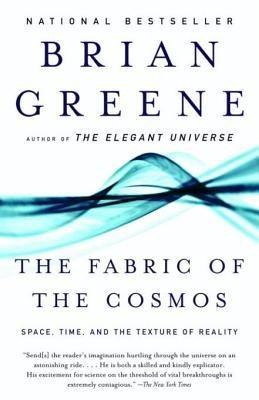
The Fabric of the Cosmos
by
Brian Greene
Published 1 Jan 2003
Instead, he and other physicists suggested invariance theory, stressing that the theory, at its core, involves something that everyone agrees on, something that is not relative.8 Absolute spacetime is the vital next chapter in the story of the bucket, because, even if devoid of all material benchmarks for defining motion, the absolute spacetime of special relativity provides a something with respect to which objects can be said to accelerate. Carving Space and Time To see this, imagine that Marge and Lisa, seeking some quality together-time, enroll in a Burns Institute extension course on urban renewal. For their first assignment, they are asked to redesign the street and avenue layout of Springfield, subject to two requirements: first, the street/avenue grid must be configured so that the Soaring Nuclear Monument is located right at the grid’s center, at 5th Street and 5th Avenue, and, second, the designs must use streets 100 meters long, and avenues, which run perpendicular to streets, that are also 100 meters long.

Lonely Planet Norway (Travel Guide)
by
Lonely Planet
and
Donna Wheeler
Published 1 Apr 2015
Contemporary Architecture Due to the need to rebuild quickly after WWII, Norway's architecture was primarily governed by functionalist necessity (the style is often called funkis in the local vernacular) rather than any coherent sense of style. Nowhere is this exemplified more than in the 1950, red-brick Oslo Rådhus. As the style evolved, functionality was wedded to other concerns, such as recognising the importance of aesthetics in urban renewal (for example in Oslo's Grünerløkka district), and ensured that architecture once again sat in harmony with the country's environment and history. Tromsø's Ishavskatedralen (Arctic Cathedral), designed by Jan Inge Hovig in 1964, mimics Norway's glacial crevasses and auroral curtains. Another beautiful example is the Sami Parliament in Karasjok, where Arctic building materials (birch, pine and oak) lend the place a sturdy authenticity, while the use of lights to replicate the Arctic night sky and the structure's resemblance to a Sami lavvo are extraordinary.
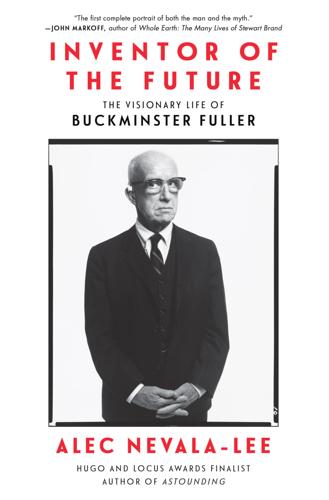
Inventor of the Future: The Visionary Life of Buckminster Fuller
by
Alec Nevala-Lee
Published 1 Aug 2022
Fuller supported the group’s campaign for fair housing, and as he looked out at the neighborhood, he reflected on his own life: “This is where I lived during my worst days.” A protest over evictions was being held that afternoon at a Puerto Rican church. When Fuller asked to go there, Terkel felt uneasy, but they drove to the unheated chapel, which was packed with people in blankets. Fuller launched into a talk on urban renewal, linking it to a world where technology would create wealth for all. According to Terkel, the audience followed every word. “Bucky Fuller, Bertrand Russell, and Albert Einstein were and are on the same wavelength—yours and mine,” Terkel wrote. “That’s the big one. Are we ready for what the man of the future has requested of us?”

Fodor's Costa Rica 2012
by
Fodor's
Published 6 Oct 2011
The wooden houses are brightly painted, but the grid-plan streets look rather worn, partly because of the damage caused by a 1991 earthquake. Street crime, including pickpocketing and nighttime mugging, is not uncommon here. Long charged with neglecting the city, the national government has now turned attention to Limón. New businesses are coming in, a positive sign of urban renewal, and the town has beefed up security with a more visible police presence. Limón receives thousands of visitors every year, owing in large part to its newest incarnation as a port of call. Carnival, Celebrity, Holland America, Princess, and Royal Caribbean cruise ships all dock here on certain of their Panama Canal or western Caribbean itineraries.

Frommer's Oregon
by
Karl Samson
Published 26 Apr 2010
This laid-back character is due in large part to the presence of the University of Oregon, the state’s liberal-arts university. Although downtown does have a small historic district with restaurants and interesting shops, much of downtown is dominated by parking garages and the characterless buildings of 1970s urban renewal. Consequently, life in Eugene tends not to revolve around downtown but rather around the university. For this reason, you’ll want to spend time on the school’s tree-shaded 250-acre campus, where you’ll find both an excellent art museum and a small natural-history museum. Eugene has for years been home to liberal-minded folks who have adopted alternative lifestyles.
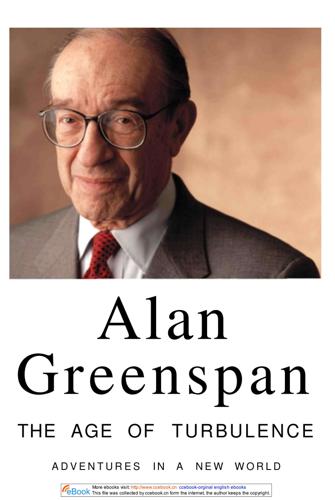
The Age of Turbulence: Adventures in a New World (Hardback) - Common
by
Alan Greenspan
Published 14 Jun 2007
My involvement in public life started in 1967 with Nixon's campaign for president. I'd been writing an economics textbook on the side with a Columbia University finance professor named Martin Anderson. Marty had made a reputation for himself in conservative circles with a book called The Federal Bulldozer, a critique of urban renewal that had caught Nixon's eye. Our plan had been to collaborate on a textbook describing a laissez-faire capitalist system; with some sense of irony we'd decided that Marty the academic, would write the chapters about business, and I, the business consultant, would write the chapters about theory.

Lonely Planet Eastern Europe
by
Lonely Planet
,
Mark Baker
,
Tamara Sheward
,
Anita Isalska
,
Hugh McNaughtan
,
Lorna Parkes
,
Greg Bloom
,
Marc Di Duca
,
Peter Dragicevich
,
Tom Masters
,
Leonid Ragozin
,
Tim Richards
and
Simon Richmond
Published 30 Sep 2017
PRAGUE'S JEWISH MUSEUM The Prague Jewish Museum, a collection of four synagogues – the Maisel, Pinkas, Spanish and Klaus – the former Ceremonial Hall and the Old Jewish Cemetery, is one of the city’s treasures. The monuments are clustered together in Josefov, a small corner of the Old Town that was home to Prague’s Jews for some 800 years before an urban renewal project at the start of the 20th century and the Nazi occupation during WWII brought this all to an end. The monuments cannot be visited separately but require a combined-entry ticket good for all of the sights and available at ticket windows throughout Josefov. A fifth synagogue, the Old-New Synagogue (Staronová synagóga; MAP GOOGLE MAP ; www.jewishmuseum.cz; Červená 2; adult/child 200/140Kč; h9am-6pm Sun-Fri Apr-Oct, to 4.30pm Nov-Mar; j17), is still used for religious services, and requires a separate ticket or additional fee.
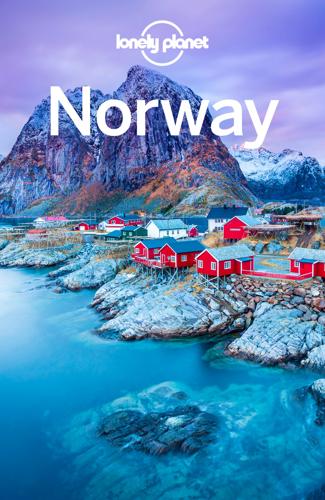
Lonely Planet Norway
by
Lonely Planet
Contemporary Architecture Due to the need to rebuild quickly after WWII, Norway's architecture was primarily governed by functionalist necessity (the style is often called funkis in the local vernacular) rather than any coherent sense of style. Nowhere is this exemplified more than in the 1950, red-brick Oslo Rådhus. As the style evolved, functionality was wedded to other concerns, such as recognising the importance of aesthetics in urban renewal (for example, in Oslo's Grünerløkka district), and ensured that the country's contemporary architectural forms once again sat in harmony with the country's environment and history. Tromsø's Ishavskatedralen (Arctic Cathedral), designed by Jan Inge Hovig in 1965, mimics Norway's glacial crevasses and auroral curtains.

USA's Best Trips
by
Sara Benson
Published 23 May 2010
Next door is the most famous minor league ballpark in the country, the Durham Bulls Athletic Park, where, in between innings, mascot Wool E Bull shoots T-shirts from his miniature race car or referees wrestling matches between fans in inflatable sumo costumes. Today science, medicine and art have replaced tobacco and farming as Durham’s most prolific exports, and the Triangle has one of the most educated populations in the US, nowhere more apparent than in downtown Durham. The city went through an ill-found “urban renewal” effort in the 1960s and ’70s, but preservationists (including one woman who chained herself to the about-to-be-destroyed downtown theater, ensuring its survival to this day) eventually won out. These days, the “Durham Love Yourself” movement devotees (look for the T-shirts and bumper stickers everywhere) have an almost militant love for the city’s revitalization of art galleries and restaurants.
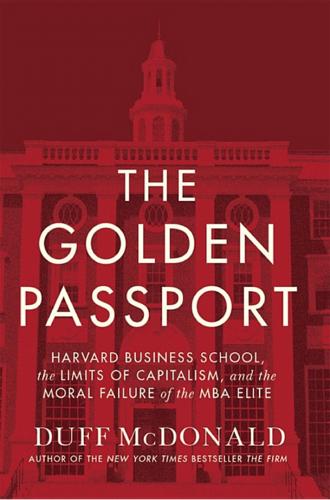
The Golden Passport: Harvard Business School, the Limits of Capitalism, and the Moral Failure of the MBA Elite
by
Duff McDonald
Published 24 Apr 2017
While the schadenfreude brigade whooped with glee when Monitor collapsed, asking how a firm cofounded by the world’s best-known expert on strategy could have strategized itself into failure, the fact is that while Porter did continue working à la carte for the consultancy, the bulk of his energies were devoted elsewhere. Rather, everywhere. When he wasn’t advising nations—Canada, India, Ireland, New Zealand, Portugal, the United Kingdom, and the seven nations of Central America among them—he was trying to foster urban renewal. In 1994, he founded a Boston-based nonprofit, the Initiative for a Competitive Inner City, to help urban businesses grow. According to Porter, as of 2015 it had helped create more than 133,000 jobs and raised more than $1.2 billion in capital to lend to nearly 700 entrepreneurs.10 A 2011 paper, “Creating Shared Value,” outlined Porter’s unsurprising thesis that capitalism holds the “best route to real solutions to many social problems.”
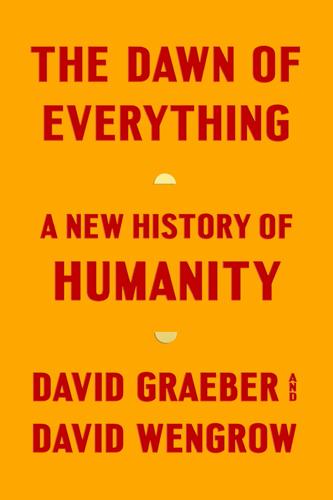
The Dawn of Everything: A New History of Humanity
by
David Graeber
and
David Wengrow
Published 18 Oct 2021
But the evidence tells a very different story, because the citizens of Teotihuacan chose a different path. In fact, the entire trajectory of Teotihuacan’s political development seems to have gone off on a remarkable tangent. Instead of building palaces and elite quarters, the citizens embarked on a remarkable project of urban renewal, supplying high-quality apartments for nearly all the city’s population, regardless of wealth or status.28 Without written sources, we can’t really say why. Archaeologists are not yet able to distinguish the precise sequence of events with any confidence. But nobody doubts that something did happen, and what we will try to do now is sketch out what it was

Enlightenment Now: The Case for Reason, Science, Humanism, and Progress
by
Steven Pinker
Published 13 Feb 2018
The ideal of progress also should not be confused with the 20th-century movement to re-engineer society for the convenience of technocrats and planners, which the political scientist James Scott calls Authoritarian High Modernism.14 The movement denied the existence of human nature, with its messy needs for beauty, nature, tradition, and social intimacy.15 Starting from a “clean tablecloth,” the modernists designed urban renewal projects that replaced vibrant neighborhoods with freeways, high-rises, windswept plazas, and brutalist architecture. “Mankind will be reborn,” they theorized, and “live in an ordered relation to the whole.”16 Though these developments were sometimes linked to the word progress, the usage was ironic: “progress” unguided by humanism is not progress.

Jerusalem: The Biography
by
Simon Sebag-Montefiore
Published 27 Jan 2011
Suleiman and Roxelana, political ethos: Finkel 115-18, 129-30; 133, 144-5, 148-50. Solomon of his age, politics, imperial projection: David Myres, 'An Overview of the Islamic Architecture of Ottoman Jerusalem', OJ 325-54. Abraham Castro, gates, Sinan planner, Archeological Park 8. Walls, second Solomon: Yusuf Natsheh, 'The Architecture of Ottoman Jerusalem', in OJ 583-655. Urban renewal, number of tiles, and Dome/al-Aqsa: Beatrice St Laurent, 'Dome of the Rock: Restorations and Significance, 1540-1918', in OJ 415-21. Khassaki Sultan project: OJ 747-73. David Myres, 'Al-Imara al-Amira: The Khassaki Sultan 1552', in OJ 539-82. Ottoman style: Hillenbrand, OJ 15-23. Hereditary architect dynasty of al-Nammar: Mahmud Atallah, 'The Architects in Jerusalem in the 10th-11th/16th-17th Centuries', in OJ 159-90.
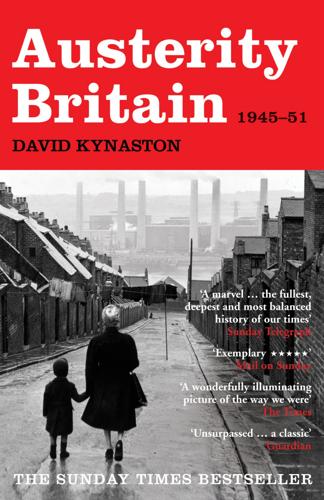
Austerity Britain: 1945-51
by
David Kynaston
Published 12 May 2008
Alan Holmans, ‘Housing’, in A. H. Halsey (ed), Twentieth-Century British Social Trends (Basingstoke, 2000), p 487; New Statesman, 2 Dec 1950; Miles Horsey, Tenements and Towers (Edinburgh, 1990), p 27. 5. Elizabeth Layton, ‘The Economics of Housing’, Town Planning Review (Apr 1951), p 9; Jim Yelling, ‘Public Policy, Urban Renewal and Property Ownership, 1945– 55’, Urban History (May 1995), pp 50–54; Phyllis Willmott, Joys and Sorrows (1995), pp 123–4; The Letters of Kingsley Amis (2000), p 222; Richard Bradford, Lucky Him (2001), p 126; Kingsley Amis, That Uncertain Feeling (Penguin edn, 1985), p 103. 6. Patrick Nuttgens, The Home Front (1989), p 67; Holmans, ‘Housing’, p 487; Harriet Jones, ‘“This is Magnificent!”’

EuroTragedy: A Drama in Nine Acts
by
Ashoka Mody
Published 7 May 2018
County councilors, who held the authority to rezone land, leveraged that authority for financial gain and political power. The government was priming the pump with incentives such as grants for first- time home buyers, mortgage- interest deduction, and tax breaks 178 e u r o t r a g e d y on urban-renewal schemes and capital gains.93 In 1996, the IMF had noted the disturbingly rapid increase in property prices and had warned against policy measures to stimulate construction.94 However, an insidious nexus of relationships was forming among politicians, property developers, and banks. Rising property prices increased the incentives and potential for corruption.

Palo Alto: A History of California, Capitalism, and the World
by
Malcolm Harris
Published 14 Feb 2023
If the biggest assets most suburban white people had were houses in exclusive zones, school seats to go with them, and preference on the segregated labor market, then “forced integration” (as the Reaganites called it) threatened all three. And how do good Americans respond when someone threatens them? When someone threatens their family? When someone threatens their children’s future? Reagan’s real home milieu, Hollywood, readied itself to surf the backlash, and they used the Bay as a set. Urban renewal and the Californicating economy made the region a sponge for investment capital in the 1960s, but the Bay Area also developed a global reputation as a magnet for freaks and weirdos. The San Francisco mayor’s office enticed local film productions with financial incentives only to see the filmmakers turn around and portray the city as depraved and crime-ridden.

The Rough Guide to Portugal (Travel Guide eBook)
by
Rough Guides
Published 1 Mar 2023
Many fled to the cities in search of better things, and emigration was high; meanwhile others came to hide, such as the Jews who escaped here from the terrors of the Inquisition. Change came slowly, if at all, and Trás-os-Montes remained a land apart until as late as the 1980s and 90s, when fast new highways started to make inroads into the northern wilds. Investment in agriculture, industry and urban renewal has also done much to change perceptions of the region as backward and conservative, though those views still persist in much of the rest of Portugal. Ancient citadel of Bragança Shutterstock Church of São Pedro, Vila Real Shutterstock You can get to the main towns more quickly these days, but there are still places where you might feel like the first foreign visitor to arrive, and traditional village life here continues as it has done for decades, if not centuries.
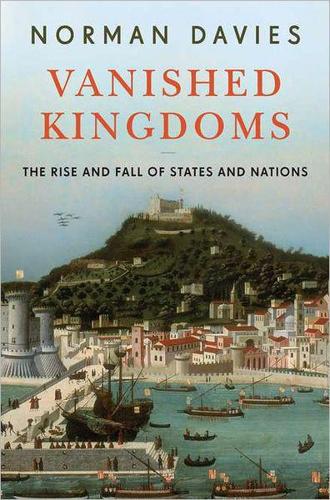
Vanished Kingdoms: The Rise and Fall of States and Nations
by
Norman Davies
Published 30 Sep 2009
Persistent unemployment bred radical politics, and the epithet of ‘Little Moscow’ was coined to match that of adjacent ‘Red Clydeside’. In the 1950s the run-down district was used to locate several of Glasgow’s largest projects of overspill housing. Forty and fifty years on, the massive, dilapidated estates such as the Mill of Haldane in East Balloch were the scene of equally massive campaigns of attempted urban renewal. Yet a positive development began when one of Scotland’s leading whisky distillers moved into Dumbarton to employ the laid-off dockers. ‘George Ballantine’s Finest’ is one of the most popular and best-known brands of blended whisky in the world. Every bottle bears the proud assignations: ‘Scotch Whisky, Fully Matured, Finest Quality’, ‘George Ballantyne & Sons, Founded in 1827 in Scotland’ and ‘By Appointment to the Late Queen Victoria and the Late King Edward VII’.
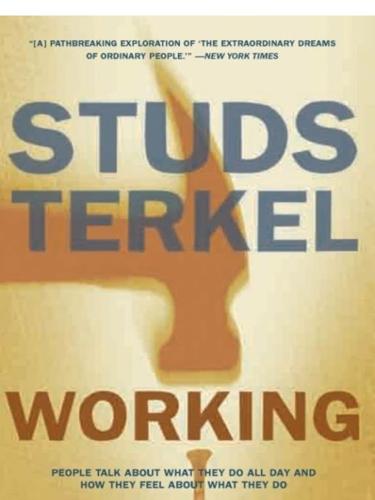
Working: People Talk About What They Do All Day and How They Feel About What They Do
by
Studs Terkel
Published 1 Jan 1974
I should have to keep records? I think the parents are glad we’re around. We take a great deal of pressure off them. We give them a chance to get on with other things in their lives. We’ve had a lot of families move back South. A great deal of our neighborhood has gone under the bulldozer of urban renewal. Families who haven’t done so well after eight, nine years have now decided they’ll give the South another try. Kids are getting in neighborhood trouble. City life may be just a bit too hard. We’re really content when our students get a full-time, good paying job. We’re always around for him to learn if he wants to.

Vanished Kingdoms: The History of Half-Forgotten Europe
by
Norman Davies
Published 27 Sep 2011
Persistent unemployment bred radical politics, and the epithet of ‘Little Moscow’ was coined to match that of adjacent ‘Red Clydeside’. In the 1950s the run-down district was used to locate several of Glasgow’s largest projects of overspill housing. Forty and fifty years on, the massive, dilapidated estates such as the Mill of Haldane in East Balloch were the scene of equally massive campaigns of attempted urban renewal. Yet a positive development began when one of Scotland’s leading whisky distillers moved into Dumbarton to employ the laid-off dockers. ‘George Ballantine’s Finest’ is one of the most popular and best-known brands of blended whisky in the world. Every bottle bears the proud assignations: ‘Scotch Whisky, Fully Matured, Finest Quality’, ‘George Ballantyne & Sons, Founded in 1827 in Scotland’ and ‘By Appointment to the Late Queen Victoria and the Late King Edward VII’.

The Rough Guide to Morocco
by
Rough Guides
It’s well managed and only a short walk from the beach. 490dh Le Grand Hôtel Villa de France Cnr Rue de Hollande & Rue d’Angleterre 0539 333111, leroyal.com/ghvdf; map. Severely neglected after it closed in 1992, restoration started in 2006 – confirmation of Tangier’s urban renewal – and was finally completed in 2014. The hotel looks out over St Andrew’s Church and beyond to the ocean; this was the view from room 35 (refurbished to its past glory as a pseudo-museum), where French impressionist Henri Matisse painted his famous Vue de la fenêtre à Tanger (View from a Window in Tangier) in 1912.
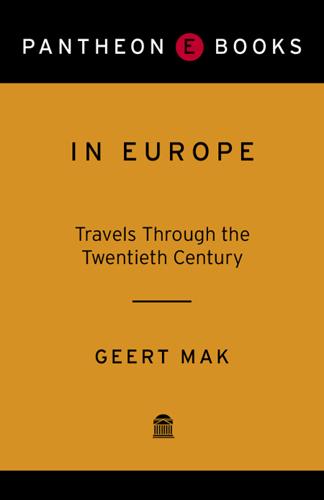
In Europe
by
Geert Mak
Published 15 Sep 2004
As the city's mayor, he was also an early pioneer of urban socialism. He had a great many new schools built, he set up a municipal gas, water and electric company and an excellent tram network, he organised a food programme for undernourished children and was far ahead of his time when it came to public housing and urban renewal. Karl Lüger was a master of public relations; a term which, had it only existed in that day, would have fit him to a tee. He kept himself unsullied by the corruption within Vienna's administrative machinery; even his most fervent opponents had to admit that his behaviour was unimpeachable. In everything he did it was clear that he loved the role of the good-hearted, jovial city father who showed up at countless birthday celebrations and jubilees wearing his chain of office, a mayor so concerned with ‘the little man’ that, in his own words, he wished he ‘could place a hansom cab at the disposal of every citizen who has had a few drinks too many’.

USA Travel Guide
by
Lonely, Planet
But it didn’t take long for European settlers to displace those communities, thus giving rise to Pennsylvania’s status as the richest and most populous British colony in North America. It had great influence on the independence movement and, much later, became an economic leader through its major supply of coal, iron and timber, followed by raw materials and labor during WWI and WWII. In the postwar period its industrial importance gradually declined. Urban-renewal programs and the growth of service, high-tech and health-care industries have boosted the economy, most notably in Philadelphia and Pittsburgh. PENNSYLVANIA FACTS » Nicknames Keystone State, Quaker State » Population 12.4 million » Area 46,058 sq miles » Capital city Harrisburg (population 53,000) » Other cities Philadelphia (population 1.45 million), Pittsburgh (population 313,000), Erie (population 102,000) » Sales tax 6% » Birthplace of Writer Louisa May Alcott (1832−88), dancer Martha Graham (1878−1948), artist Andy Warhol (1928−87), movie star Grace Kelly (1929−82), comic Bill Cosby (b 1937) » Home of US Constitution, the Liberty Bell, first daily newspaper (1784), first auto service station (1913), first computer (1946) » Politics ‘Swing state,’ Republican Governor, progressive Philly and blue collar Democrats elsewhere » Famous for soft pretzels, Amish people, Philadelphia cheesesteak, Pittsburgh steel mills » Wildlife home of the largest herd of wild elk east of the Mississippi » Driving distances Philadelphia to NYC 100 miles, Philadelphia to Pittsburgh 306 miles Philadelphia Although it may seem like a little sibling to NYC, which is less than 90 miles away, Philadelphia is more representative of what East Coast city living is like.
…
For a time the second-largest city in the British Empire (after London), Philadelphia became a center for opposition to British colonial policy. It was the new nation’s capital at the start of the Revolutionary War and again after the war until 1790, when Washington, DC, took over. By the 19th century, New York City had superseded Philadelphia as the nation’s cultural, commercial and industrial center. Though urban renewal has been going on for decades, some parts of the city formerly populated by industrial workers are blighted and worlds away from the carefully manicured lawns and park-service-glutted historic district around the Liberty Bell and Independence Hall. Sights & Activities Philadelphia is easy to navigate.
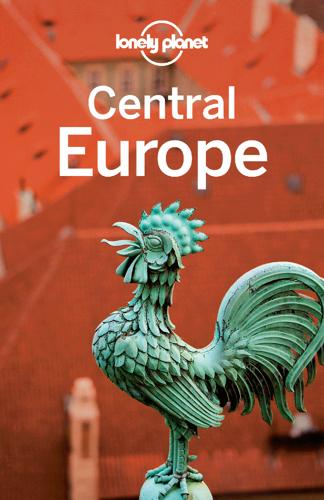
Central Europe Travel Guide
by
Lonely Planet
HAMBURG 040 / POP 1.77 MILLION It comes as no surprise that Hamburg is stylishly expanding itself by 40% without batting an eye – this is a city where ambition flows through the ubiquitous waterways and designer-clad residents cycle to their media jobs with a self-assurance unmatched by any other German city. The site of Europe’s largest urban-renewal project is a never-ending forest of cranes that are efficiently transforming old city docks into an extension of the city – it all makes you wonder: what can’t this city achieve? Decent weather; that’s one thing it can’t buy, build or create. But residents are passionately dedicated to their beloved city and will rarely fret about drizzly skies – they just open up their designer umbrellas and get on with it.
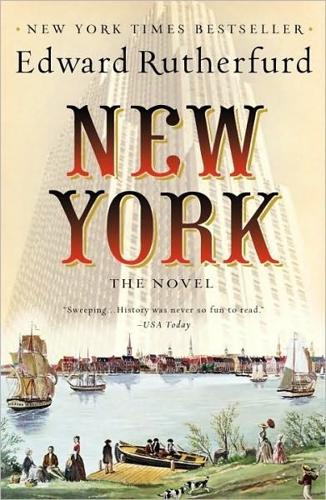
New York
by
Edward Rutherfurd
Published 10 Nov 2009
The mighty hand of Robert Moses had continued to lay down highways for the motor car, and for the huge trucks which now delivered to, and frequently blocked, the Midtown streets. Moses wanted to sweep away the slums as well, and in numerous places along the East River, high-rise blocks, for better or worse, were springing up in their place. Urban renewal, it was called. The masses of small manufacturers and factories that had crowded the poorer districts, especially in Brooklyn and the New York waterfront areas—those dirty, grainy, humble powerhouses of the city’s wealth—had also been melting away. But if Manhattan was changing its character, if services were replacing manufacture, if Ellis Island was long since closed, and New York’s huge floods of immigrants regulated into a less visible seepage through the nation’s borders, the great city of New York still contained in its five boroughs vibrant communities from all the ends of the Earth.

The Rough Guide to Ireland
by
Clements, Paul
Published 2 Jun 2015
When he died in 1941, Ulysses was still unavailable in Ireland (though it never officially fell foul of Ireland’s censorship laws, booksellers were loath to stock copies), and was not published in the country until the 1960s. Smithfield The area christened Smithfield Village by developers is more an ongoing process of urban renewal than an identifiable community, but at its centre lies the city’s largest civic open space, cobbled Smithfield. Surrounded by rising blocks of executive flats, shops and restaurants, Smithfield still manages to host one of the city’s major sights – the 300-year-old Dublin Horse Fair, which takes place from around 9am or so until noon on the first Sunday of each month and draws a number of traders and other horse-lovers from the city and outlying rural areas.
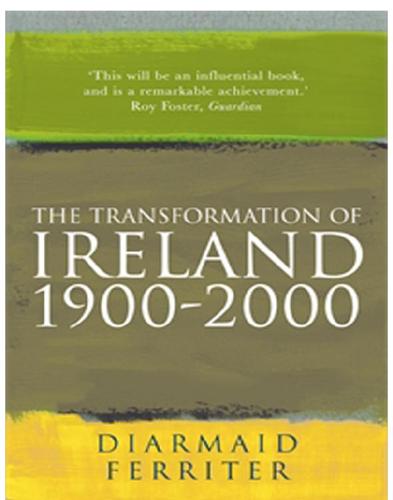
The Transformation Of Ireland 1900-2000
by
Diarmaid Ferriter
Published 15 Jul 2009
That last sentence was particularly relevant, given the contention of Douglas Gaegby, editor of the Irish Times, that ‘all of this talk about heritage – it’s so selective’ (being noticeably Dublin-centric).227 Michael Lucey, the property investment manager of Irish Life, the state-owned insurance company, shocked conservationists by calling for the abolition of planning controls so the development of the city could be left to ‘free market forces’, which was precisely what dictated the shape of late twentieth-century Dublin. Out of the total of 300 office blocks built in the 25-year period after 1960, only 33 were located north of the river Liffey, the area most in need of urban renewal.228 ‘worse than comparable figures for the New York ghettos’ In 1977, looking at the deprived areas of Dublin’s inner city, Gene Kerrigan observed that once the trouble spilled on to O’Connell Street, ‘the obsession of the press and the establishment with the behaviour of Dublin’s wilder kids is not matched by any official willingness to analyse the problem’, by breaking down police, corporation, educational and medical statistics to give a true picture of the conditions in any single area.229 Community activists emerged to battle gallantly, and in 1980 Dublin Corporation was forced to declare a housing emergency, as activists marched through the streets of Dublin from the affected areas, demanding action.

Lonely Planet Turkey (Travel Guide)
by
Lonely Planet
,
James Bainbridge
,
Brett Atkinson
,
Steve Fallon
,
Jessica Lee
,
Virginia Maxwell
,
Hugh McNaughtan
and
John Noble
Published 31 Jan 2017
Also of note are the roses and grapes carved along the bottom of the women’s gallery. oKordonWATERFRONT ( MAP GOOGLE MAP ; g12, 253, 811, mKonak) It’s difficult to imagine life in İzmir without its iconic seafront kordon (promenade), which stretches north from Cumhuriyet Meydanı to Alsancak and south from Konak Pier to Konak Meydanı. A triumph of urban renewal, these two stretches are grassed, have bicycle and walking paths, and are lined on their eastern edge with bars, cafes and restaurants. Locals flock here at the end of the day to meet with friends, relax on the grass and watch the picture-perfect sunsets. A number of museums and attractions are located on the kordon, including the Zübeyde Hanım Museum Ship (Zübeyde Hanım Müze Gemisi; MAP GOOGLE MAP ; Pasaport Pier, Konak; h8am-4pm Tue-Sun; c; mKonak), the Arkas Art Centre (Arkas Sanat Merkezi; MAP GOOGLE MAP ; %0232-464 6600; www.arkassanatmerkezi.com; 1380 Sk 1, Alsancak; h10am-6pm Tue, Wed & Fri-Sun, to 8pm Thu; g12, 253) and the Atatürk Museum (Atatürk Müzesi; MAP GOOGLE MAP ; %0232-464 8085; Atatürk Caddesi 248, Alsancak; h8.30am-5pm Tue-Sun; g12, 253, 811).

Ashes to Ashes: America's Hundred-Year Cigarette War, the Public Health, and the Unabashed Triumph of Philip Morris
by
Richard Kluger
Published 1 Jan 1996
The tobacco bloc, in defense of its realm, enjoyed a natural affinity with other Southern lawmakers, who tended to unite in matters of regional concern, and with congressional Republicans, by and large pro-business and anti-governmental intervention—except when protecting, indeed subsidizing, the farmers in the G.O.P.-dominated Midwest. Northern liberals partial to government efforts to ameliorate pressing social problems found themselves susceptible to tobacco-state congressmen willing to trade off their votes on measures they would ordinarily oppose but were dear to liberal hearts—like urban renewal funding—in return for keeping government regulators away from the cigarette business. As consumer advocate Ralph Nader commented, “Any group of really cohesive congressmen can have disproportionate power like the tobacco bloc … [and become] a proverbial battering ram, saying in effect to their colleagues, ‘This is our particular bailiwick, and if you ever want us to defer to you someday, you’d better go along with us on this issue.’”
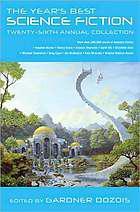
The Year's Best Science Fiction: Twenty-Sixth Annual Collection
by
Gardner Dozois
Published 23 Jun 2009
Kennedy was following the orders of the only man he believed should be president at the moment. His brother, Jack. _______ The scene wasn’t hard to find; a coroner’s van blocked the entrance to the alley. Bryce walked quickly, already cold, his heartburn worse than it had been when he had gone to bed. The neighborhood was in transition. An urban renewal project had knocked down some wonderful turn of the century buildings that had become eyesores. But so far, the buildings that had replaced them were the worst kind of modern—all planes and angles and white with few windows. In the buildings closest to the park, the lights worked and the streets looked safe.
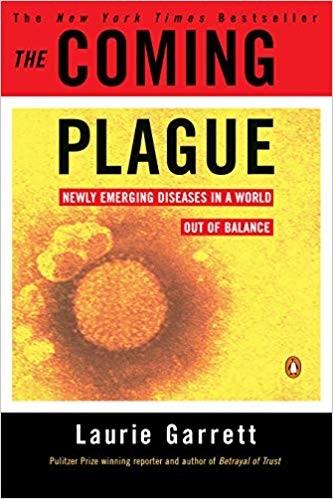
The Coming Plague: Newly Emerging Diseases in a World Out of Balance
by
Laurie Garrett
Published 31 Oct 1994
With every passing year in America’s AIDS epidemic the impact upon the nation’s poorest urban areas grew more severe. It compounded the effects of other plights—homelessness, drug abuse, alcoholism, high infant mortality, syphilis, gonorrhea, violence—all of which conspired to increase levels of desperation where dreams of urban renewal had once existed. As the virus found its way into communities of poverty, the burden on urban public hospitals was critical. Unlike Canada and most of Western Europe, the United States had no system of national health care. By 1990 an estimated 37 million Americans were without any form of either public or private health insurance.
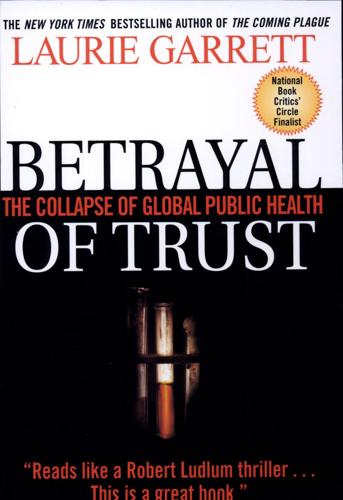
Betrayal of Trust: The Collapse of Global Public Health
by
Laurie Garrett
Published 15 Feb 2000
As early as 1949 the impact was shockingly obvious; many American cities suddenly had slums in their downtown cores. Congress saw this and approved funds for construction of 810,000 public housing units to be built in place of the recent urban squalor. But by 1955 not even a quarter of those units had been constructed and many so-called urban renewal projects were turning into eyesores and centers of crime. By the 1960s “the projects,” as they were called, and degenerated neighborhoods of most U.S. cities would be racially stratified centers of explosive antigovernment sentiment, all but impenetrable to public health officials. After World War II urban public health was still to face, and despite its deterioration often meet, some of its classic challenges.

Central America
by
Carolyn McCarthy
,
Greg Benchwick
,
Joshua Samuel Brown
,
Alex Egerton
,
Matthew Firestone
,
Kevin Raub
,
Tom Spurling
and
Lucas Vidgen
Published 2 Jan 2001
Autoridad Nacional del Ambiente (ANAM; Map; 315-0855; 8am-4pm) ANAM can occasionally provide maps and information on national parks. However, they are not organized to provide much assistance to tourists. Located inside Building 804 of the Albrook district. DANGERS & ANNOYANCES Casco Viejo is the focus of an ambitious urban renewal program, though it’s still a work in progress. Generally speaking, the tip of the peninsula southeast of the Iglesia de la Merced is safe for tourists, especially since the area is heavily patrolled by police officers. But stay where it’s well lit and around people. Take taxis at night. Moving to the base of the peninsula, there are high-density slums where many tourists have been the target of criminals.

Ireland (Lonely Planet, 9th Edition)
by
Fionn Davenport
Published 15 Jan 2010
If it’s a tad weak in the ‘atmospheric old boozer’ department, it makes up for it with appealing modern cafes and bars. The River Lee flows around the centre, an island packed with grand Georgian parades, cramped 17th-century alleys and modern masterpieces, such as the opera house. The flurry of urban renewal that began with the city’s stint in 2005 as European Capital of Culture continues apace, with new buildings, bars and arts centres springing up all over town. The best of the city is still happily traditional, though – snug pubs with live music sessions most of the week, excellent local produce in an ever-expanding list of restaurants and a genuinely proud welcome from the locals.

England
by
David Else
Published 14 Oct 2010
Today, however, it’s not the steel of the foundries, mills and forges that made the city’s fortune, or the canteens of cutlery that made ‘Sheffield steel’ a household name, but the steel of scaffolding and cranes, of modern sculptures and supertrams, and of new steel-framed buildings rising against the skyline. The steel industry that made the city famous is long since gone, but after many years of decline Sheffield is on the up again –like many of northern England’s cities it has grabbed the opportunities presented by urban renewal with both hands and is working hard to reinvent itself. The new economy is based on services, shopping and the ‘knowledge industry’ that flows from the city’s universities. This renaissance got off to a shaky start in 2000 when the city’s signature millennium project, the National Centre for Popular Music, closed down due to lack of visitors only 15 months after it opened.
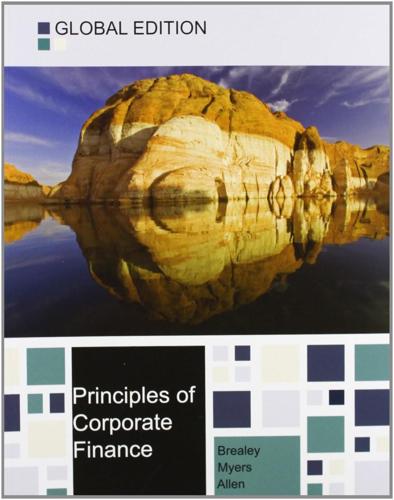
Principles of Corporate Finance
by
Richard A. Brealey
,
Stewart C. Myers
and
Franklin Allen
Published 15 Feb 2014
Production payment Loan in the form of advanced payment for future delivery of a product. Profitability index Ratio of a project’s NPV to the initial investment. Pro forma Projected. Project finance Debt that is largely a claim against the cash flows from a particular project rather than against the firm as a whole. Project note (PN) Note issued by public housing or urban renewal agencies. Promissory note Promise to pay. Prospect theory A theory of asset pricing suggested by the observation of behavioral psychologists that investors have a particular aversion to losses even if very small. Prospectus Summary of the registration statement providing information on an issue of securities.
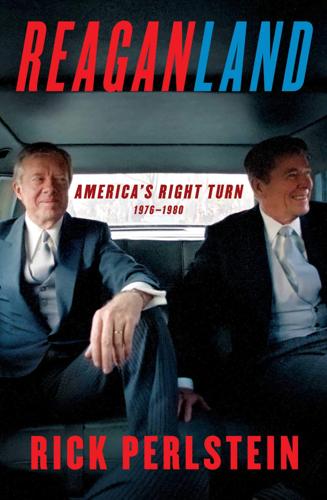
Reaganland: America's Right Turn 1976-1980
by
Rick Perlstein
Published 17 Aug 2020
He had cofounded the Public Interest in 1965 with the sociologist Daniel Bell, who left in 1969 in frustration with its rightward march. Much in its pages was respectable: statistics-laden studies, for example, claiming a failure of busing to achieve quality desegregated schooling, or the ways Washington-directed urban renewal was proving counterproductive in reversing blight. Work like this comprised the most important intellectual contribution of neoconservatism’s domestic wing: the doctrine of “unintended consequences”—that the interventions of naive but well-intentioned reformers often left things worse than before.

Spain
by
Lonely Planet Publications
and
Damien Simonis
Published 14 May 1997
A number of art deco caprices raised in that era still line the boulevard today; one of the more overwhelming is the Palacio de Comunicaciones (Click here) on Plaza de la Cibeles. Ambitious building and urban redevelopment programs continue to change the main cityscapes. In Barcelona, for instance, the 1992 Olympics provided an enormous impulse for new construction and urban renewal. The Macba art museum (Click here), opened in 1995, shines white and bold, bright in the once slummy El Raval district. More recently, Jean Nouvel added the spangly gherkin-shaped Torre Agbar (Click here), just off Plaça de les Glòries Catalanes, in 2005; the controversial and costly blue triangular Edifici Fòrum (Click here) was deposited on the waterfront in 2004 by Swiss architects Herzog & de Meuron; and Enric Miralles (1955–2000) made a colourful splash in 2005 with the Mercat de Santa Caterina (Click here).
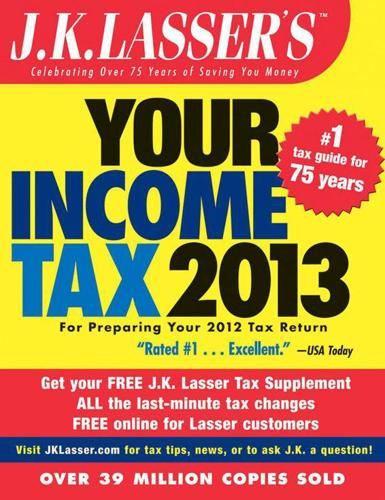
J.K. Lasser's Your Income Tax
by
J K Lasser Institute
Published 30 Oct 2012
Also, gifts of food, clothing, medical supplies, and other forms of subsistence do not reduce the loss deduction nor are they taxable income. Cancellation of part of a disaster loan under the Disaster Relief Act is treated as a partial reimbursement of the loss and reduces the amount of the loss. Payments from an urban renewal agency to acquire your damaged property under the Federal Relocation Act of 1970 are considered reimbursements reducing the loss. Insurance payments for the cost of added living expenses because of damage to a home do not reduce a casualty loss. The payments are treated as separate and apart from payments for property damage.

France (Lonely Planet, 8th Edition)
by
Nicola Williams
Published 14 Oct 2010
ÎLE DE LA CITÉ The site of the first settlement in Paris, around the 3rd century BC, and later the Roman town of Lutèce (Lutetia), the Île de la Cité remained the centre of royal and ecclesiastical power even after the city spread to both banks of the Seine during the Middle Ages. The buildings on the middle part of the island were demolished and rebuilt during Baron Haussmann’s great urban renewal scheme of the late 19th century. Notre Dame Cathedral The Cathédrale de Notre Dame de Paris (Cathedral of Our Lady of Paris; Map; 01 42 34 56 10; www.cathedraledeparis.com; place du Parvis Notre Dame, 4e; Cité; audioguide €5; 7.45am-6.45pm) is the true heart of Paris; in fact, distances from Paris to all parts of metropolitan France are measured from place du Parvis Notre Dame, the square in front of Notre Dame.

Lonely Planet France
by
Lonely Planet Publications
Published 31 Mar 2013
The Islands Top Sights Cathédrale de Notre Dame de ParisD3 Ste-Chapelle B2 Sights 1Cathédrale de Notre Dame de Paris North TowerD3 2 Conciergerie C1 3 Église St-Louis en l'Île F4 4 Musée de la Monnaie de Paris A1 5Pont NeufA1 Activities, Courses & Tours 6FreescootD4 Sleeping 7 Guest Apartment Services G4 8 Hôtel de Lutèce E3 9 Hôtel Esmeralda C3 10 Hôtel Henri IV A1 11 Hôtel les Degrés de Notre Dame D4 12Hôtel St-Louis en I'ÎleE3 Eating 13BerthillonF3 14Café Saint RegisE3 15 La Tour d'Argent F4 Mon Vieil Ami (see 8) 16 Polidor A4 17 Roger la Grenouille A2 18 Ze Kitchen Galerie A2 Drinking 19 Taverne Henri IV A1 Shopping 20 Clair de Rêve F3 21 Marché aux Fleurs C2 22 Mariage Frères A2 ÎLE DE LA CITÉ The site of the first settlement in Paris, around the 3rd century BC, and later the Roman town of Lutèce (Lutetia), the Île de la Cité remained the centre of royal and ecclesiastical power even after the city spread to both banks of the Seine during the Middle Ages. The buildings on the middle part of the island were demolished and rebuilt during Baron Haussmann’s great urban renewal scheme of the late 19th century. Cathédrale de Notre Dame de Paris CATHEDRAL Offline map Google map ( www.cathedraledeparis.com; 6 place du Parvis Notre Dame, 4e; 7.45am-7pm; Cité) This is the heart of Paris – so much so that distances from Paris to every part of metropolitan France are measured from place du Parvis Notre Dame , the square in front of the Cathedral of Our Lady of Paris.
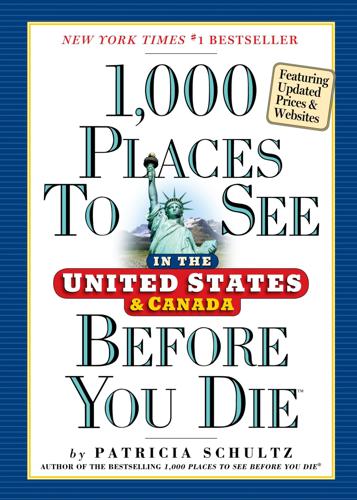
1,000 Places to See in the United States and Canada Before You Die, Updated Ed.
by
Patricia Schultz
Published 13 May 2007
A Host of Cultural Offerings MIDTOWN ATLANTA Atlanta, Georgia Downtown may be Atlanta’s commercial center, but just to the north, Midtown claims the lion’s share of the city’s major cultural attractions—from museums to performance halls—plus a bevy of great hotels and inns, hip shops and restaurants, gay and straight bars and coffeehouses, offbeat art galleries, and parkland. If Atlanta looks like a poster child for urban renewal, much of it is due to the High Museum of Art’s spectacular expansion in 2005 that saw the design of three new buildings by architect Renzo Piano. Now one of the South’s great cultural institutions, the High contains a superb permanent assemblage of some 11,000 works, including work by self-taught Southern artists such as folk preacher Howard Finster (see p. 347) and African American sculptor Ulysses Davis.
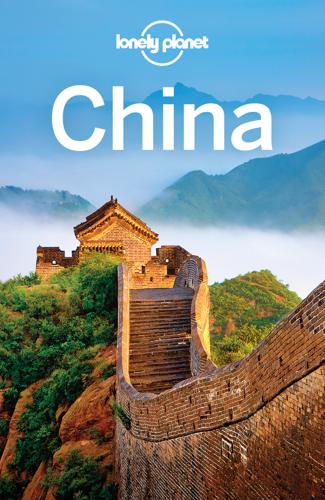
Lonely Planet China (Travel Guide)
by
Lonely Planet
and
Shawn Low
Published 1 Apr 2015
ENNING Lu If you like history, a stroll down century-old Enning Lu (Enning Road MAP GOOGLE MAP ; hLuanyu Tang 10am-3pm; mChangshou Lu) can be rewarding. Located in the area known traditionally as Xiguan, the western gate and commercial hub of old Canton, it retains a few cultural relics, despite earnest urban renewal efforts. Bahe AcademyHISTORIC BUILDING (Bahe Huiguan MAP GOOGLE MAP ; 117 Enning Lu) Bahe Academy was a guild hall for Cantonese opera practitioners. The original institution opened in 1889 to provide lodging and other services to opera troupes. It’s now a meeting place for retired artists.

J.K. Lasser's Your Income Tax 2014
by
J. K. Lasser
Published 5 Oct 2013
Also, gifts of food, clothing, medical supplies, and other forms of subsistence do not reduce the loss deduction nor are they taxable income. Cancellation of part of a disaster loan under the Disaster Relief Act is treated as a partial reimbursement of the loss and reduces the amount of the loss. Payments from an urban renewal agency to acquire your damaged property under the Federal Relocation Act of 1970 are considered reimbursements reducing the loss. Insurance payments for the cost of added living expenses because of damage to a home do not reduce a casualty loss. The payments are treated as separate and apart from payments for property damage.
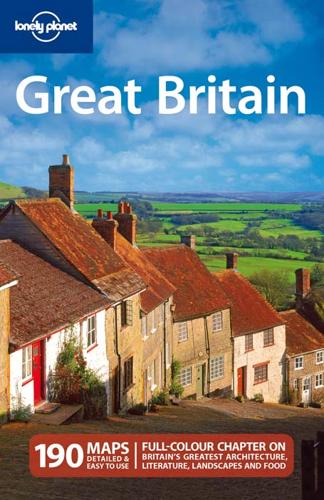
Great Britain
by
David Else
and
Fionn Davenport
Published 2 Jan 2007
Today, however, it’s not the steel of the foundries, mills and forges that made the city’s fortune, or the canteens of cutlery that made ‘Sheffield steel’ a household name, but the steel of scaffolding and cranes, of modern sculptures and supertrams, and of new steel-framed buildings rising against the skyline. The steel industry that made the city famous is long since gone, but after many years of decline Sheffield is on the up again – like many of northern England’s cities it has grabbed the opportunities presented by urban renewal with both hands and is working hard to reinvent itself. The new economy is based on services, shopping and the ‘knowledge industry’ that flows from the city’s universities. Orientation The most interesting parts of Sheffield are clustered in the ‘Heart of the City’ district about 300m northwest of the train station (and immediately west of the bus station), a compact area outlined by Arundel Gate, Furnival St, Carver St, West St, Church St and High St.

J.K. Lasser's Your Income Tax 2016: For Preparing Your 2015 Tax Return
by
J. K. Lasser Institute
Published 19 Oct 2015
For example, if you have a $2,500 deductible on your personal automobile insurance policy, a loss of up to $2,500 would be reduced by the $100 floor and the balance would be deductible only to the extent the 10% of adjusted gross income floor was exceeded; see Step 5 (18.13). Cancellation of part of a disaster loan under the Disaster Relief Act is treated as a partial reimbursement of the loss and reduces the amount of the loss. Payments from an urban renewal agency to acquire your damaged property under the Federal Relocation Act of 1970 are considered reimbursements reducing the loss. Insurance payments for the cost of added living expenses because of damage to a home do not reduce a casualty loss. The payments are treated as separate and apart from payments for property damage.